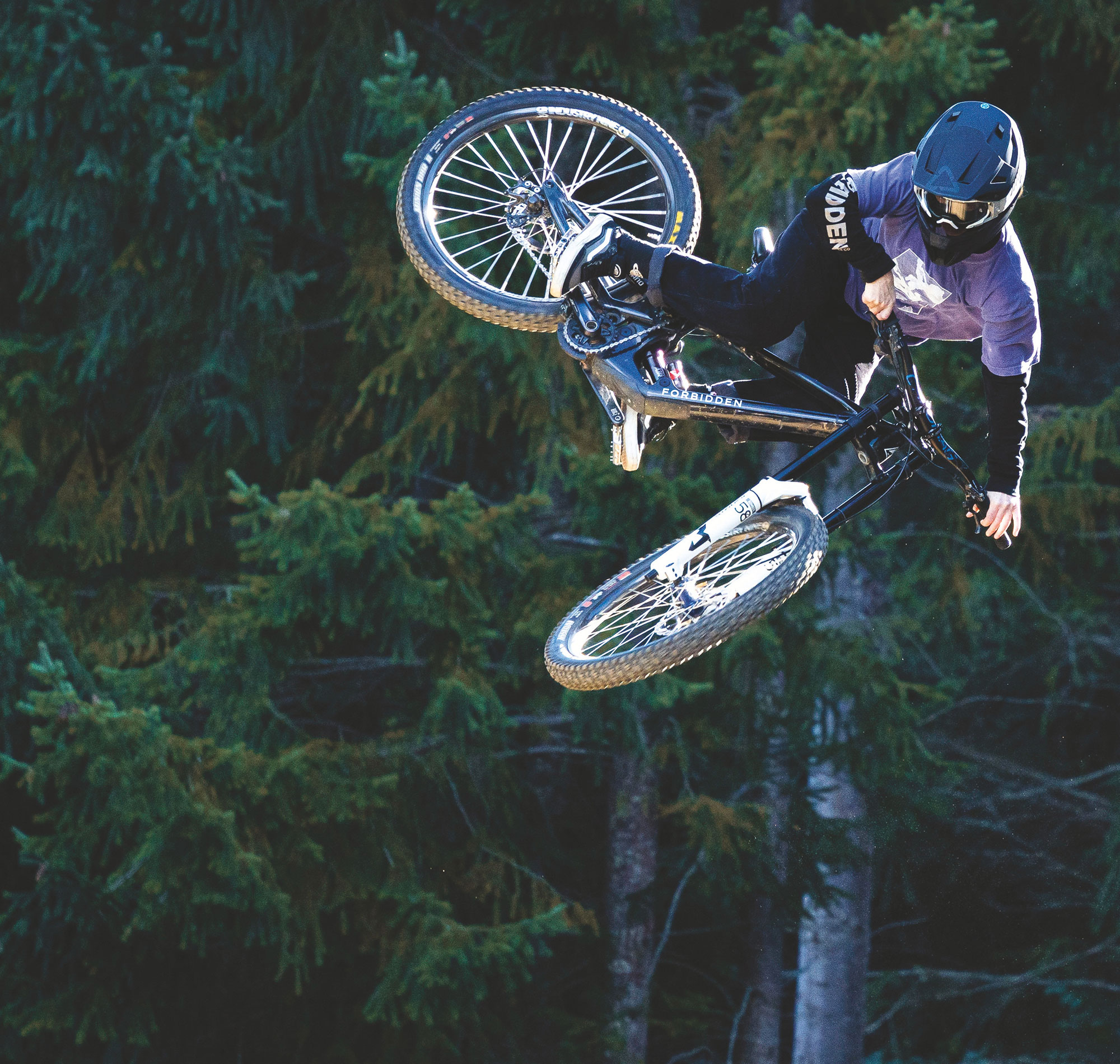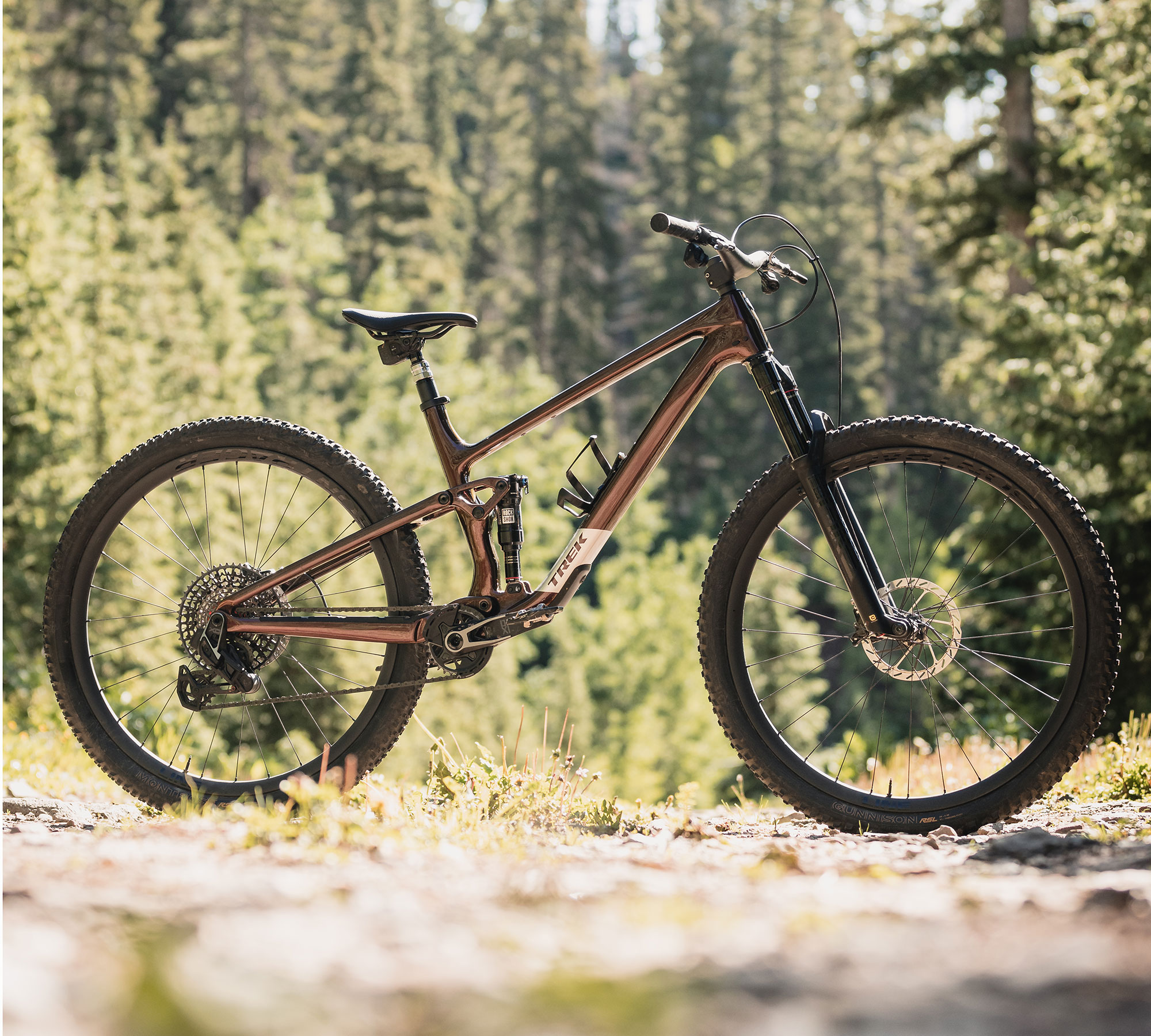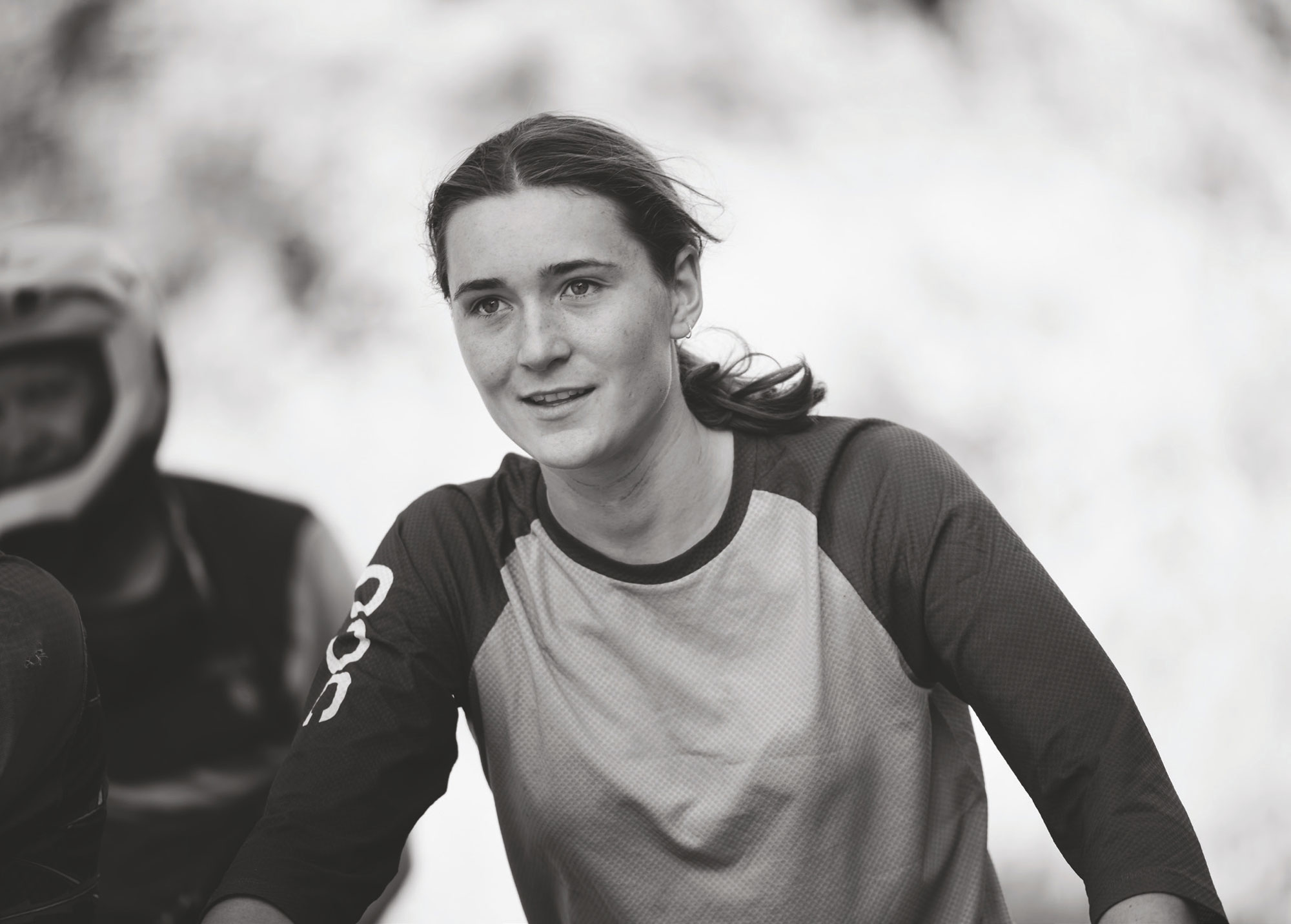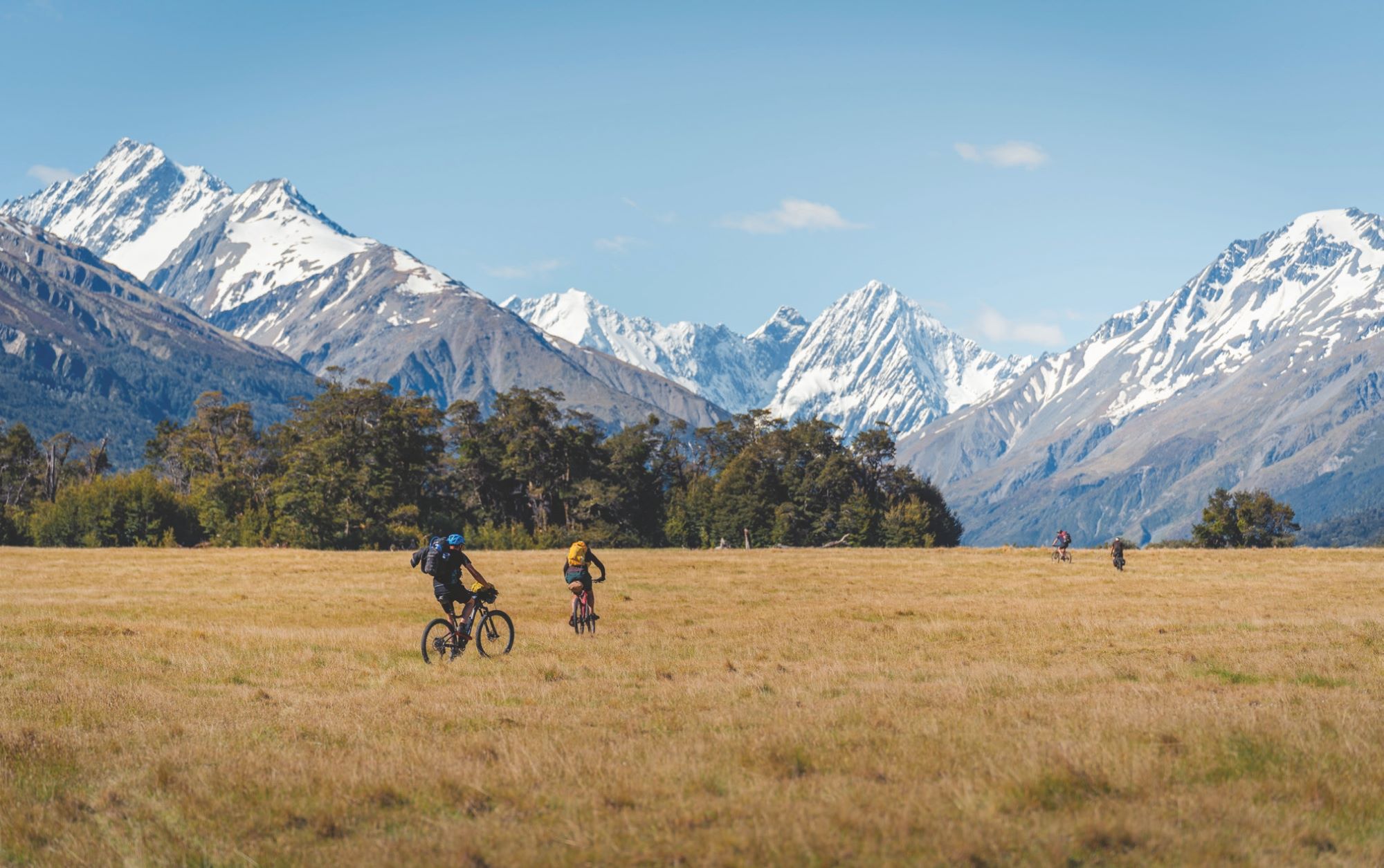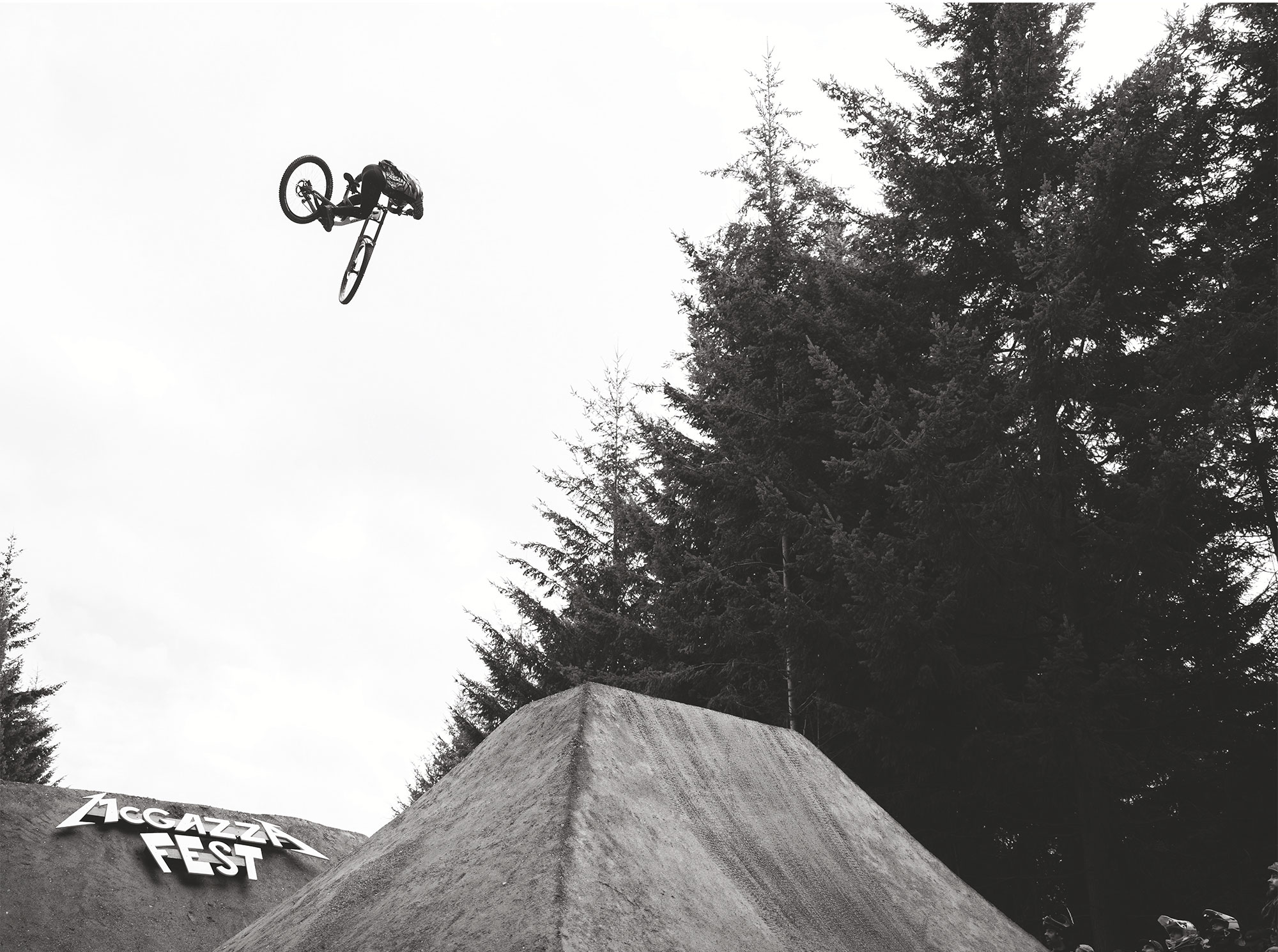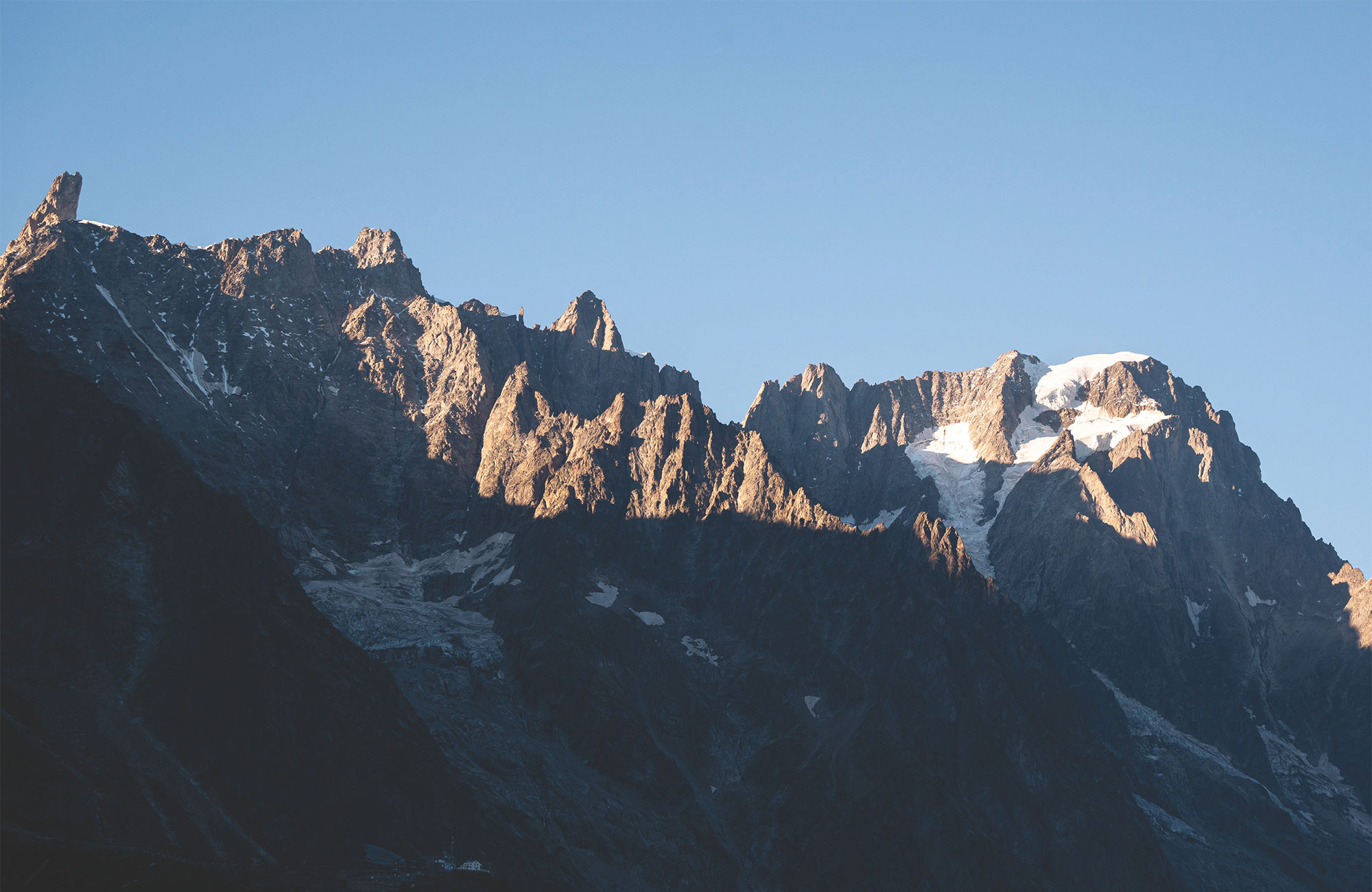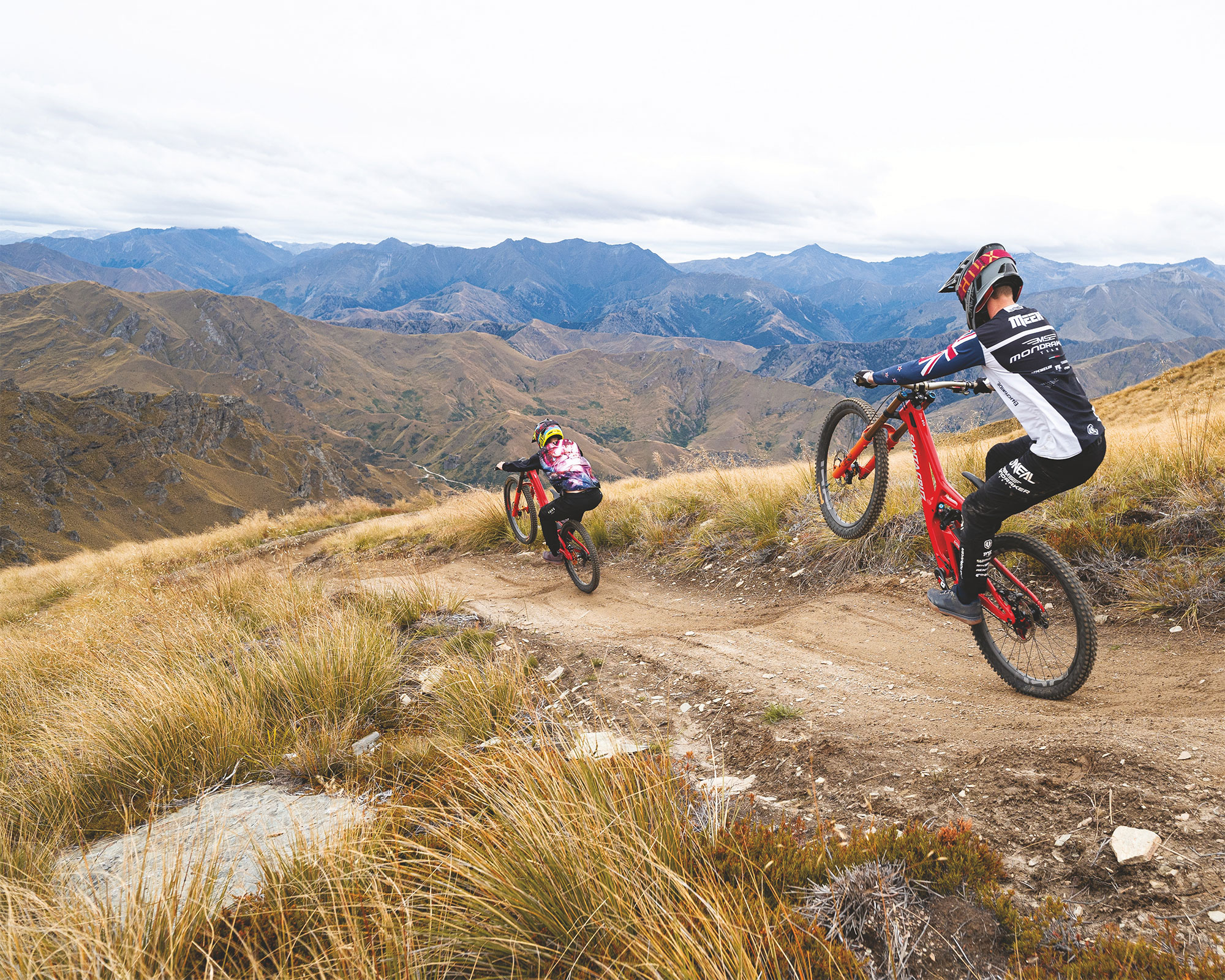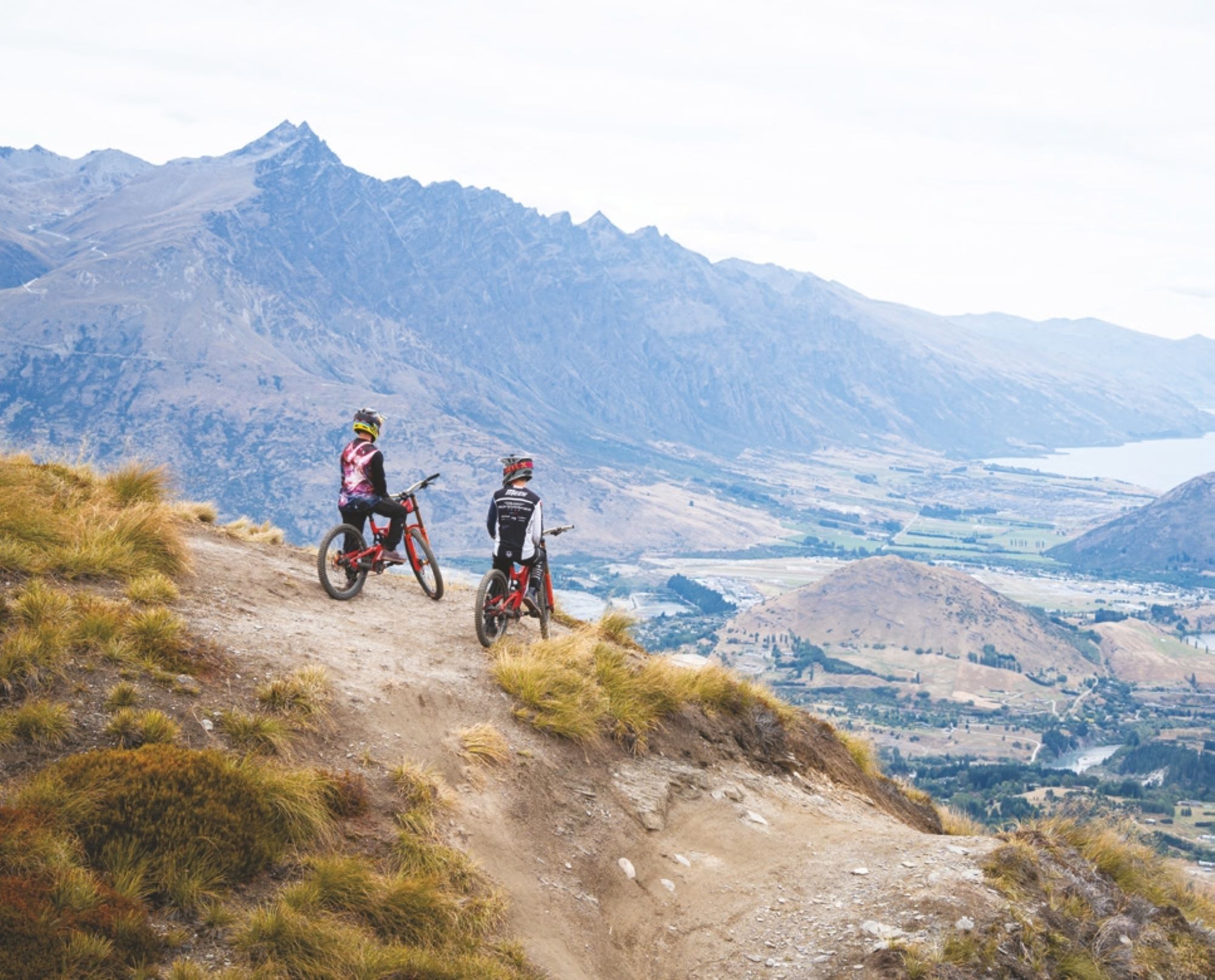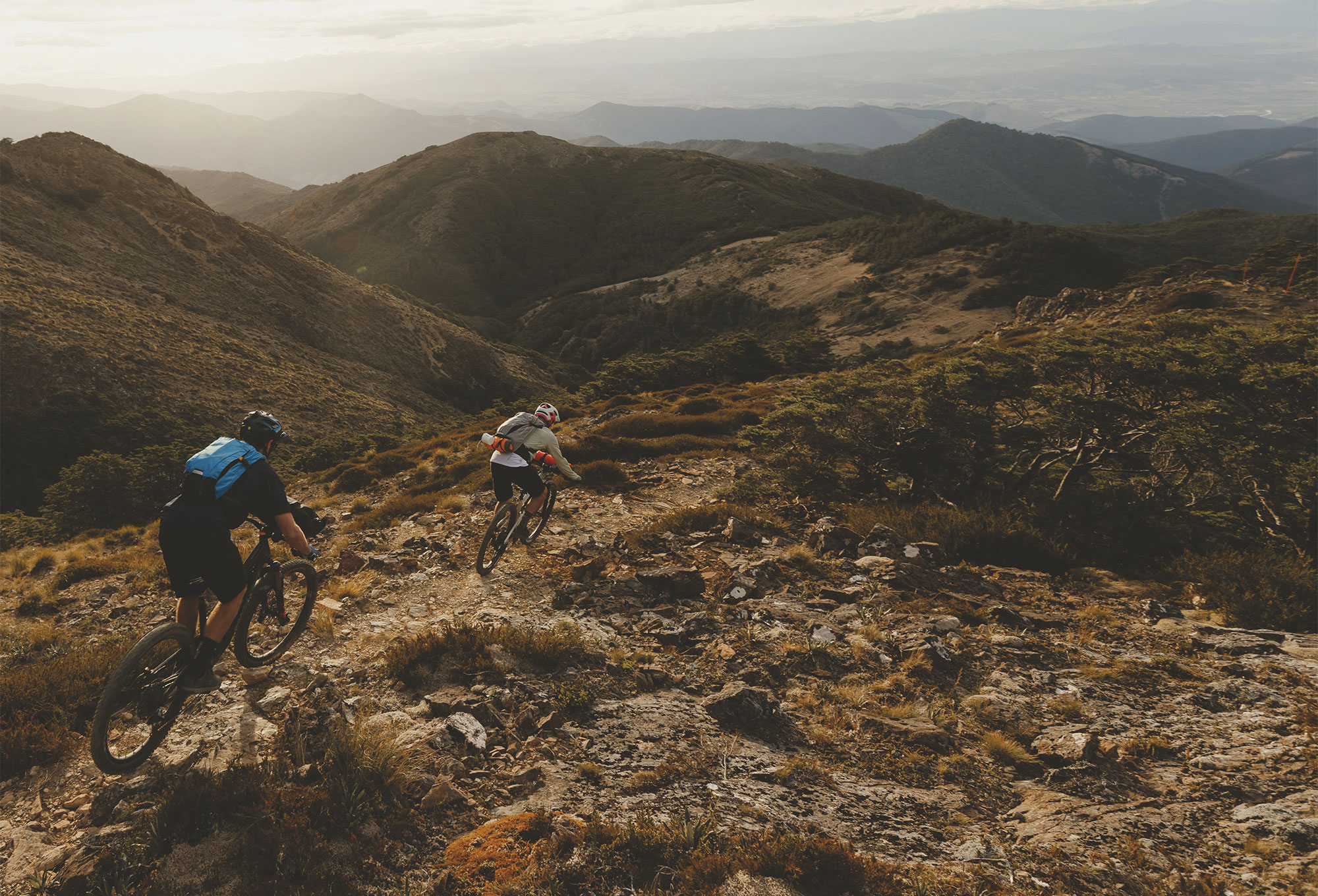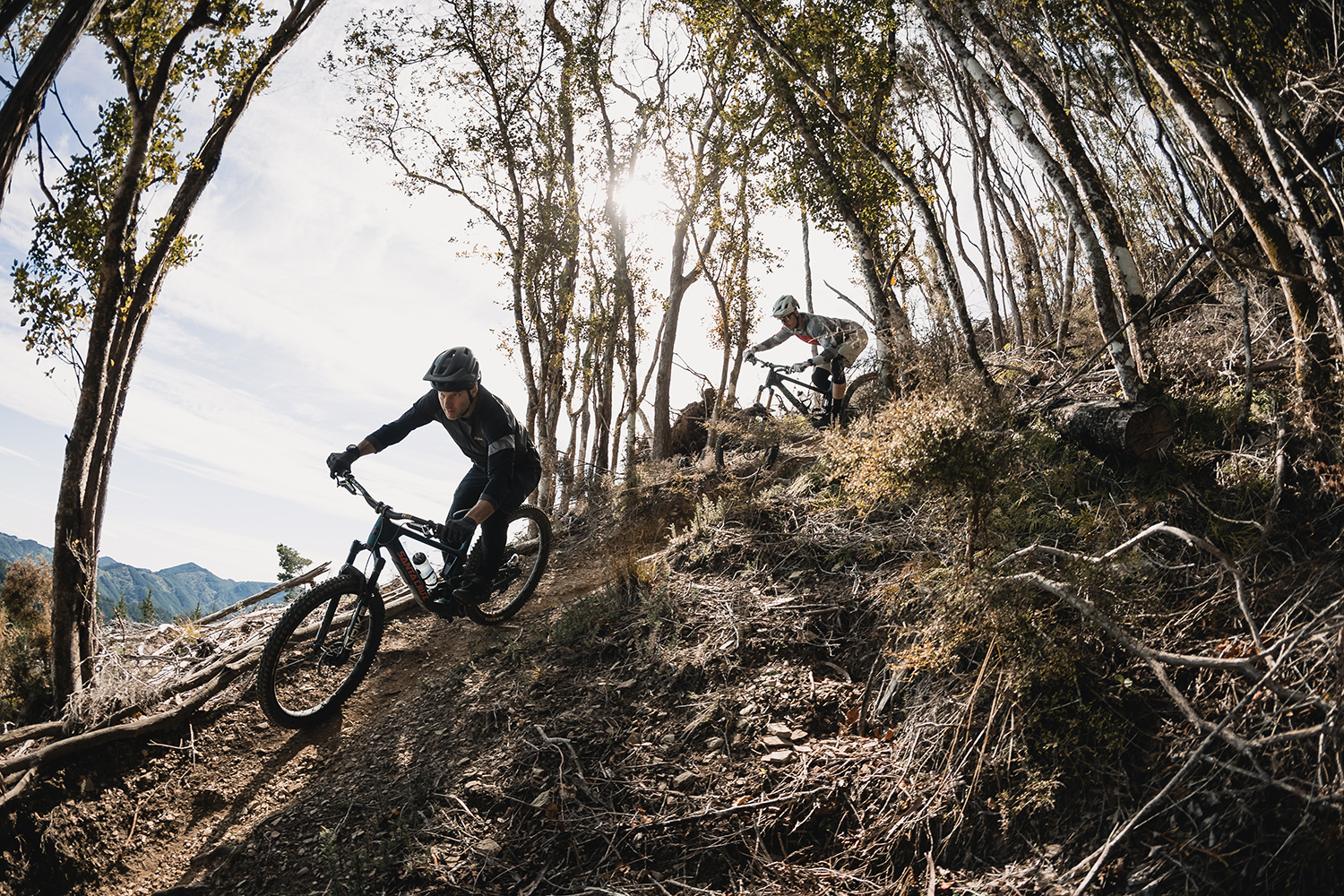Vinny Armstrong: Striking a balance
Words & Images Riley McLay
Freeride mountain biking is experiencing an exciting renaissance. After enduring a period of identity crisis, the discipline has finally found its footing. More freeride-specific competitions are filling up the international calendar, and brands are once again investing in high-quality long and short-form creative content to promote their athletes and products.
The constant presence of other skilled female riders provides the perfect motivation and chance to feed off each other to progress personal skills during the long New Zealand summer.
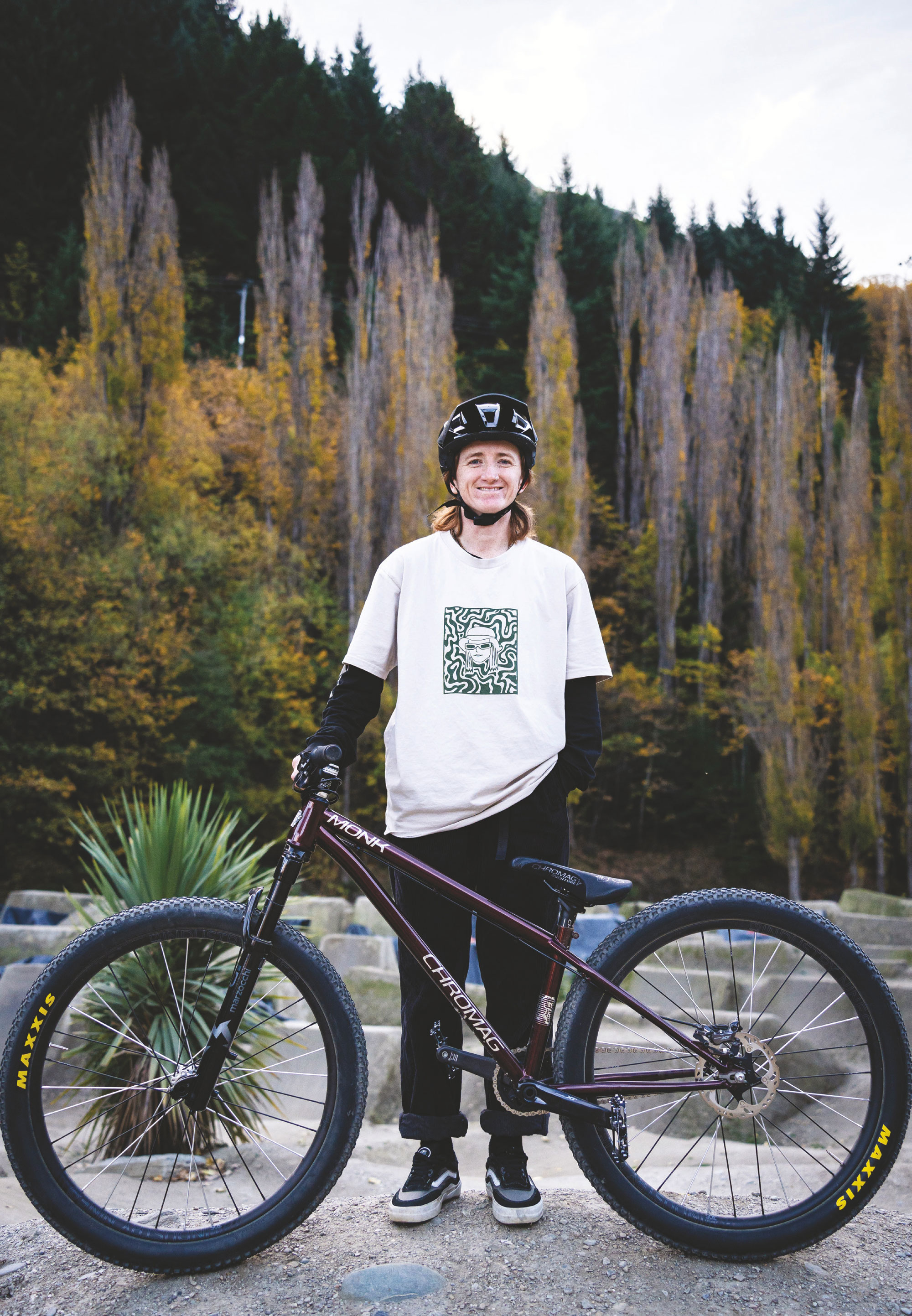
Not to mention, there’s currently a strong focus on inclusion and a move towards equal opportunity for female athletes that is pushing us even closer to equality within the sport. Vinny Armstrong exemplifies what it means to be a freeride athlete and, in this ever-evolving landscape, continues to define her own unique style on and off the bike. Utilising not only her distinct riding style but also her all-round creative perspective, to further inspire and propel an increasingly expanding female freeride community.
Vinny Armstrong stands out as one of the most recognisable female athletes in the scene. Her signature aerial maneuvers have earned her numerous victories in Crankworx Whip-Off competitions worldwide. She has also showcased her impressive technical skills with strong performances at events like Red Bull Formation. Vinny has had a fruitful start to 2024, managing to find an ideal balance between her personal and professional life.
“It was honestly the best New Zealand summer I’ve ever had. I feel like I’ve learned how to become an athlete over the past year” says Vinny, having taken a holistic approach to her training over the summer. She’s chosen to limit her time on the bike to avoid burnout, with her new-found love of hiking allowing her to discover new parts of the beautiful New Zealand backcountry, whilst giving her a chance to reset and keep her career aspirations in perspective. A weekend mission away with friends serves as the perfect way to detach from the pressure of upcoming events. From an outside perspective, the life of a pro mountain biker might seem like an endless holiday, however, mastering the ability to train and peak skills in time for events is an art in itself. Not to mention the substantial effort needed to secure the support and backing required to participate in these events in the first place. Managing her career on a day-to-day basis presents its own set of challenges, however, focusing on her personal health and well-being is integral to Vinny’s professional success.
Vinny has been able to thrive, while standing out in a predominantly male-dominated discipline, becoming one of the leading faces of the female freeride movement. This movement focuses on increasing inclusion, opportunity, and competition in the sport, demonstrating that female riders are not only capable of tackling the same features and terrain as male riders but can also carve out their own legacy through their riding. The movement has made significant progress, but more still needs to be done for female riding to reach its full potential. Female participation at premiere competitions is no longer a novelty, it is now the standard moving forward. In fact, the impressive and inspiring riding is not only captivating for spectators and fellow riders, but also for a new generation aspiring to emulate these female pioneers. Vinny exemplifies this perfectly, as her huge whips consistently electrify a crowd, rivaling even the top performers in the men’s category. However, some outlets have been slow to evolve their approach when covering female riding, often sticking to repetitive questioning styles when interviewing female athletes. Instead of focusing on the specific riding they are witnessing, they focus on the overall concept of female progression. While this approach is well-intentioned, there’s a concern that it might inadvertently diminish the achievements of female athletes and impede further strides toward gender equality in mountain biking. Nevertheless, women’s freeride has consistently achieved significant milestones in recent years. Evident by the success of the first-ever female FMB diamond event held at the recent Crankworx Rotorua. Not only was this an opportunity to showcase female riding to the crowds packing the banks of the Rotorua hillside, but it was also a chance to demonstrate to the world that contests like this are imperative to continue giving female riders a platform to learn and grow from – not just as riders, but as well-rounded athletes.
Vinny has been able to thrive, while standing out in a predominantly male-dominated discipline, becoming one of the leading faces of the female freeride movement.
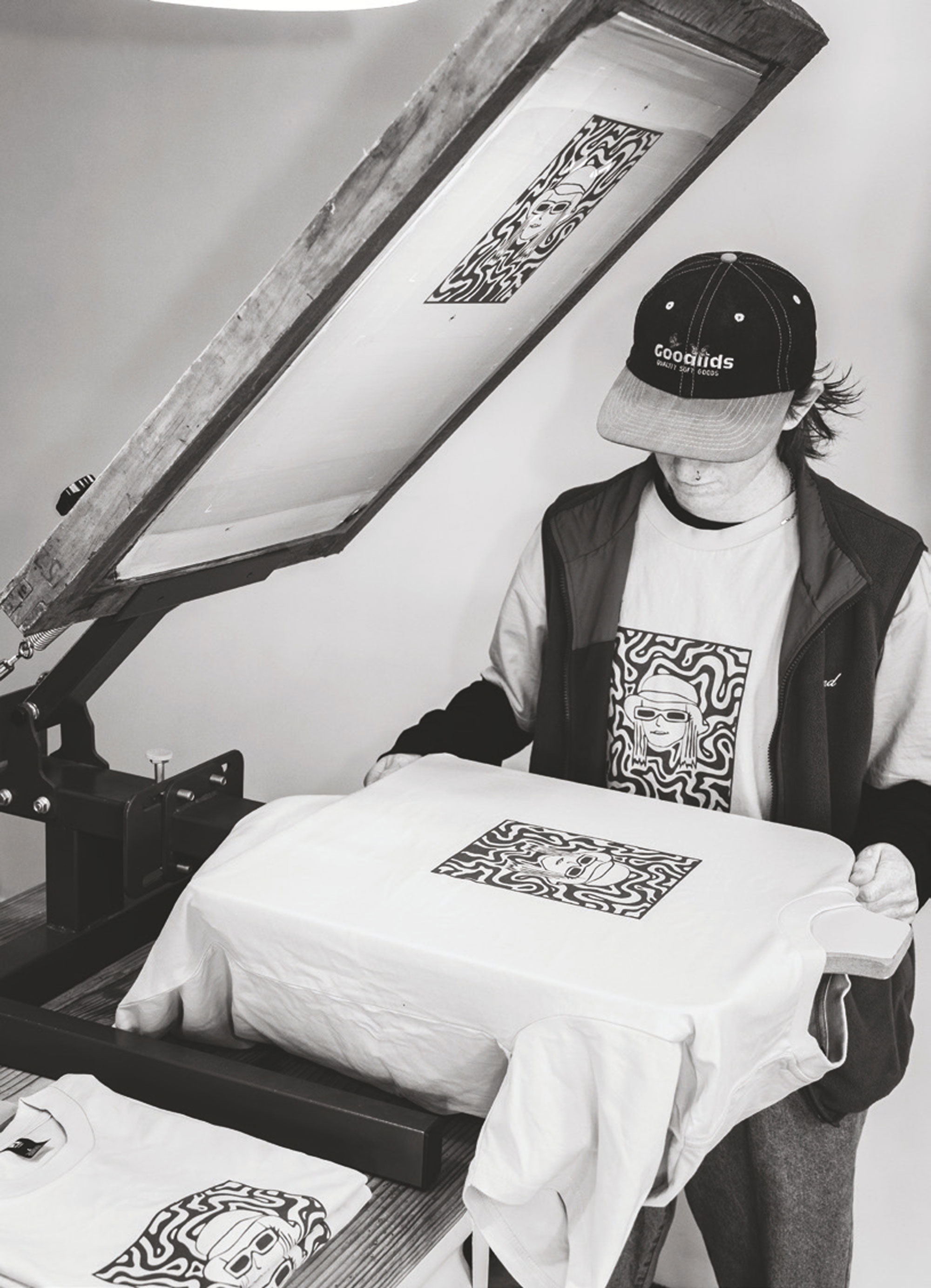
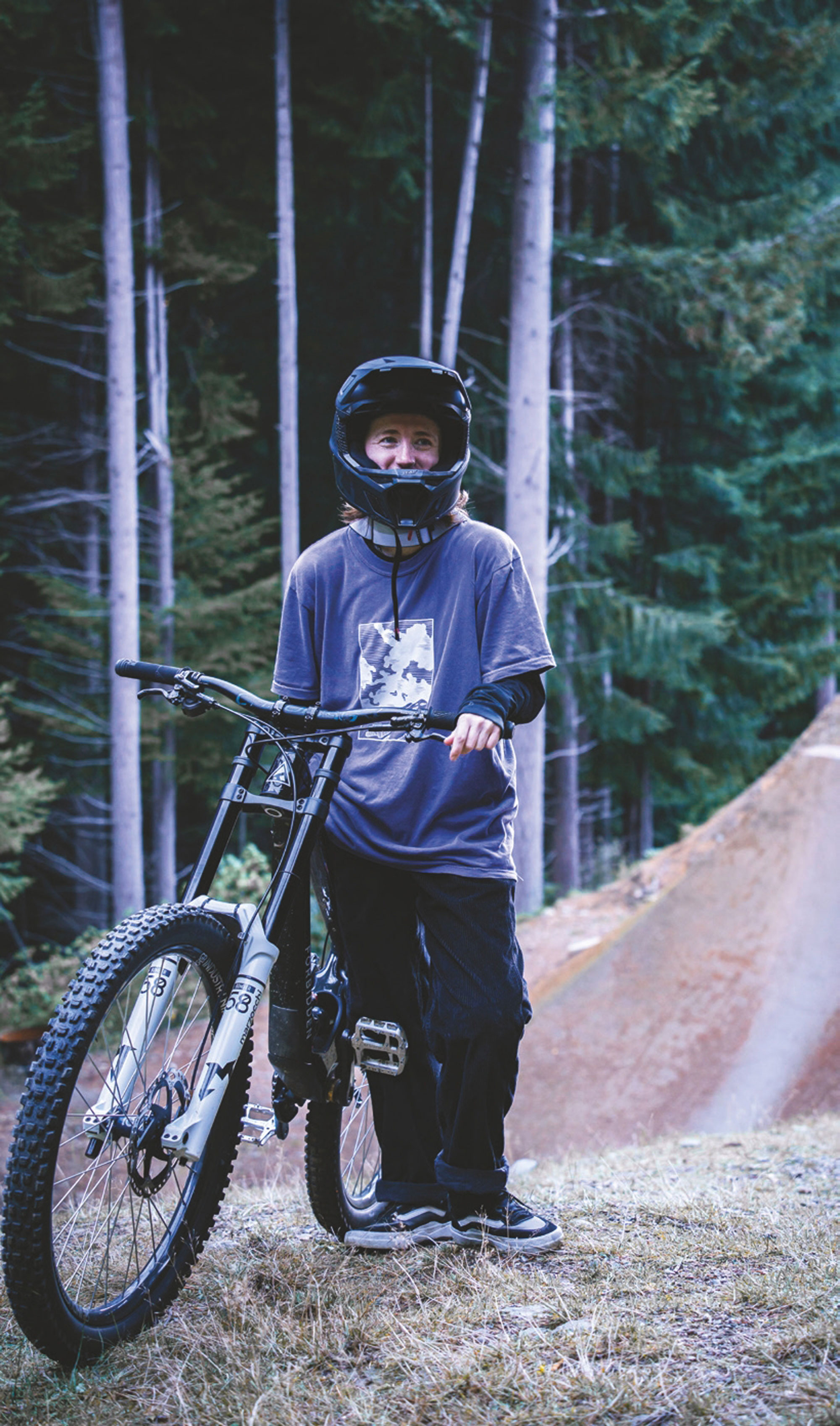
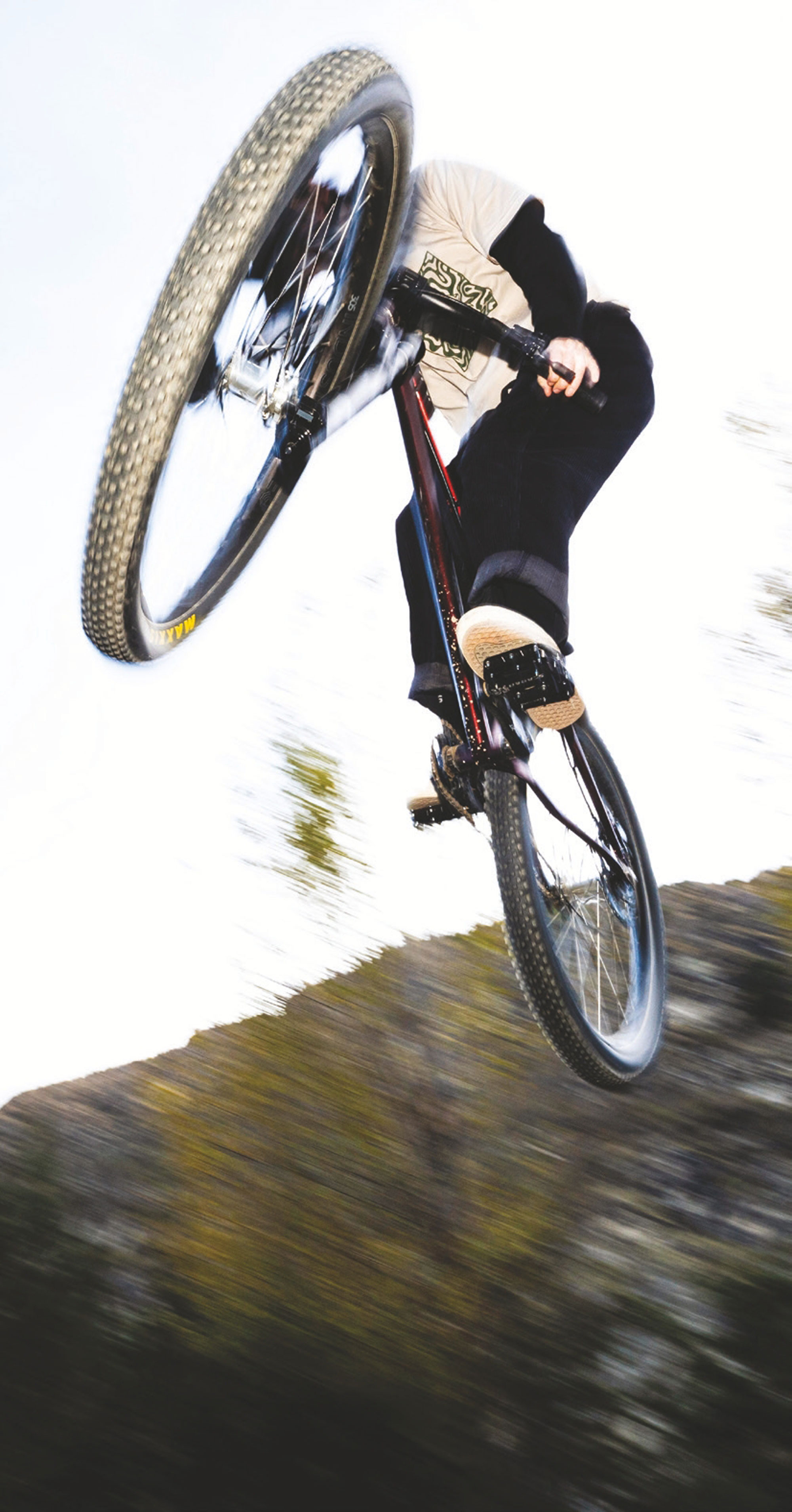
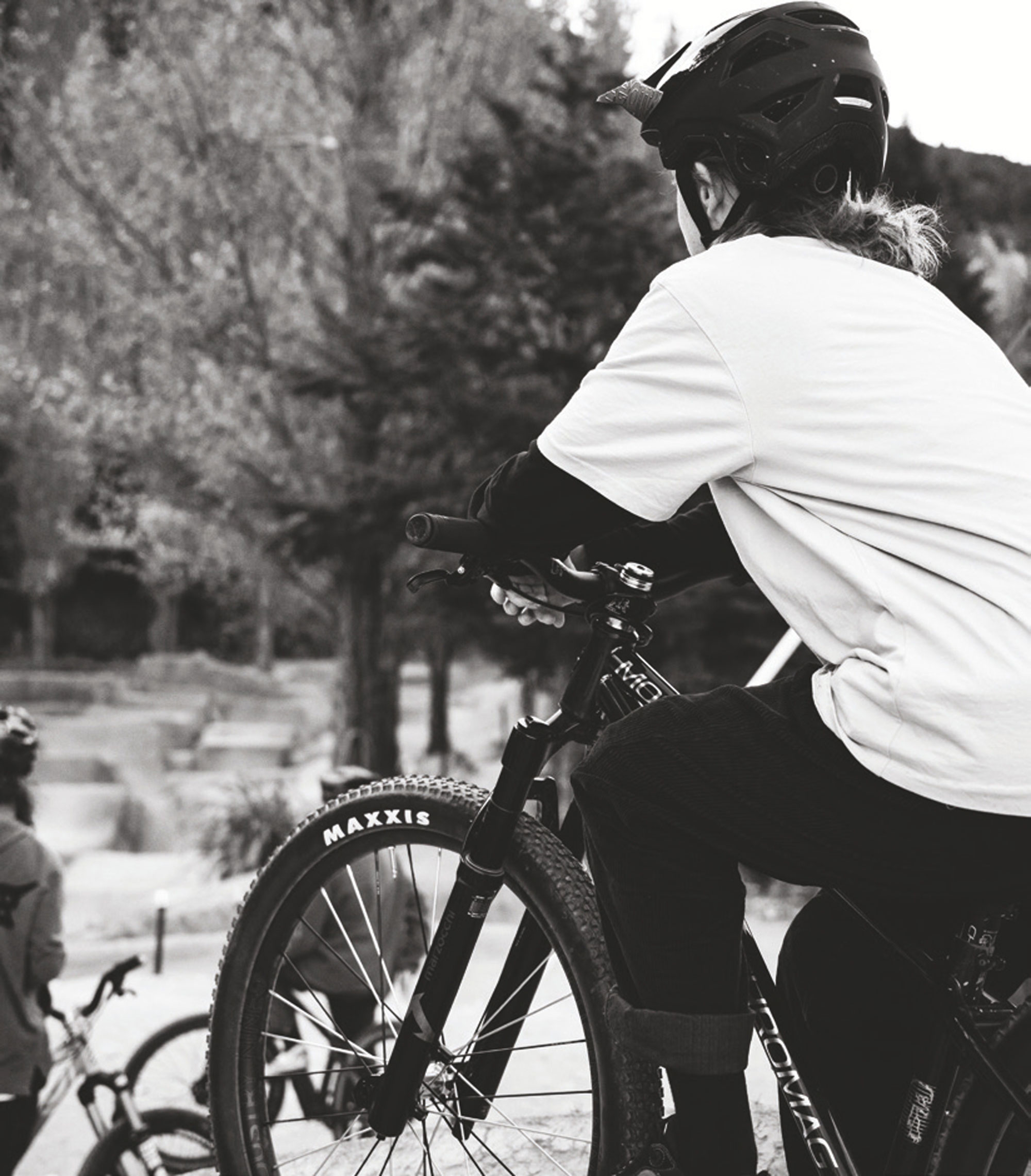
Originally from Auckland, Vinny has made the mountain biking mecca of Queenstown her home for the past six years. The opportunities presented by the Queenstown scene made this a no-brainer decision for Vinny, who credits a lot of her success to the move. The constantly improving world-class trails and facilities serve as the perfect training environment and came as a natural progression to her home riding spot at the Woodhill Bike Park. Whilst she bid farewell to her family in the north, Vinny has been able to build a new family amongst the Southern Alps. The local community’s emphasis on strong family values resonates deeply, especially within the frequent influx of seasonal nomads who come and go. This is a classic case of ‘come for the riding, stay for the people’. The inclusive culture of the town has also attracted high-profile female riders like Robin Goomes, Harriet Burbidge- Smith and Martha Gill, to make it their base during the northern hemisphere off-season. The constant presence of other skilled female riders provides the perfect motivation and chance to feed off each other to progress personal skills during the long New Zealand summer.
While time on the bike is crucial when preparing for an event, the quality of that time is even more important. When preparing for an event like DarkFest, Vinny strives to emulate the distinctive big air style of riding that the mountainous slopes of South Africa are renowned for. Basing herself in Queenstown has provided her with the perfect training facility for this style of riding, enabling her to fully utilise the Wynyard Jump Park and access some of the world’s largest public jumps, all right at her doorstep. Vinny also uses a specifically set-up Forbidden Dreadnought, tailored for this style of riding. This eliminates the faff of continuously adjusting settings for various riding scenarios, allowing Vinny to concentrate more on her riding.
This year’s DarkFest event presented its own share of unforeseen challenges. Vinny was among the riders affected by an illness circulating within the group. To compound matters, persistent high winds on most event days greatly reduced riding time. Despite these obstacles, Vinny managed to rally and clinch the best whip in the female category. While grateful for her achievement, she feels she has unfinished business and has set her sights on a goal of completing a full top-to-bottom lap of the course in the coming years.
Vinny is gearing up for another busy northern hemisphere season. Kicking off her European leg of the trip, she’s prioritising personal riding progression over what can be a hectic event schedule. This will let her focus on her own skills while staying flexible around a busy event calendar. Through her hard work, she’s now in a position where she doesn’t need to pursue every opportunity that comes her way and can focus on what is best for her career. She will base herself out of the UK, to make the most of the growing and improving freeride scene in the area. One of the events she’s looking forward to the most is Vero Sandler’s Backyard Battle in Wales, a new event to the calendar where riders like Vinny can showcase their skills in a more relaxed environment. Relaxed jam-styled formats are always a rider favorite, as you are normally flexible to work with the weather and it lets you enjoy the riding as a collective rather than as individuals. For Vinny, it’s an excellent chance to reconnect with many of her freeride friends who don’t typically make the trip down to NZ in the winter months.
From an outside perspective, the life of a pro mountain biker might seem like an endless holiday, however, mastering the ability to train and peak skills in time for events is an art in itself.
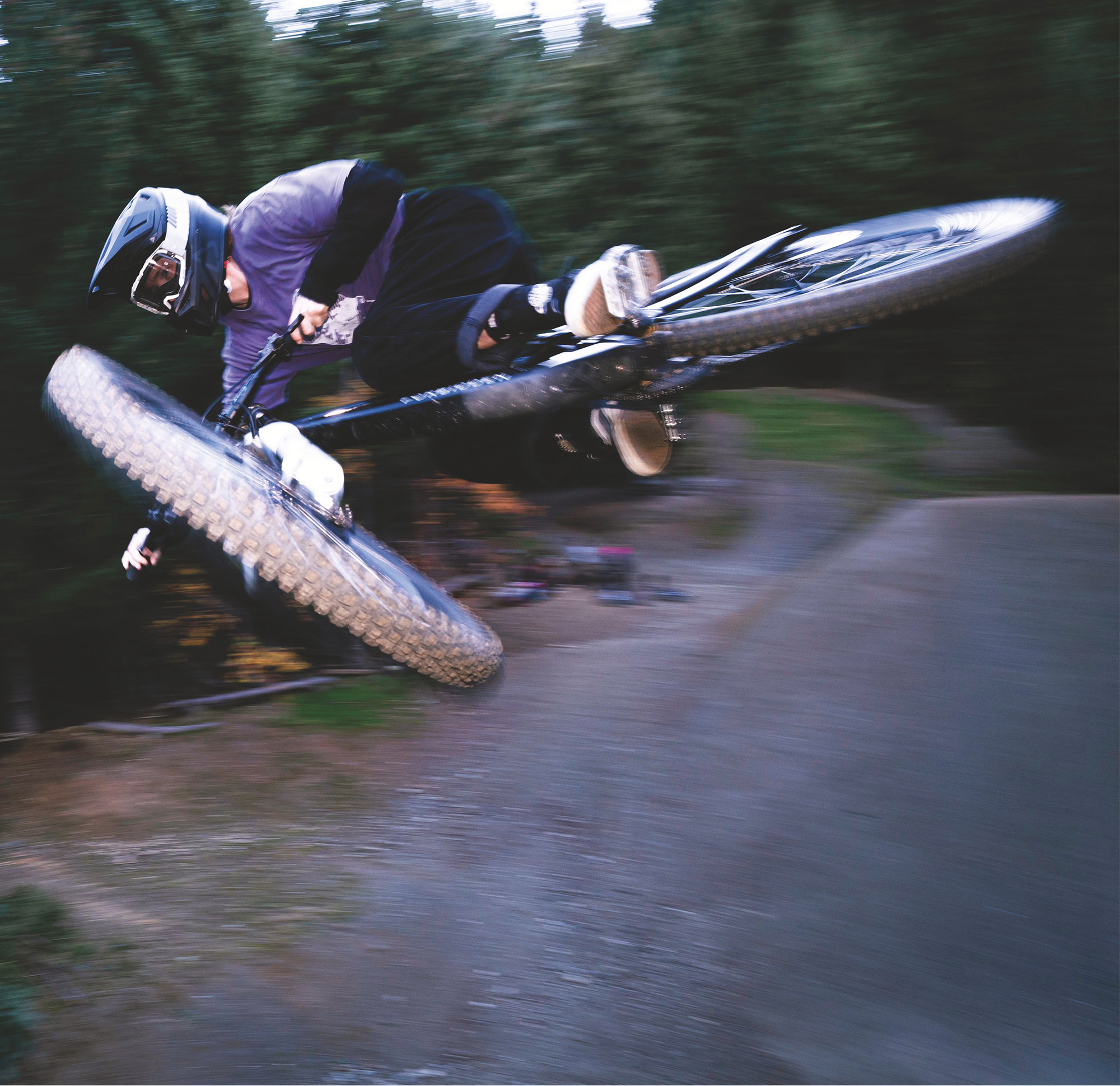
She will then have a stint in Canada where she will take a break from most events, allowing her to focus on her other passion of creating high- quality visual projects. Although participating in events provides exposure across various media platforms, fostering your creative expression through curated content, whether it is a long form video part or a photo project, allows you to put your own imprint on the scene.
“I feel like I can push myself much more while filming, than during events. It’s a positive kind of pressure that drives me to achieve the best possible results,” says Vinny. Working with a creative-focused brand like Forbidden has allowed Vinny to bring out her artistic style and showcase her ideas. Focusing on being intentional about both what she shares with the world and how she presents herself at events is crucial for creating her own identity as a rider. Her relaxed skate-influenced style blends effortlessly with her style on the bike, helping her carve out her own niche in the scene. Vinny’s passion for graphic design allows her to further tap into her creative side, incorporating her own graphic t-shirt designs into her riding outfits. Collaborating with friends along this journey makes the process even more enjoyable. This is more of an experimental artistic venture with no plans in the near future to make it a commercial one. This is because Vinny’s art greatly represents herself more than anything else. Being able to create and showcase her own ideas at different events is very empowering and is not only a way to help push her own career forward, but to progress and inspire the next generation of female riders who aspire to be just like her. Fingers crossed we’ll see Vinny, in her own designs, on the main stage of a female Red Bull Rampage event in the near future.
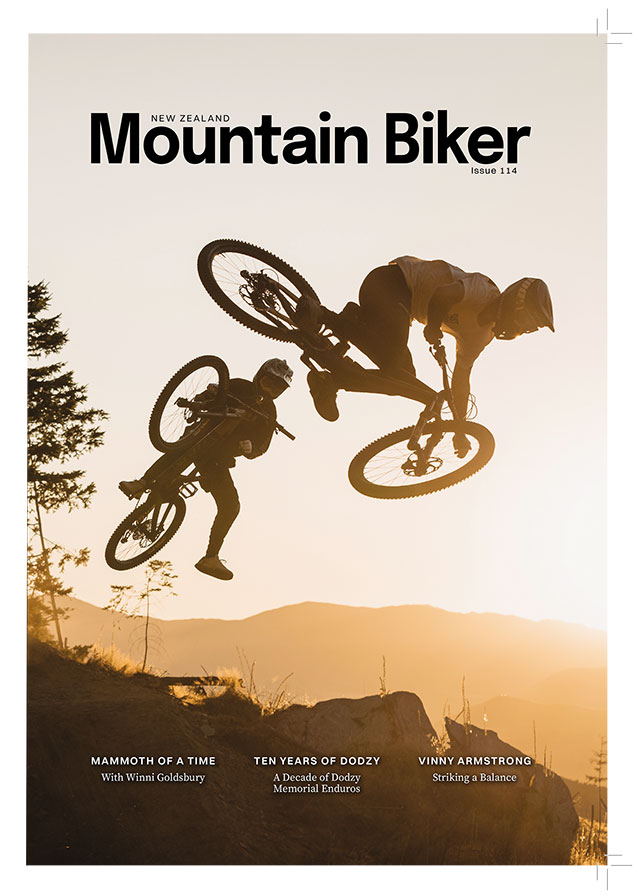
First Impressions: Trek Top Fuel
Words Liam Friary
Images Cameron MacKenzie
Have you ever been kept up late at night reliving distressing memories? Does your mind chatter and strong emotions interfere with your day-to-day? Are you looking to understand yourself more and make some changes? If your answer is “yes”, then we should talk.
My lived experience with mental health gives me a strong appreciation of the journey we take from being in crisis mode to thriving. I want to work with you to help you get to where you want to be. The focus will be on what I can do to support you in your life’s journey. I do this by utilising an integrative approach that best suits each individual.
When you’re ready to take that step to seek support, I’ll be there for you. Call or email me so we can schedule our first session and get you to where you want to be.
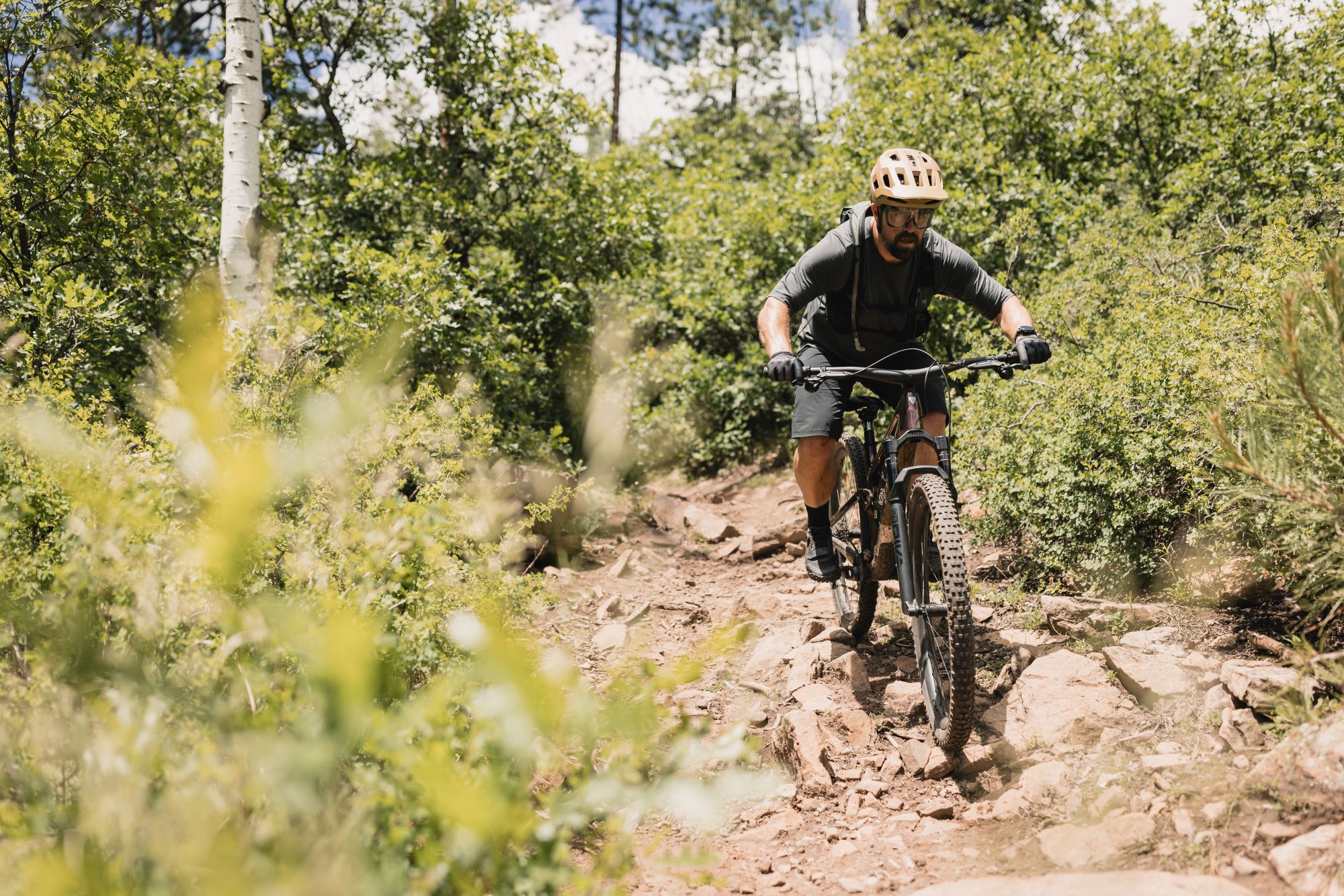
Daniel is available on Wednesdays, Thursdays and FridaysThe latest Trek Top Fuel is one of the most versatile to date. This fourth-generation platform encompasses the heritage of XC from earlier generations while nodding to the future with more travel and capability. The lines are somewhat blurred between an XC long-travel bike and a lightweight trail bike. Regardless of categorization, the bike is designed to be super-adjustable with a redesigned frame and a 4-position Mino Link. There’s also a ton more you can customize, like wheel size, geometry, and suspension travel, making it super appealing for everyday trail riding or even XC racing duties.
Trek has opted for refinement rather than revision, a trend the industry is increasingly embracing. Generally, bikes are in a good place regarding geometry numbers, so there’s no need to reinvent the wheel—at least for now. While the new Top Fuel looks similar to the previous generation, it has gone on a slight diet with about a 100g savings in the carbon frame and uses slimmed-down tubes across the entire frame. The new 4-position flip chip, used for adjusting the bike’s geometry or the amount of shock progression, is located at the lower shock mount. This flip chip offers High/Low geometry settings that modify the angles by 0.5° and change the BB height by 6mm. Additionally, you can move the suspension leverage rate forward and backward with the flip chip. The forward position offers 14% progression, while the rear position offers 19%, providing more ramp-up at the end of stroke. I rode mainly with the rear, more progressive position and found it better suited to my riding style and the terrain where testing was done.
I appreciate the ability to change out the rear and front travel if desired. The rear shock is built around a 185x50mm shock, but you can increase the stroke to 55mm and boost travel to 130mm. The frame is rated for a 120-140mm travel fork, which allows for different setup options such as an XC whippet with 120/120mm travel or a rowdier trail bike with 140/130mm travel. I’m inclined to build the latter, so hopefully, I’ll have more on that sometime soon. If you wanted to have a mullet setup with a 27.5″ rear wheel, that’s also possible with this new platform.
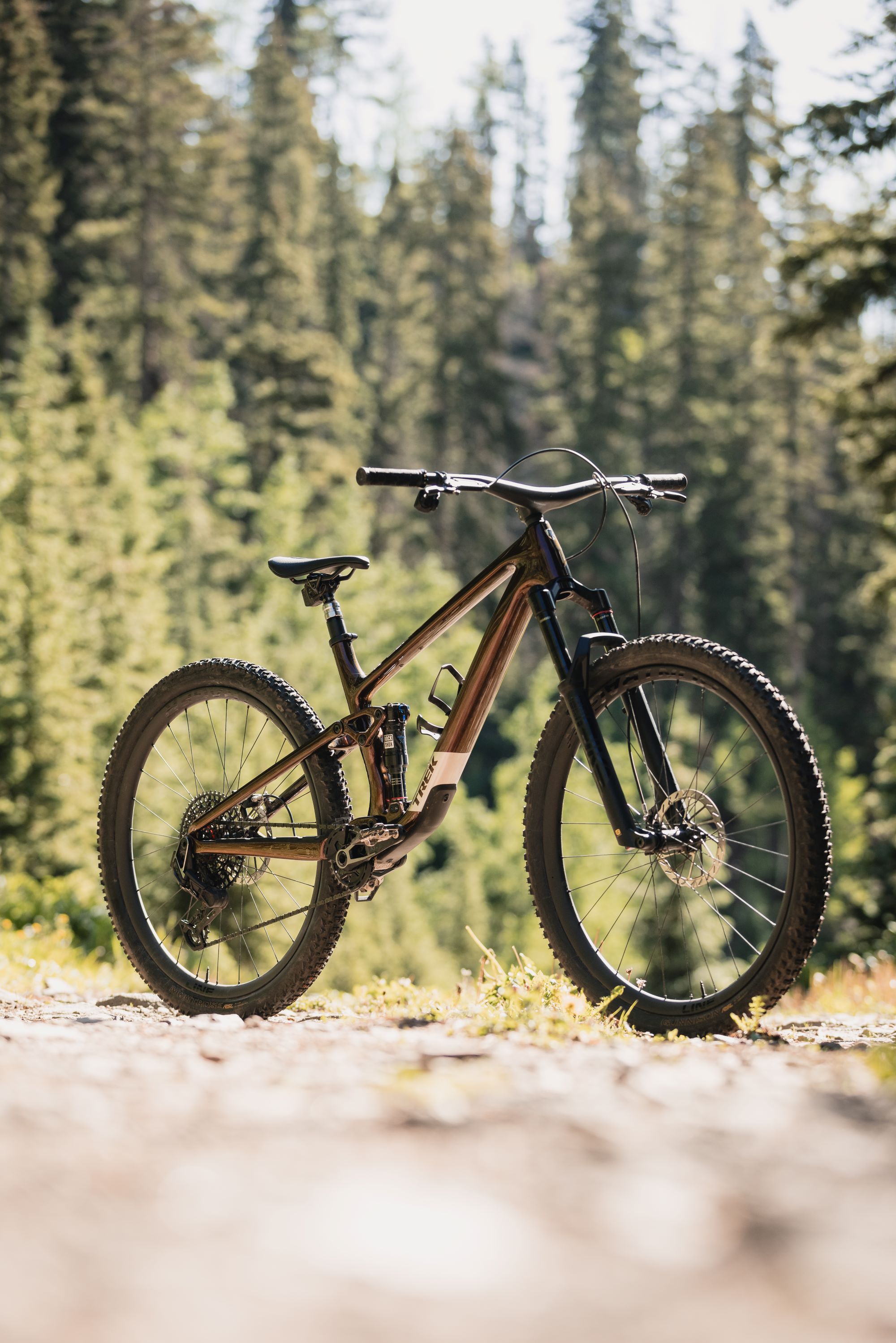
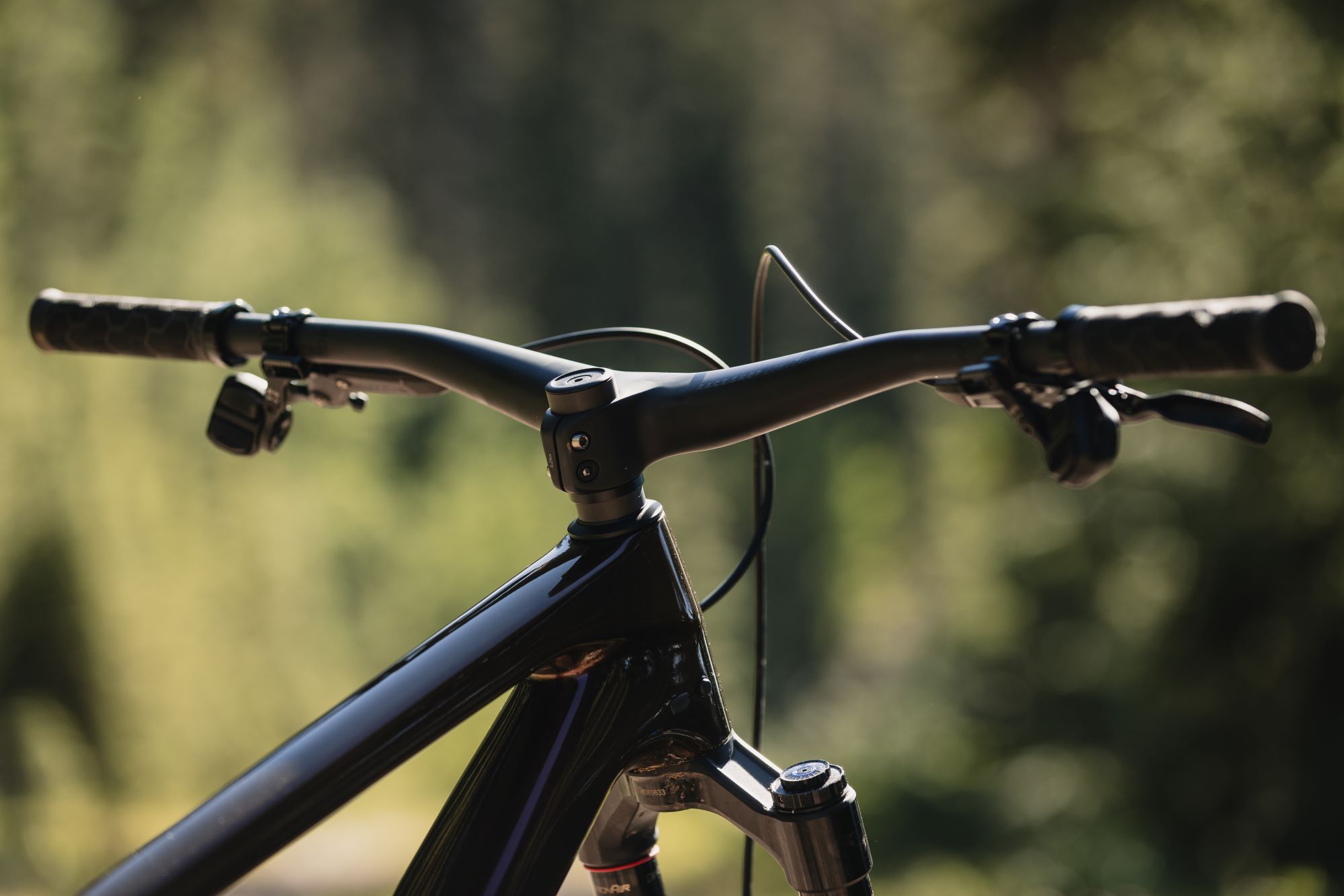
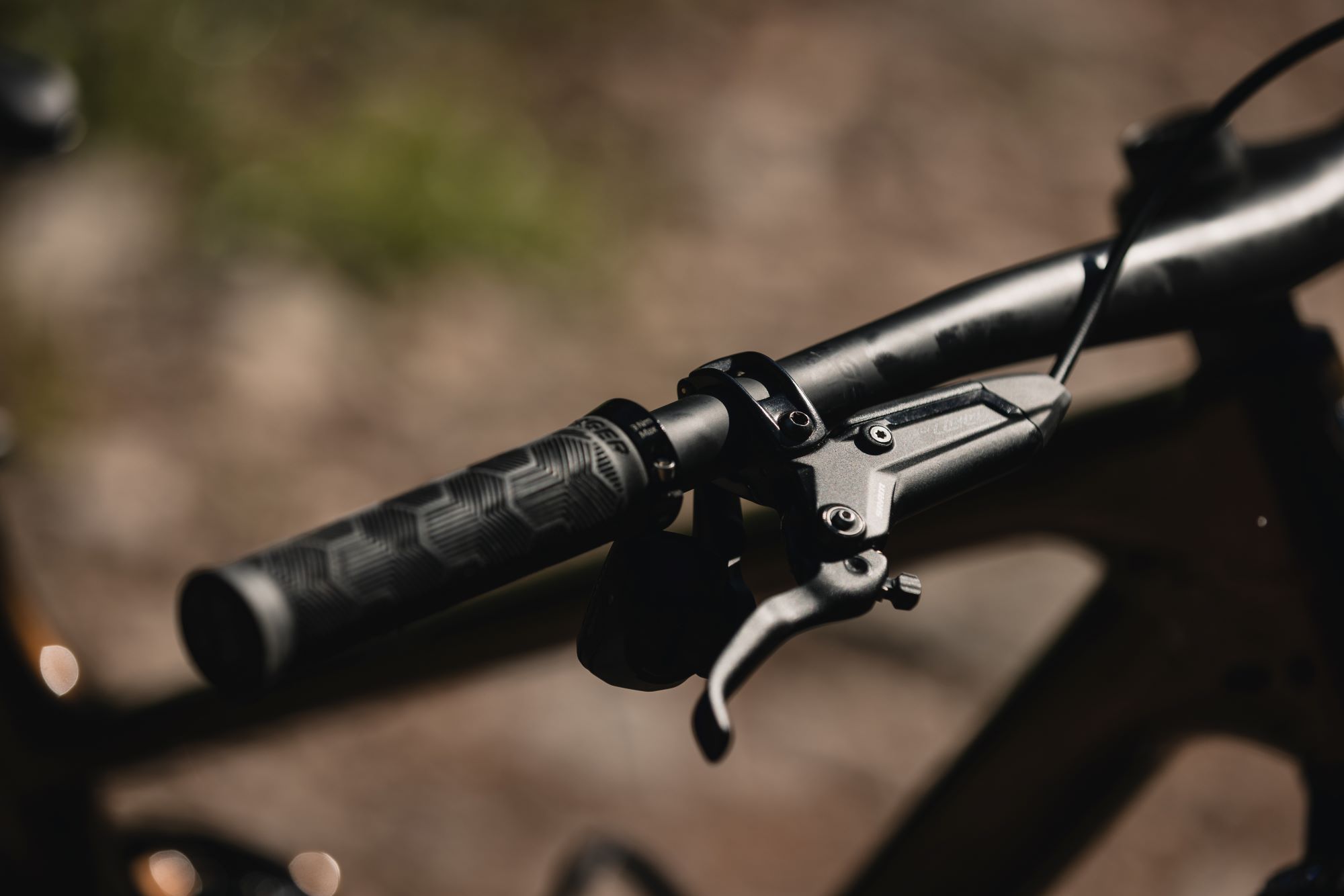
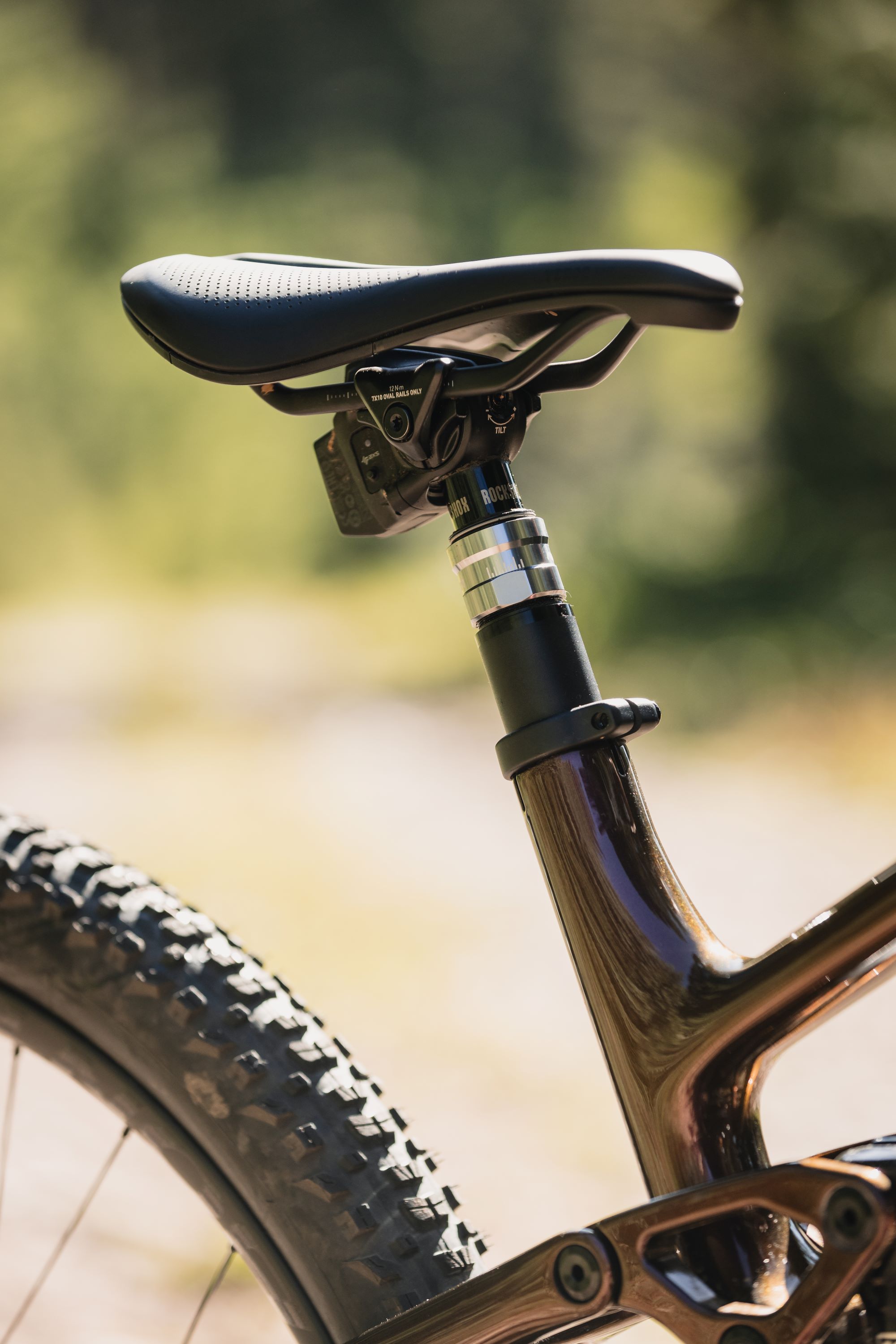
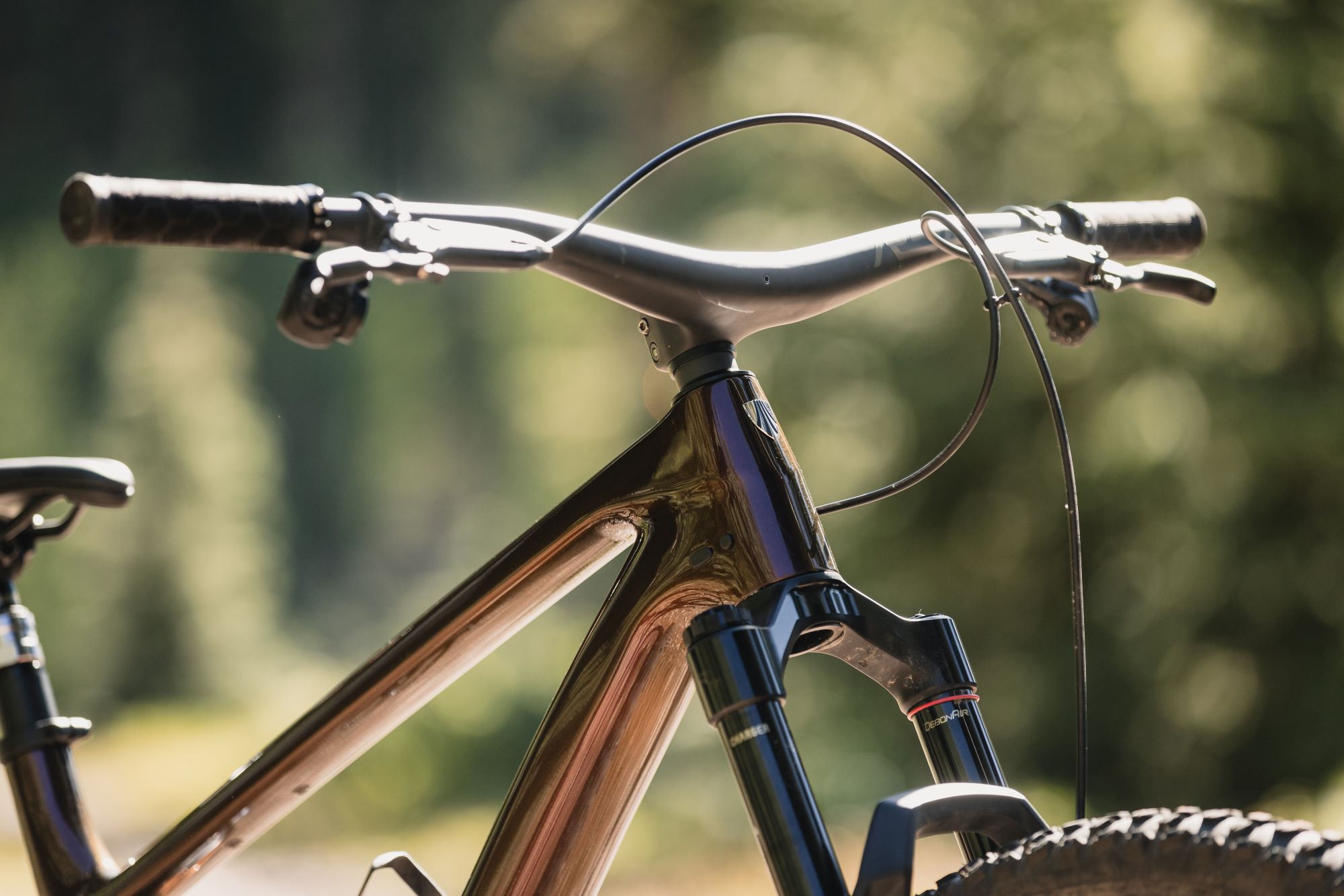
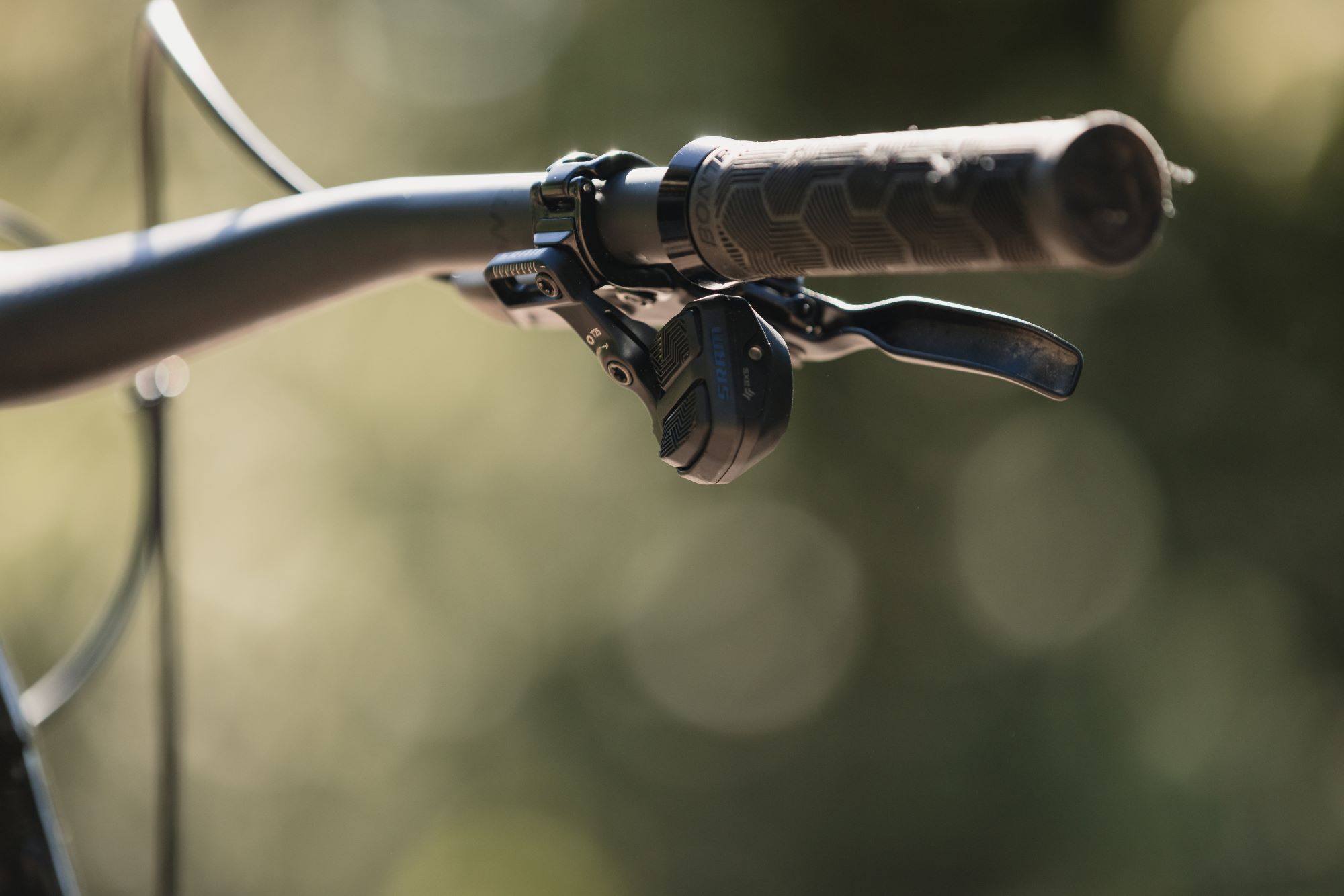
Returning to small refinements, the new Top Fuel is slightly more progressive than the previous generation and has a tad more anti-squat. Rear travel is kept at 120mm and comes with a 130mm travel fork up front. 29″ wheels are standard on all frames except the small, which is built around 27.5″ wheels. The internal storage has also been updated with larger openings and better weatherproof sealing, and cables have been kept out of the way to minimize snagging. Trek has won the applause of shop mechanics by keeping cables out of the headset and eliminating the Knock Block headset. A tried-and-true threaded BB is used, as well as bolt-on downtube armor and a rubber chainstay protector.
While there are slight changes to geometry, the 65.5° head angle remains consistent across all sizes. The effective seat tube angle ranges from 75.2-76.9° – Trek lists this angle based on a specific saddle height for each size. Another update is the size-specific rear center lengths, which vary from 435mm (smaller frames) to 445mm (X-Large frames).
I had the pleasure of riding the new Top Fuel in Durango, Colorado. There’s plenty more to come from that trip, plus some other riding around North America. Having a week based in Durango meant I could get familiar with the bike, logging over 15 hours of ride time. The first thing that struck me was the pedaling efficiency and overall zippiness of the bike. I rode twice a day locally and had two high-country long ride missions as well. On all occasions, from road to gravel to trail, I didn’t feel the need to hit the lockout lever as it pedaled great wide open. The bike feels swift and light but handles rowdier terrain very well. While the Pike fork nods to more trail-oriented riding, there’s something about the overall frame that makes it more compliant than the white paper stats indicate.
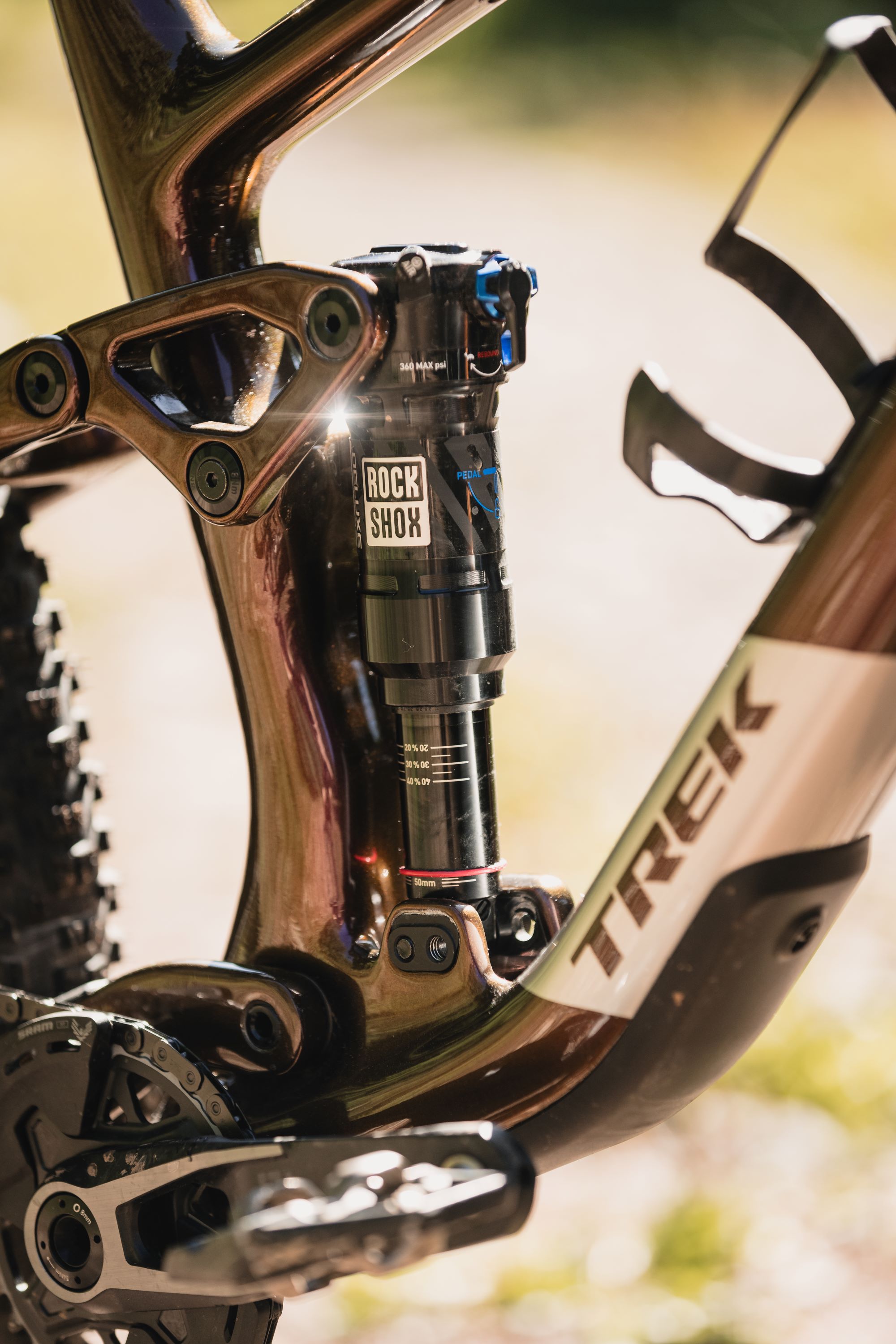
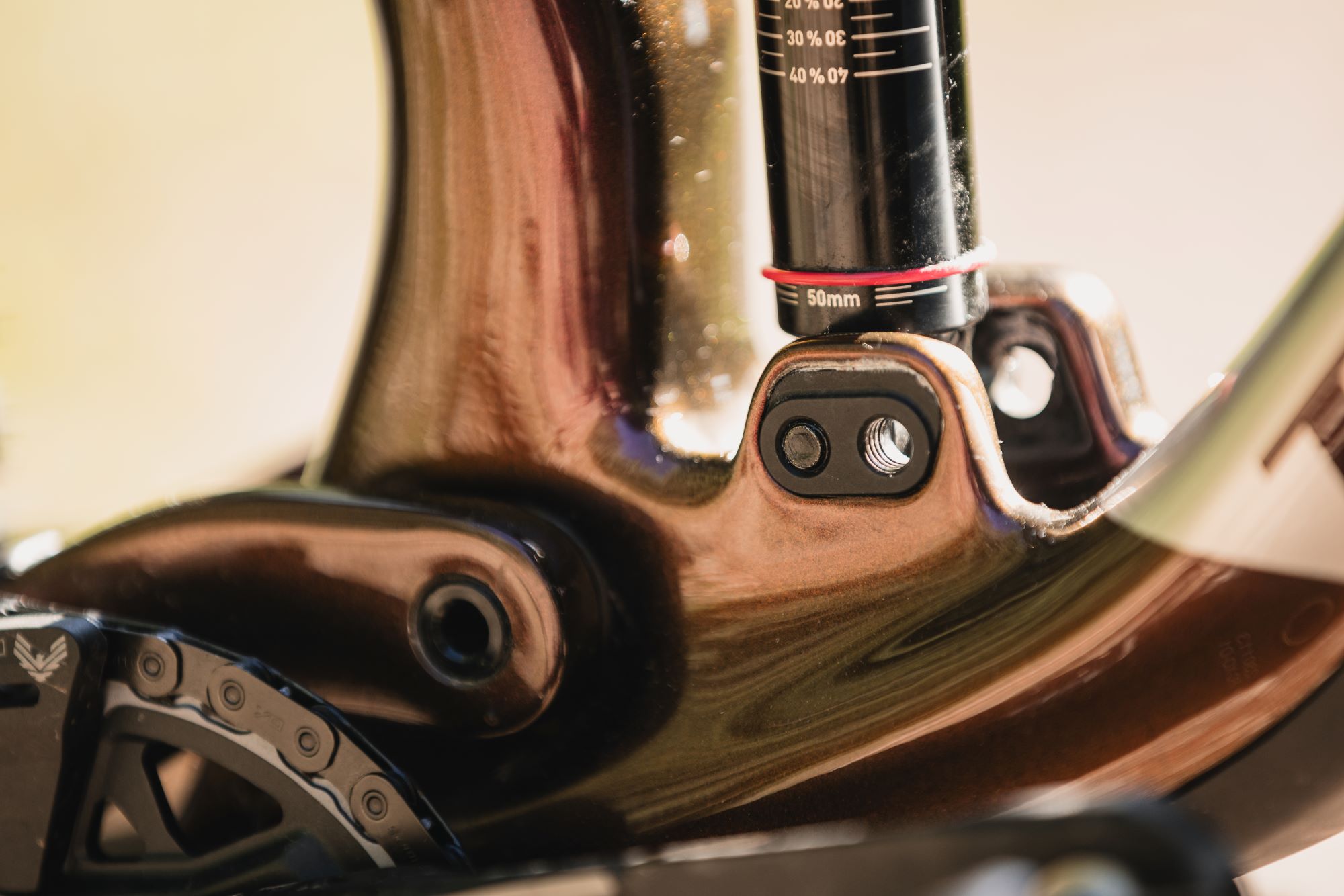
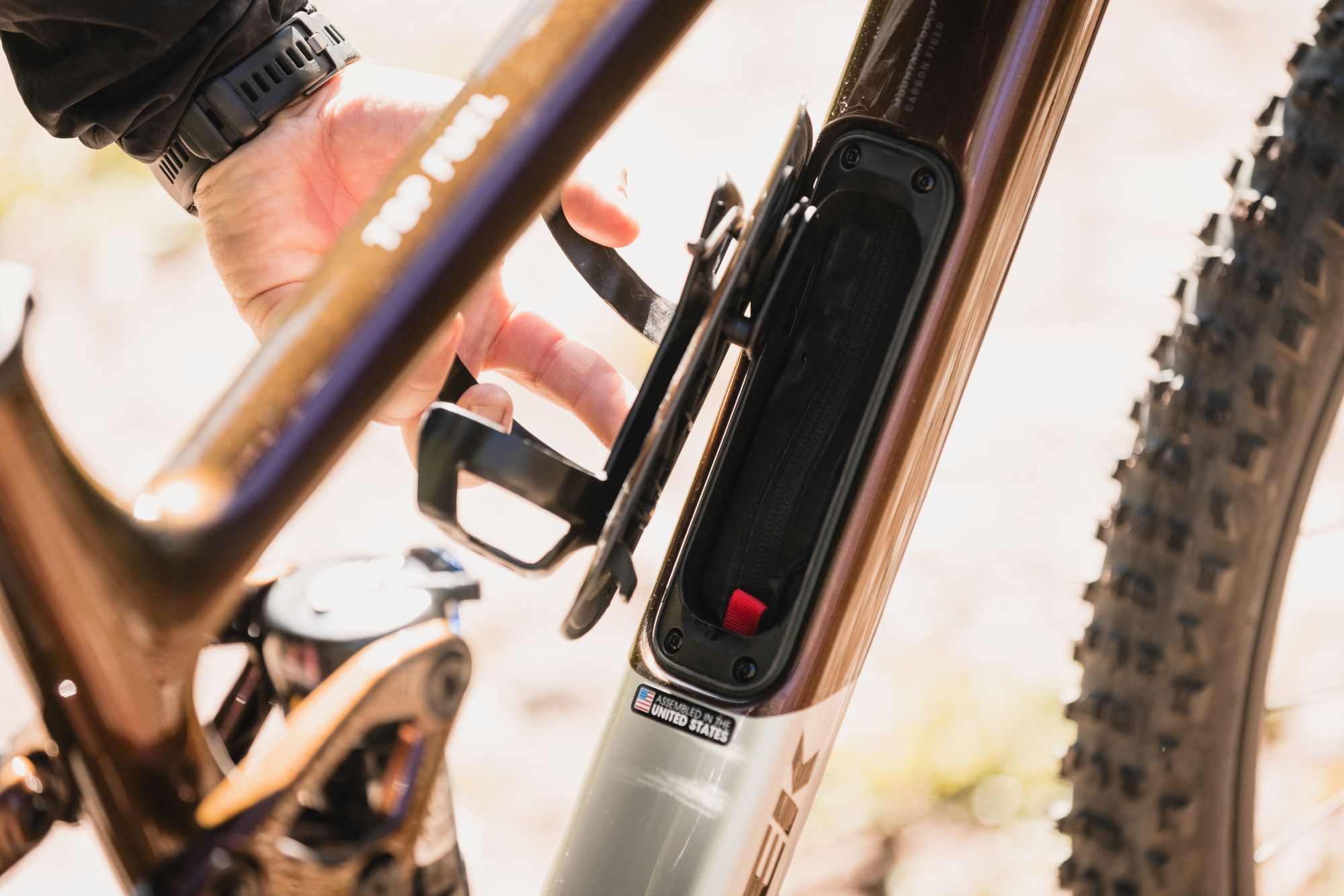
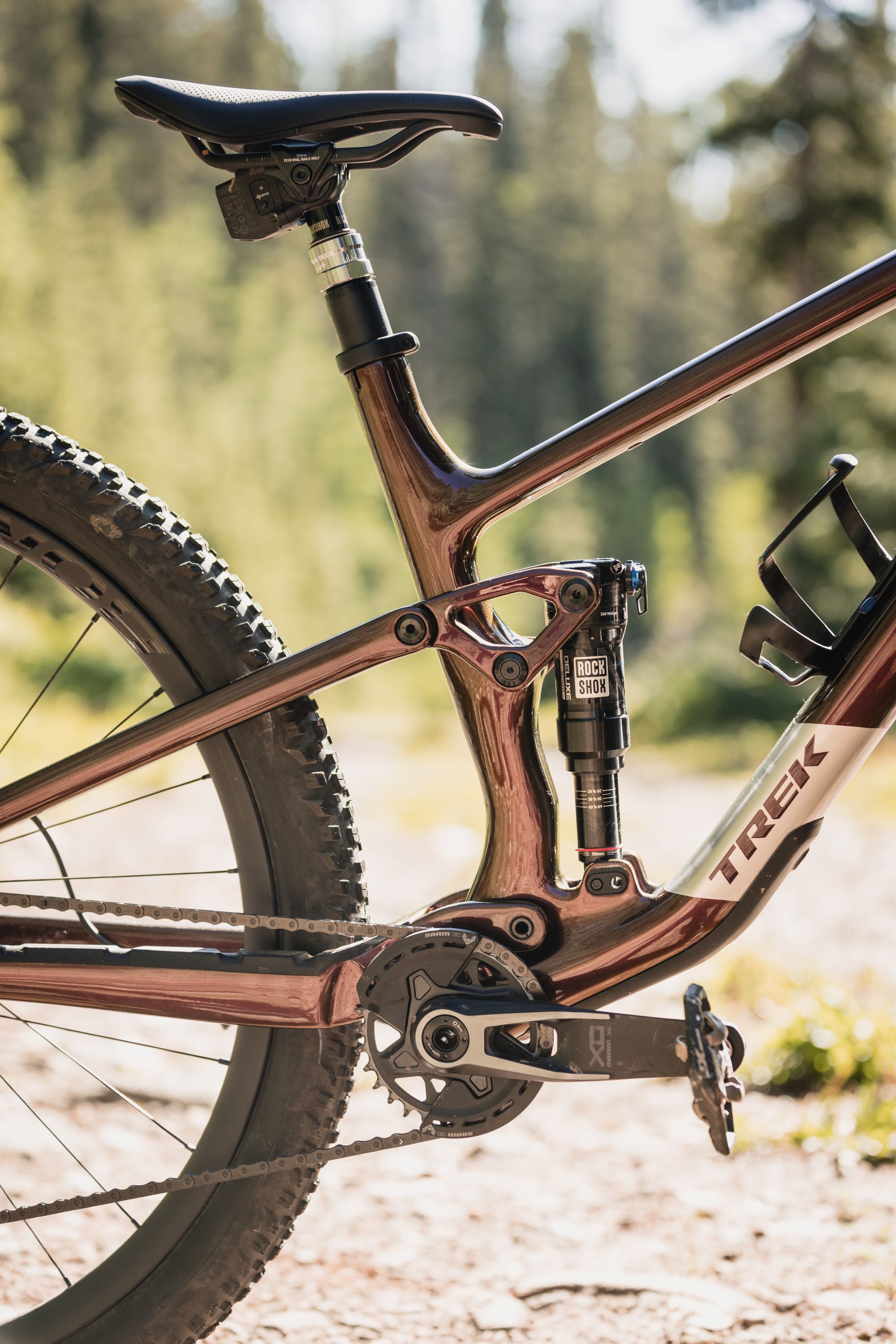
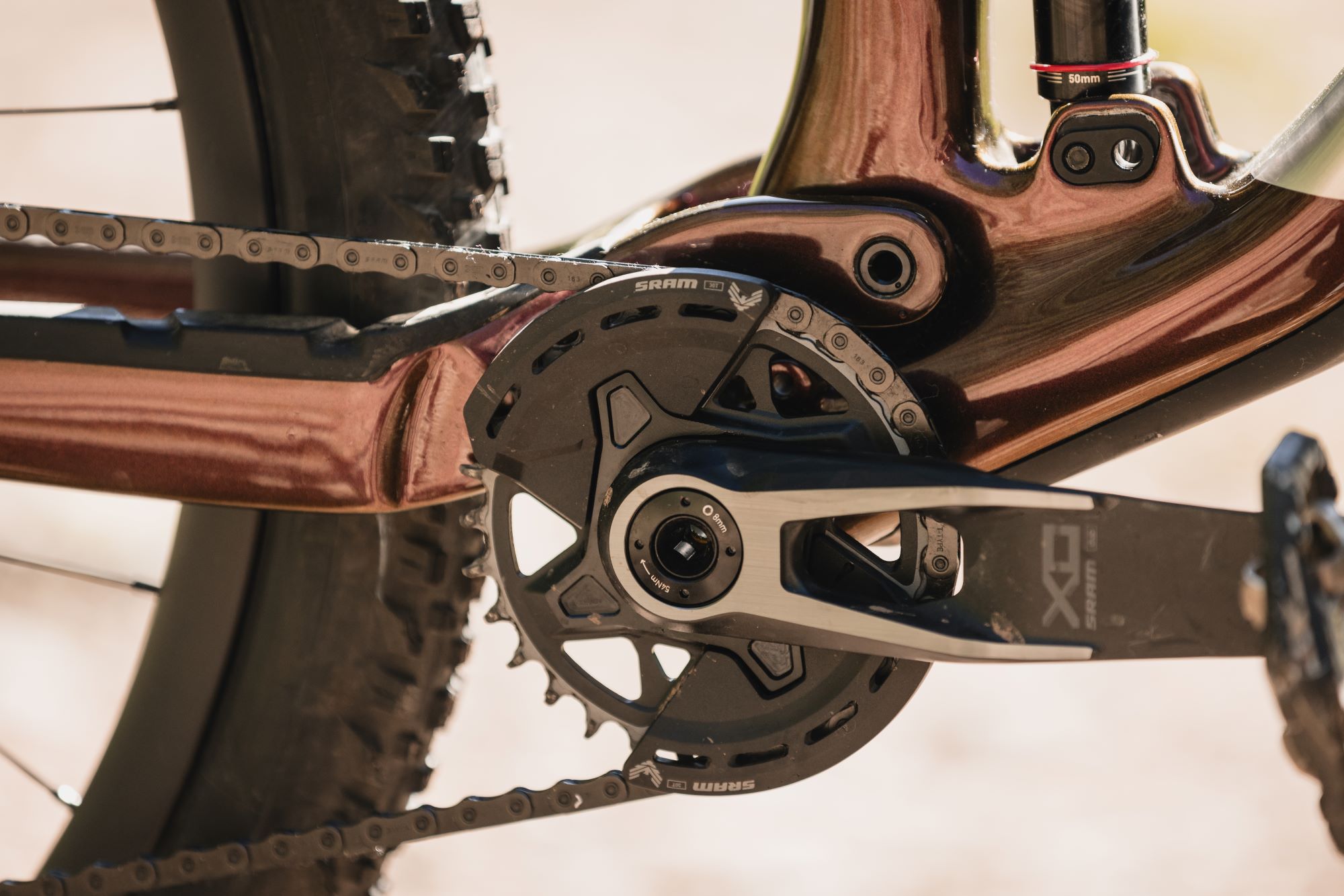
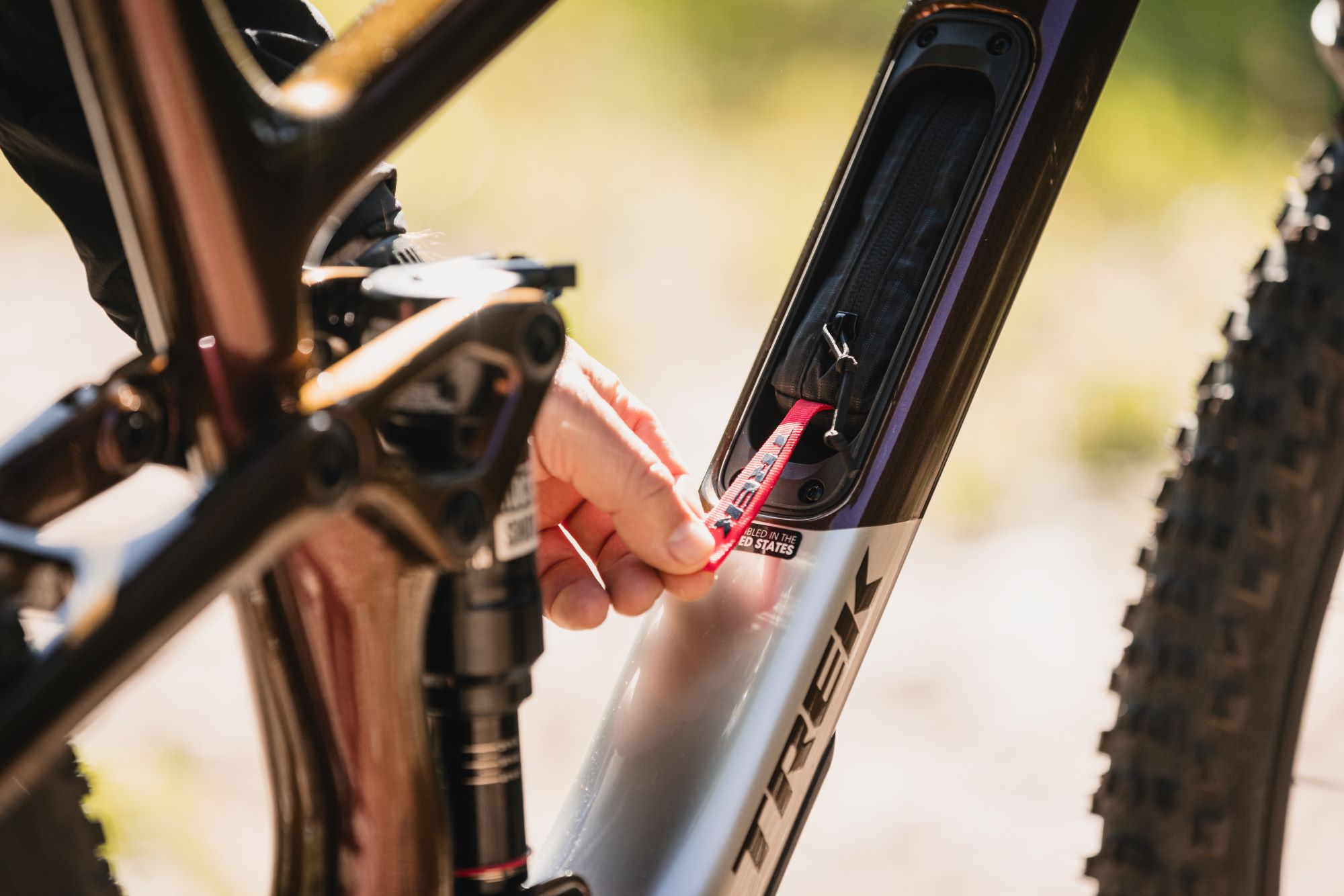
This compliance was evident when we ventured into the backcountry, which made for lengthy descents. The bike would eat up what was in front of it on rougher sections of trail, with the suspension holding its own. The lower progression setting was ideal for the ramp-up. It offers adequate dampening and felt comfortable even after several hours in the saddle. The Bontrager spec’d tyres are very supple and keep the weight down however I’d prefer something a bit beefier even with the weight penalty. Whilst they didn’t give me any grief on rockier descents you’d have to choose the best line as I was a tad worried about snagging them.
On the shorter, punchier rides in and around Durango’s extensive trail network, the bike was super smooth and sprightly. From more XC-oriented loops to bike park-style jumps and berms to rock slabs, even with sketchy rocky descents, the rear end stays active even under brake load. I think the key component is the four-bar suspension platform over a single-pivot flex-stay, which offers superior grip both uphill and downhill. There’s suitable snappiness, and the bike generates speed very well.
I’m very keen to build this bike as a burlier 140/130mm trail bike, so hopefully, we can make that happen soon. We will bring an in-depth review of the new Trek Top Fuel in our next publication, which is out in September.
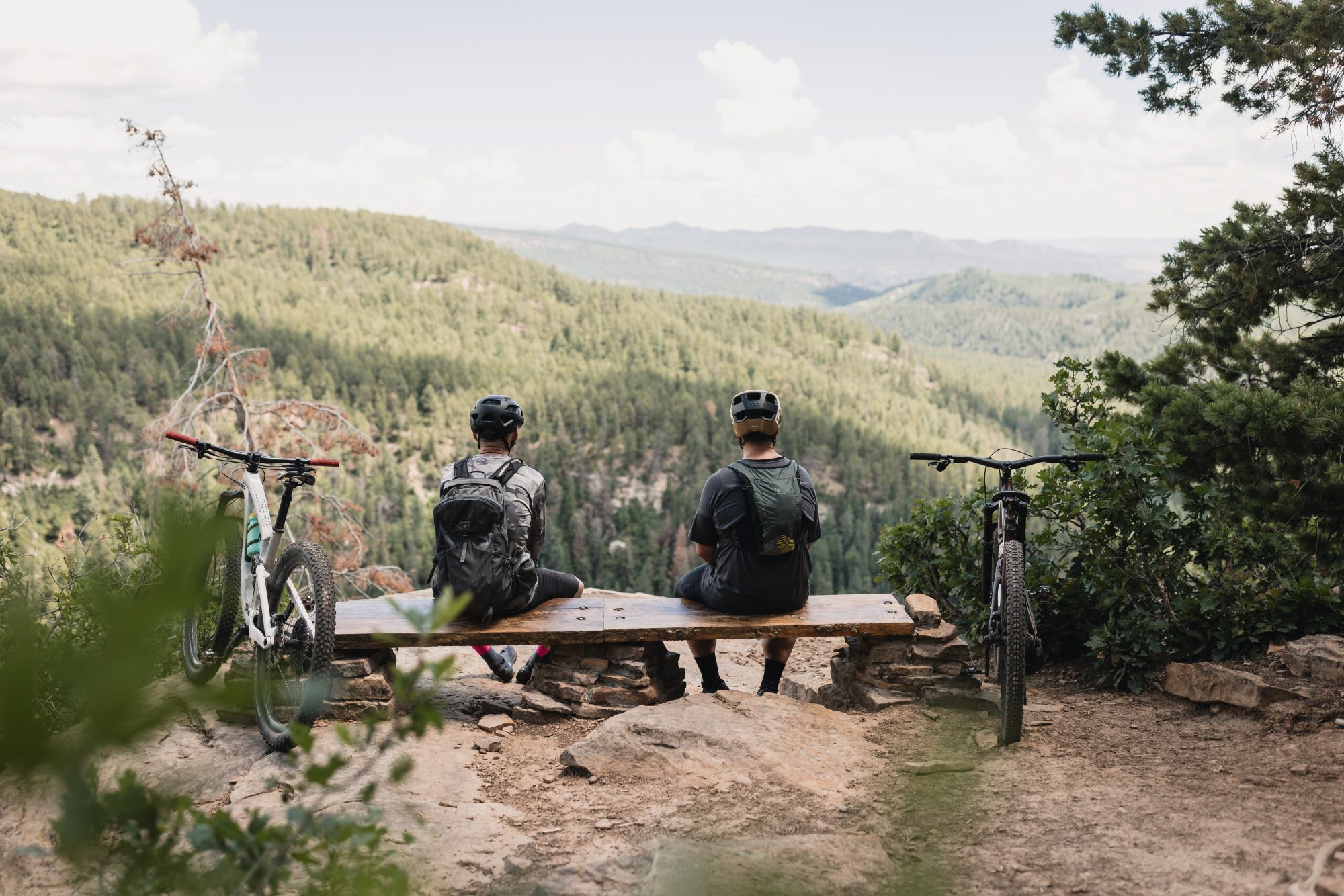
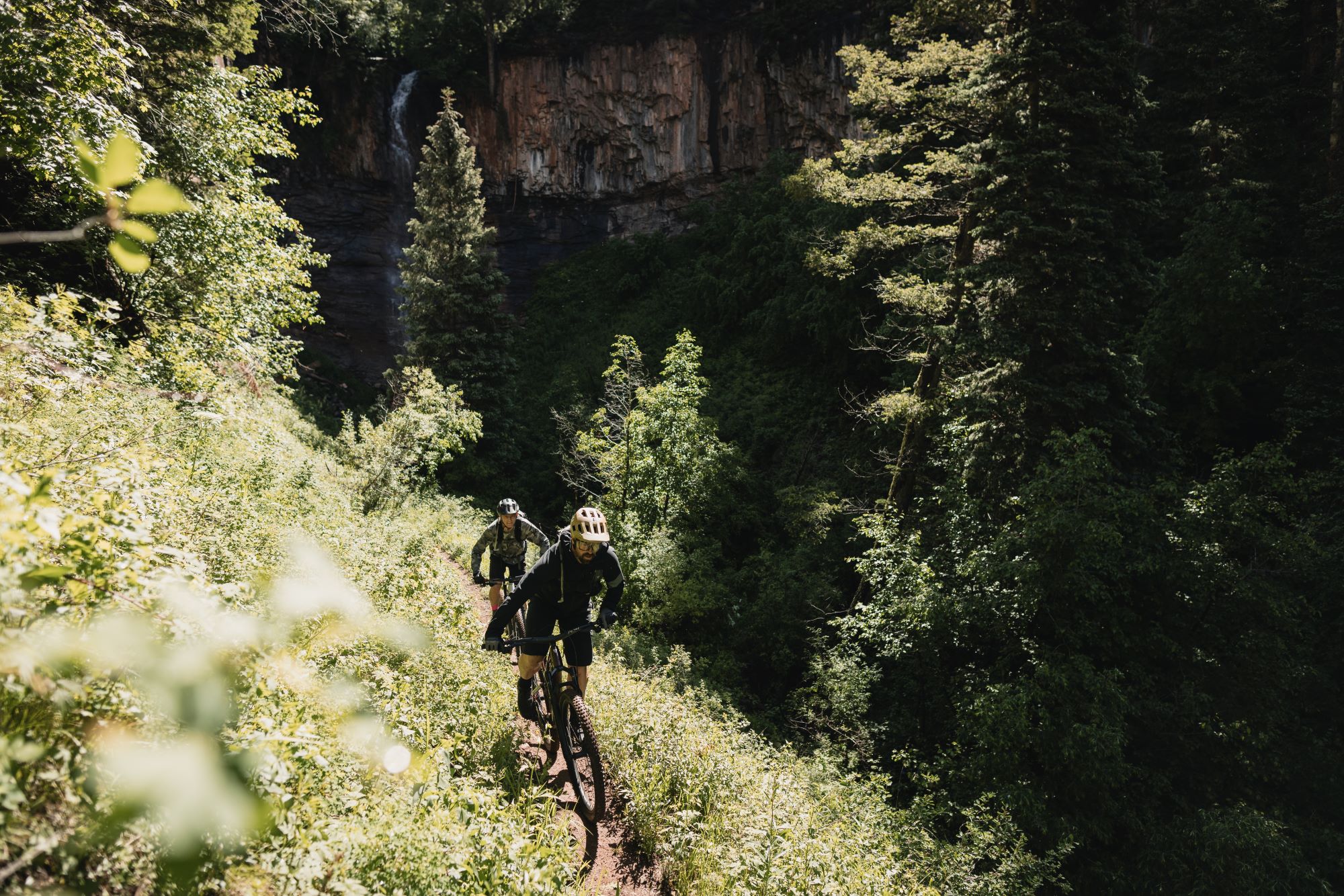
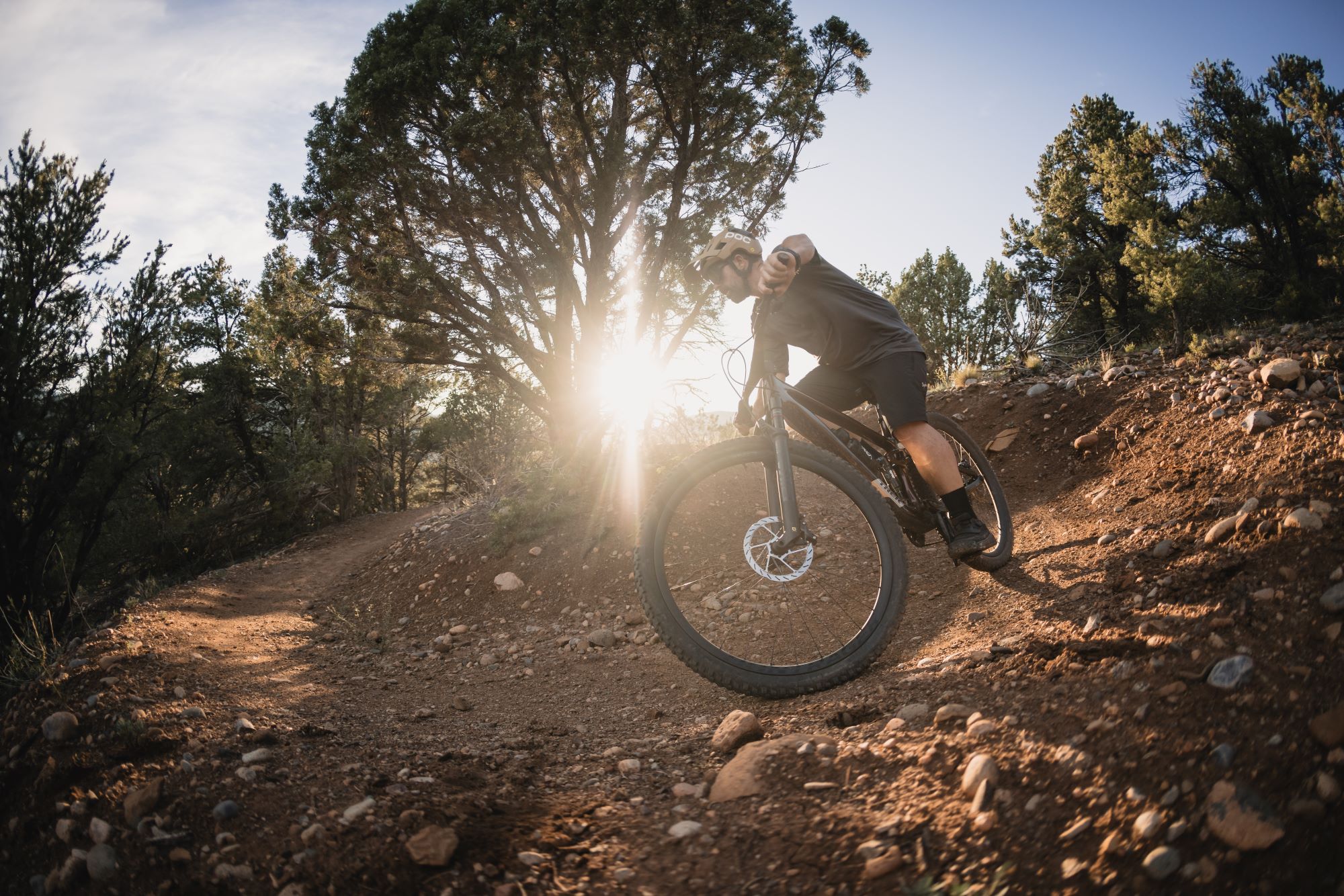
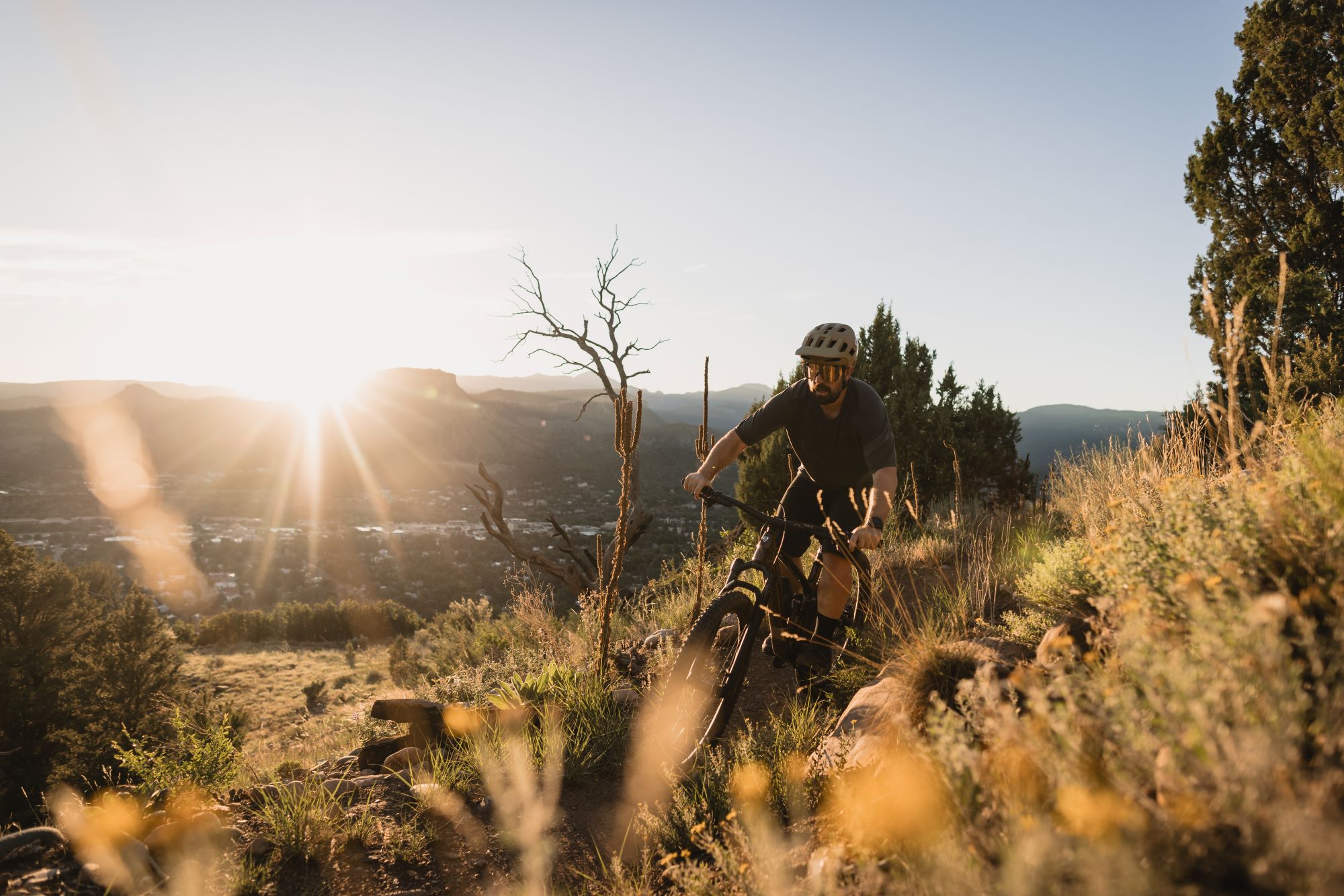
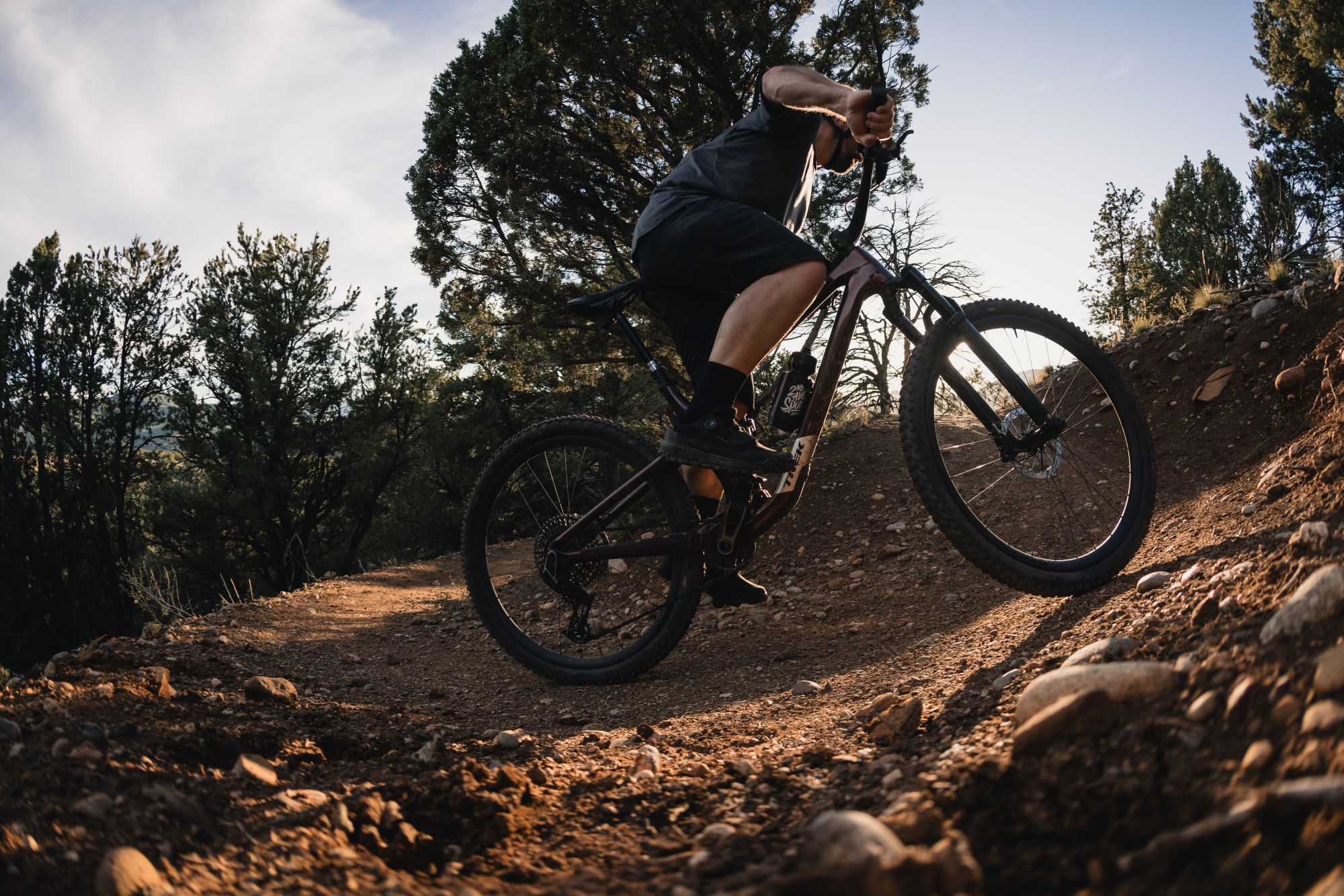

Mammoth of a Time with Winni Goldsbury
Words by Lester Perry
Images by Henry Jaine
On 23rd and 24th March 2024, Nelson Mtb Club knocked out the tenth edition of what is arguably NZ’s toughest gravity race; the Mammoth Enduro. Riders were presented with six epic descents linked by equally epic liaison climbs. The course designers aren’t total masochists, and eased the pressure on competitors by throwing in a couple of (no doubt banter-filled) shuttle uplifts to keep spirits high.
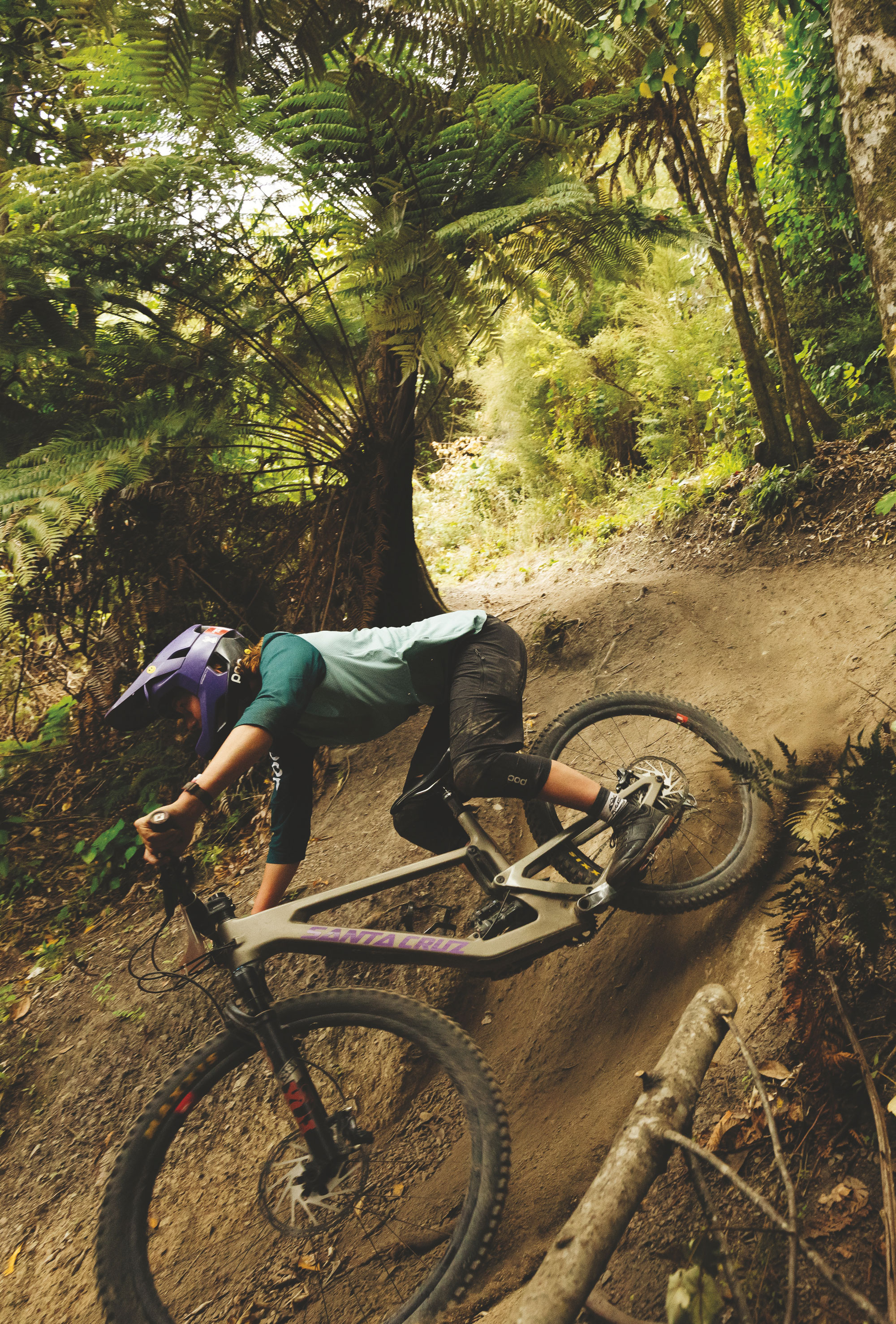
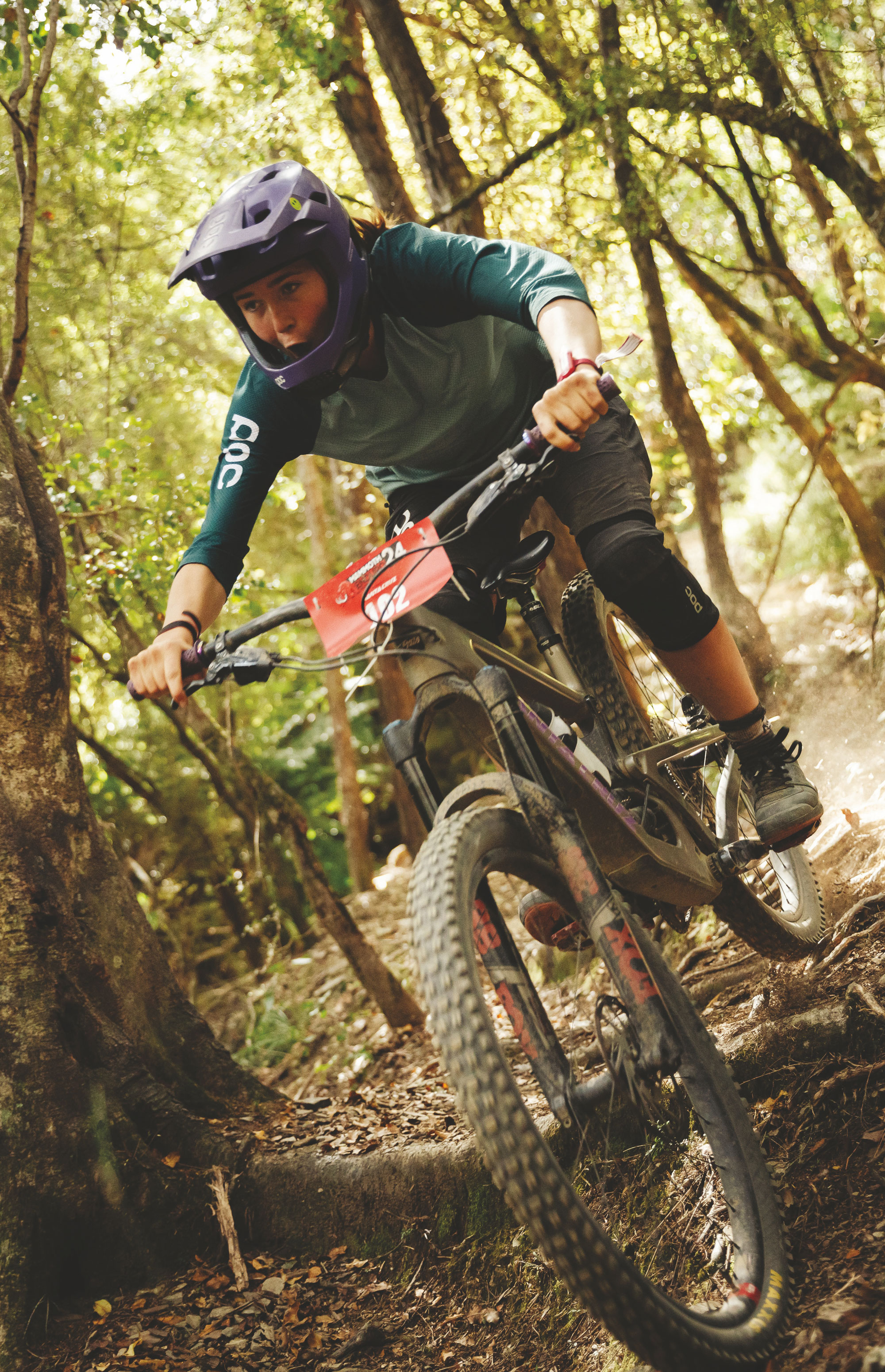
Racing down Peaking Ridge for Stage 4 was a highlight for Winni, the difference in speed from just riding it at her normal pace to a full-attack race pack, transformed the trail from a janky rhythmless physical challenge to a grin-inducing run where the root-balls and jank became flowy jumps and compressions.
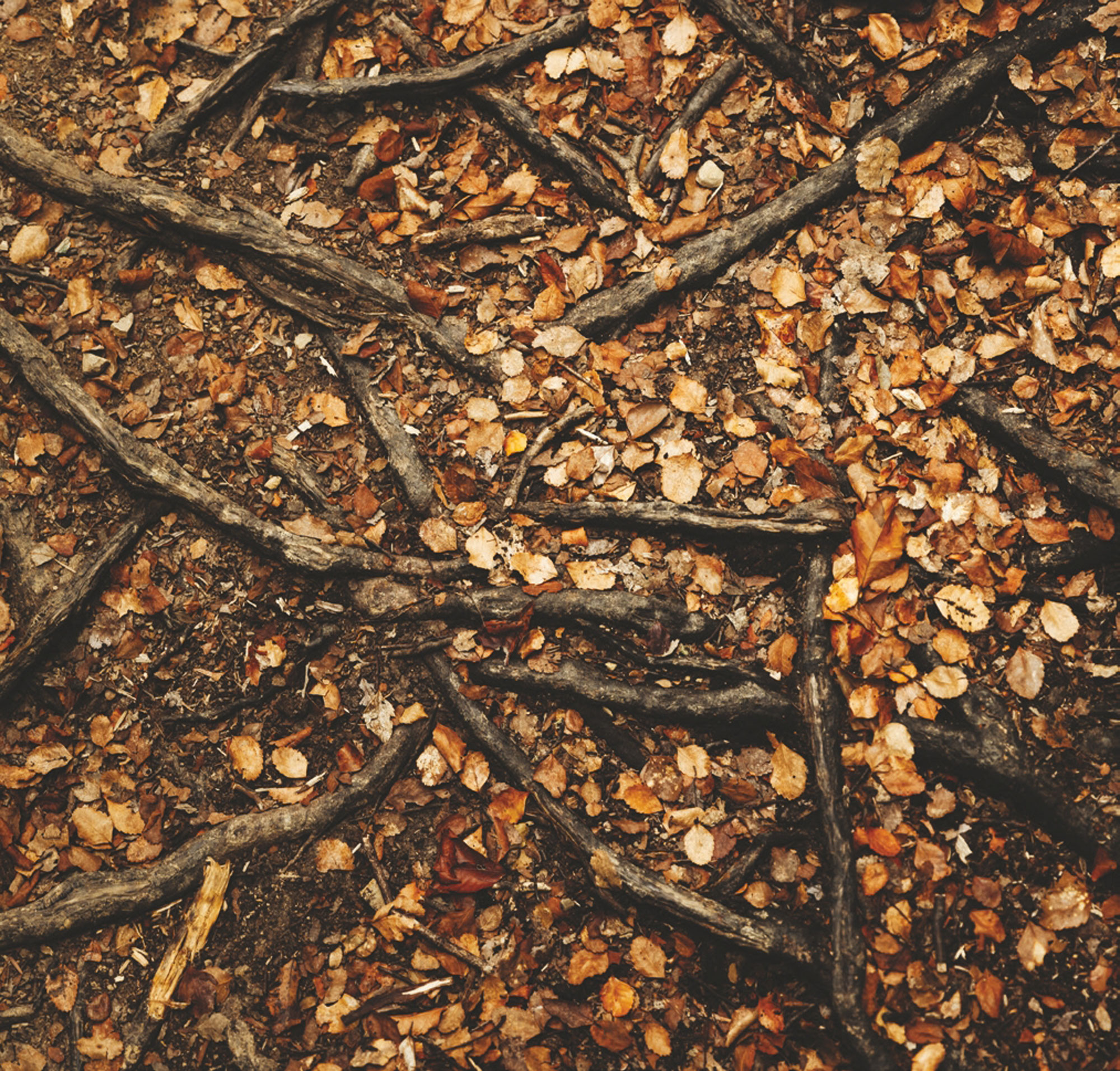
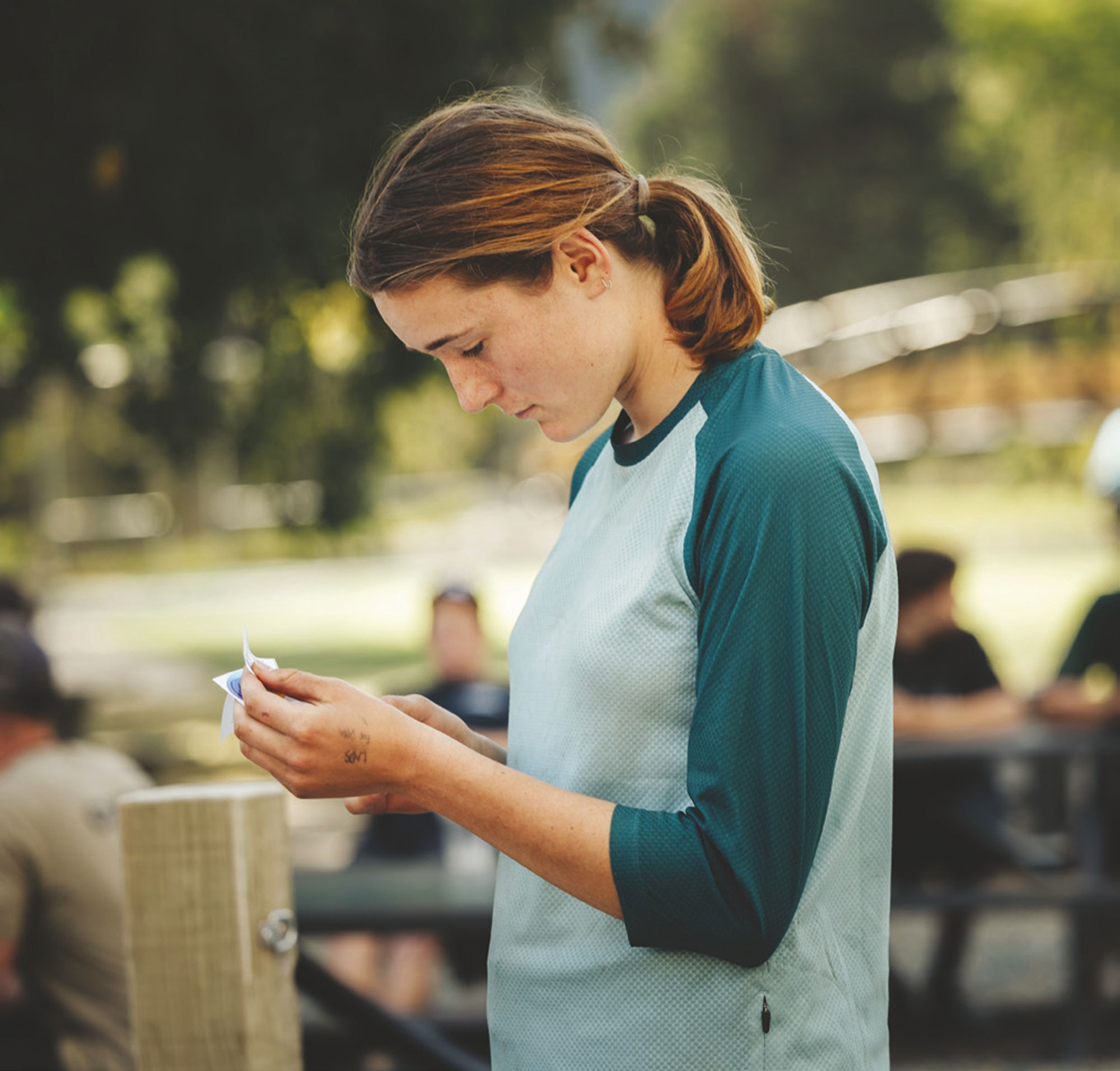
A few out-of-towners joined the local heavy hitters, but as with any enduro race, the locals certainly have the upper hand when it comes to knowing the trail nuances and how to race them well. This is definitely the case on Nelson’s technical steeps, where local knowledge pays dividends in the form of seconds on the clock.
Hailing from Christchurch, seventeen-year-old Winni Goldsbury turned up to Mammoth having ridden some, but not all, of the race stages. Practice was to be her first look at some of the trails. Not exactly confidence-inspiring when you’re about to go head to head with not only Nelson’s finest, but the women who are some of the nation’s fastest enduro racers.
The ace in Winni’s hand was that she’d proven herself just three weeks earlier at the NZ Enduro National Championship at Cable Bay Adventure Park, just outside of Nelson. Winni not only won the U21 championship but bested all other women in attendance, including the Elites.
Winni battled on foreign soil against local fast woman, Rae Morrison, duking it out over the Mammoth’s stages, trading stage wins and the race lead multiple times throughout the two competition days. Winni narrowly cinched the win over the seasoned Morrison by a sniff under a second! This was tight racing at its finest, and not only a huge surprise but another boost in confidence for the ever-improving Winni, with yet another podium in her break-out 2024 season.
She’s been at this bike game a while now, most of her life to be precise. At just six months old, she and her twin brother were presented with a pair of bikes by their grandfather. Handcrafted from old Kauri weatherboards from his house, these first bikes mean the pair can claim they were literally riding bikes before they could walk. From then on, mountain biking has been a key part of life for Winni, from doing skids at the local park, to cutting laps at the Christchurch Adventure Park once that was built. Since her first races at age 11, it’s been all go – and her passion for riding and racing continues to grow.
The ace in Winni’s hand was that she’d proven herself just three weeks earlier at the NZ Enduro National Championship at Cable Bay Adventure Park, just outside of Nelson. Winni not only won the U21 championship but bested all other women in attendance, including the Elites.
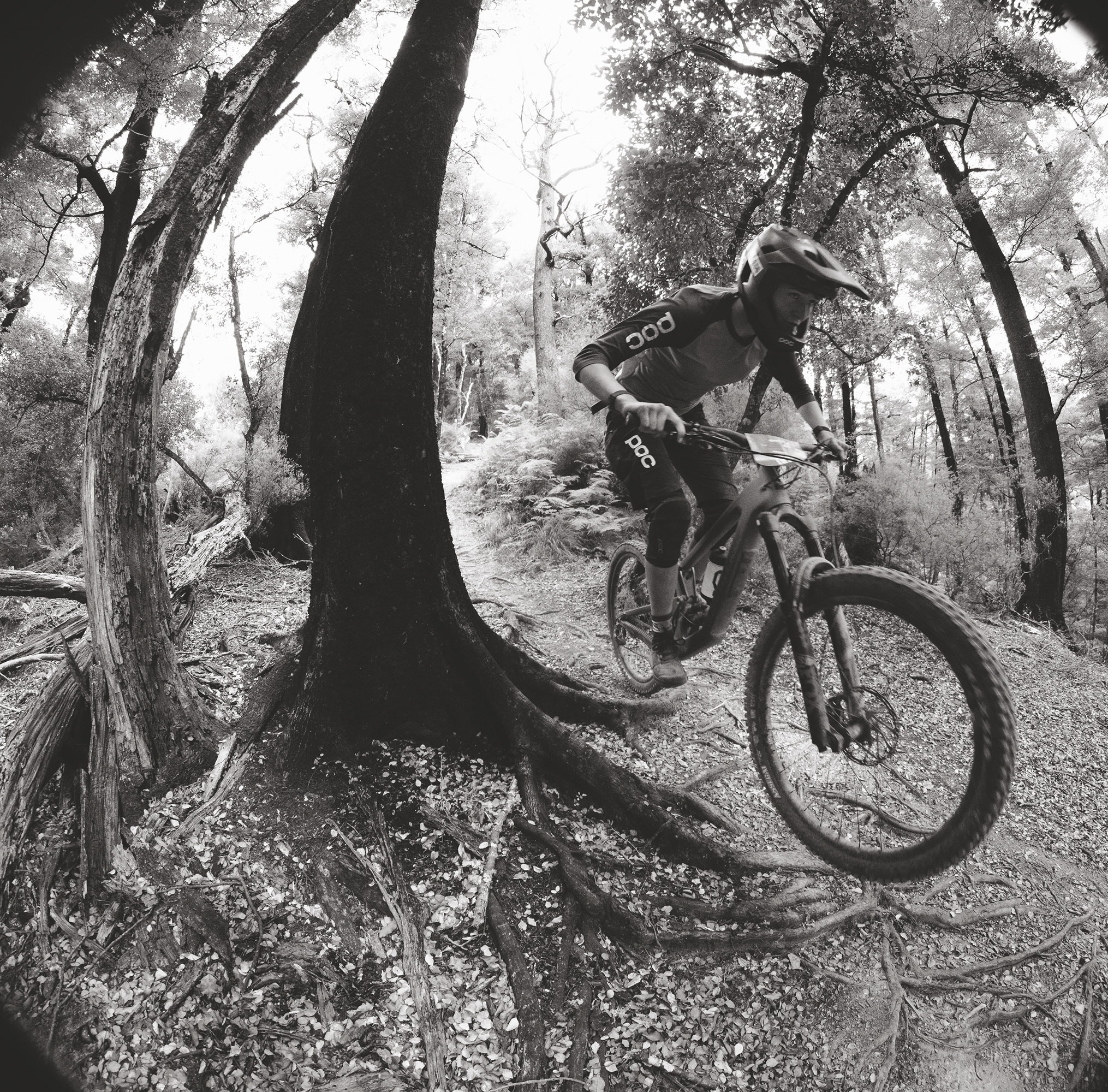
We caught up with Winni after Mammoth to get her thoughts on the event, dig a little deeper into her past, and get a glimpse into her hopes for the future.
“Becoming the NZ Women’s Enduro National Champion for 2024 is definitely a pretty great start to the year; hopefully, I can keep the momentum going for the rest of the year! Racing the Mammoth for the first time was awesome because the race had lovely people both participating and running it, as well as being run on an amazing bunch of trails. Honestly, it feels kind of like a dream to be up there with these ladies. I get to race with women as amazing and kind as Lou Kelly, Rae Morrison, George Swift and Xanthe Robb; it’s absolutely astounding. To be able to keep up with them makes the whole experience even more surreal,” explains Winni.
Winni had a couple of solid, and ultimately successful, days at the Mammoth, but the race wasn’t without adversity. On the first day, her chain came off during the first timed stage. Returning to the timing tent, the person who was doing the timing said that Rae’s time for stage one was 30 seconds faster than her time, which meant Rae would’ve been 4th in the pro-elite men category. Winni thought Rae must have had an amazing run. As luck should have it, though, the intel she received was incorrect, and Rae had finished only one second ahead of her in that opening stage. Seeing Rae’s time was still within reach added some pressure and ultimately fired Winni up to push harder heading into day two.
“The second day was also sweet. I was just so happy to be there racing with all those awesome people. Overall it was an amazing weekend,” she confirms.
“Honestly, it feels kind of like a dream to be up there with these ladies. I get to race with women as amazing and kind as Lou Kelly, Rae Morrison, George Swift and Xanthe Robb, it’s absolutely astounding. To be able to keep up with them makes the whole experience even more surreal.”
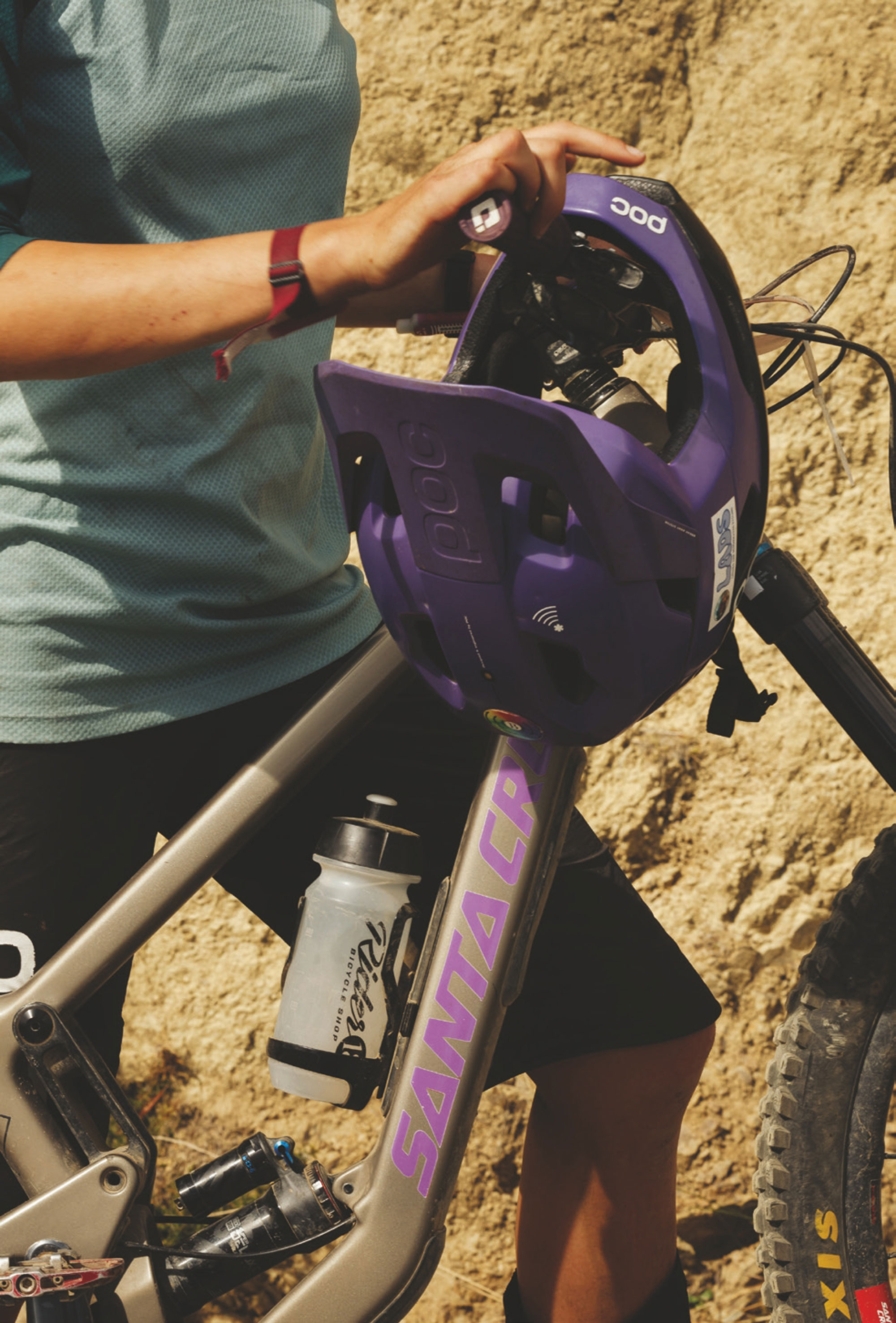
Day two kicked off with Stage 2, ‘Te Ara Koa’ into ‘Fringe DH’ and finishing down ‘Butters’; three trails combined to make one epic 3.3km trail, and the longest of the race. Aside from a lap in practice, Winni hadn’t ridden Fringe DH or Butters, and the stoke was real to get to race them for the first time. Unfortunately, Lady Luck wasn’t on her side, and she took a crash on this stage. All was not lost, however, she took the race lead from Rae, finishing the stage to take a sub-1-second buffer going into stage 3.
Racing down Peaking Ridge for Stage 4 was a highlight for Winni, the difference in speed from just riding it at her normal pace to a full- attack race pack, transformed the trail from a janky rhythmless physical challenge to a grin-inducing run where the root-balls and jank became flowy jumps and compressions.
Stage 5 was raced down the infamous 629 trail and its smorgasbord of steep dropping turns, slippery chutes, roots and rock; a jewel in Nelson’s MTB crown! Partway down the stage, Winni “had a random burst of energy which lasted until the end of the race; sprinted the entirety of the final horrible climb up Maitai Face”. It seems it may have been more than just a “random energy burst” though, having stopped at the food station on the climb to Maitai Face for a quick break to pat a puppy.
Maitai Face is a staple at most enduros in the area, dropping riders down through lofty pines, over roots, off-camber – and it has some of the steepest grades in the region; tough in the dry but nearly-unrideable in the wet. Fortunately, the weather gods played ball and delivered bone-dry conditions for the Mammoth riders. It was this 6th and final stage where Winni secured her win, pipping Rae by a narrow 3.5 seconds, putting her ahead once again and giving her the overall win by a scant half a second. A dominant performance battling not only Rae Morrison but Xanthe Rob, who raced consistently through the day to round out the top three over a minute and a half back.
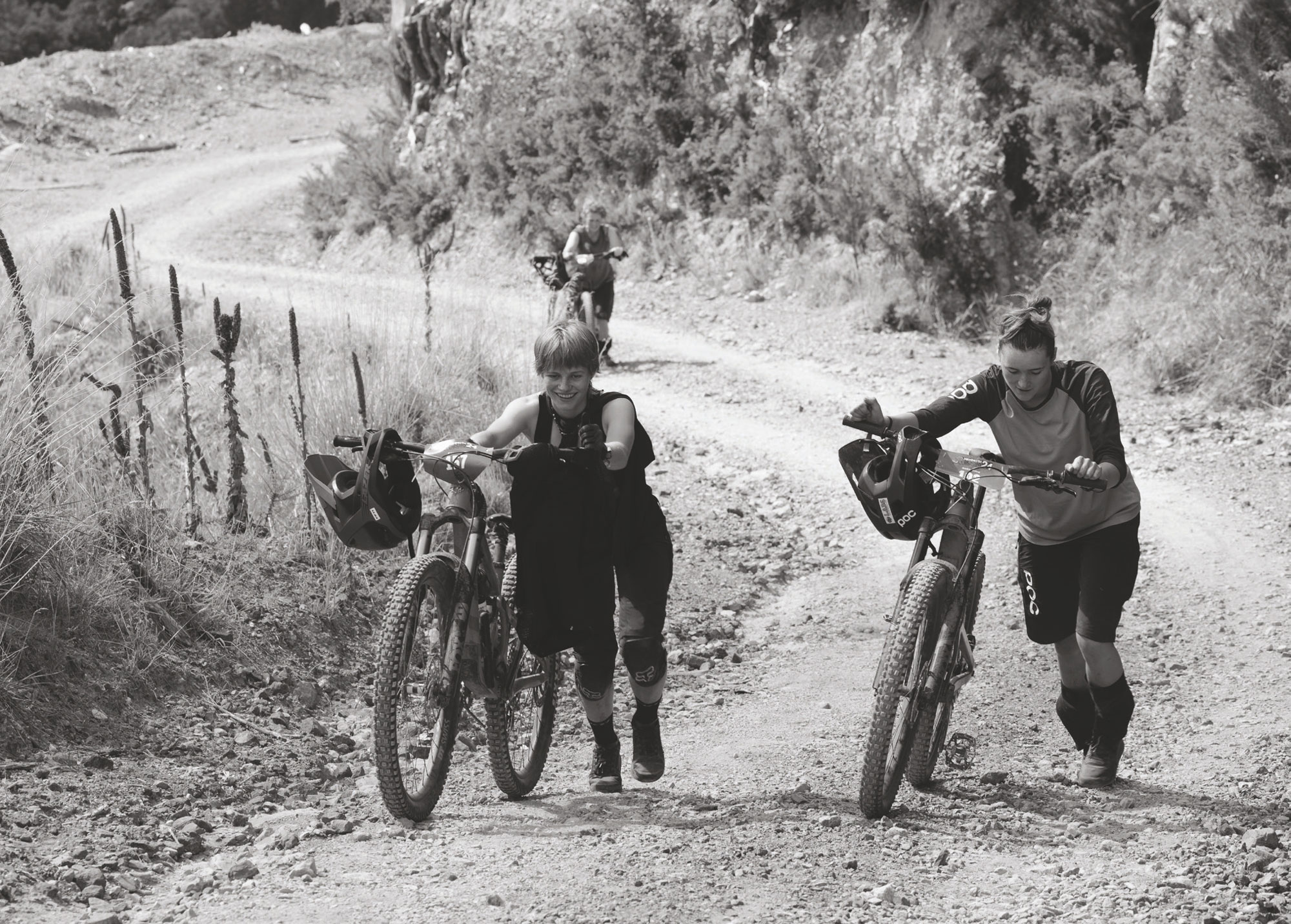
Off the back of Mammoth, Winni picked up couple of injuries which slowed her down for a few weeks but, once recovered, she was all go - preparing to head over to Europe to race some Enduros. By the time this magazine breaks cover, she should be jetting her way to the other side of the globe to begin another chapter in her life.
Winni’s not one to get too bogged down in the details of bike setup; there are no special tweaks or specifics to her setup, it’s more of a “run what you brung” scenario. Her only comment about setup was the use of a pair of Reserve wheels fitted with Cushcore inserts and Maxxis Assegai tyres, pumped to 23 PSI front and rear, allowing her to attack Nelson’s gnarliest, remaining fully focussed on the task at hand rather than nursing her steed or riding light while concerned about flat tyres.
Breakout seasons often come after a period of hard work and focused training; for Winni though, her approach is more laid back than many at her level. “My training schedule is very, very serious, and intense,” she jokes. “No, no, my training is very relaxed and is limited to push- ups and intervals. I just ride every day and try to keep up with people who are faster than me.”
As simple as that.
Winni’s seemingly laissez-faire, relaxed attitude and absolute froth for mountain biking aren’t unique to her; it’s a full-family affair.
“My parents have both been extremely important in my MTB journey so far, as they are also obsessive mountain bikers. My mum, Melanie Blomfield, is a super competitive person all around and mountain biking is no different. She has dominated the 50+ category for the last five years and often beats most of the open women in local races. She has always been phenomenal and extremely supportive of my racing,” explains Winni. “My dad, Richard Goldsbury, was a cross country and downhill racer in the 90’s and 00’s. When enduro came into existence he definitely enjoyed that, and now he sometimes gives races the privilege of his participation, although mainly spends his time taking stunning photos of riding, and building the coolest tracks in Canterbury. He is very supportive. They’ve both influenced my riding so much because of their different riding styles, so I’ve learned to ride lots of different types of terrain. We travel across New Zealand a lot and get to ride all the different types of riding NZ has to offer.”
Off the back of Mammoth, Winni picked up couple of injuries which slowed her down for a few weeks but, once recovered, she was all go – preparing to head over to Europe to race some enduros. By the time this magazine breaks cover, she should be jetting her way to the other side of the globe to begin another chapter in her life.
Alongside Winni, Shannon Hewetson backed up his win at the NZ Enduro Championships at the Mammoth.
“Mammoth Enduro was a really rad event,” says Shannon. “They had everyone speculating on the tracks with the organisers staying tight lipped right up to the week of, meaning most were in the same boat practice-wise. We raced some of the best, most iconic trails – both skill and fitness-wise – for Nelson. Peaking Ridge and 629 were lots of fun, but all stages required a lot of focus with their duration, and all had high consequences if you misjudged things. The weekend went smoothly for me, didn’t really expect to do what I did; I thought I’d be feeling flat after Cable Bay (NZ Champs). Sometimes those days when you think things could have gone better, or you could have had better intensity, can really surprise you! Coming off the back of taking out Nationals Champs a few weeks prior, I felt a lot of pressure to back it up with a solid win, so was pretty stoked to take it out and to close out the summer season with another win.”
Thats a wrap for our Mammoth Enduro series. We’re looking forward to next year’s race and hope to see some of you there!
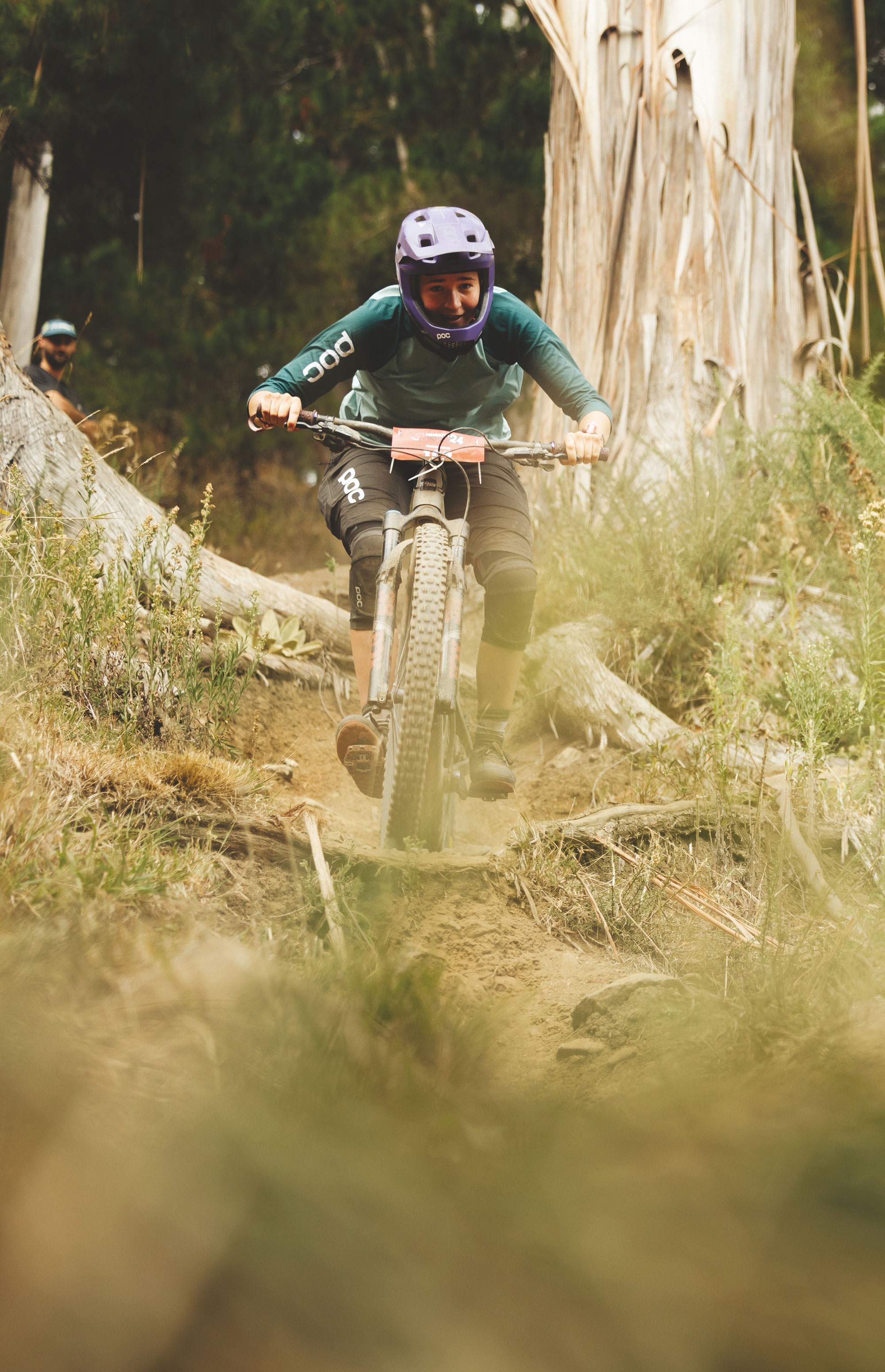

Small Victories: Celebrating a 40th following a spinal cord injury
Words & Images Chris Owen
Turning forty is a milestone that deserves a decent celebration. A couple of years ago, I was on the verge of hitting the big Four-O, but it was hard to believe… How had I been a ‘grown up’ for that long? When it came to the good times I had on bikes, it didn’t seem I had progressed far from adolescence really!
I’d spent a good part of my adult life riding bikes, and the things I loved about it hadn’t changed since I was a kid; doing skids, hucking off stuff, and trying (failing?) to go faster than my mates – all put a big grin on my face. And, of course, that surge of adrenaline and relief you experience when you ride out the other side of something terrifying.
On the 10th of September 2022, I suddenly felt my age pretty significantly, following a crash that was one for the books. Bike parks often promote the ‘Pre-Ride / Re-Ride / Freeride’ approach to hitting new or re-built trails, and a popular jump line had just re-opened after having some work done on it. I was keen to sample the new features, but I was also in a hurry to get home and keep promises to my wife – no time for pre-rides or re-rides. Bombing down the trail, I overshot a jump at full pace and, looking ahead with horror, saw what was about to happen.
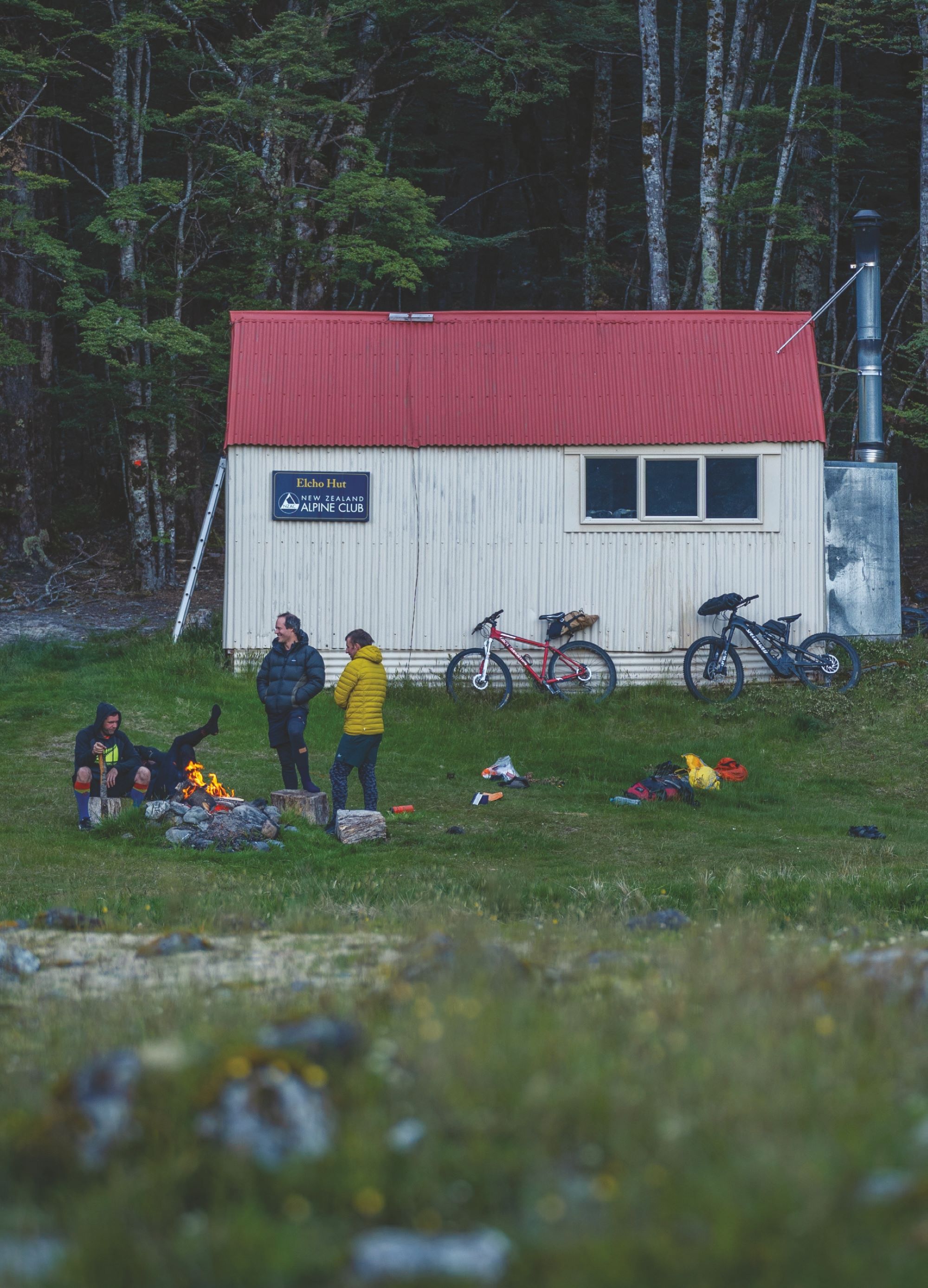
The second my wheels touched down, way past the landing, my bike ploughed into the back of a freshly built berm. The result (after getting flipped upside down and clipping a tree), was twelve broken ribs, a split diaphragm, three broken vertebrae and a spinal cord injury. In a split second, some bad decision making had changed my life.
The weeks and months following the crash pushed my body and my mind to their limits. I spent four months as a patient in Burwood Hospital’s spinal unit, full of uncertainty about what the rest of my life was going to look like. Burwood is an excellent facility, but even the most qualified doctors were reluctant to tell me whether or not I’d walk again. When your lower body suddenly goes offline and you don’t know whether you will get it back, it’s terrifying; there is so much to process. At Burwood, I felt like I’d been plucked out of my ‘normal life’ into a whole new world; one that involved wheelchairs, catheters, an endless array of medication, and a total invasion of privacy. The first few evenings there were the hardest; after visitors left and the ward was quiet. In those moments, negative thoughts, anxiety and fear tried their best to consume me.
Reflecting on my time in Burwood, I consider myself one of the lucky ones, for so many reasons. Firstly, I didn’t hit my head. Secondly, I did have a shot at getting back on my feet, due to the way I’d damaged my spine – it wasn’t certain, but if I put the work in, I may just walk again. More importantly, though, my accident taught me just how much the people in my life cared about me. I was deeply moved by the ongoing flow of love and support I received. Collectively, everyone strongly believed that I would crush my recovery, and this lit a fire under me – I had so many incredible people in my corner, I was seriously motivated to work as hard as possible; not just for myself, but for them as well.
Amongst the patients at Burwood were some inspirational people who became close friends. They helped me realise that the hard work started in my head. I learnt early on that I couldn’t let negative thoughts see the light of day. Easier said than done, but crucial to getting out of bed every morning, into a wheelchair, and down the hallway to physio. I did my best to focus on the present – I tried not to pay attention to the sheer scale of work that lay ahead of me. It became obvious pretty quickly that this recovery was going to be a slow grind, so I chose (and still choose) to celebrate the small victories. It was all about the small victories. Focus on the battles, don’t think about the war. Block out thoughts about the future, just visualise walking out the front door on discharge day. Most importantly, believe in myself. There were plenty of rough days when this mindset went to the dogs. But, for the most part, I tried to see life through this lens, and so I went to work.
Fast forward to November 2023: it’s been a heavy year but I’m on my feet, and even better – I’m back on a bike! I discharged from Burwood by walking out the front door just as I had imagined. But, despite that milestone, I’m not out of the woods – a number of leg muscles still lack proper function, and it doesn’t take much to absolutely exhaust me. It’s still uncertain how much strength I’ll get back but, after everything I’ve been through, I’m insanely grateful to get this far. It’s been months of life on repeat, working with a cast of amazing people: physio, acupuncture, hydrotherapy, gym, Pilates, work, family time, rest. Rinse and repeat weekly. The progress is glacially slow, but there is always noticeable improvement every week or two, even if it’s minimal. That’s all the motivation I need to keep going at it. Small victories.
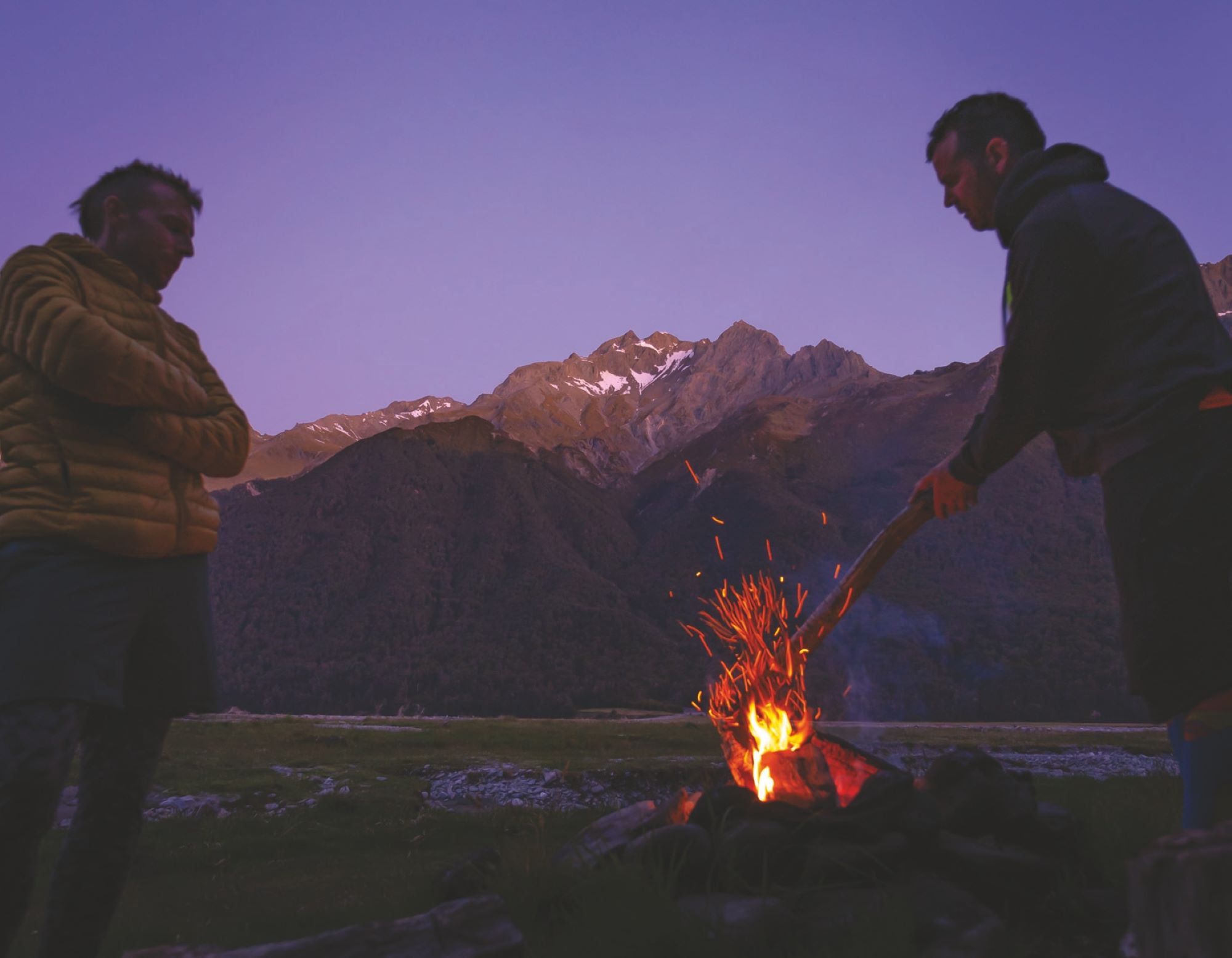
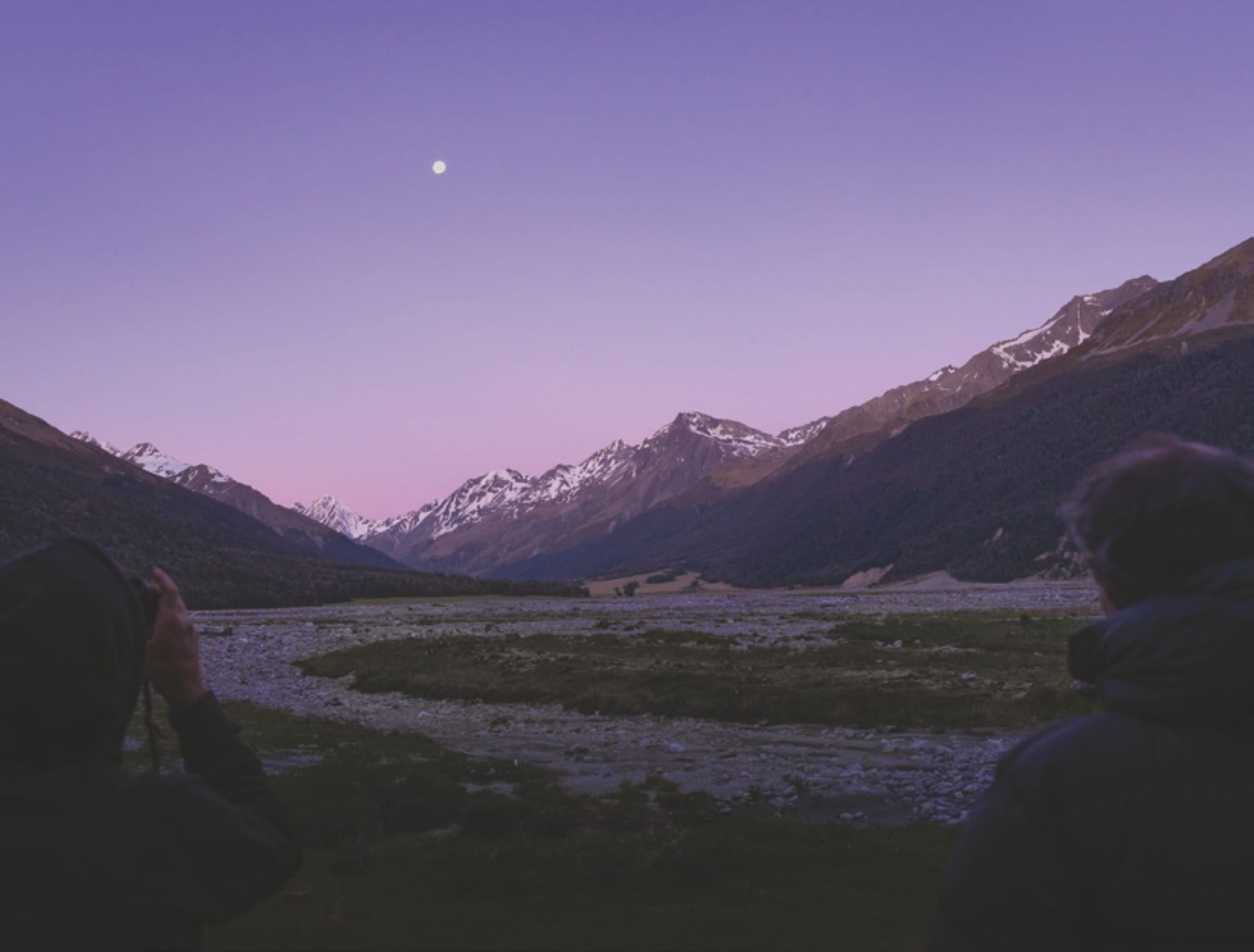
Focus on the battles, don’t think about the war. Block out thoughts about the future, just visualise walking out the front door on discharge day. Most importantly, believe in myself. There were plenty of rough days when this mindset went to the dogs. But, for the most part, I tried to see life through this lens, and so I went to work.
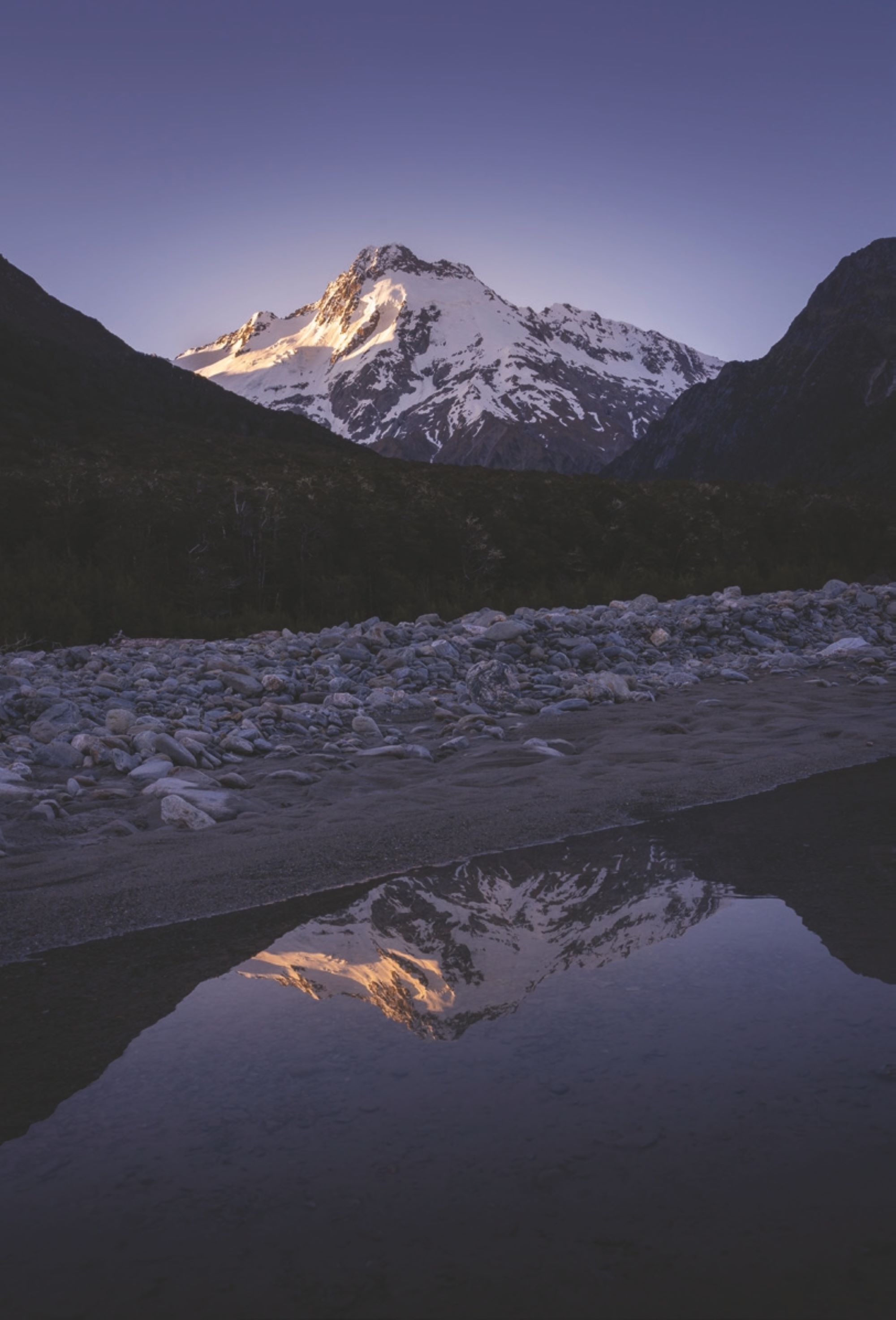
Seemingly out of nowhere, my 40th is just around the corner and, aside from special time with my beautiful wife and cheeky children, there’s only one way I want to celebrate it – on bikes in the mountains (eBike for me), with my mates and my brother. Doing something that, for a while, looked like it may never be possible for me again. Group chat created, keen participants locked in, route and hut suggestions getting thrown around. Lots of ideas are kicked to the curb. Understandably, everyone is concerned about what I’ll be able to manage. I convince the boys an overnighter in the Hopkins Valley is perfect, based on my very faded recollection of a climbing trip there 11 years ago. I sell it as a cruisy pedal up a flat valley, mostly 4WD track with a few shallow river crossings. Sold. Packing starts in earnest, including all the usual bikepacking and camera gear as well as crutches, a bag of meds, and bathroom consumables (if you know, you know… if you don’t, ignorance is bliss). It’s the night before, forecast looks perfect, and I can’t wait. I decide to dig out the photos from that climbing trip, years before. I notice suddenly that the ‘shallow’ river crossings I recalled were actually knee-deep and swift, in more than one photo… Hmmm.
The drive down is great. I can’t believe I’m on the road with mates, heading into the hills, after the year that has just passed. Unreal. It’s a thought that sticks with me all of Friday evening and well into Saturday morning as we set off up the valley. We enjoy a chilled 4WD trail for the first few kilometres, but suddenly we are faced with our first river crossing. It’s definitely not shallow, but it’s not ridiculously deep either… it’ll go. One by one we egg each other on as the acoustic bikes get across with a few near-swims, and a lot of laughs. Then it’s my turn – I’ve done my research on the Turbo Levo’s waterproof rating, now it’s seriously about to get tested. So is my skinny right leg – if I mess this up and have to tripod quickly, there’s a fair chance the leg will just buckle, and I’ll go down with the ship. Stop thinking, start pedaling. I charge at the river and emerge on the other side upright and grinning. The boys are cheering, and so am I. More importantly, the bike is still working!
That first crossing sets the tone for the next two or three hours; weaving our way up the riverbed, carefully looking for good spots to cross, then going for it. The kilometres fall away and our bed for the night, Elcho Hut, is only a couple of km’s away. I couldn’t be more content.
Suddenly, we’ve arrived at a bottle neck. On our right, the river has become noticeably deeper and swifter. Even the strongest amongst us (including an ultra-runner and a 6-foot sheep shearer) reckon it’s dicey, let alone for a bloke with semi- functional legs! We have no choice but to explore options on our left, where the river cuts in abruptly against the bush. Looks OK on the map, just have to link up with the nearby tramping track. The boys can portage my bike along the track for about 500m while I hobble along it on crutches; all good. Except, it’s not…. the boys find the orange track markers amongst an ocean of windfallen trees and thick saplings. Pretty average terrain to push a 23kg eBike through, loaded with gear! Regardless, everyone gives it a damn good go, trying to clear a path, knowing that it looks like our only option. To me, that shows the character of guys I’m privileged to be here with. They have my back, just as they have right through this injury.
I feel a bit helpless, sitting on the riverbed while everybody else is working so hard to find a way through. We regroup, confirming my worries – the bush route’s just not going to work. At this point, I notice the fatigue starting to creep in. I know this feeling after limping home from physio more times than I care to recall, and it means my body is on the gas light. I won’t have the energy to backtrack five hours to the car. Nobody says it out loud, but it’s looking like an unplanned night in the bush could be on the cards. Everyone spreads out on one last recce. We might be in luck: Phil thinks he has found a goaty little route sandwiched between the bank and the river’s edge, about one foot wide in places, weaving under and over fallen trees. Beggars can’t be choosers, so we set out in single file – me on crutches and everyone else carrying bikes in one hand, balancing against the riverbank with the other. So far so good. After about 15 minutes of this procession, we are nearly through the worst of it. The last obstacle, a semi-submerged tree, has me doing my best to crawl/dry-hump my way over it, in an effort not to fall in the drink. We regroup on the river flat, chuffed. The Type 2 fun is over, and we’re looking forward to knocking it off with one last pedal.
Suddenly, we’ve arrived at a bottle neck. On our right, the river has become noticeably deeper and swifter. Even the strongest amongst us (including an ultra-runner and a 6-foot sheep shearer) reckon it’s dicey, let alone for a bloke with semi-functional legs! We have no choice but to explore options on our left, where the river cuts in abruptly against the bush.
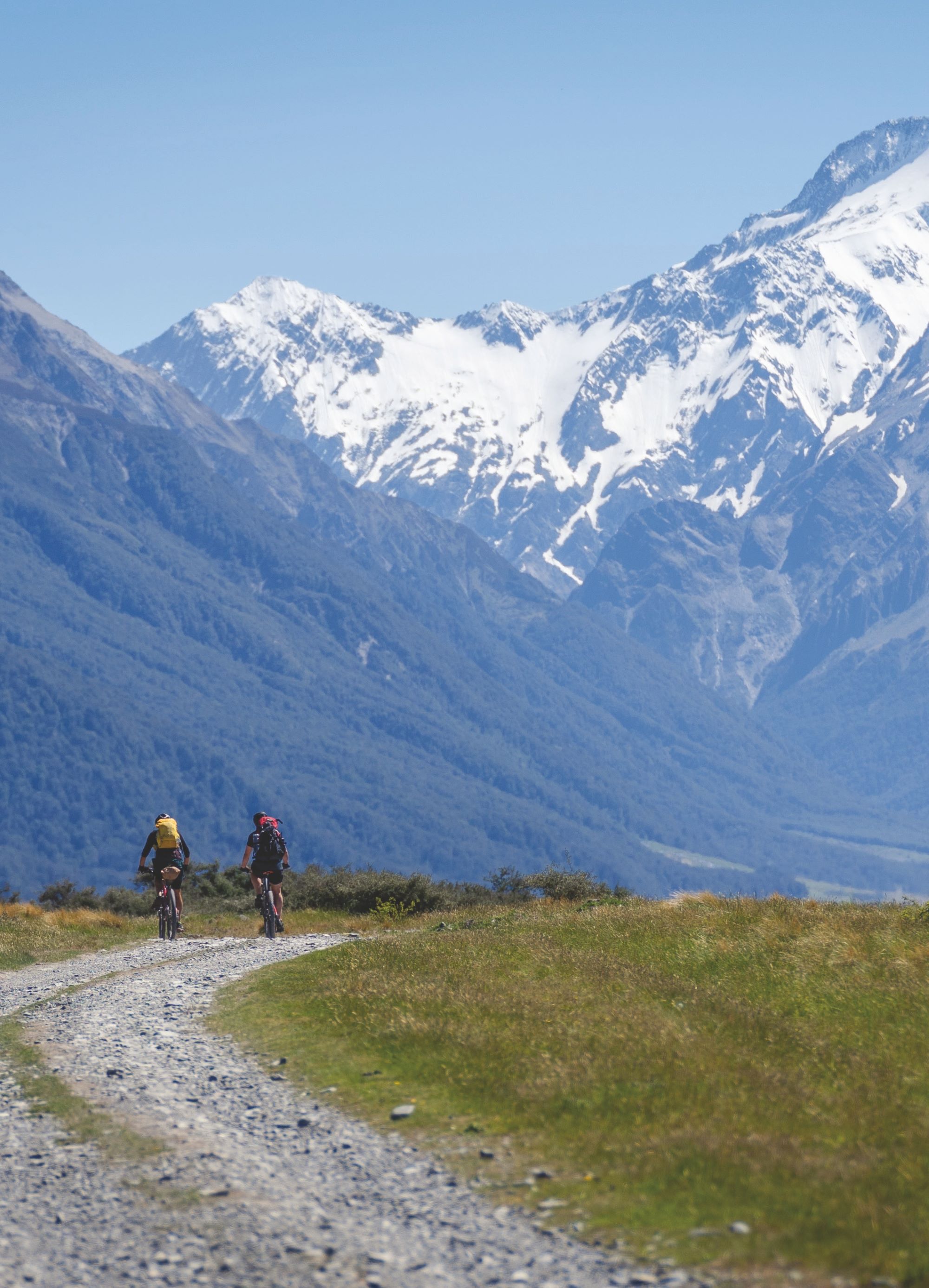
After everything I’ve been through, the privilege of being in this valley on a clear moonlit night with my bro and my mates, is not lost on me. What a way to turn 40.
The final, grassy river flat has us surrounded by a chain of snowcapped peaks, and it’s a pleasurable bit of riding after the last couple of hours. We all feel the relief at this point, roaring with laughter when Brion suddenly goes over the bars, courtesy of a camouflaged hole. Elcho Hut comes in to view, stoked. The evening is spent glassing for Tahr, taking pictures, swatting sandflies and spinning yarns. We are an eclectic mix of blokes, so the conversation topics are wide ranging to say the least.
I break away from the boys for a bit, camera in hand, and hobble around on the riverbed. As much as I want to enjoy the campfire yarns, I also want a quiet moment to enjoy what’s around me, and reflect on where I’ve come from. It’s been a wild year. I always thought spinal injuries happened to those at the pointy end of the sport. Truth is, we risk an injury of this magnitude every time we swing a leg over our bikes. Despite the issues I still face today, I’m immensely grateful that the injury wasn’t worse, and proud that my body has been able to repair itself to this point. I can’t ride the kind of trails I used to enjoy, and on a bad day, that fact hurts…. But this injury (and this trip) has taught me that just being out in the hills surrounded by good friends and family is what matters most. After everything I’ve been through, the privilege of being in this valley on a clear moonlit night with my bro and my mates, is not lost on me. What a way to turn 40.
“We don’t know how lucky we are mate” - Fred Dagg
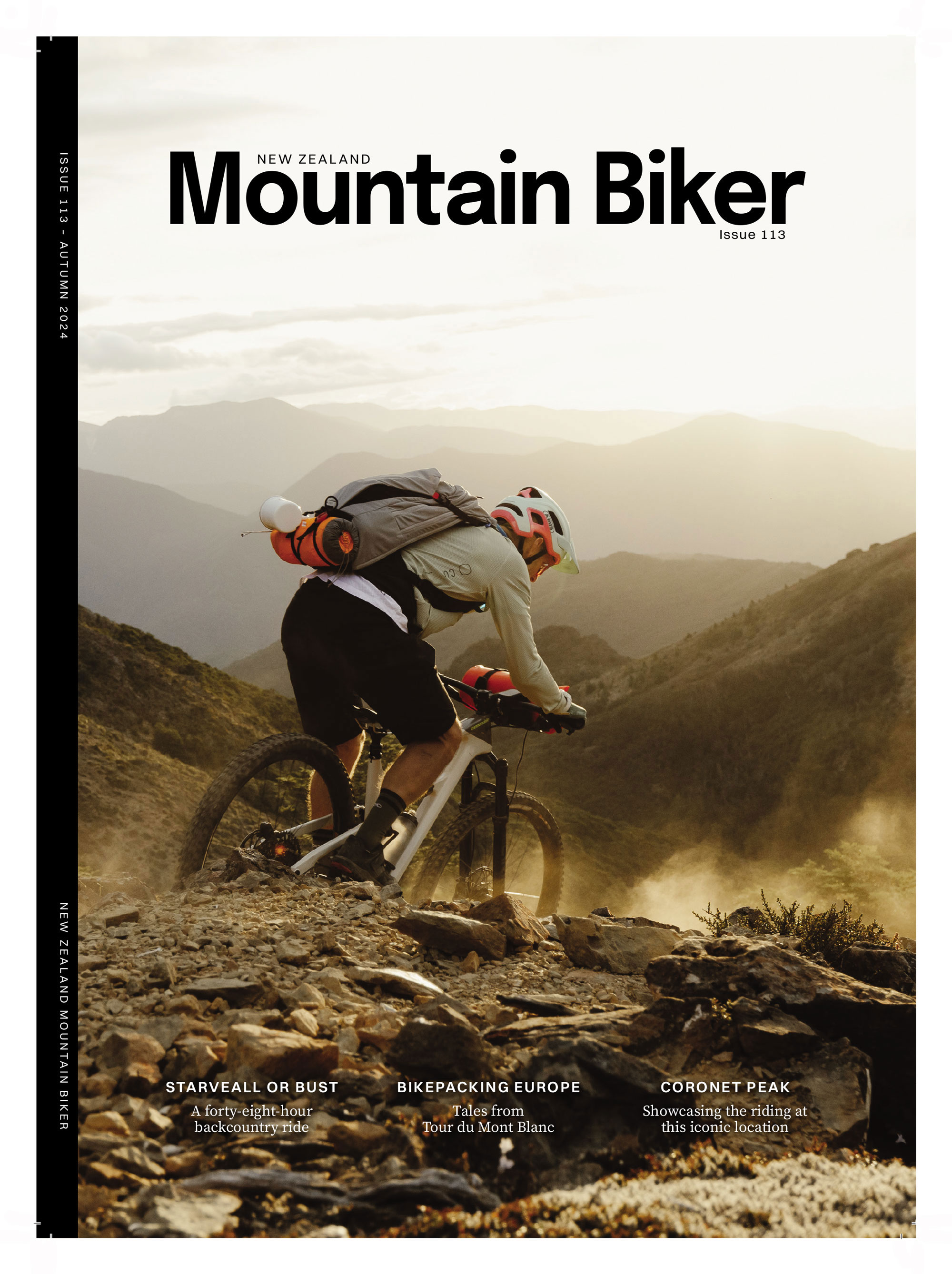
Keeping it grassroots: Queenstown Mountain Bike Festival
Words & Images Riley McLay
CLOSE YOUR EYES. DREAM OF A PLACE BRIMMING WITH ADVENTURE, SET AGAINST ONE OF THE MOST STUNNING BACKDROPS YOU’LL EVER SEE. A PLACE WHERE JAGGED CLIFFS BORDER AN ADRENALINE- PUMPING PLAYGROUND FOR ALL OUTDOOR THRILL SEEKERS. WHERE DEEP BLUE RIVERS MEET AND THE SUN GLOWS LIKE LIQUID GOLD, ECLIPSING THE SURROUNDINGS. A PLACE WHERE THE HARDEST CHOICE IS PICKING FROM A NEVER-ENDING LIST OF SEAMLESSLY FLOWING TRAILS SCULPTED INTO THE HILLSIDE. A “YES!“ TOWN, WHERE A DEEP-ROOTED PASSION IS SHARED FOR ALL THINGS TWO-WHEELED. EVERY FACE YOU MEET RECOUNTING A UNIQUE TALE OF HOW THEY FOUND THEIR WAY TO THIS UTOPIA. ALL AWAITING THE ACTION-PACKED EXCITEMENT THAT COMES WITH THE QUEENSTOWN BIKE FESTIVAL; THE CELEBRATION BOLDLY MARKED ON CALENDARS NEAR AND FAR.
Finding its foundation with pioneering endeavours like bungee jumping and jet boating, Queenstown embodies an enduring spirit that locals have embraced, whilst continually pushing the boundaries – and this remains true today. In the winter months, the sight of snow blanketing the Southern Alps was the perfect way to bring the town’s inhabitants together. However, this was fleeting, and at the first sign of summer, white powder would be exchanged for golden dust. Similar to the miners who once explored the region, mountain bikers found the Whakatipu Basin an ideal place to chase their own gold- dust dreams. As the sport gained popularity, it became increasingly easier to grow this once-niche activity into the all-encompassing community that exists today, ultimately resulting in Queenstown’s transformation into one of mountain biking’s meccas. With a range of trails catering to everyone from the novice mountain biker to the visiting pro, wider Queenstown can boast six bike parks – three of which are lift- assisted – and an unbeatable après-ride scene. What was once known predominantly as a winter adventure hub has quickly become a world- renowned destination for all things biking.
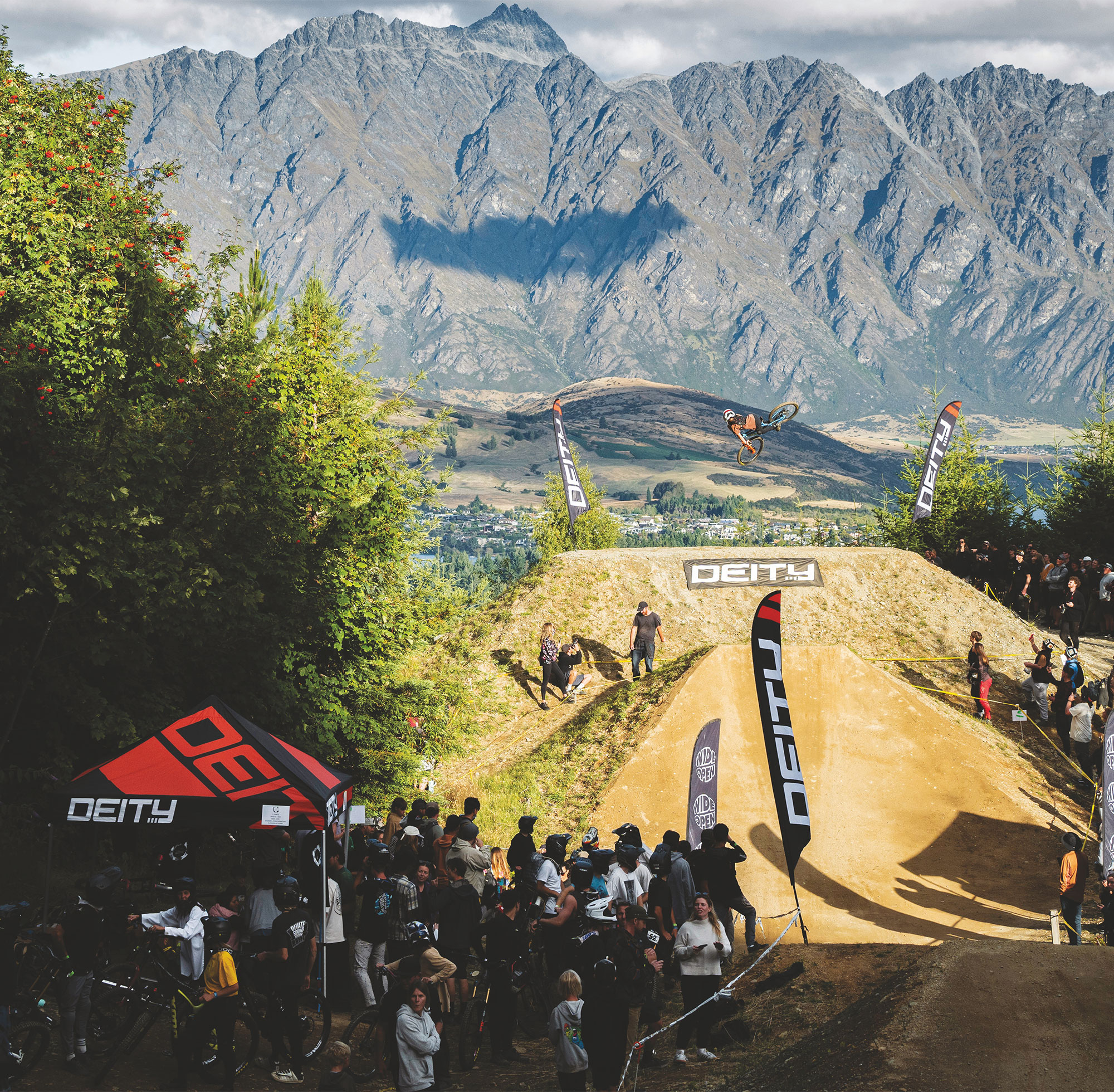
Growing up in this alpine paradise has allowed me to witness first-hand the expansive growth that this once-sleepy village has undergone in recent years.
The quintessential peak of the summer season for the resort town is met with the arrival of the Queenstown Bike Festival. It’s almost cliche to say, but the whole atmosphere of the town erupts into a celebration of the mountain bike community. The Queenstown Bike Festival is an annual celebration of various facets of cycling in the area, including races, competitions, and other two- wheeled gatherings. The festival, organised by the Queenstown Mountain Bike Club, has received widespread acclaim each year – captivating the attention of those who may not have been initially interested in biking, while also spotlighting the mountain bike community to a global audience. In the early years, events like the Dirt Masters DH managed to do this effortlessly by catching any last-minute spectators that may not have had the festival on their radar. The race had riders finishing right in the middle of town, down the infamous Brecon Street stair set. Racers were always met with a round of applause, especially if they tried to test their luck and double a set of stairs. The slopestyle, held in the middle of town, was also a crowd favourite. Having a custom freestyle course packed into the centre of town was an impressive achievement, and being able to watch local riders like Kelly McGarry and Conor Macfarlane compete against the best in the world made the spectating even better. Even from its inception, the FMB world tour event was able to attract international competitors to the festival. This, along with the timing of other high level events, like Crankworx Rotorua, gave Kiwi riders a great opportunity to stack up to the foreign talent making the pilgrimage south. As a young grom, the sheer number of professional riders navigating the town at times felt somewhat surreal. Pulling up to any local trailhead and having a good yarn with your favourite rider dissolved any perceived barriers to connecting with these individuals. It bridged the gap, and fostered the realisation that we are all simply part of the same community. Plus, it’s always a pleasure to admire these athletes tackling the trails and enjoying them as much as you do.
Hosting the event solidifies Queenstown’s place on the mountain biking map, making it a dream destination for those wanting a bike- oriented holiday as well as those wanting to test their skills on the variety of trails on offer.
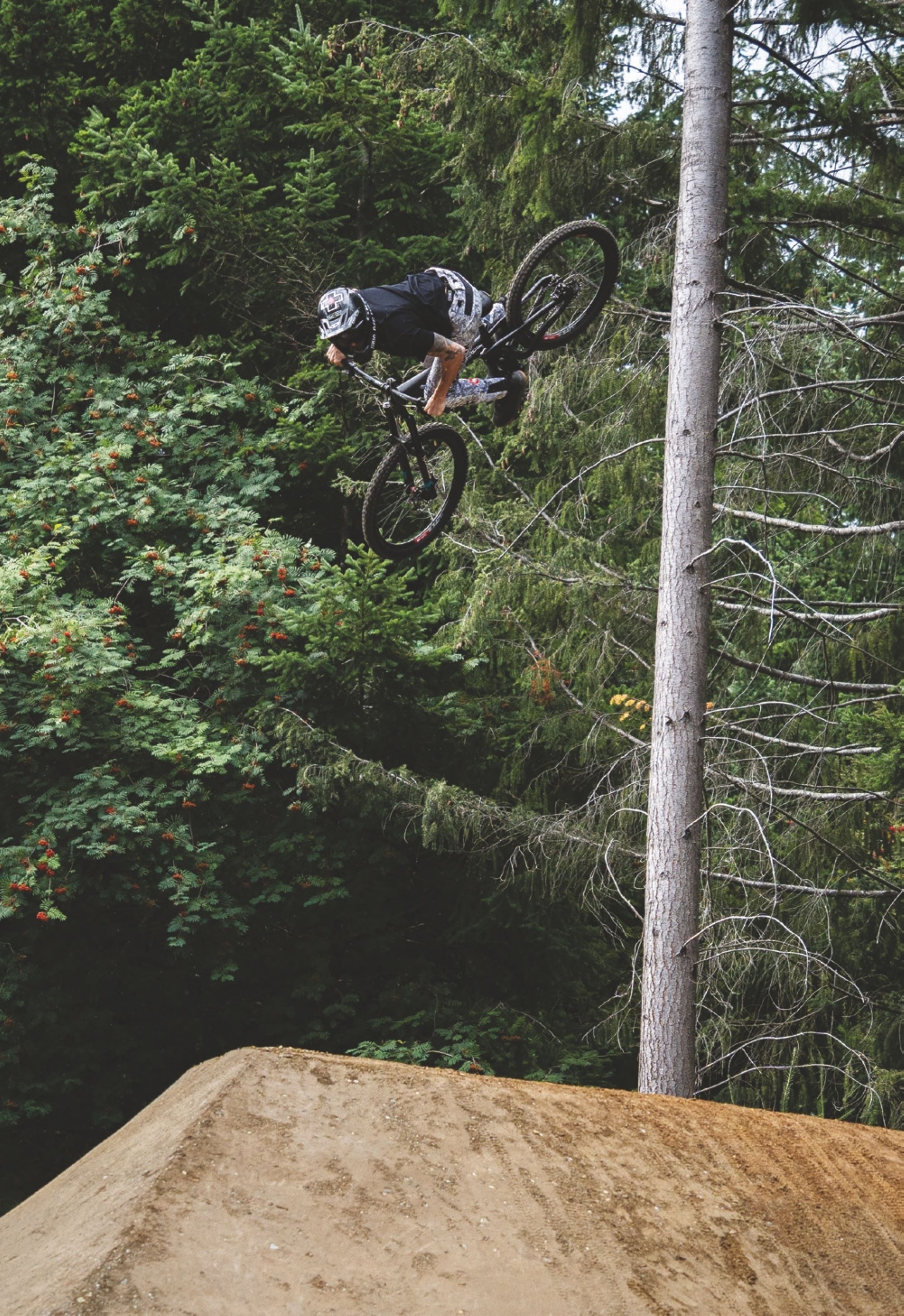
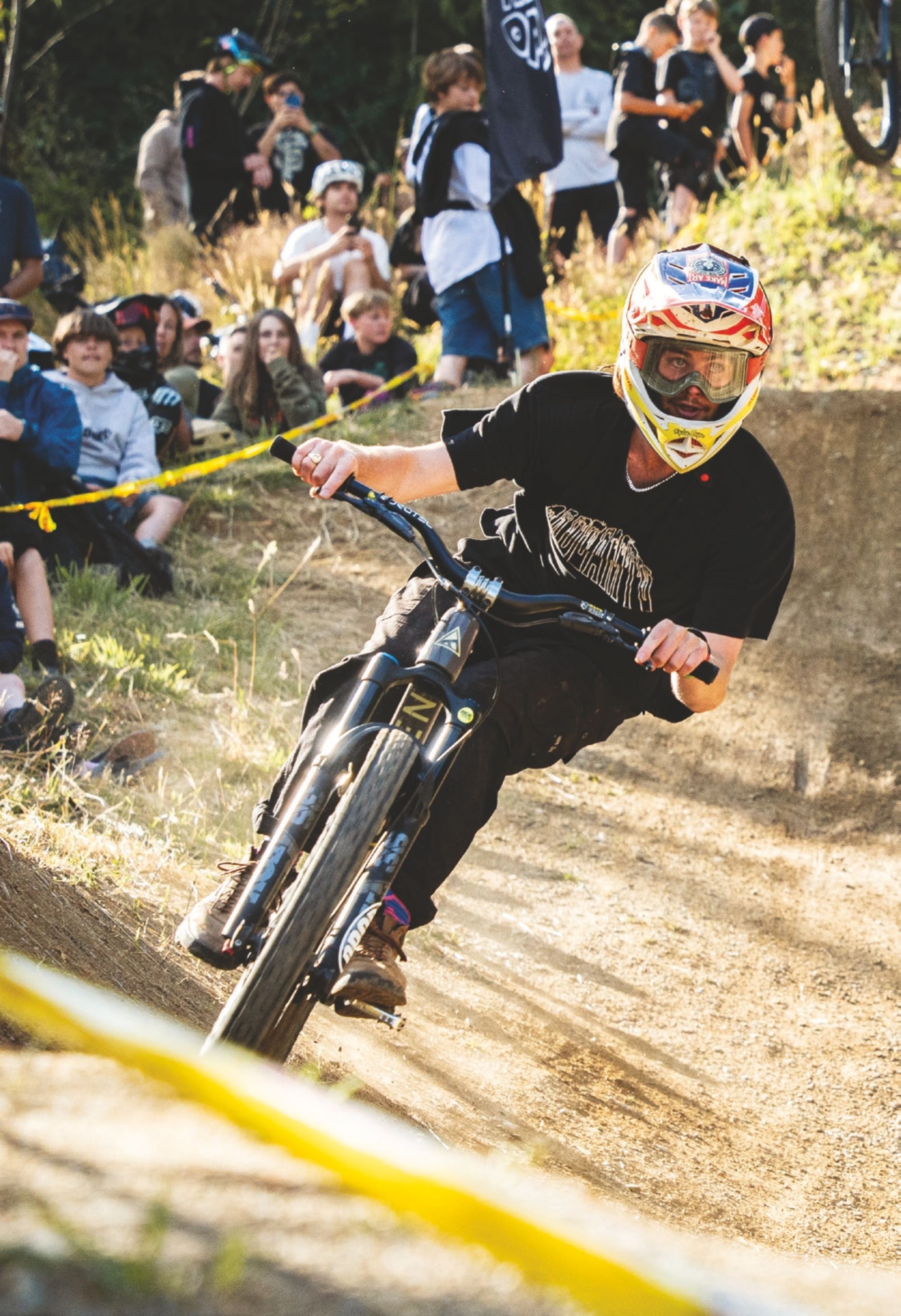
The festival returned this past January with almost double the attendance compared to previous years. Its popularity was evident to see during this time, given the abundance of bikes strewn across the CBD and the amount of dust-covered patrons pouring out of local cafes and pubs. I had to take a step back and acknowledge how far the event had come, considering the number of people living outside of town who were making the journey for the festivities. Observing not only 3 8 New Zealand Mountain Biker the festival but the town’s ability to attract riders ranging from casual to pro levels, is a testament to the quality of the riding here.
This year’s iteration of the festival has evolved significantly since its inception, now hosting over 30 different events over its 10-day duration. As well as holding spectator favourites like the slopestyle and whip-off, event directors Emmerson and Meagan Wilken want to appeal to a wide-ranging demographic of mountain biking disciplines. The introduction of more family-friendly events such as the pump track and dual slalom races, invite riders of all ages to compete, learn new skills and, most of all, create long-lasting memories for the future. The addition of the likes of the social gravel bike ride also covers an often overlooked side of the scene. The emphasis on inclusivity carries over to the organisational side of the festival; “We are always overwhelmed with the amount of people that come out of the woodwork to lend a hand in any way they can,” says Emmerson. The effectiveness of the ‘many hands make light work’ mentality not only extends to the 100- plus volunteers, but also to the riders involved in the events who also do their bit to make sure the festival goes as smoothly as possible.
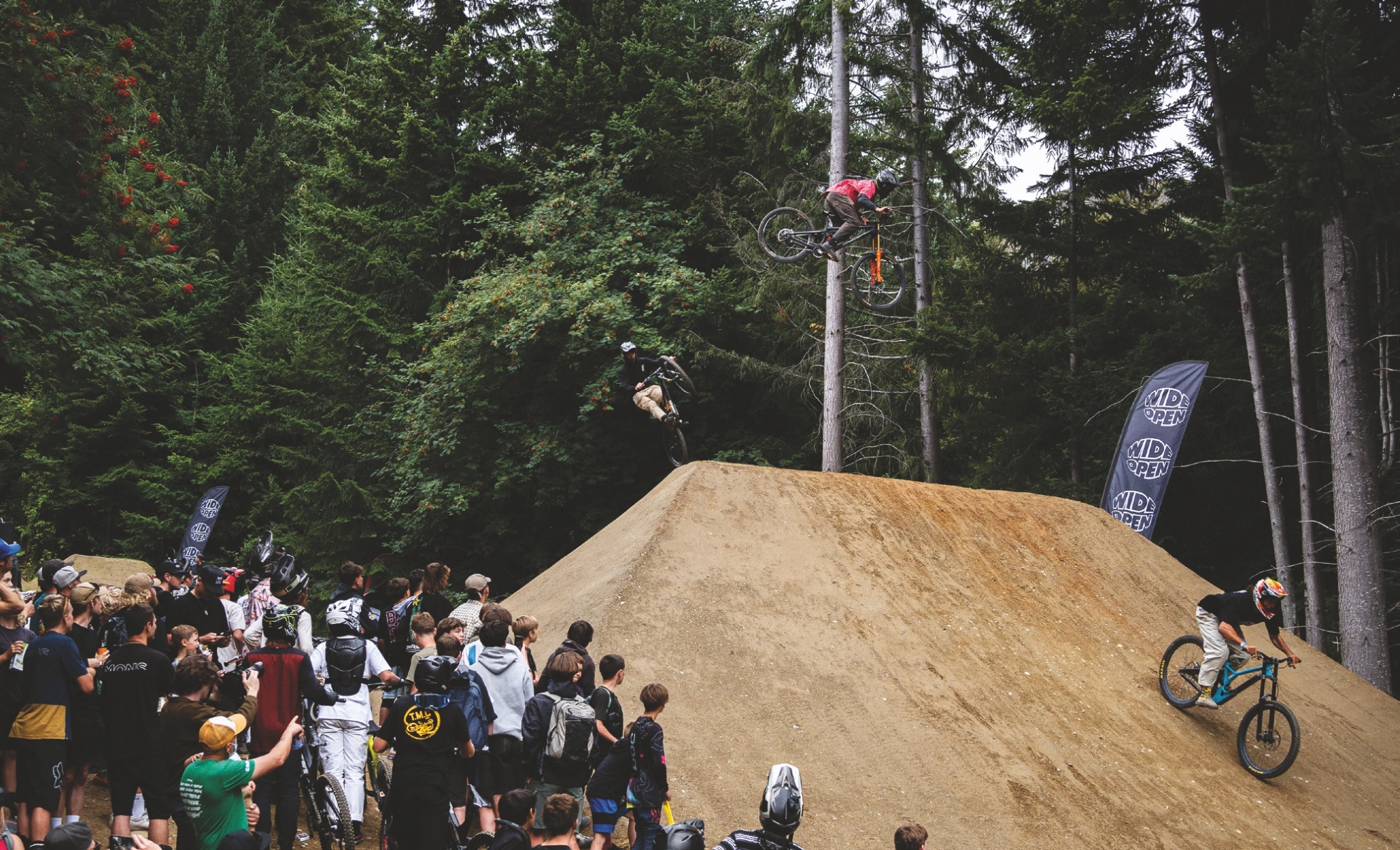
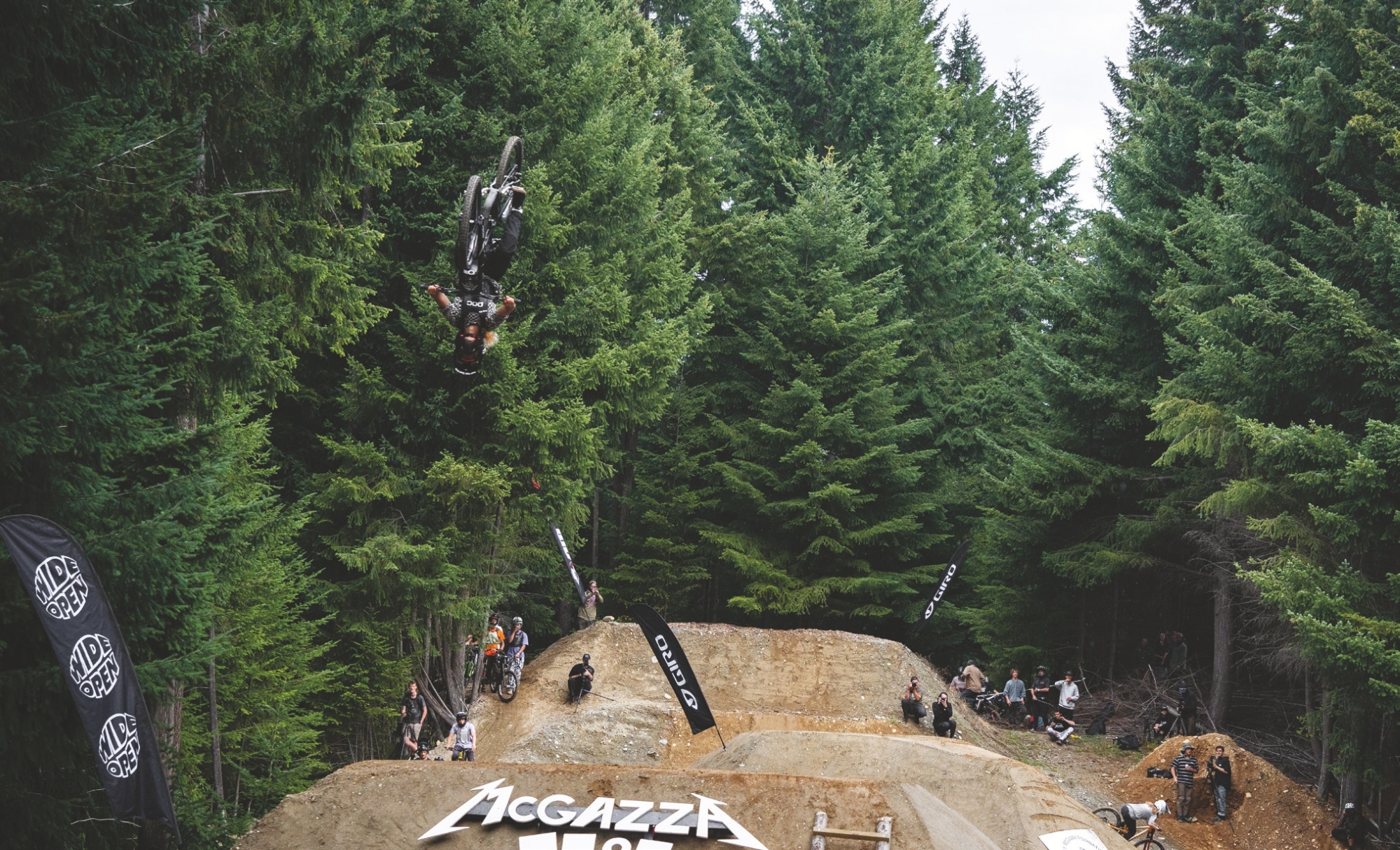
It was very empowering to see Kelly’s legacy continuing to inspire not only a new generation of male riders, but female riders as well. It was remarkable to see the highest number of female riders ever participating in the McGazza Dream Jam, with the standout moment being Robin Goomes’ backflip on the main hit, sending the thousands-strong crowd into hysterics.
The Queenstown Mountain Bike Club’s devoted efforts to fine-tuning the existing trail infrastructure, and creating high level facilities, means riders are offered the best opportunities for progressing their skills. This in turn enables riders to progress their skills more rapidly while still being in a safer environment. This was most evident with the impressive battle in the junior men’s category in the slopestyle event at the Wynyard Jump Park between local groms, Riley Baker (12), and Angelo Decadi (13). Both showed a level of maturity in their riding well beyond their years and let the scene know what is to come in the future. There was also an impressive showing from young phenom, Camden Rutherford (14), taking the overall win in the men’s category at the Skyline Whip Off. To say Camden can whip a bike is an understatement, with some of his whips bringing his back wheel up to his head! He definitely showed up a pro rider or two in attendance.
The improving mountain bike facilities in Queenstown benefit not only the youth rider contingent, but also the ever-growing female scene. As the number of female riders in mountain biking reaches new heights, the Queenstown Bike Festival is committed to fostering female participation while aiding the existing momentum towards progression. The festival wants to build upon the foundation of other local events, like the Future Ground Progression Camp, to create an environment of inclusiveness and inspire more female riders to venture outside their comfort zones and give freeride and freestyle competitions a go. In 2023, the Queenstown Bike Festival Slopestyle was the first-ever female FMB World Tour event hosted in New Zealand. It was a long time coming, with many female pro riders like Robin Goomes and Harriet Burbidge- Smith already using the resort as their training base during the Southern Hemisphere summer. This year’s bronze event, the first event of the FMB season, was used as a stepping stone for riders to gain enough points to compete in the Diamond female slopestyle event being hosted at Crankworx Rotorua. The lure of this chance to compete at a higher level encouraged an increase in participation and gave younger female riders an excellent opportunity to ride right beside their idols, giving them first hand exposure of what these events are really like. The rise in participation was also evident throughout the McGazza Fest weekend of the festival. Seven years have passed since the tragic loss of the freeride legend, yet Kelly McGarry’s pioneering spirit – and his impact on the sport – continue to enhance New Zealand’s standing on the global mountain biking scene. It was very empowering to see Kelly’s legacy continuing to inspire not only a new generation of male riders, but female riders as well. It was remarkable to see the highest number of female riders ever participating in the McGazza Dream Jam, with the standout moment being Robin Goomes’ backflip on the main hit, sending the thousands-strong crowd into hysterics.
The Queenstown Bike Festival’s organisers have their sights set on continuing to provide a fully engaging product for the local and wider bike community alike, whilst maintaining the grassroots vibes that the festival is known and loved for.
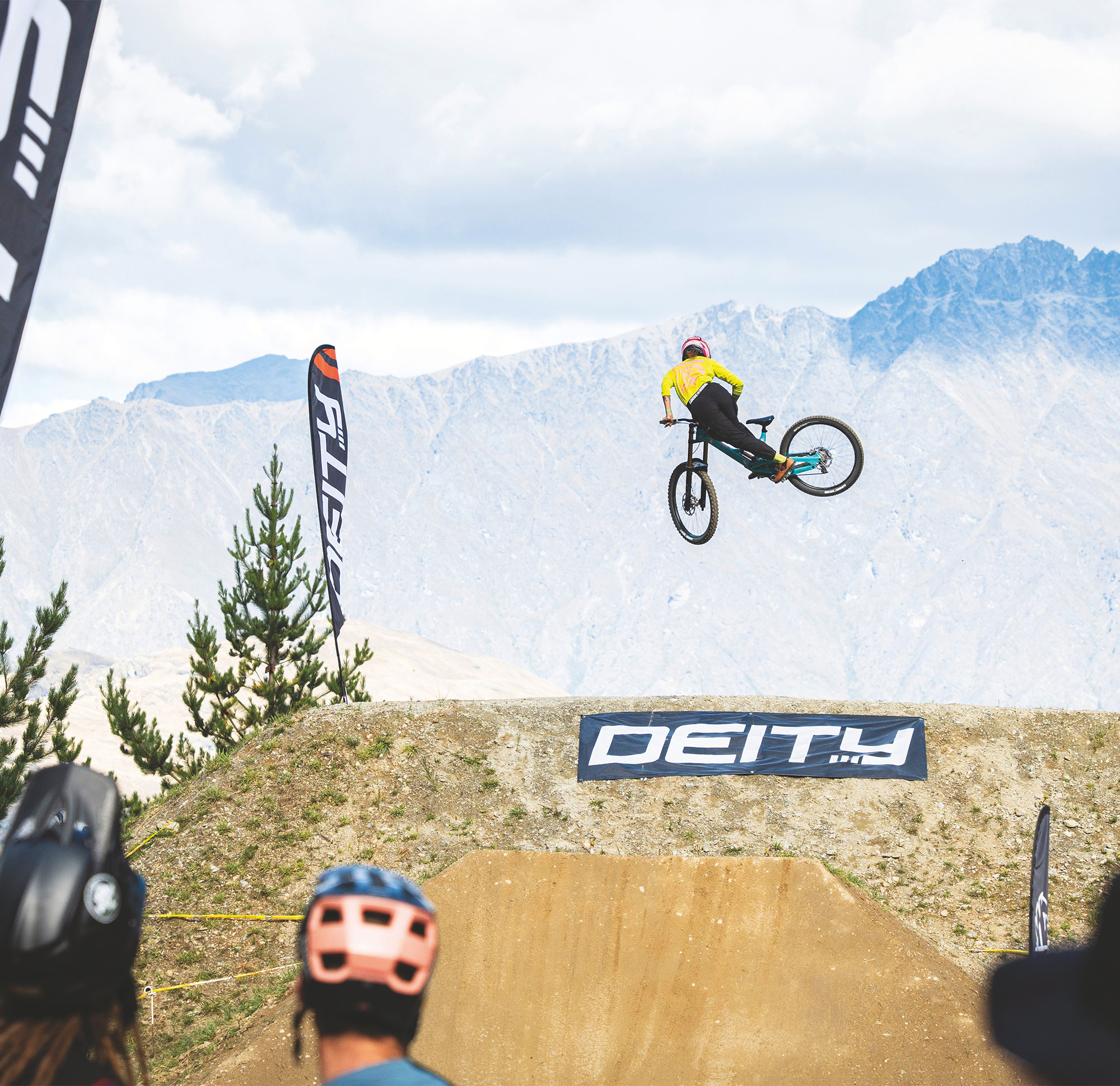
With the vision of the event organisers, and enthusiasm from competitors and attendees alike, the Queenstown Bike Festival looks set to be a jewel in Queenstown’s crown for years to come. In collaboration with the Queenstown Mountain Bike Club, there are a number of exciting ideas in the pipeline, including a long-term plan to have a permit Slopestyle-specific facility, similar to the one constructed in the Queenstown CBD years ago. This, along with the increase in participation numbers, involvement from the biking community at large, and diversity of events held throughout the duration of the festival, ensures not only mountain bikers and cycling enthusiasts benefit from it, but the wider community of Queenstown does too. Hosting the event solidifies Queenstown’s place on the mountain biking map, making it a dream destination for those wanting a bike- oriented holiday as well as those wanting to test their skills on the variety of trails on offer. The Queenstown Bike Festival’s organisers have their sights set on continuing to provide a fully engaging product for the local and wider bike community alike, whilst maintaining the grassroots vibes that the festival is known and loved for. With the plethora of young riding talent who call Queenstown home, combined with the high level of international pros who frequently visit our shores, it’s easy to see how a festival that brings the community together has become such a highlight on the summer calendar. As someone who has grown up within the Queenstown mountain bike community, I’m excited to see the pioneering mentality of the area continue to flourish, and to see how it will shape the future of the festival in years to come.

Tour du Mt. Blanc
Words & Images Riley McLay
Imitation can be a dangerous thing. As a bike hungry teenager, I spent many of high school days hiding behind a computer screen watching the latest mountain bike edits and documentaries. One of the most noteworthy was a specialized bikes mission where ‘Matt Hunter Tours Mont Blanc’. In the video, Canadian Freeride Legend, Matt Hunter, takes a crew to attempt the Tour Du Mont Blanc: A 174 km loop that fully circles the breathtaking mountain that is Mont Blanc. The Tour Du Mont is a spectacular but challenging multiuse alpine route, where hikers and mountain bikers traverse three different countries through some of the most stunning scenery the Alps has to offer. I have always been captivated with the riding in the Alps. High speed single trail that cuts through the Mammoth landscape with ease. This is shown best by Matt and the crew as they make the Tour Du Mont Blanc their own. The way they showed off the different flow and rough terrain made it something I had to tick off my bucket list. Lucky enough for me, I had chosen to spend the 2023 New Zealand winter vanlife-ing around Europe, taste testing as much of the riding it has to offer. The Euro Tour eventually led us to one of the mountain biking meccas: Morzine and the Portes Du Soleil area in France. Reluctant to take a break from the gravity fed action, it was timw to take on the monster. Joining me on this adventure was a good friend of mine, Fynn Thompson. Fynn, a carpenter from Queenstown who has represented New Zealand in triathlon, is no stanger to getting into the pain cave. A few weeks prior, Fynn had completed the hope 1000, an extremely difficult bikepacking route traversing from one side of Switzerland to the other. The only bikepacking experience I had was completing the Old Ghost Road a couple of years prior. With the Tour Du Mont Blanc having 8, 040 metres of climbing, we knew it was not going to be a walk in the park. Especially with the recommended time to complete the loop being five days. With our tight schedule, we decided to attempt the loop in three days.
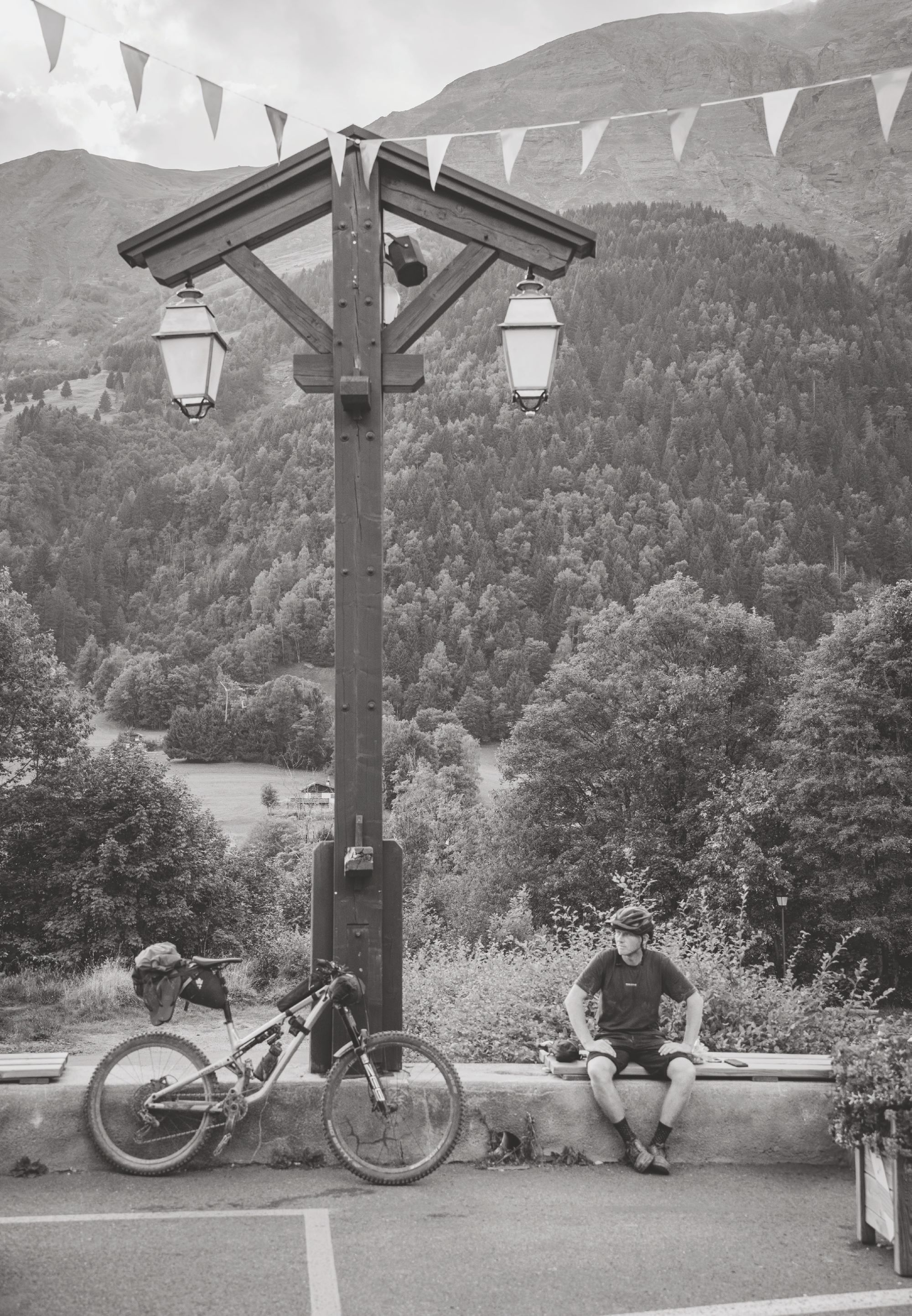
Day One
We started our journey first thing in the morning in the Quaint French Town of Les Houches, roughly a 45 minute drive from Morzine. Les Houche is a ski resort with tree lined slopes that are combined with impressive views of the Mont Blanc Mountain Range and the Chamonix Valley.
Our weapons of choice for this mission was something of an exercise in ‘run what you brung’. We had only brought one bike each from New Zealand to tackle anything Europe had to throw at us. Fynn was running a 170mm Commencal Meta mullet and I was on a 160mm full 29er Marin Alpine Trail. Not your traditional bikepacking rigs, but the extra travel would definitely come in handy. Fynn was also running three different bike bags on his bike (on the bars, under seat, and top tube) whereas I had elected to run just a bar bag and a 50 litre hiking pack. I had run a backpack on my previous bikepacking experience; however, I was going in knowing it wasn’t the most ideal set up as you want to keep as much weight off yourself and on the bike as possible. We also planned on wild camping for the two nights on the tour.
After a quick breakfast and coffee it was time to begin. Our first slight descent into Chamonix would be one of the only times our tyres would touch the sweet smoothness of asphalt. The TMB loop can be ridden in either direction, however we chose to do it clockwise as the climbs are a lot more bike friendly and the downhills are more enjoyable going this way. Reaching the town centre at the base of Mont Blanc would give us a true perspective of the grandness of the size of it. Mont Blanc is the highest mountain in both the Alps and all of Western Europe, with the peak situated at 4,807 metres above sea level. Chamonix also acts as an extremely popular base camp for all the types of alpinism activities that the mountain offers. Chamonix was the last place to grab any supplies, so we decided to have another fuel up at one of the local bakeries. Any opportunity to grab food or water was always taken, as there would be long stretches on the track that would be isolated from civilization. Making sure you are eating and drinking enough water is vital in a mission like this. The weather in the Alps can be extremely varied with scorching temperatures one day and fresh snow on the hills the next. However, we were lucky to be hitting a very settled weather window of clear skies and reasonably light winds. Even with us attempting this at the start of September, the tail end of summer, the temperatures were still hitting the early 30s at the peak of the day.
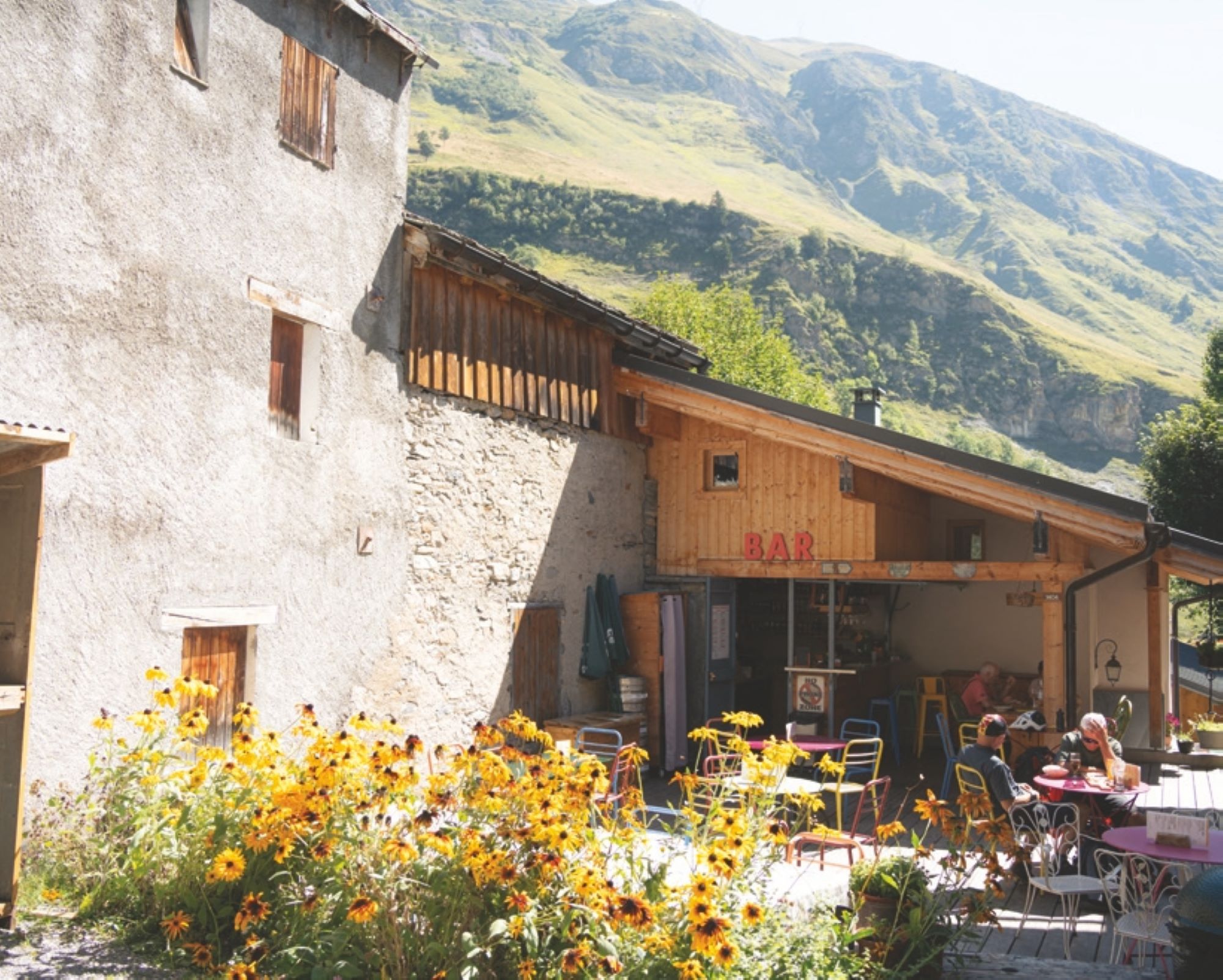
Reaching the town centre at the base of Mont Blanc would give us a true perspective of the grandness of the size of it. Mont Blanc is the highest mountain in both the Alps and all Western Europe, with the peak situated at 4, 807 metres above sea level.
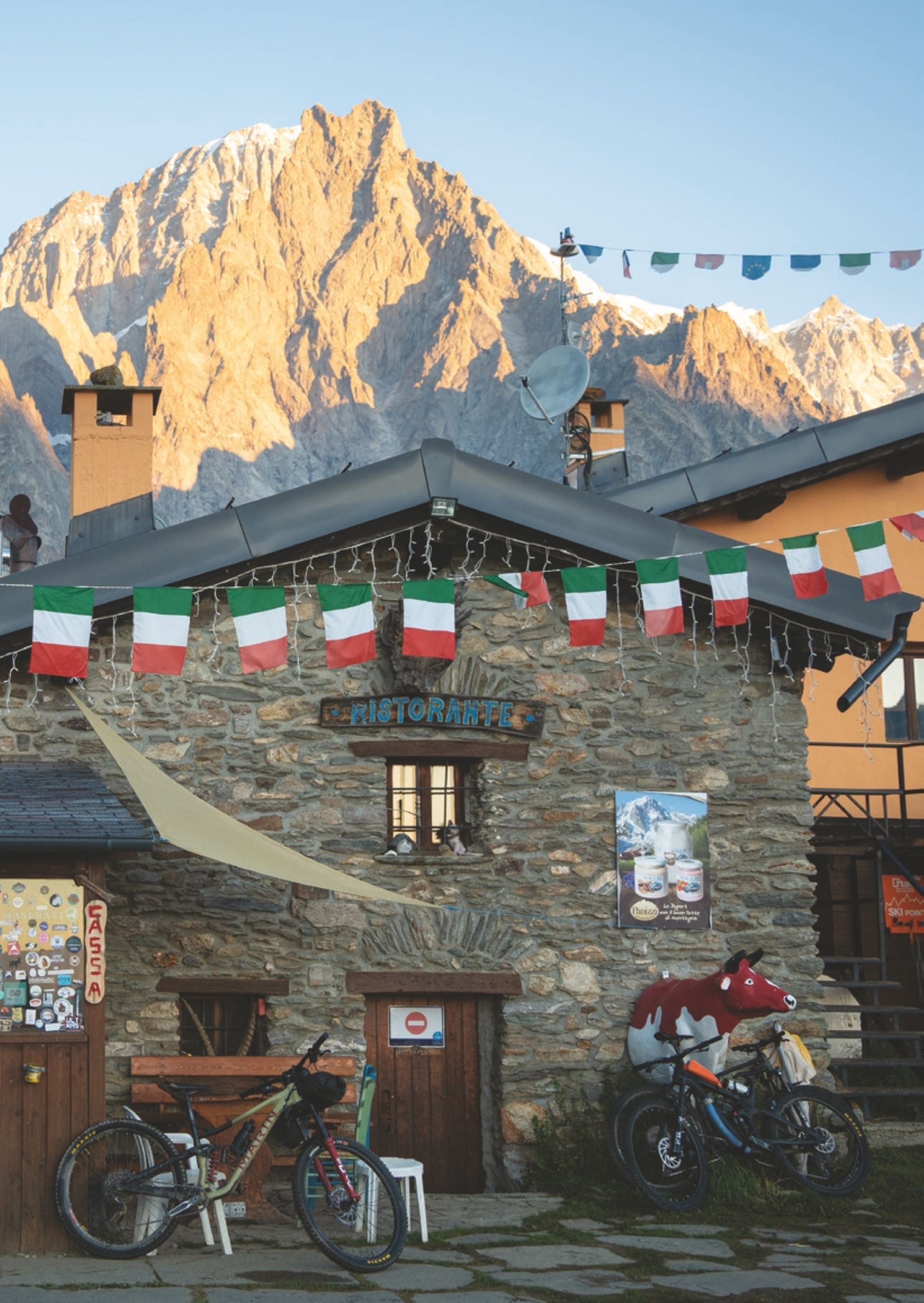
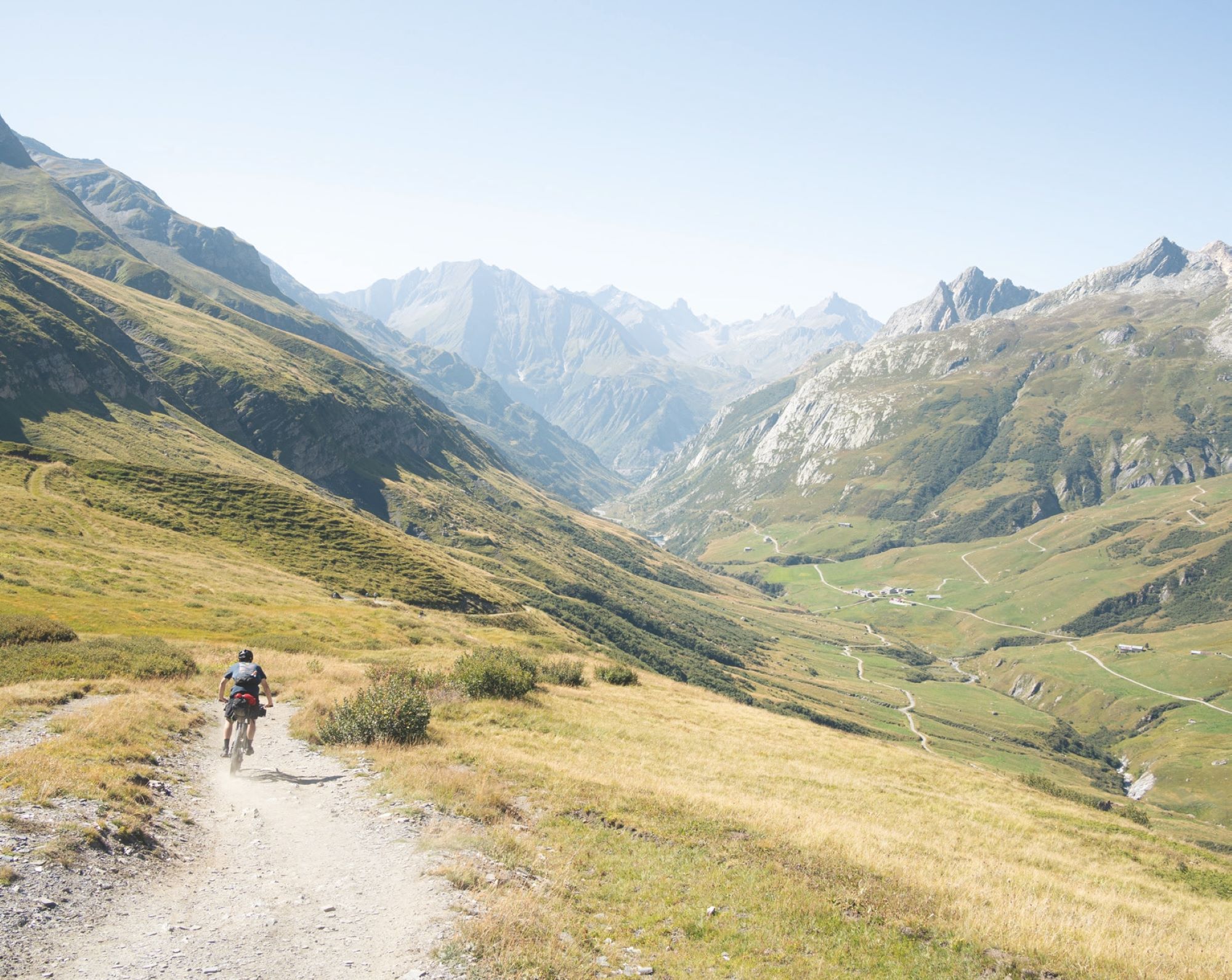
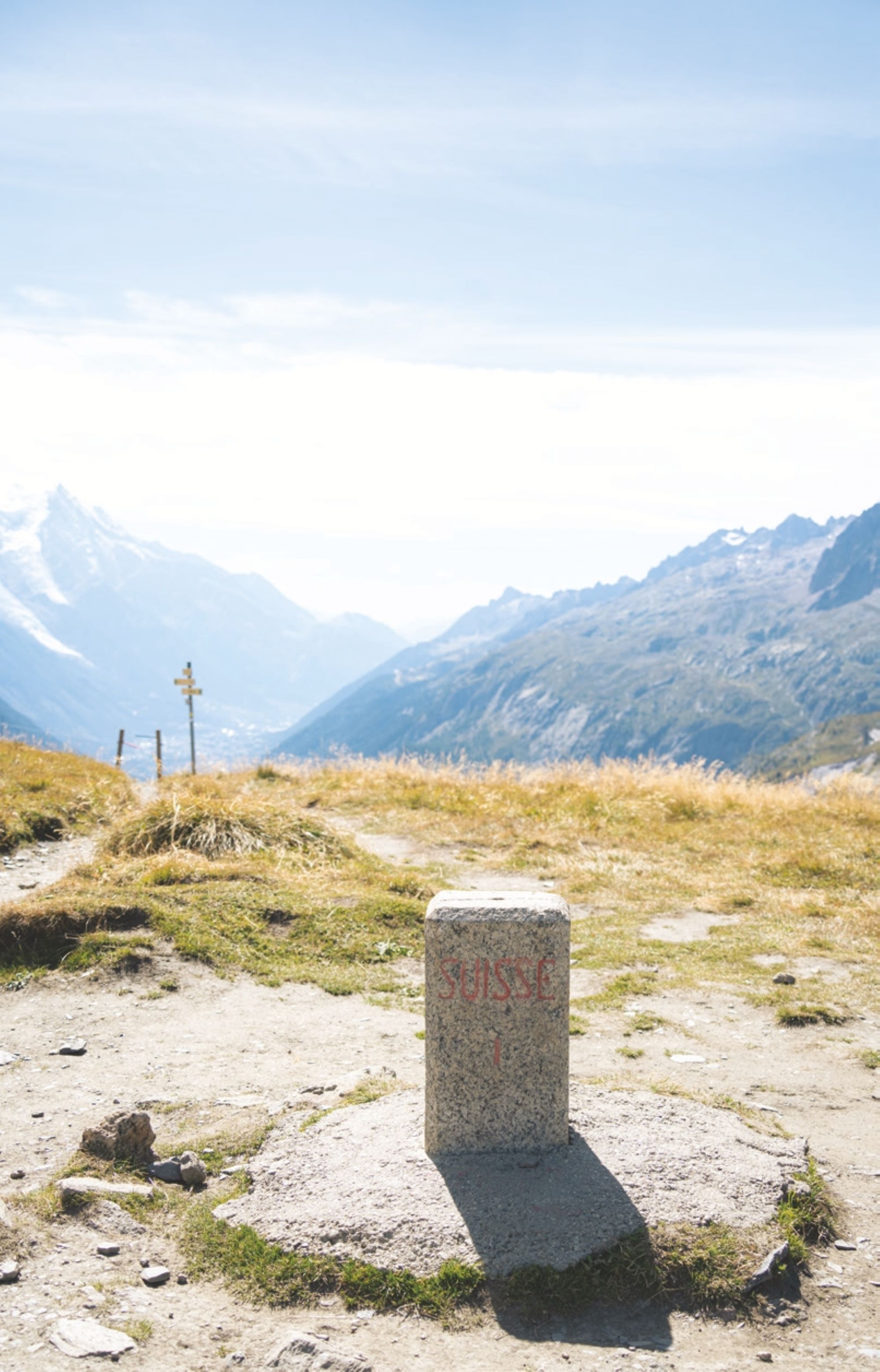
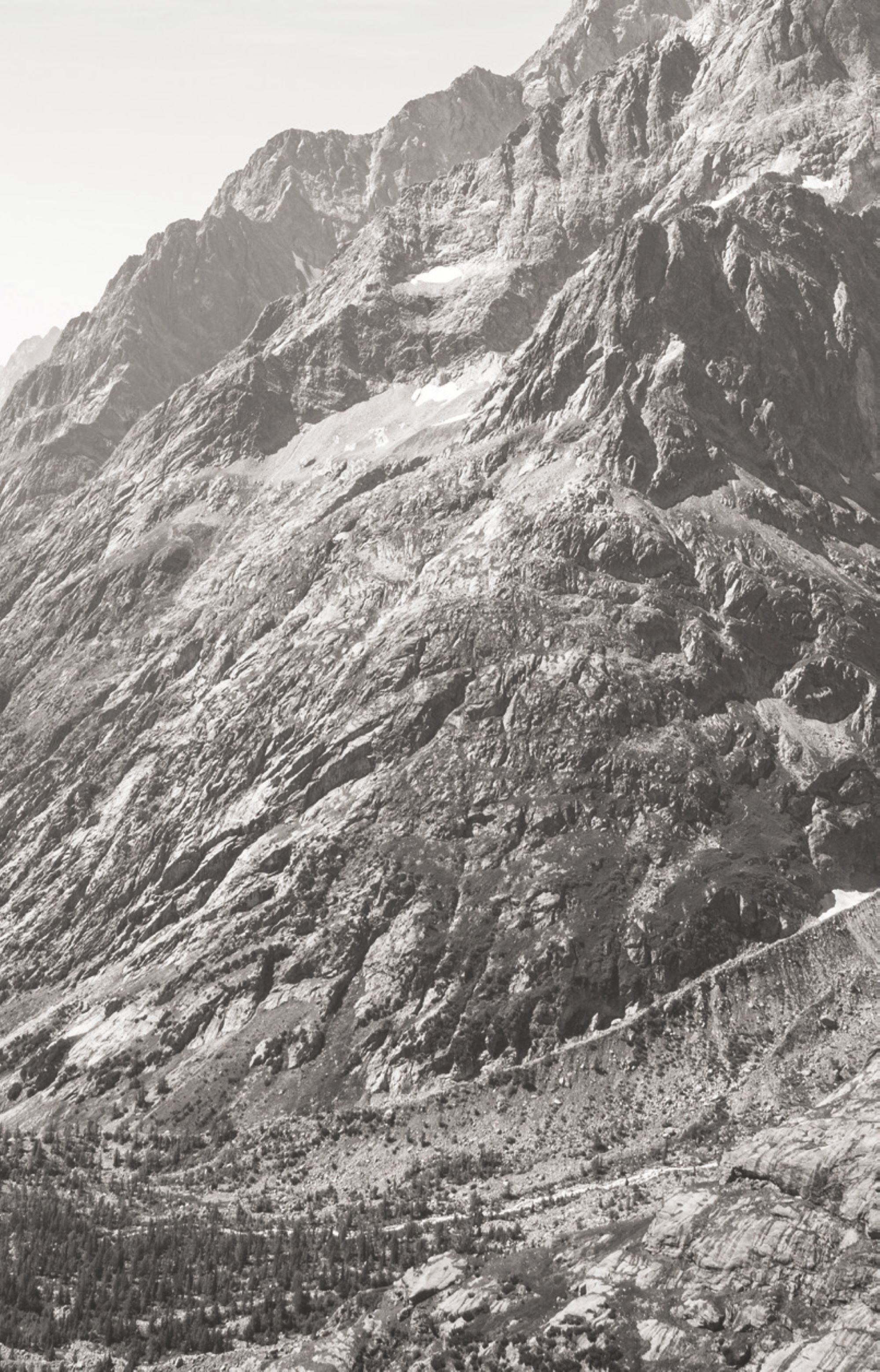
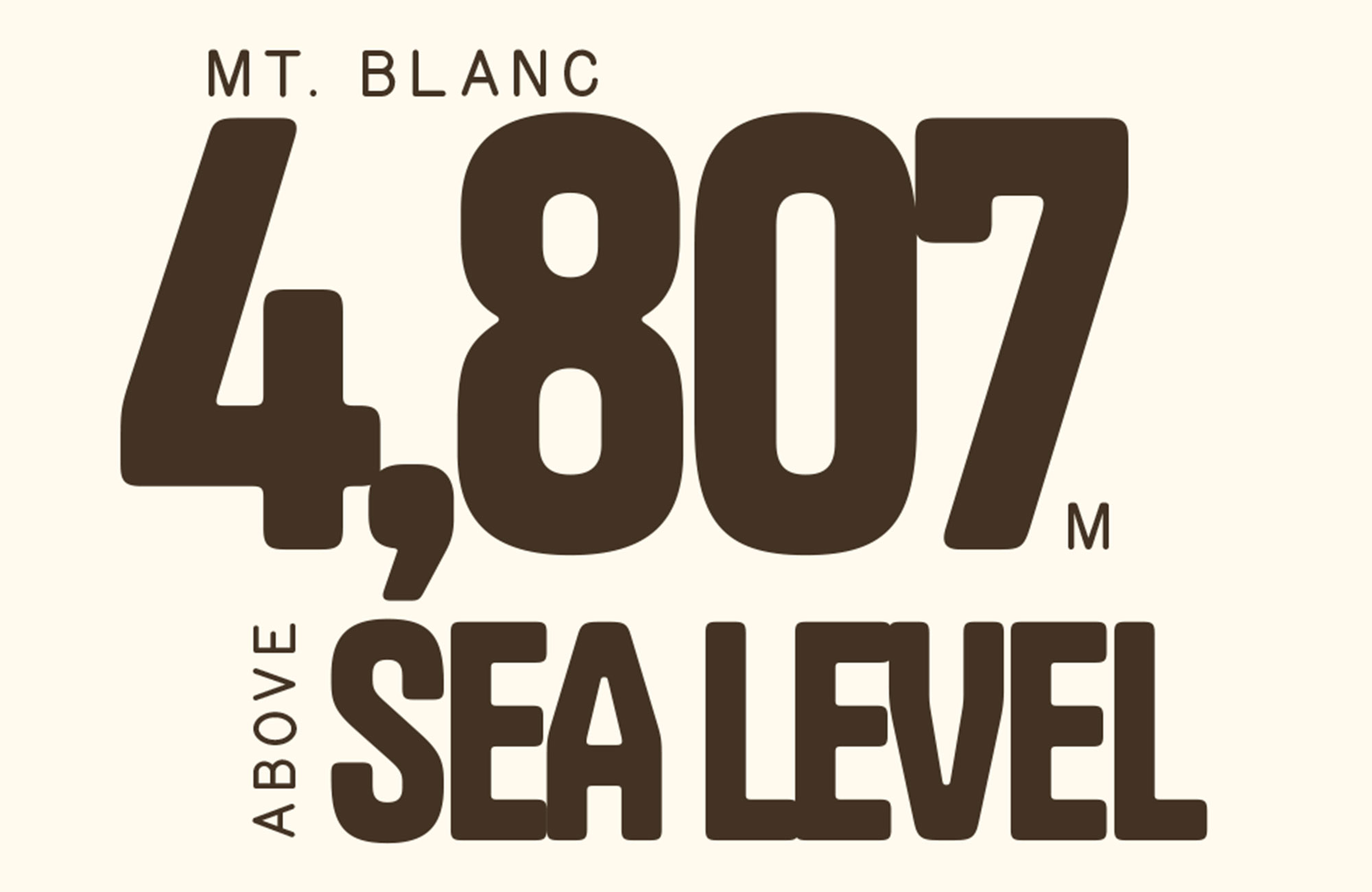
We made our way out of the hustle and bustle and onto the first bit of single track, following the river out of Chamonix for around an hour and a half until we reached the small village of Le Tour. With a chairlift to the top of the ridgeline, Le Tour gave us the only option for any lift assistance on the ride. After a quick discussion, we decided on the purest approach. Proceeding on led to our first big climb, starting on a steep 4WD track following directly under the chairlift. The loose gravel mixed with the gradient was relentless, where it was possible to ride up. It definitely had me rethinking the chairlift decision. Thankfully, the gradient mellowed as it began to zigzag on a harder packed base into the alpine land where local farmers were using the hillsides for summer grazing. The constant ringing of the bells on the cattle added to the atmosphere. Reaching the ridgeline, we approached our first border crossing into Switzerland. This was nonchalantly signified by a tombstone marking the French and Swiss sides of the ridge. No passport checks here. The ridgeline also signified the first downhill of the day. We dropped into a tight rutty-but-flowy singletrack that funnelled us down to the valley below. The flowy meander then switched into an abrupt, increasingly technical drop down to the valley floor. The series of switchbacks would be difficult enough on a normal day’s riding, let alone with us carrying all this gear. As you can imagine, a large descent meant more climbing.
As we pressed up the valley, we switched between singletrack and 4WD roads at a reasonably relaxed gradient. After a couple of river crossings – over some more than questionable wooden bridges – the track began to tighten and become extremely rough. This proceeded for roughly an hour’s hike-a-bike session until the next ridge. We knew these sections were on the TMB as the entire track is advertised to be just 80% rideable. As the sun was setting behind the surrounding hills, we traversed down to the next valley where we tried to find somewhere for dinner. In the small town of Champex-Lac, we parked up at the only restaurant that appeared to be open, right on the shore of the lake. In classic Swiss fashion, we tucked into probably the most expensive chicken burger I’ve ever had but, at that point of the day, money wasn’t something I was worried about. With the last of the day’s light, we made a last push to get another few kilometres down into the next valley before we reached a freshly constructed playground and picnic area. This turned out to be the perfect camp for the night. Clean public toilets and a covered awning to keep away the dew felt luxurious.
Day Two
After a good night's kip, we got straight on the bike and rode roughly eight kilometres up the valley until we reached the village of La Fouly for breakfast. The plan was to just run the local supermarket, however, nothing looked that appealing and, instead, Fynn managed to hunt out a breakfast buffet at the local cafe. All-you-can-eat toast, muesli, and coffee was the perfect carbo loading to start the day.
The day’s first climb started similar to the day before with a nice ascent up 4WD trail, turning to singletrack the higher we went. In the earlier hours of the day, it felt like we were swarmed by the large number of hikers on the track; the TMB is one of the most popular long-distance walks in Europe, with a majority of its singletrack sections only having enough room for one walker or one biker. This meant there was a lot of giving way, which wasn’t exactly a bad thing as an extra breather made the climb more enjoyable. Entering back into the alpine altitude, the heat of the sun really started to beat down. Unfortunately, this climb was totally exposed and there was no tree cover to hide from the sun. Heat and sun stroke were always in the back of our minds, but we made it to the next ridgeline without issue. This ridge also marked our next border crossing into Italy. “Bonjour” suddenly changed to “Ciao”.
The view into the distance now added a new factor to the vista of Mont Blanc. On the Italian side, the many glaciers that hug the higher points of the mountain are more prominent and visible. However, also visible is the amount they have receded back up the mountain, with bare rocky gullies exposing spots once inhabited by glaciers. A quick inhaling of food and we dropped off into the next valley. This is where things got a bit spicy for me. The previous day, I had felt my back brake starting to fade but didn’t think too much of it. When I started to drop into the Italian valley it was pulling straight to the handlebar and after vigorous pumping I was unable to get any bite out of the brake. On closer inspection I could see brake fluid pouring out of my lever and that I must have blown a seal or two. Inconvenient was an understatement. With no bike shop on the route I decided to just run the one front brake for the rest of the trip. Cautiously making it down, I chose to forgo the next section of trail and boost down the access road to save time and rendezvous with Fynn in the town of Courmayeur for lunch. Luckily avoiding the Italian business siesta, we refuelled, and feeling that I was falling behind on the pace I set out first to try and get a head start. Completing the TMB requires a small amount of navigational skills as you can ride large sections of the route without seeing any track markers. These track markers are shown by either a green or yellow square with the TMB logo on the inside. However, in my overheating and fatiguing state, I managed to not consult my map and rode for roughly an hour up the valley on the wrong side of a massive river. Frustratingly, I was forced to backtrack to the only way to cross the river. This rookie error had put me roughly two hours behind Fynn. After a frantic late afternoon push to make up ground, I found myself traversing a ski field with the sun setting in the distance. Fortunately, I came across one of the many refuges scattered across the Alps and made the call to try and get a bunk for the night. These refuges are manned 24 hours of the day in the summer and often have a fully staffed kitchen. The roast beef, peas, carrots and a selection of local bread and cheeses definitely helped me forget about the mishap of a few hours earlier.
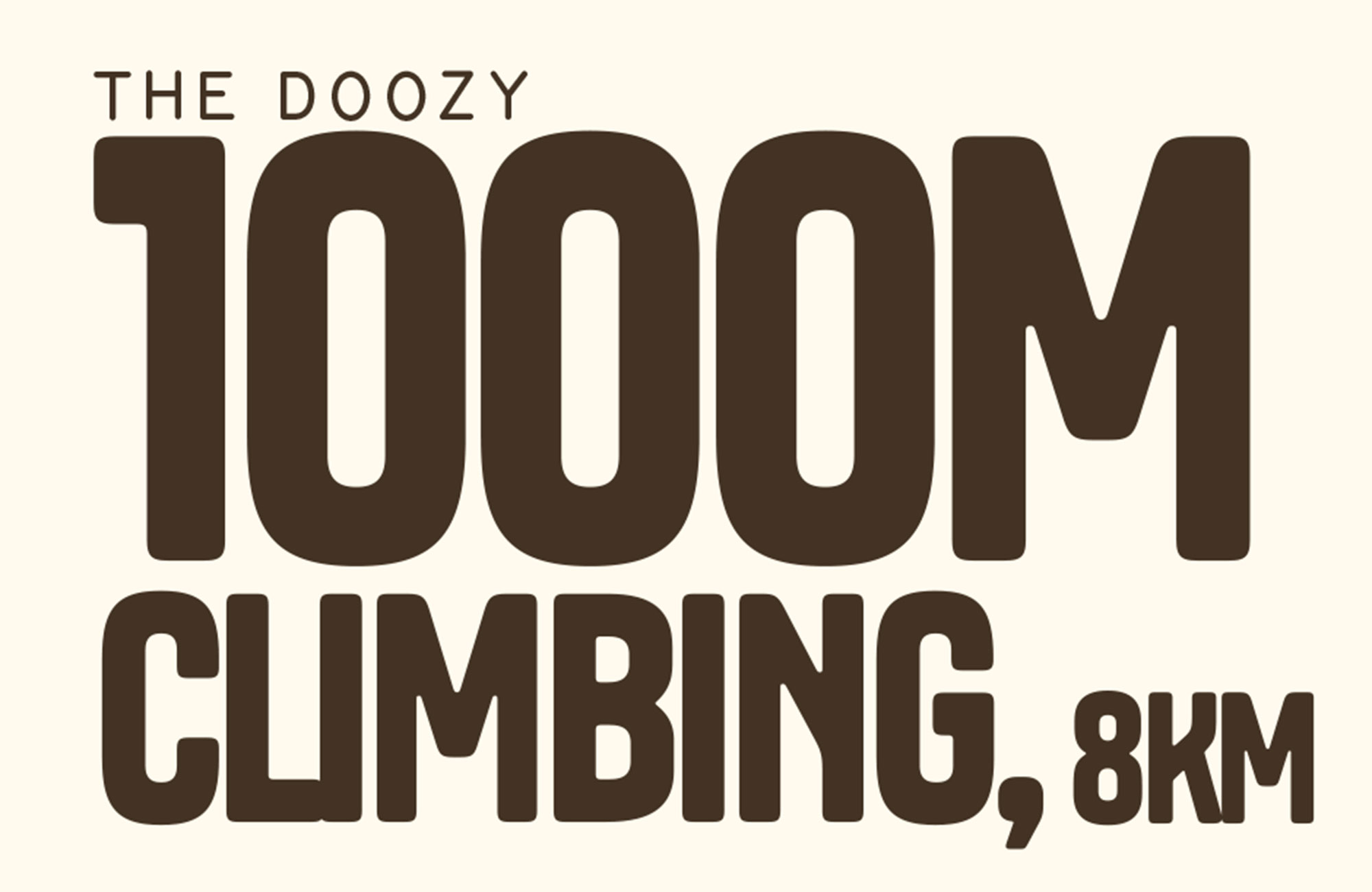
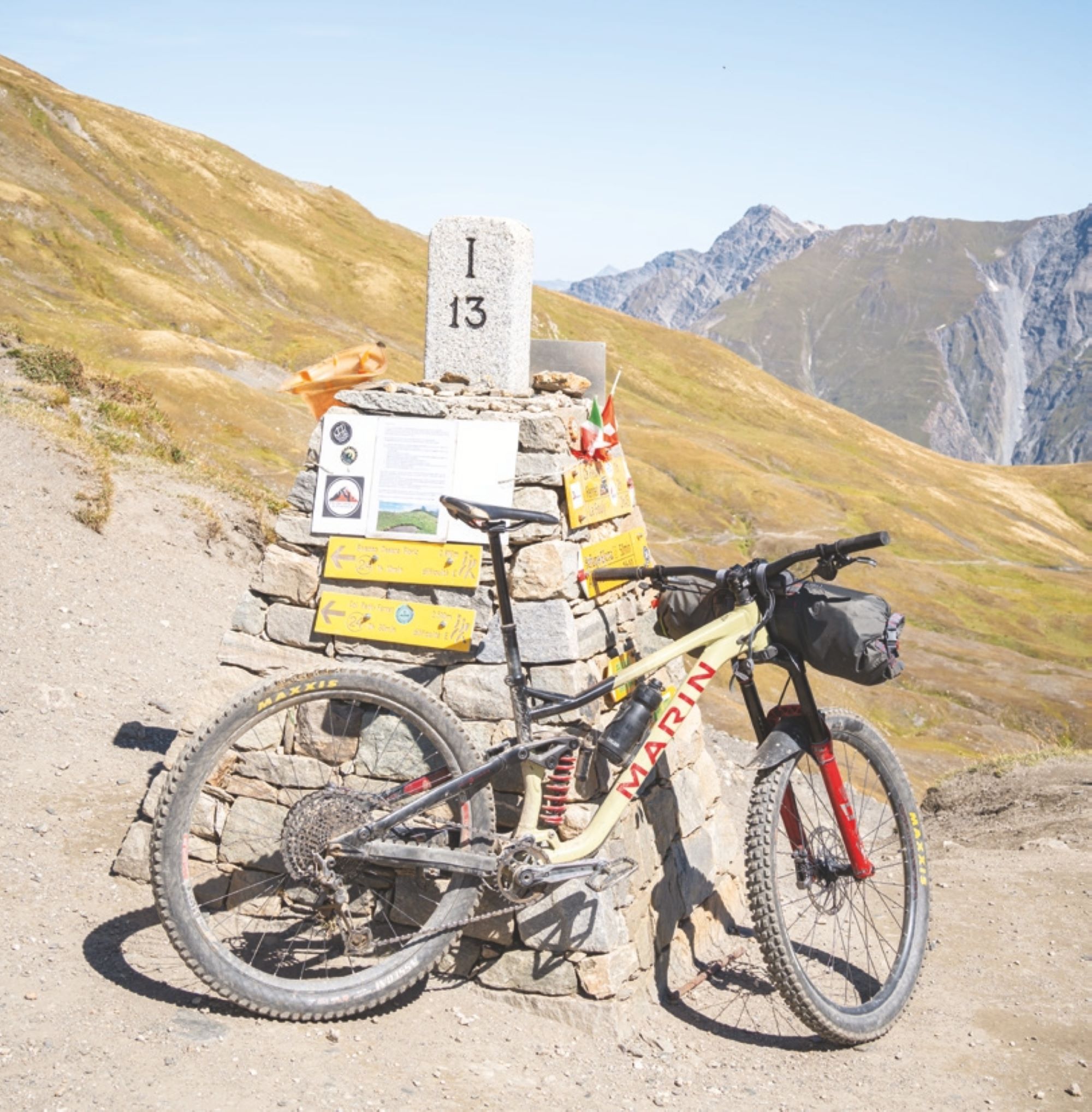
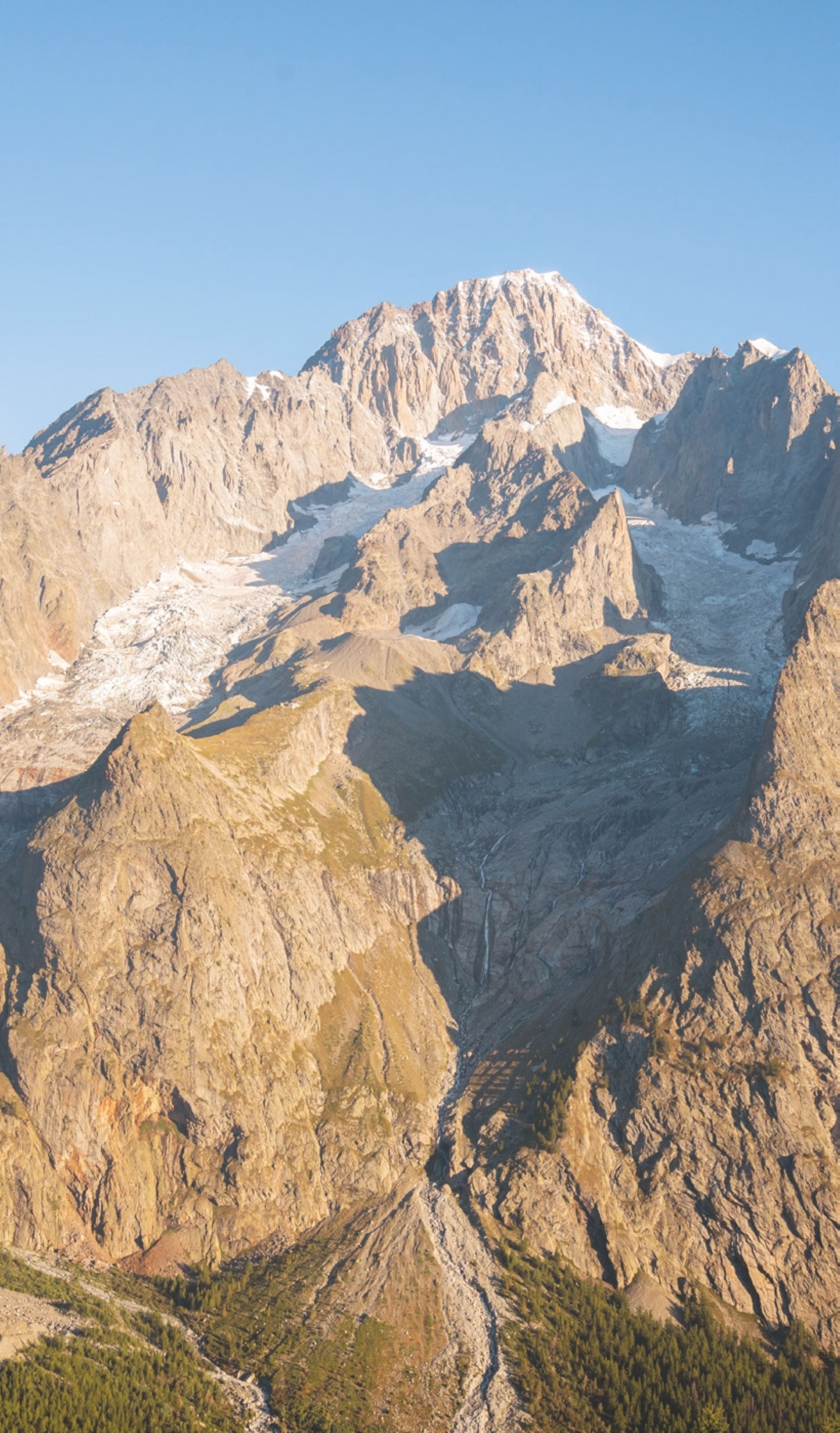
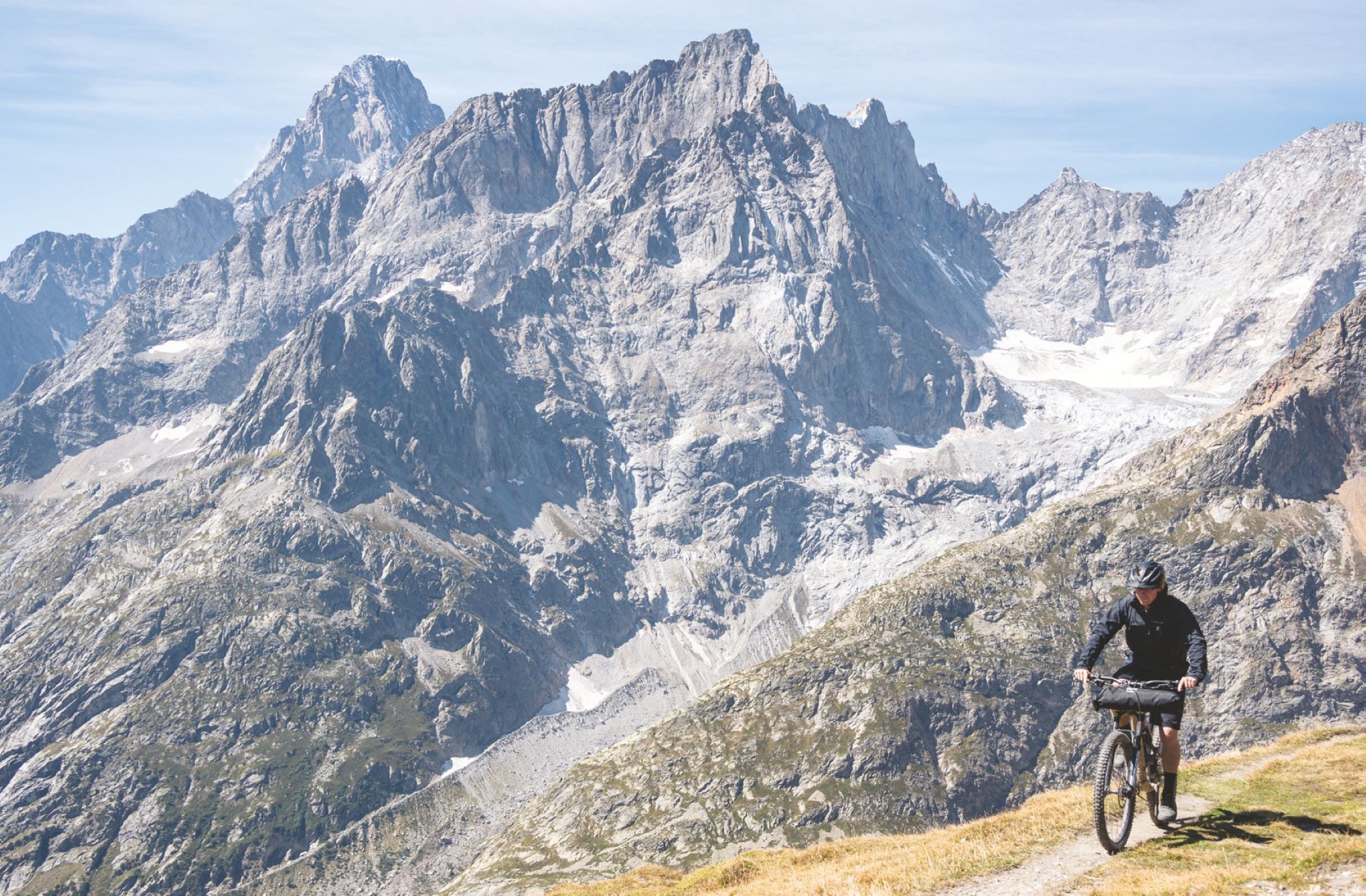
Day Three
At first light, I boosted down the trail to meet up with Fynn for a coffee and debrief on the previous day's debacle. We had now been put back slightly in our timeframe and had to put in a big shift to finish today. We were met by another beautiful morning with a more relaxed gradient that tracked past a series of Alpine refuges and what felt like hundreds of people enjoying the outdoors.
The climb then reached its peak, and we headed over our final border crossing back into France. Standing on the ridgeline gave us the best views of the entire ride; a full 360 degree of European alpine excellence.
Also a treat was the following descent, which was definitely the most flowy and playful downhill of the trip. We approached the township of Les Chapieux where we made a quick stop for lunch. Although a traditional French quiche and salad was not exactly the most ideal endurance fuel, we made do and pressed on to the most gruelling climb on the loop. We nicknamed it “Le Doozy” – 1000 metres of climbing over 8kms of distance. The grade of the trail began too steep to ride, so pushing or carrying your bike was the only option. In the heat of the sun it was pure punishment but reaching the top gave us an overwhelming sense of accomplishment.
Following a couple of rock garden scrambles, we were treated to a 20km descent through varying terrain. The drop in altitude felt never-ending until we finally hit the town of Les Contamines- Montjoie. By this point, I was personally flogged and could feel the dreaded bonk beginning to set in. In a speedy trip to the supermarket for some kai, a couple cans of Coke and a bag of lollies combined to keep the bonk at bay … for now.
At this point, we only had one more climb and descent to go to complete the loop. In my fatigued state, I chose to take a route that followed a more paved road, whereas Fynn followed the marked TMB trail. This was a timesaving strategy, as again we were trying to work with the remaining daylight we had left. We managed to make it to the top of the last set of hills just as the sun had set. With one head torch and two phone lights we managed to navigate a series of overgrown walking trails that lead into the Les Houches bike park. I was in no mood to try and enjoy any of the bike park trails in the pitch black. Feeling close to exhaustion, we started to pass through the glow of street lights and all of a sudden we had returned back to the van, where we had set off two days earlier. Celebratory high fives were followed by a mandatory McDonald’s trip for a recovery feed and some reflection.
The Tour du Mont Blanc was a master class in character building mixed with some of the most beautiful scenery I have ever experienced on two wheels. Did Matt and the Specialized crew make it look easy? YES. But any type of adventure condensed into a seven minute edit is going to have its fair share of sugar coating. I can personally say the pain was worth it and I am stoked to have it ticked off my bucket list.
The Tour du Mont Blanc was a masterclass in character building, mixed with some of the most beautiful scenery I've ever seen on two wheels.
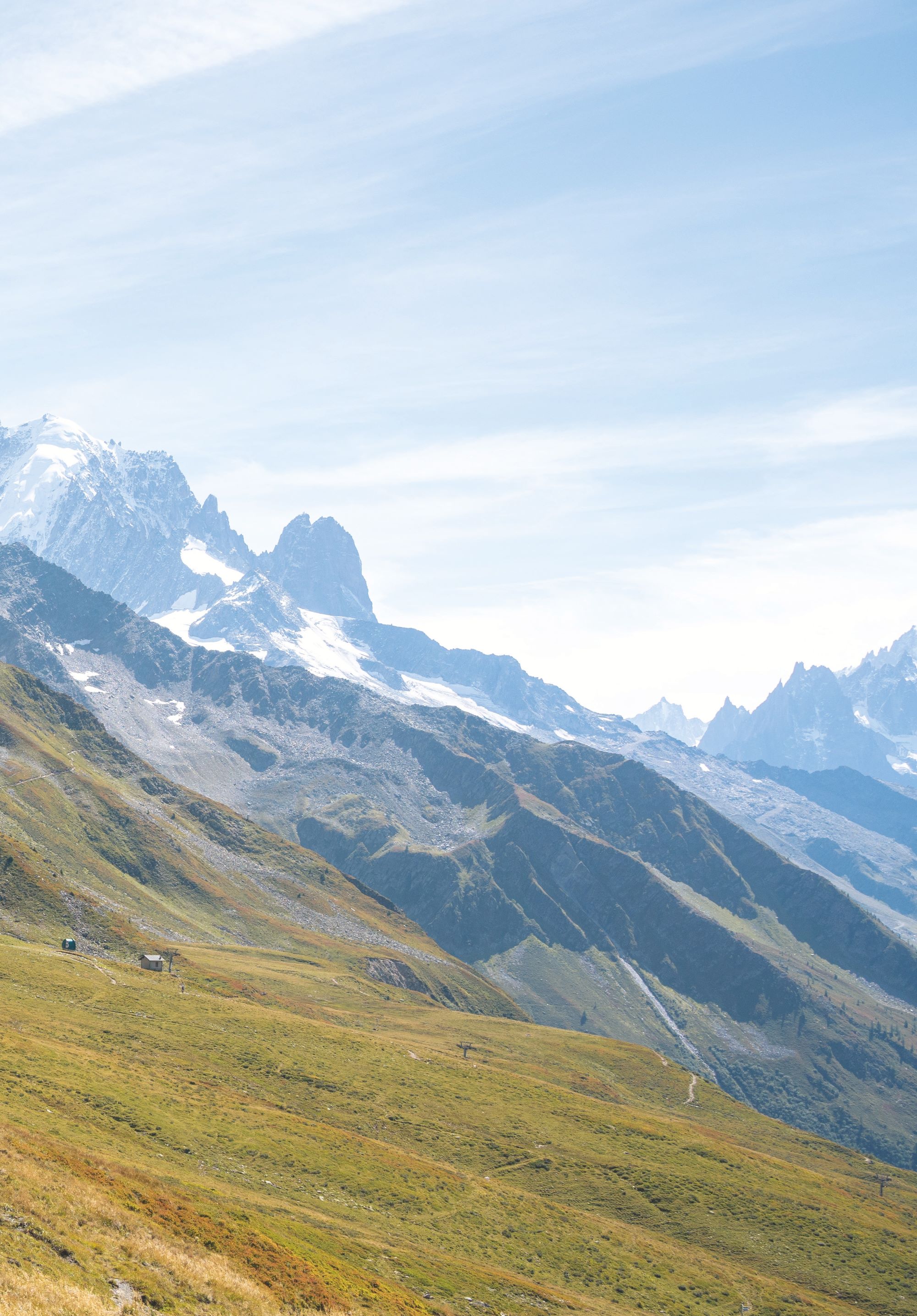

Toby + Rory Meek: Redefining past conventions
Words & Images Riley McLay
New Zealand has always punched well above its weight when it comes to producing high performing downhill racers on the international circuit. New Zealand racers have always been synonymous with a DIY mentality and lifestyle-based approach, largely popularized by the VANZACS.
However, with the sport moving rapidly to a more professional outlook, the qualities that set New Zealand riders apart in the past may not be so fitting in today’s racing climate. Even with some of the most recognisable and world renowned tracks for training and progression, the Kiwi racing scene faces the conundrum of a steady decline in the number of junior riders making their way through to competing at elite level. This could be due to a change to the unpopular format UCI has adopted, or the broader financial pressures faced by race teams and support systems in and around the races. Not to mention the agonizingly close times being laid down by some of the top riders. Amidst these challenges, one Queenstown-based family is on a mission to redefine past conventions and bring a high performance framework to their racing on and off the bike.
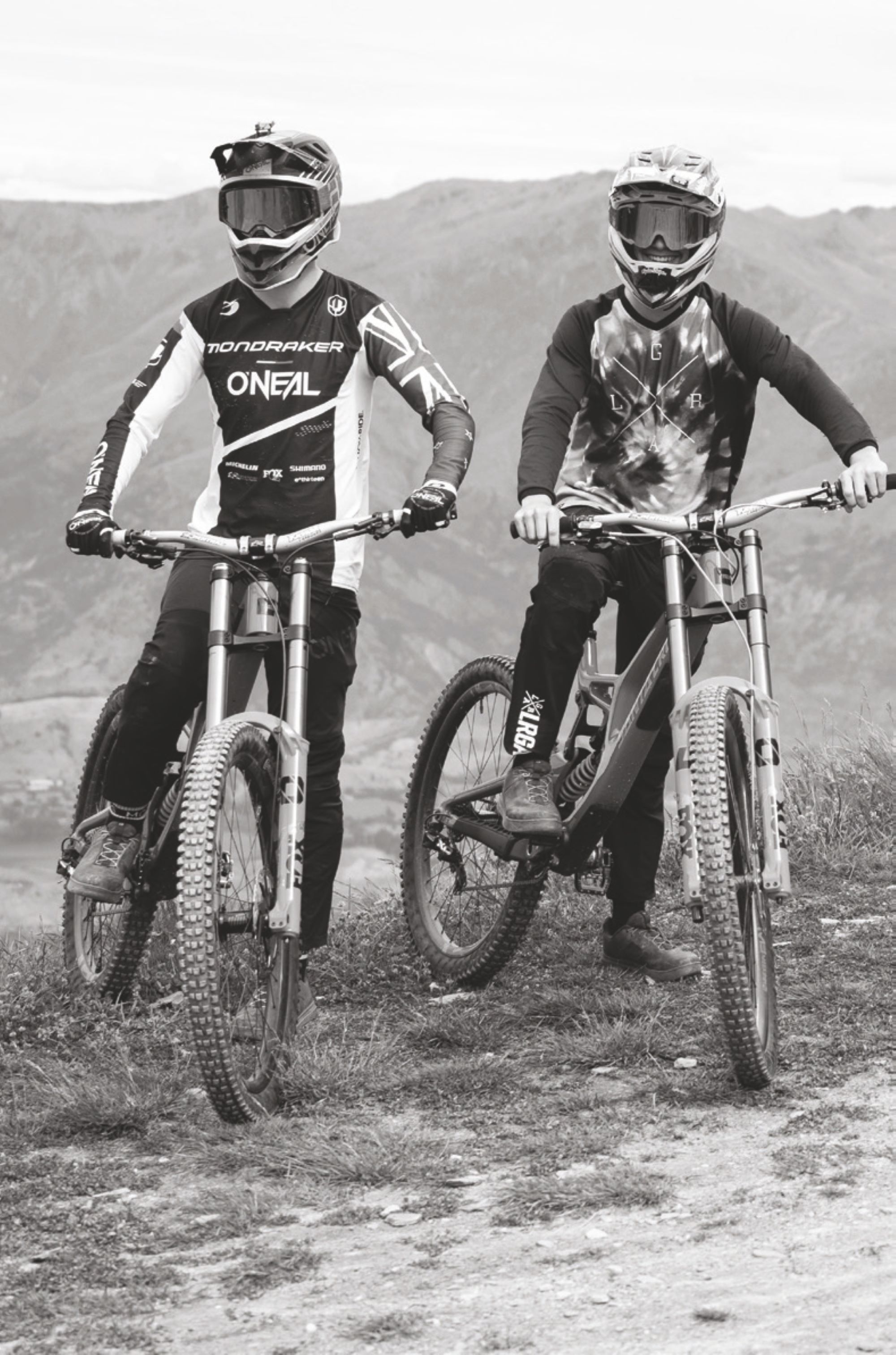
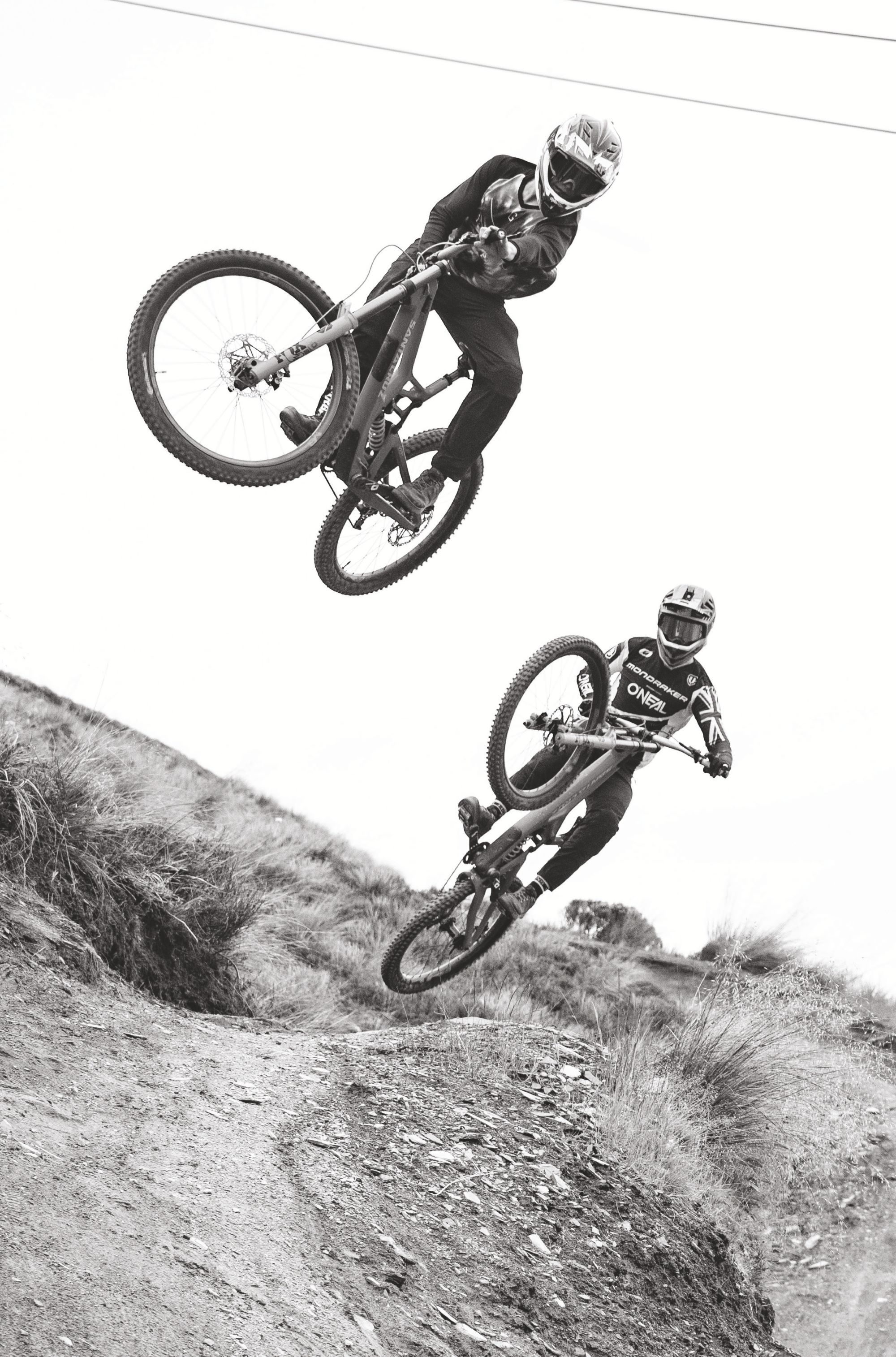
TOBY AND RORY’S RACING HAS TAKEN THEM ALL OVER THE WORLD. FROM A YOUNG AGE, THEY HAVE CHASED BOTH BMX AND MOUNTAIN BIKE RACES ACROSS EUROPE, NORTH AMERICA, OCEANIA, ASIA AND SOUTH AMERICA, ACCUMULATING A COLLECTION OF NOTEWORTHY RESULTS.
The Meek family have always had the mindset that success and innovations tend to grow from humble beginnings. Originally Dunedin based, Kiwis Steve and Donna packed up their lives and moved to Hong Kong in 2003. As a young couple, they sought the adventure and experience of working life as expats. Both avid mountain bikers, they were able to take advantage of the plethora of tropical jungle trails that Hong Kong offers. It wasn’t long before their two sons, Toby and Rory, had arrived and were introduced to a life of riding bikes. The boys would quickly make the jungle their own. As a family, they would constantly add to the network of trails around them, building their own tracks for the boys to hone their skills. The boys adapted to a racer’s mindset, both forming their pedigree from BMX racing – in which they have represented New Zealand at a world championship level, multiple times. The boys bounced between racing BMX and mountain bikes and as their skill levels progressed, Steve became frustrated with the limited options available for bikes for the boys to ride. With most bikes at the time weighing a tonne, they were not suited for younger riders. Steve made it his mission to create a solution so that the boys weren’t being held back and could further progress their skills. It started off with adapting one of Toby’s BMX bikes with a 100mm travel fork, from a 26 inch mountain bike. This created a bike that was far lighter than the mass market kids bikes, and the forks gave Toby more of a fighting chance for riding control when it came to getting down steeper trails. Being a hardtail came with some limitations, but it allowed Toby to go out riding with Steve. Soon enough, Rory also needed a boke, and with Toby outgrowing the capabilities of the hardtrail, Steve took it upon himself to come up with something bolder. Steve went out and sourced a size small Giant Trance and chopped it down to create a custom full-suspension bike for Toby. Resizing an adult frame to accommodate a child isn’t as simple as it sounds. Steve had to formulate the best possible design for shrinking the frame to allow enough stand over height for Toby to fit the bike and be as comfortable as possible. With his firsthand experience and seeing an obvious gap in the market, Steve formed MeekBoyz, a bike company whose goal is to provide the world’s best high performance downhill bikes for children. The MeekBoyz design criteria centred around the bike performance, weight, tailored geometry and, most importantly, a full-functioning suspension system for young riders with capabilities to ride down more advanced trails. Having a composites background, Steve chose carbon fibre for the bike frames and rims. It was a no-brainer as it is light, more versatile than other metals and has long-term durability. Working with carbon is a highly labor intensive task and requires a large work space. Fortunately, being based in Hong Kong enabled Steve to access and set up in the epicenter of the carbon bike industry, in Taiwan and China. Steve is adamant about only putting the best components on his bikes. From years of experience, he knows only top quality parts ensure the integrity of a high-performance bike range. This attention to detail eliminates any unneccessary stress of worrying about equipment and lets the boys focus on the racing.
Toby and Rory’s racing has taken them all over the world. From a young age, they have chased both BMX and mountain bike races across Europe, North America, Oceania, Asia and South America, accumulating a collection of noteworthy results. Rory achieved third in the world – twice! – for his age group in BMX racing and Toby raced at a world championship level for five years. They are no strangers to the UCI world cup circuit either, as they frequented as spectators, and competed in events such as Crankworx Whistler and US Open – where Rory has won his age group twice. The boys were even invited to a surreal experience to race the Longling DH Memorial Event, in Yunnan Province, China, where they competed against other racing phenoms, including Jackson Goldstone. When the boys reached high school age, the family moved back to New Zealand and settled in Queenstown, in search of a more balanced lifestyle and a better base to focus on racing. The family is very passionate about biking not being the be-all and end-all, and feel having a well-rounded worldview is imperative to personal growth. With the pool of talented riders across New Zealand, it can be hard to stay grounded and focus on what is important, but life skills learnt away from the bike carry over and greatly improve results. This is why the boys were always encouraged to chase other hobbies like hunting, fishing, surfing and even kite surfing – which they also excelled in and competed in at a high level. The family model their operations off the Atherton family and admire the success they have, while keeping things tight-knit.
WITH MOST BIKES AT THE TIME WEIGHING A TONNE, THEY WERE NOT SUITED FOR YOUNGER RIDERS. STEVE MADE IT HIS MISSION TO CREATE A SOLUTION SO THAT THE BOYS WEREN’T BEING HELD BACK AND COULD FURTHER PROGRESS THEIR SKILLS.
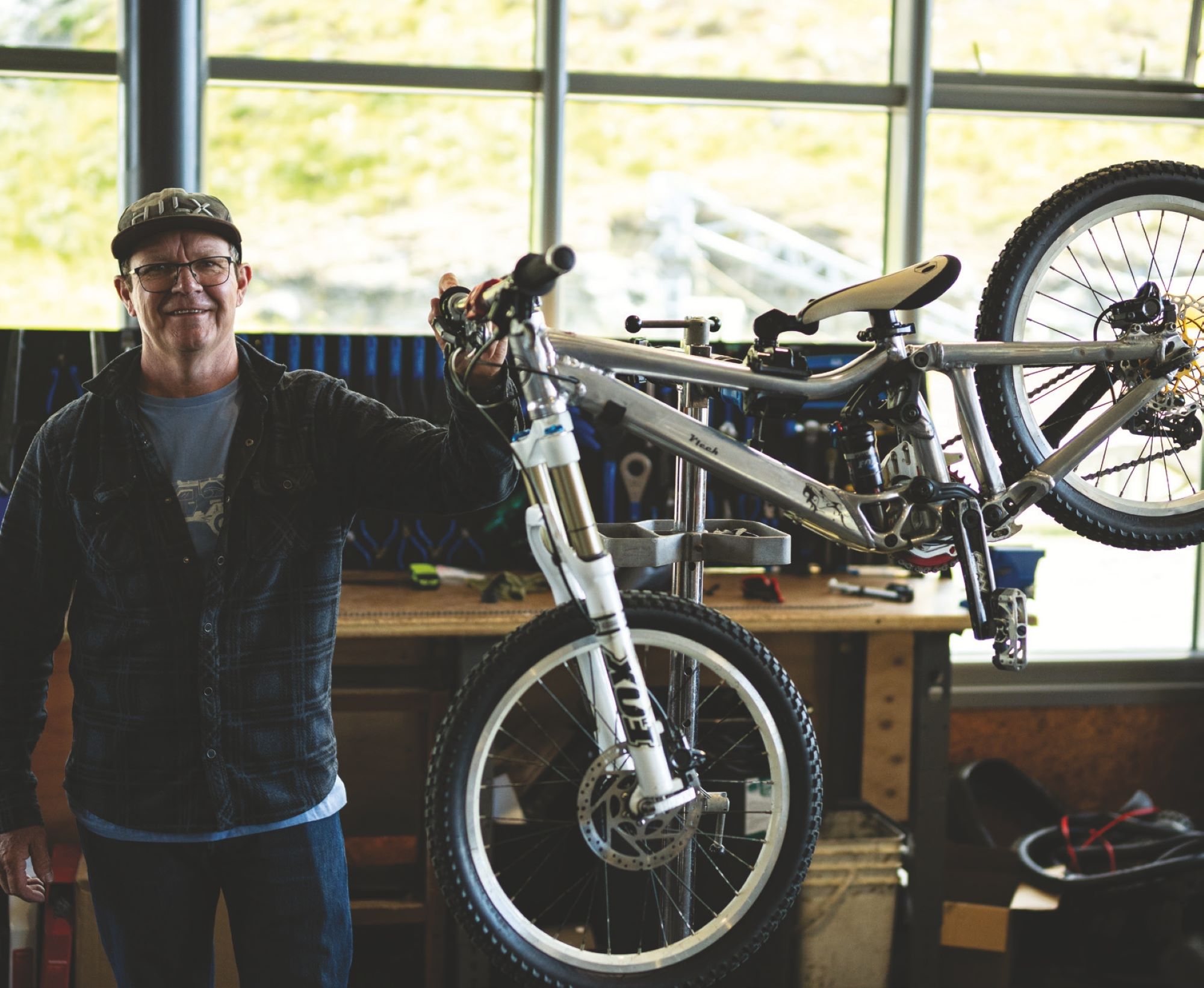
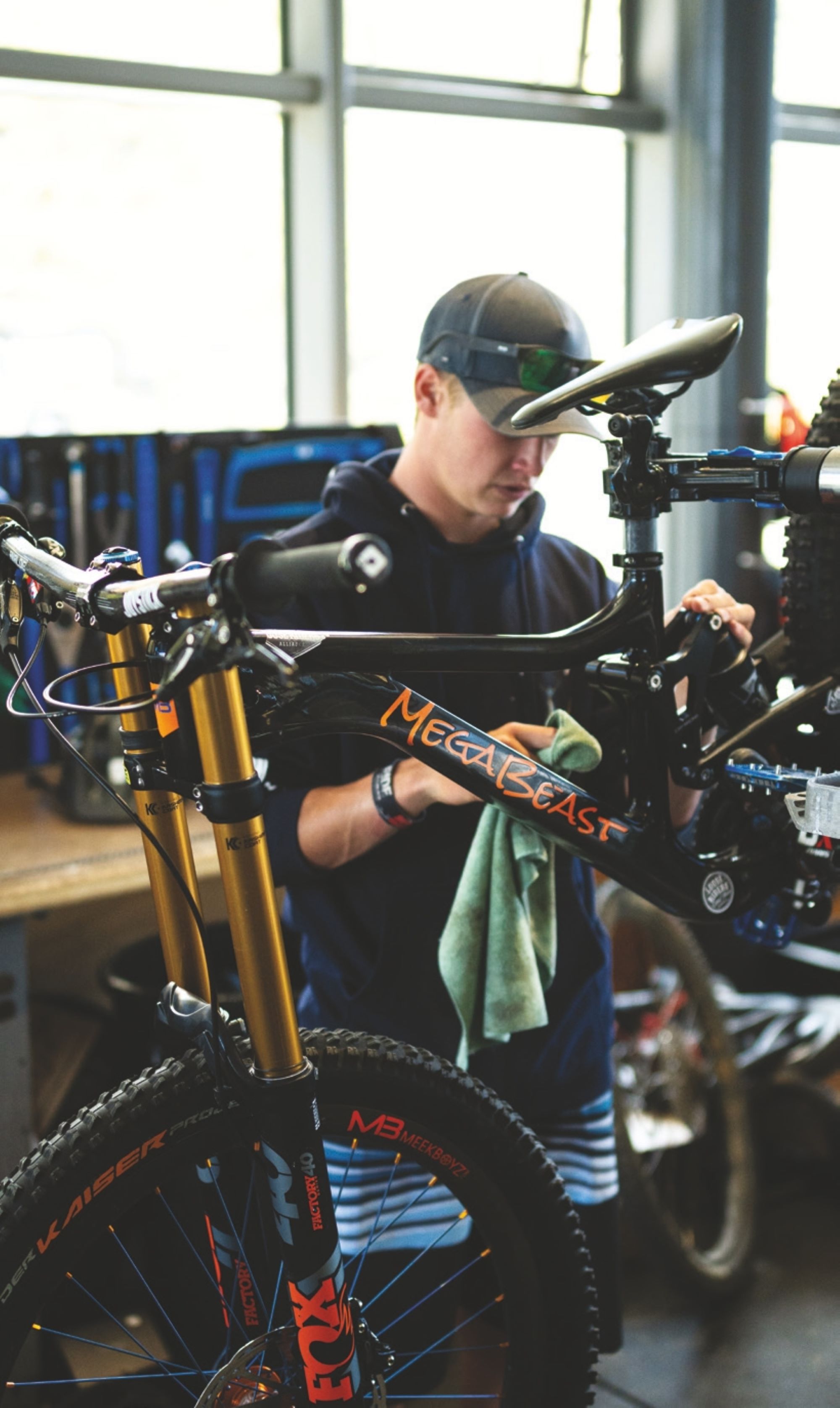
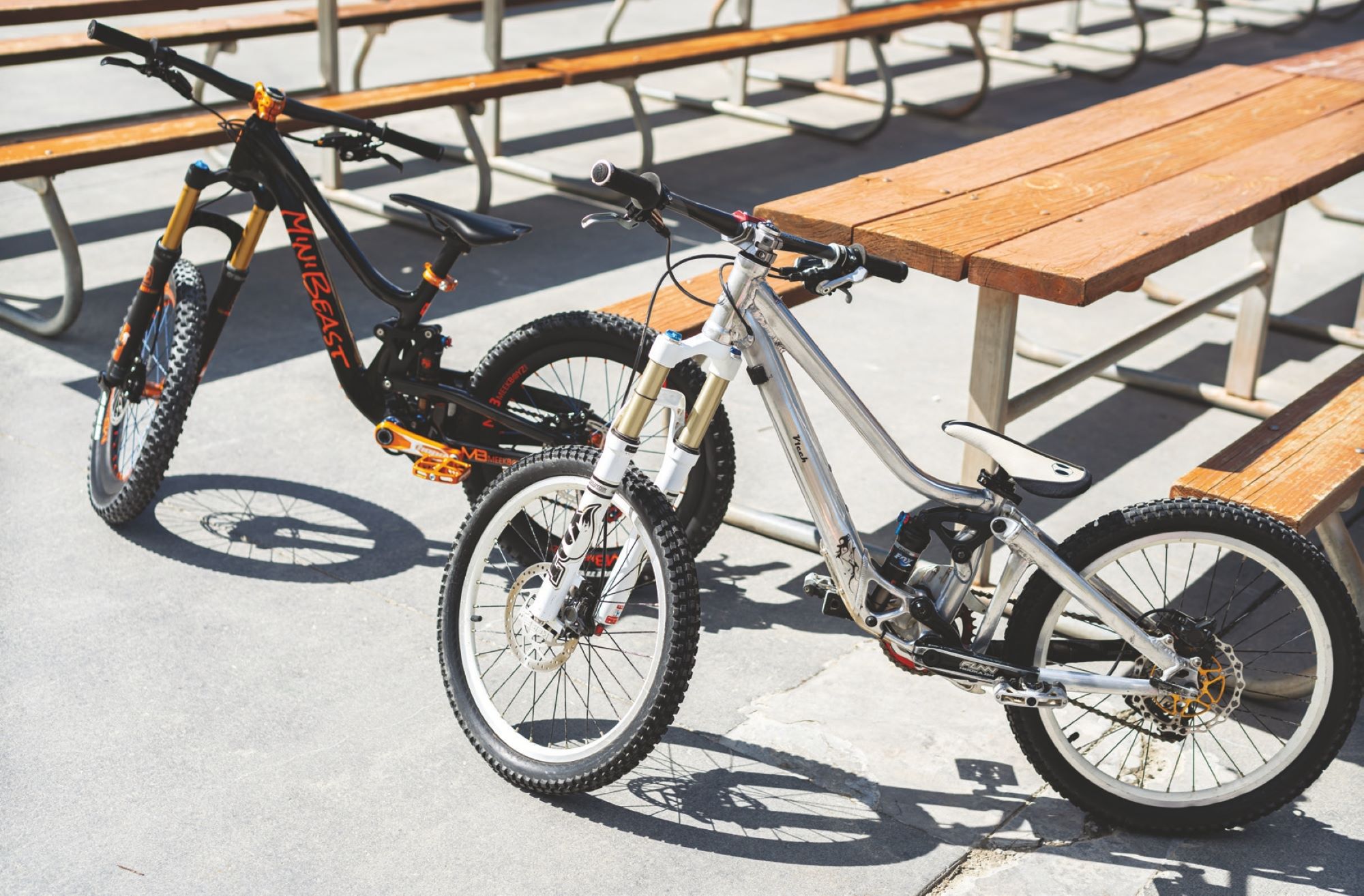
Standing out on results alone doesn’t always mean you receive the support you need to race at a high level. In the early days, it was hard to stand out and the family found it challenging to find sponsors to support the boys. The family was early to implement the use of social media to promote the Meekboyz brand, and it has been a pivotal part of their success. What started off as the boys filming and sharing videos of their riding online, has snowballed into picking up notable long-term sponsors, like Continental tyres, and accumulating over 35,000 Instagram followers. Social media also benefits the Meekboyz physical business of selling bikes, which then allows more funding to flow back into supporting the boys with their racing. This extra exposure resulted in Toby joining Markus Stöckl’s MS Mondraker race team in 2020. Markus Stoeckl, team owner (and mountain bike world record holder) invited Toby to travel with the team through Europe and learn the ins and outs of how a professional race team operates. Team rider, Laurie Greenland, was instrumental in showing Toby the pace required to race at world cup level and served as a great role model. Toby then went on to sign onto MS Mondraker Team for his remaining two junior years. He was over the moon to join the team and ride alongside someone as successful as Laurie, who he had always looked up to.
In Toby’s first elite junior season, he suffered two major injuries which cut short his racing. Firstly, a cracked pelvis training in Leogang, Austria, followed by a broken arm in Lenzerheide, Switzerland. In Toby’s second year, he came out of the gate with a great result, 6th in his first world cup race in Lourdes, France. He then suffered a dislocated shoulder in the following race, in Maribor, Slovenia, which forced him to come home to New Zealand to have shoulder surgery and miss the rest of the season. Due to his injuries, Toby felt like he had unfinished business and had not achieved the results he knew he was capable of. In 2023, Toby signed on for another year with MS Racing and bounced back to have an impressive New Zealand season. For his first year, competing in the elite category, he won every national round that he entered. This span of good form continued as he went on to win the New Zealand national downhill champs, donning the coveted New Zealand sleeve for the 2023 international race season. Rory’s results were equally impressive, finishing second in the downhill national round and Crankworx summer series events, hosted in Cardrona. He also collected a third place in the under 17 category at the downhill national champs event hosted by Coronet Peak to top off the season, creating a great platform to work from moving into the elite junior category.
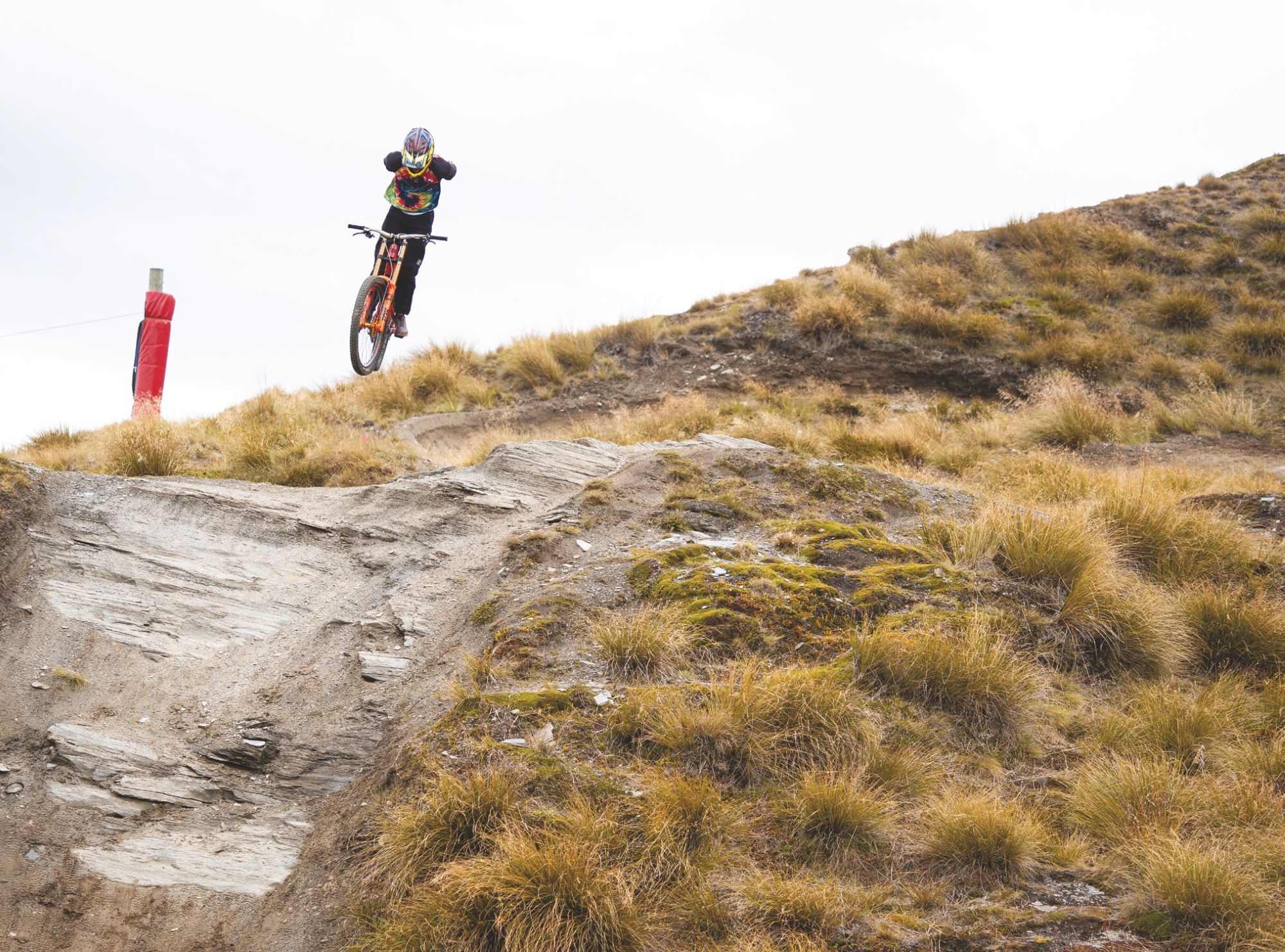
IN THE EARLY DAYS, IT WAS HARD TO STAND OUT AND THE FAMILY FOUND IT CHALLENGING TO FIND SPONSORS TO SUPPORT THE BOYS. THE FAMILY WAS EARLY TO IMPLEMENT THE USE OF SOCIAL MEDIA TO PROMOTE THE MEEKBOYZ BRAND, AND IT HAS BEEN A PIVOTAL PART OF THEIR SUCCESS.
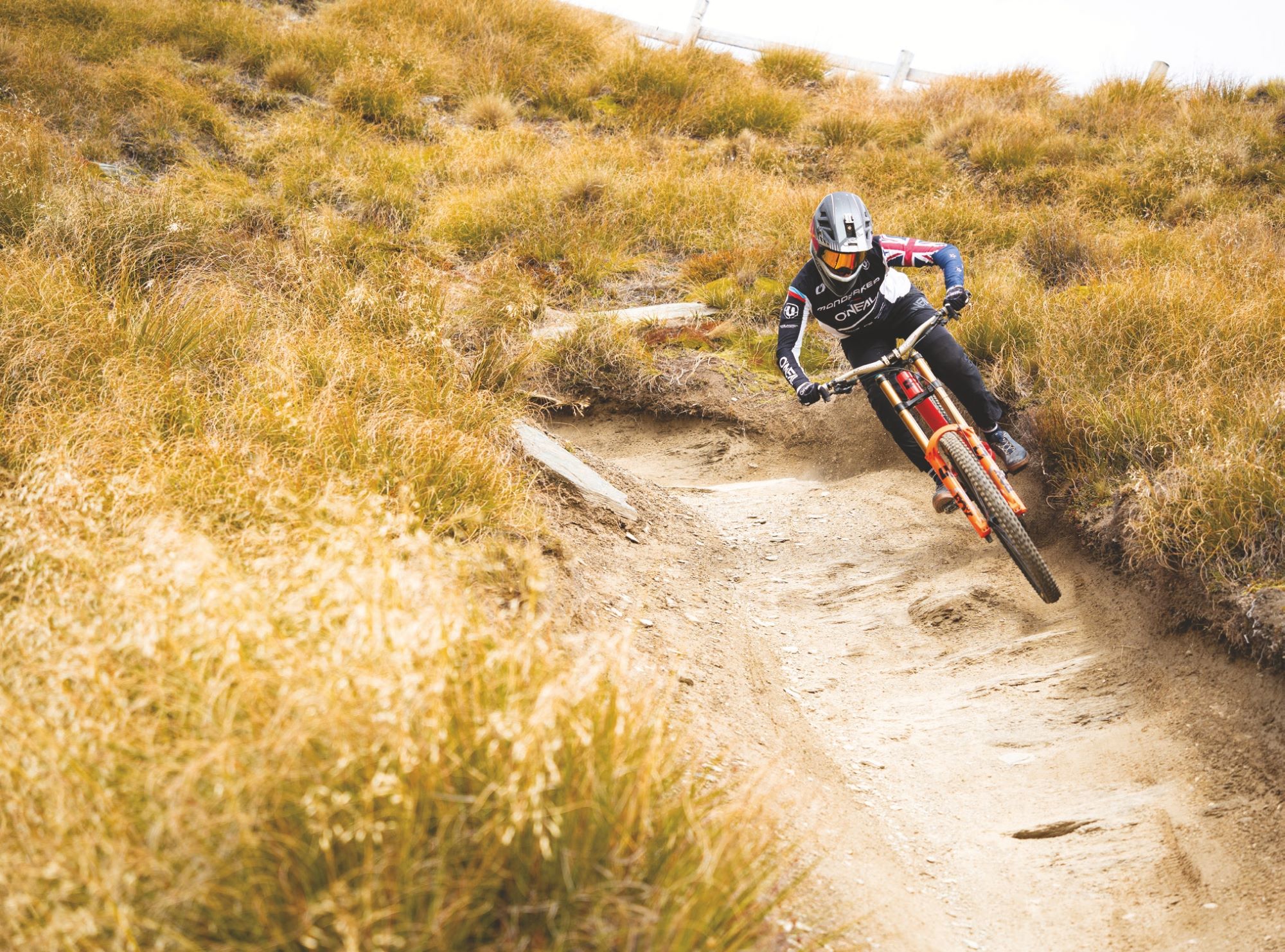
Toby’s UCI world cup season started off extremely positively, making it through to the finals and finishing 27th at the second round in Leogang, Austria. He backed this up by achieving four more top 60 results and was an agonizing two hundredths of a second off qualifying for the finals event at Pal Arinsal, in Andorra. During the season, the team was going through big changes, while a majority of the team’s riders were battling their own injuries. Fortunately, Toby remained injury free. He had hoped to test the upcoming Mondraker DH prototype being developed by the team for the world cup races, but unfortunately this opportunity never eventuated. This was a disappointment for him. One of the challenges of being the youngest rider is the limited access to the same parts and opportunities as more experienced riders. This is likely to change, given the next generation of riders competing at a world cup level now are proving that they are just as fast and talented as the seasoned riders on the circuit. Despite these shortcomings, Toby was still able to finish the UCI season in 60th place overall, and has set himself a strong foundation for more success in the future.
Although the mountain bike industry and current racing climate face turmoil, the Meek family have decided to launch their own UCI race team for the 2024 season, under the name ‘MeekBoyz Racing’. It will be Queenstown’s first homegrown factory UCI team and will be the first time both Toby and Rory have been on the same team since they were young. This will also be Rory’s first UCI season in the junior category. Creating Meekboyz Racing will allow the family full control over the racing operations. This means they’re able to choose the best components and partner with brands to ensure the boys can achieve the best results possible, while keeping their family unit tight-knit and continuing their under-the-radar approach. The team is definitely one to keep your eye on in 2024.
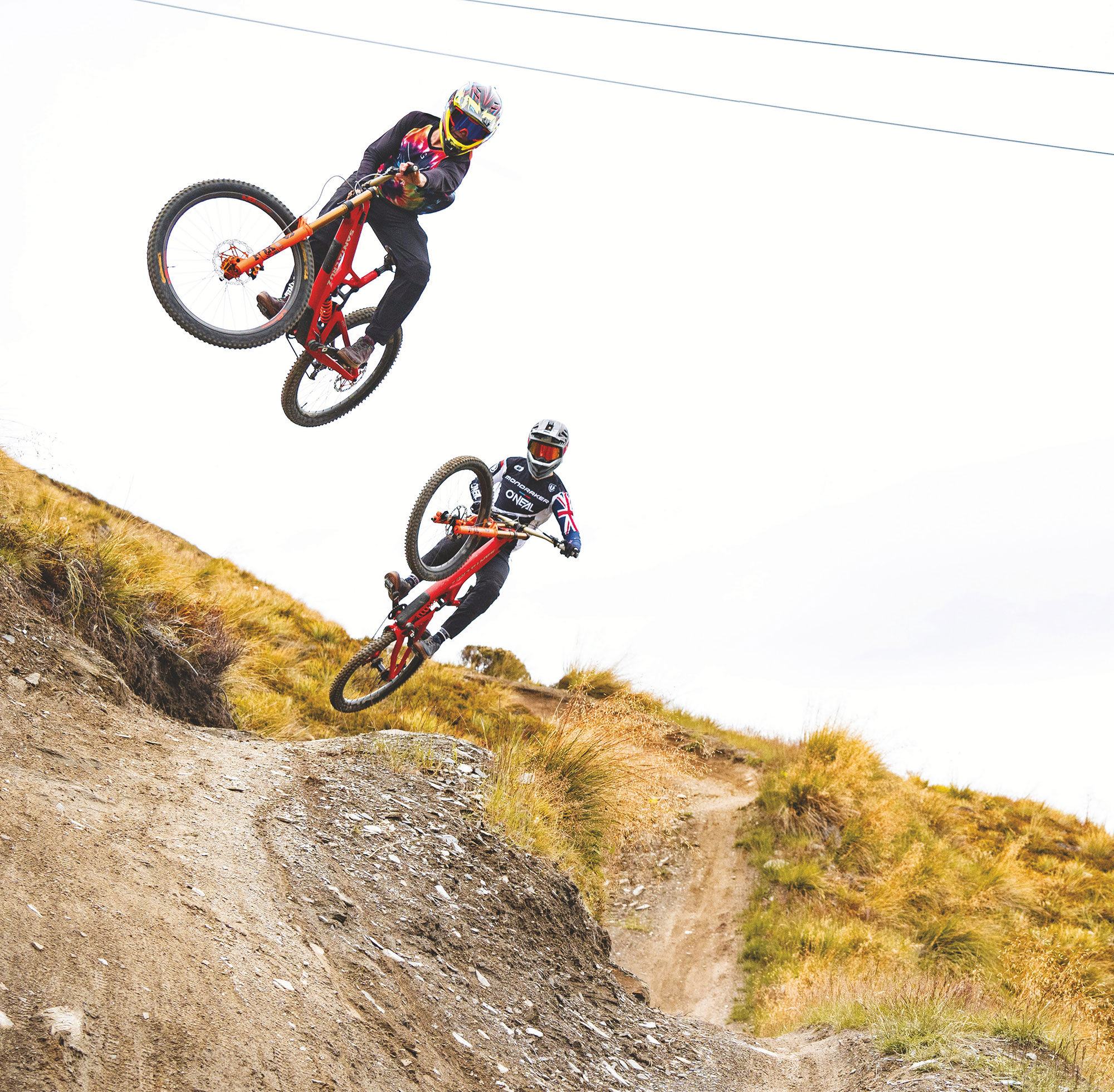
CREATING MEEKBOYZ RACING WILL ALLOW THE FAMILY FULL CONTROL OVER THE RACING OPERATIONS. THIS MEANS THEY’RE ABLE TO CHOOSE THE BEST COMPONENTS AND PARTNER WITH BRANDS TO ENSURE THE BOYS CAN ACHIEVE THE BEST RESULTS POSSIBLE, WHILE KEEPING THEIR FAMILY UNIT TIGHT-KNIT AND CONTINUING THEIR UNDER-THE-RADAR APPROACH.

Destination: Coronet Peak
Words & Images Riley McLay
Famous Brazilian footballer, Pelé, once said; “Success is no accident. It is hard work, perseverance, learning, studying, sacrifice, and most of all, a love of what you are doing”. MeekBoyz Racing’s focus on success has led them to join forces with Coronet Peak, taking on the role of ambassadors for the bike park. Being able to perform at a high level requires having the best riding opportunities and access to quality facilities.
This relationship was an obvious choice for Coronet Peak and a great fit for the boys, as both parties share a lot of key values, along with their love of all things two-wheeled. Not only is it an opportunity to support Queenstown locals with chasing their dreams of racing, Coronet Peak also feels they are both in a position to grow together and help progress the boys racing while continuing to give Coronet Peak exposure on the international stage.
Coronet Peak was New Zealand’s first commercial ski field, opened in 1947. It originally hosted one single tow rope, which would get skiers up the snow-covered slopes of the mountain. A stark contrast to today’s multi chairlift operation that spans the majority of the hill. In recent years, Coronet has switched their focus to becoming an all-year outdoor recreation destination,with plans to greatly expand upon their current vast network of some of Queenstown’s best downhill, enduro and cross-country mountain bike trails. Giving riders a variety of options to accommodate from beginner to pro level abilities. Coronet Peak is only a short 20-minute drive from Queenstown central, making it easily accessible to locals and tourists visiting the mountain biking mecca. The ski area is instantly recognisable from all angles as you arrive into the Whakatipu Basin. As you snake your way up into the alpine, you are met with the bright glow of tussock grass covering the hillside. The faintly flowing shadow of trails give the only hint of activity amidst the ruggedness of the high country. As you get closer to the top, the flurry of other riders increases and the sound of laughter breaks the serenity. Coronet Peak’s summer operations allows it to take advantage of what it has built upon over the many winter months they’ve experienced, and continue to provide a premium product for the mountain bike community.
The main base building consists of a fully staffed indoor cafe. Sitting on the outdoor deck and watching fellow riders go past, is the perfect way to relax with a bite to eat or cold refreshment on a warm summer’s day. The base building also features a fully stocked bike workshop to tend to any issues you may have out on the trails. This also gives patrons access to Coronet Peak’s fleet of rental bikes and ensures your rental is fine-tuned for your preferences, and maintained throughout the day. The flexibility of pass options allows riders to easily plan their day of riding, with day and 4-hour passes available. Experiencing the magic of golden hour up Coronet is not to be missed, with a sunset pass from 4-8pm available on Thursdays and Mondays. A perfect way to unwind after a busy day and make the most of the late evenings. For those less experienced, Coronet Peak also undergoes regular patrols, ensuring peace of mind, knowing that assistance is never far away should you run into any issues.
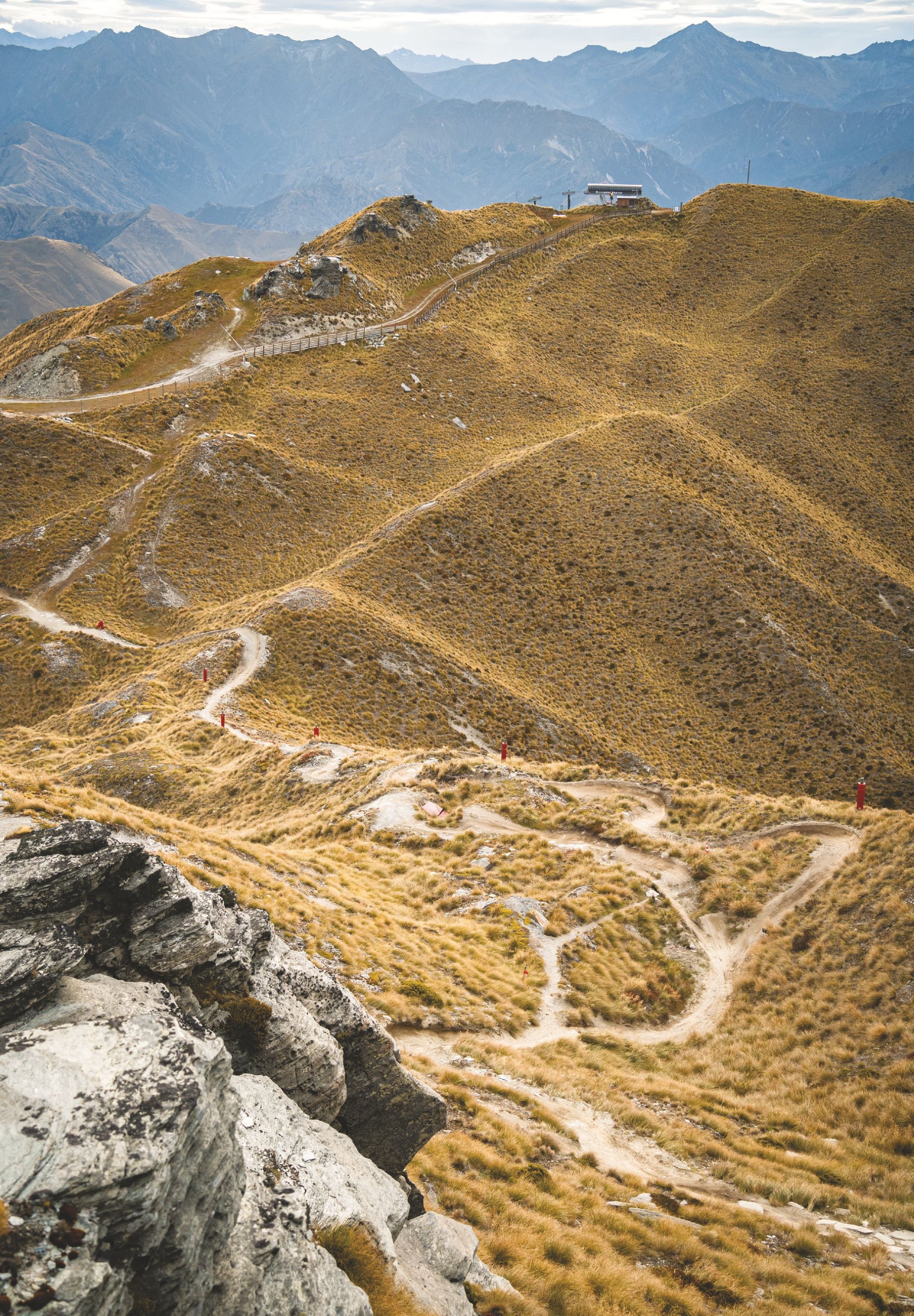
I can see why the mix of fast and well-built jumps and turns set to a stunning backdrop, attract these international riders who make the mountain pilgrimage every year.
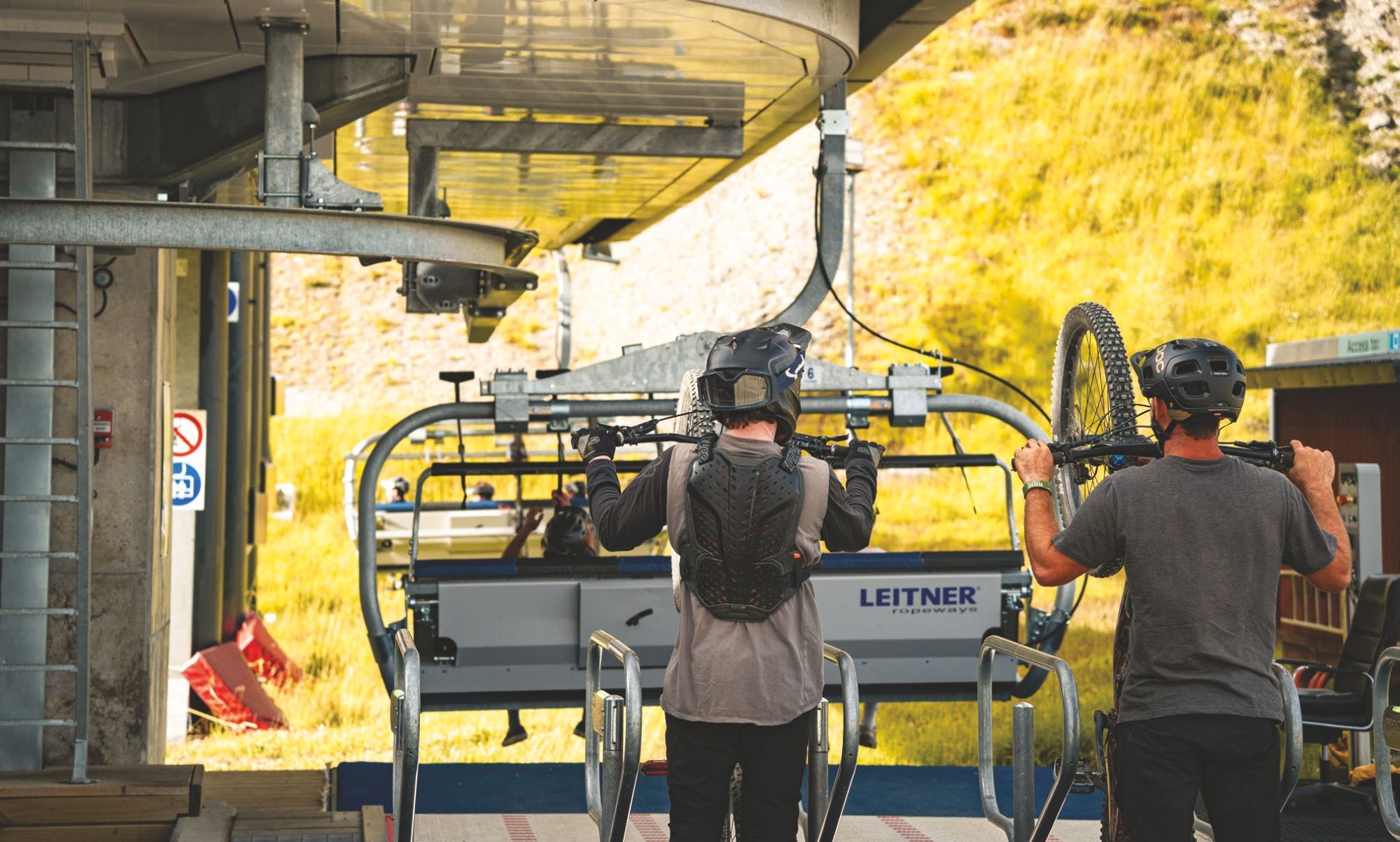
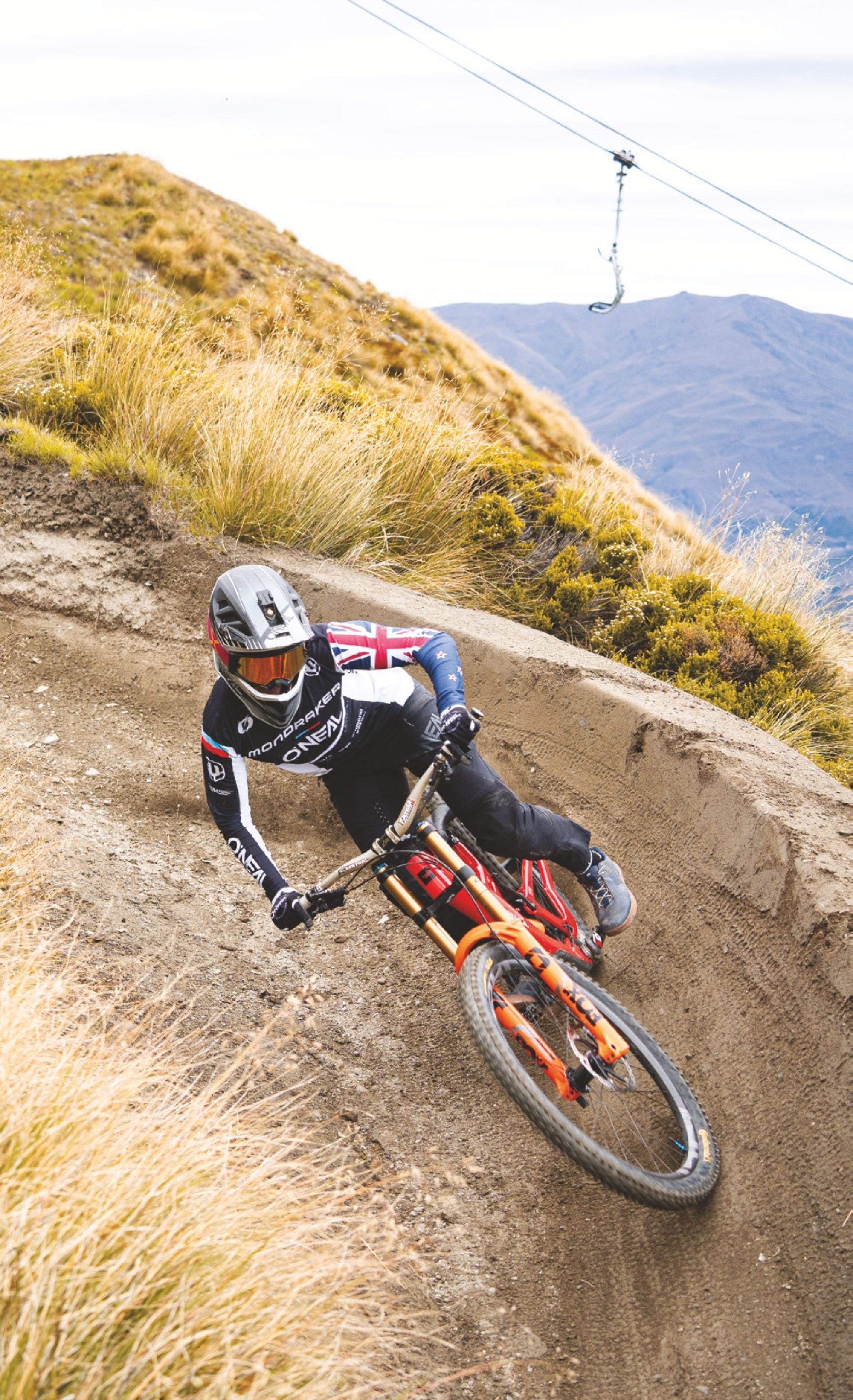
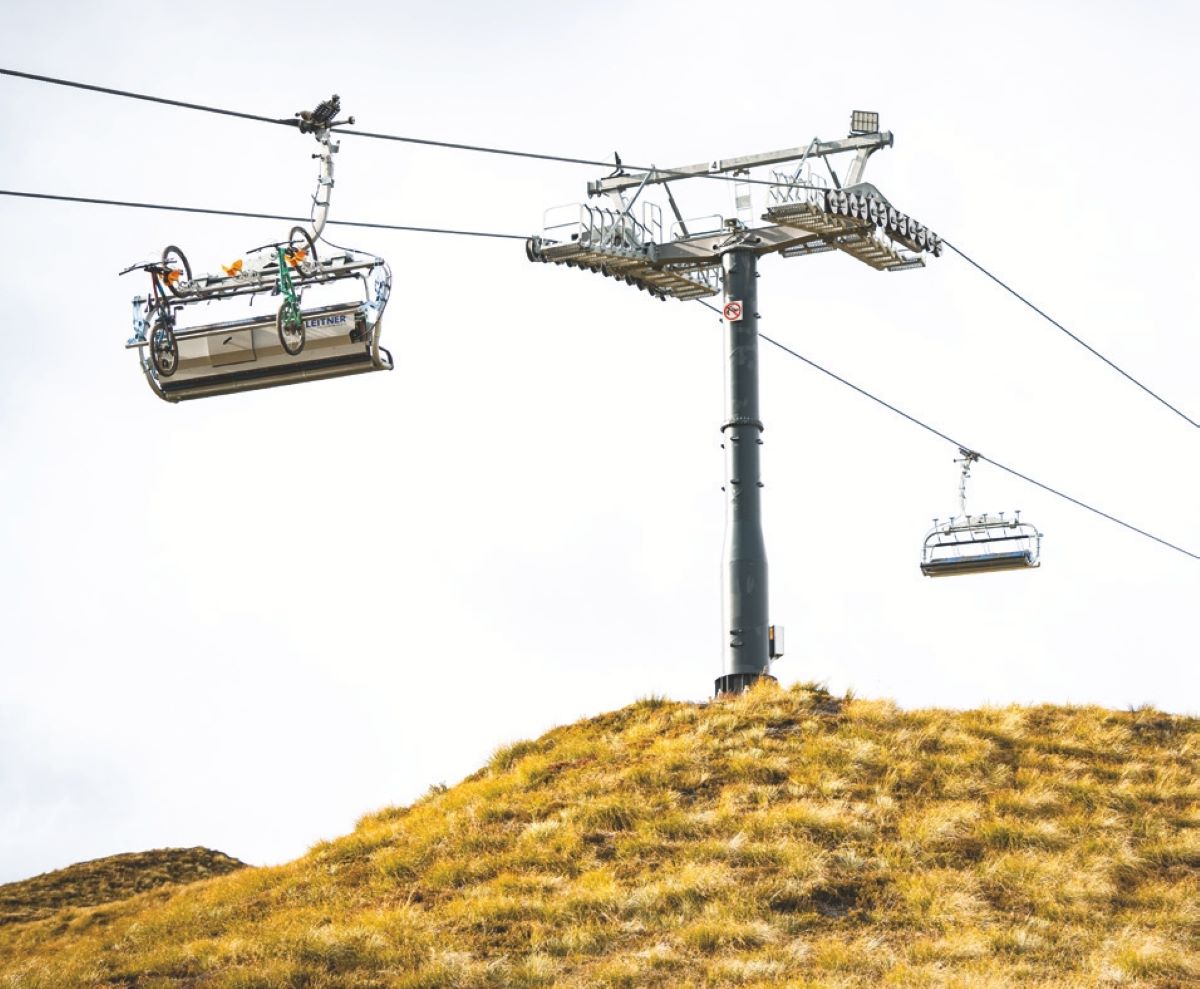
Coronet’s newly installed six-seater ‘Coronet Express’ chairlift, with a specifically designed bike rack system, quickly delivers riders to the peak. For those who aren’t into biking, there are enclosed gondolas for a more comfortable alternative. At the top, riders and outdoor enthusiasts alike are met with breathtaking views of the Whakatipu Basin. The sightseeing lookout is the ideal place to take in the expansive view of the valley below. These views extend to the very peak of Coronet, looking out to a full 360 panorama of the surrounding southern alps. From the peak of Coronet, riders can explore three trails: Coronet XC, Coronet DH, and the Dirt Serpent trail.
The Coronet XC is the longest trail on the upper part of the mountain. Starting under the chairlift, this grade 3 trail takes you right out towards the north side of the ski field boundary. With a series of switchbacks and varying singletrack, this trail is the perfect warmup for a day of riding. It is also a great starting point for less experienced riders, as this trail is a perfect introduction and opportunity to acclimatise yourself to the famous Coronet Peak dirt. It’s extremely grippy texture (even when wet) is another characteristic that sets Coronet Peak apart from other trails in the Queenstown area – and is an absolute delight. This trail also gives you access to the Slip Saddle, a grade 5 trail that carries you all the way into the nearby Arrowtown township, via the Bush Creek trails.
Coronet DH, arguably the most well-renowned trail of the three, begins directly as you hop off the lift. The grade 5 black trail is the most direct way down the hill. Originally sculpted in 2006, the track travels through the alpine tussock and makes use of the rugged terrain to give riders more of a challenge, with a combination of high speed and technical sections. It’s also host to iconic features such as the Canyon Gap and Rock Slab Drop that fully utilise the landscape. These features can make for some thrilling moments.
Adapting to the speed of the trail does take a lap or two, but once you memorise the order of things, you’ll see why the trail has gained the recognition it deserves. It was specifically constructed with downhill racing in mind and frequently hosts races on the local club and national level. Coronet DH is a magnet for overseas professional riders in the summer months, as it is the perfect training ground for the northern hemisphere off-season. It isn’t uncommon to see some of the world’s fastest racers lapping out the track on any given day. During one sunset session, I even spotted the likes of Laurie Greenland and Danny Hart, along with at least ten other world cup racers, ripping down the track. I can see why the mix of fast and well-built jumps and turns set to a stunning backdrop, attract these international riders who make the mountain pilgrimage every year.

Starveall or bust
Words by Lester Perry
Images by Henry Jaine
WHILE ON A PREVIOUS TRIP, NELSON LOCAL, KIERAN BENNETT, AND I HAD DISCUSSED THE CHALLENGE OF DOING MULTI-DAY MISSIONS, OR SIMPLY EVEN SOLO OVERNIGHT TRIPS, WHILE JUGGLING WORK AND FAMILY COMMITMENTS. LET ALONE TRYING TO LINE OUR CALENDARS UP TO DO THEM WITH SOMEONE ELSE WHO WAS LIKELY IN THE SAME BOAT. SINGLE- DAY RIDES WERE GREAT, BUT REGARDLESS OF HOW EPIC THEY ARE – OR AREN’T – AN OVERNIGHTER HAS A CERTAIN ALLURE. WE TOSSED AROUND THE IDEA OF ME ARRIVING ON AN EARLY FLIGHT, DOING A FULL-DAY RIDE FROM NELSON AIRPORT TO A DOC HUT FOR THE NIGHT, THEN DEPARTING ON A FLIGHT LATE THE FOLLOWING DAY, AS A QUICKFIRE WAY TO PULL OFF AN OVERNIGHT BACKCOUNTRY MISSION.
Chatting with Kieran, he reckoned Mt Starveall and the Starveall track could be a worthy option, but details were scarce.
I’d heard rumours of people riding Mt Starveall in the past, so went on a hunt for more info. Indeed, people helicopter up to the summit and descend to the Hackett car park. Judging by the couple of aged YouTube videos I came across, it looked like a proper backcountry descent; things were looking positive. The internet offered up further details from people who had done the descent after accessing the trail from deeper in the Richmond Range, although only one blog post gave confirmation that people had actually clambered their way up the Starveall track before descending back down. Without a heli drop, an ascent on Starveall sounded like it may turn into some sort of twisted cross-fit style bike-carrying mission. But there was only one way to be sure: to physically take it on.
Dates were locked in, flights booked, and the route confirmed – there was no bailing out now. Late January, I spied a Strava ride from a friend; a heli drop from the top of Starveall. A few messages backwards and forwards confirmed it was a worthy trip, but also that we were deranged to be considering the hike-a-bike to the top.
Four-twenty in the morning is not a fun time to be woken for any reason, but needs must. By 4:30am I was dressed and had prepared a bottle of hydration mix and a quad shot of strong espresso to get me through the nearly two-hour drive to Auckland Airport. How ridiculous is it that it’s cheaper by a few hundred dollars – and almost quicker! – to drive nearly two hours, pay for gas and parking, and fly to Nelson from Auckland, than from my local Hamilton airport?! An overcooked breakfast muffin and a flat white; the obligatory Cookie Time and black coffee onboard, and after spinning for an hour and a half, the ATR 72’s props came to a shuddering stop outside the Nelson terminal.
With Kieran Bennett laying the initial foundation for my route, it was only fitting that he came along; stupid ideas are best shared with friends and if it all went bad then I had someone to share the blame with. After a few minutes of spinning Allen keys, my bike was assembled. Once again, I attempted to whittle down my gear for the trip; necessities and nice-to-haves. Space was tight and we wanted to travel light. I stuffed what I could into a handlebar-mounted Aeroe drybag, filled every nook and cranny of a CamelBak HAWG Pro backpack with the remaining gear, and we were good to go.
By 10:30 am we were ready to roll, but first; coffee and a butane canister. Butane for cooking, nothing nefarious. A quick stop at Bunnings ticked the final boxes on the admin list, providing the gas for the cooker and coffee for the body. It was game on. Continuing on the bike path, we began the mellow climb towards Silvan MTB Park. The day was warming up and the sun was out. It was here I remembered my sunscreen was still sitting at home.
Winding our way up through the forest of Silvan, our chat was flowing thick and fast. We calculated and theorised how long we’d take to reach our destination: Starveall Hut. It was getting hot and I was already sweating what felt like litres, yet we’d barely put a dent in the day. How long would my three and a half litres last me? If I kept drinking at the rate I was, not long!
As we reached the top of Silvan, we made the first of many snack stops. Half a sleeve of Oreos between us, a muesli bar and some mixed lollies. Over fistfuls of sugar, we broke out the maps again and were speculating how long the day would be. One thing was becoming apparent by this point: we had no accurate idea.
The quest for a route to suit the timeframe, began by spending time in my trusty Topo Map app. Focusing on the Richmond Range, I was hopeful I’d find a hut we could ride to directly from the airport. Tracing hiking routes on the map, cross-referencing with DOC information, Strava heat maps and the Nelson Trails website, there were a few options on the table, but I needed some local knowledge.
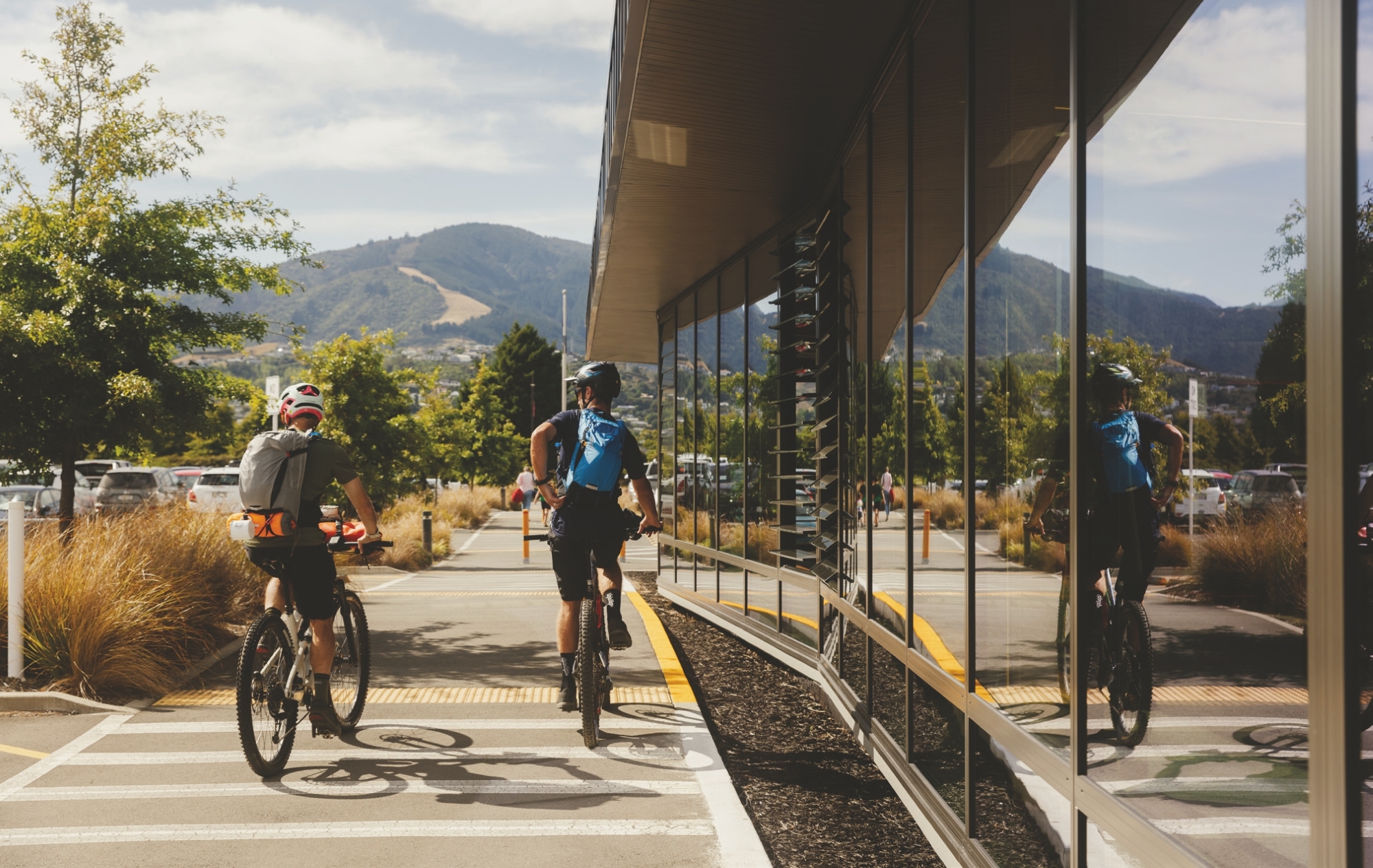
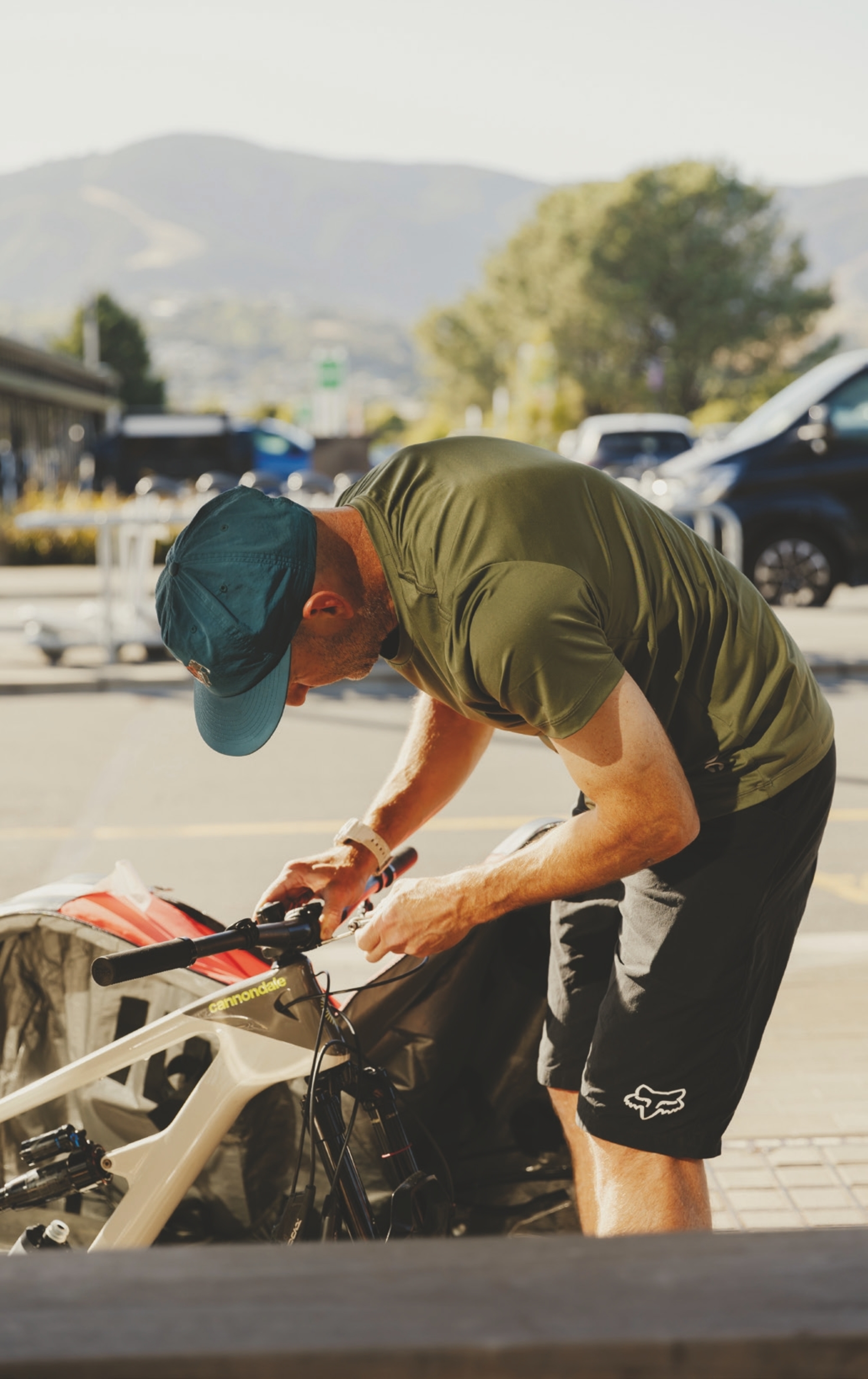
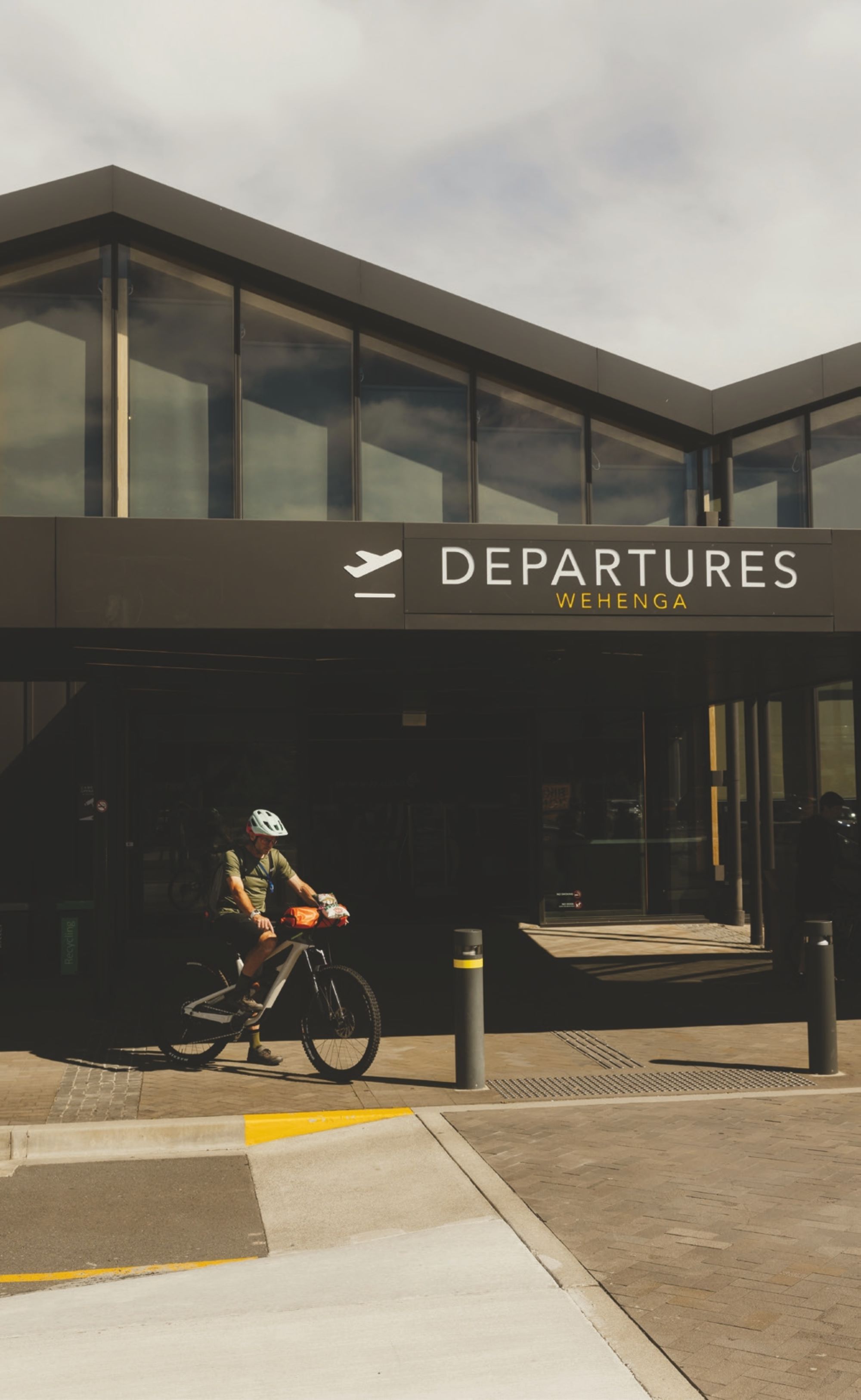
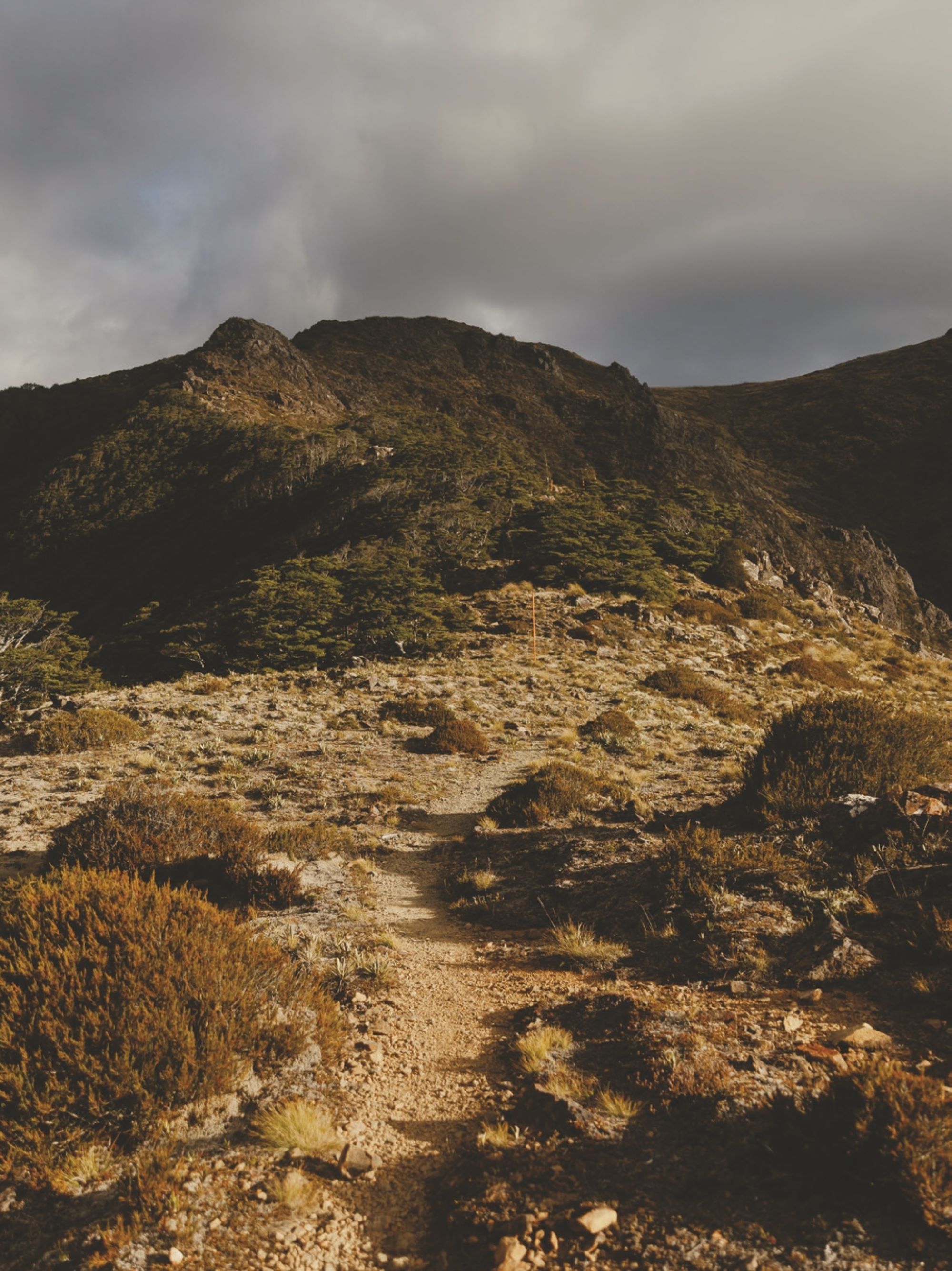
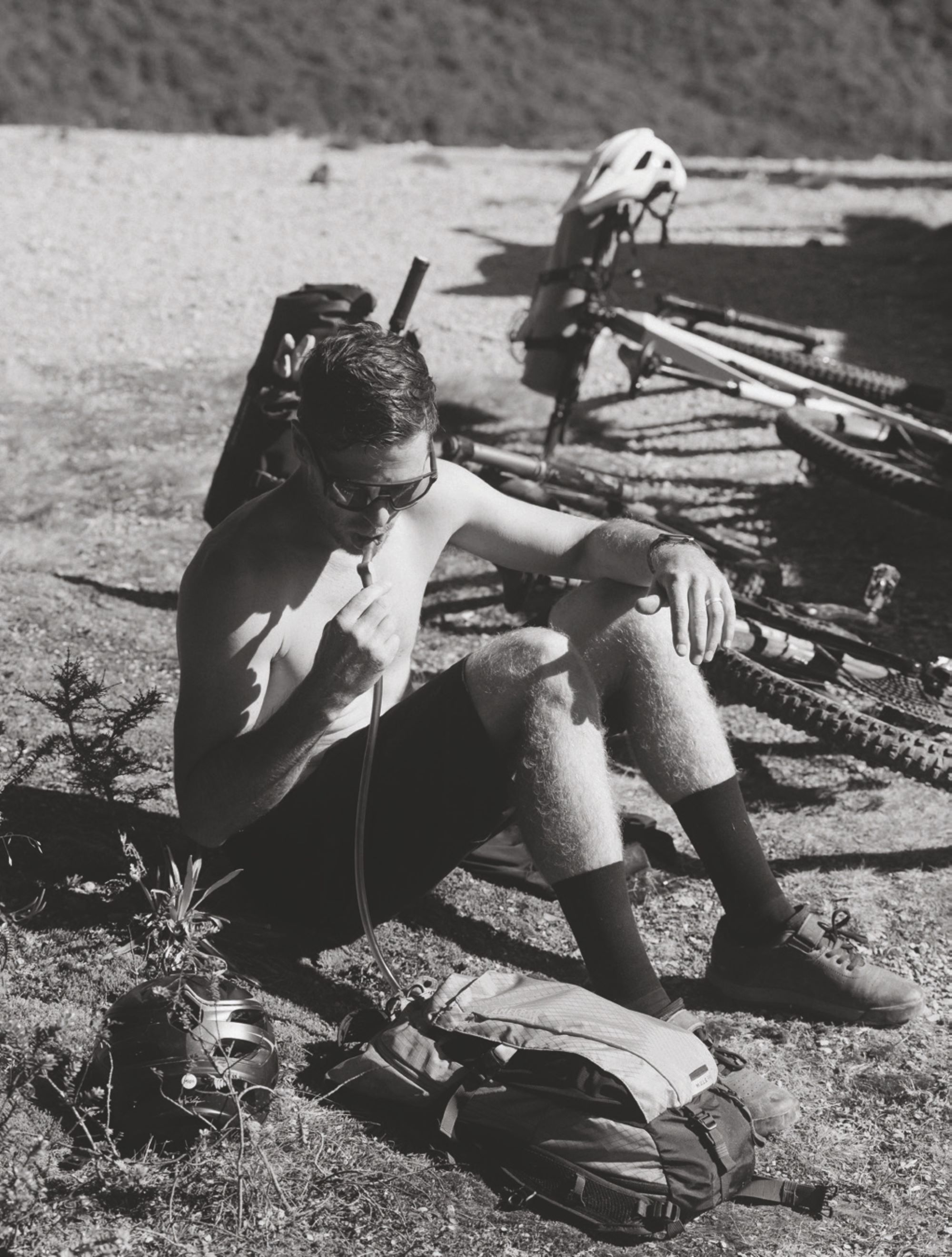
We dropped over the back of Silvan, descending gravel roads into Aniseed Valley towards Hackett carpark and the beginning of Hackett track. The track was a mostly mellow, well-formed affair and, aside from a couple of chunky sections for a few metres, it would be passable on a gravel bike. The track winds its way beside Hackett Creek for 5.8km, then spits you out in a grass clearing at the Hackett Hut. I’m sure the gas cooker and the half-tub of Vaseline that remain in the Hut have some tales to tell. With places to be and bikes to carry up hills, we pressed on. We left the hut and went from the mellow comfort of the gravel trail, to the unkempt wilds of the Starveall Track.
The story goes that Mt Starveall gained its name in the 1800’s after a stockman was looking for a route to drive his sheep from Nelson to Wairau Valley, attempting to dissect the Richmond Ranges rather than take a longer, albeit easier route around the valleys. Reaching the summit of what we now know as Mt. Starveall, he found there was no suitable feed for his sheep. Dismayed, he proclaimed the mountain would “starve all” his flock. Seems the name stuck.
I’m no stockman, and we had no sheep to take anywhere, but as Kieran and I were crossing the river for a third time in only a couple of hundred metres, I was wishing we could “starve all” the people who decided the trail needed to cross the river some nine, or maybe it was ten, times in a kilometre of track. Halfway across the river at one point, we met a hiker descending; a foreigner on his quest to complete the Te Araroa trail (which Starveall track is part of). The look of confusion on his face said it all: he seriously thought we’d lost the plot and was verging on visibly distressed that we were about to carry our bikes up this mountain. We silently wondered if maybe he was right.
I’m still surprised, after so many stream crossings and hundreds of footsteps sketchily balanced atop rocks that were at times smaller than a foot, that – thanks to grippy-soled, modern riding shoes, and us having the balance of ballerinas – we both managed to keep our feet dry!
Leaving the prospect of falling in a stream behind us, the gradient of the trail pitched up. Not just a bit but, for a period, a lot. Picture ‘climbing a hundred-metre-long staircase with your bike on your back’ sort of steep. We were into the meat and potatoes of our mission.
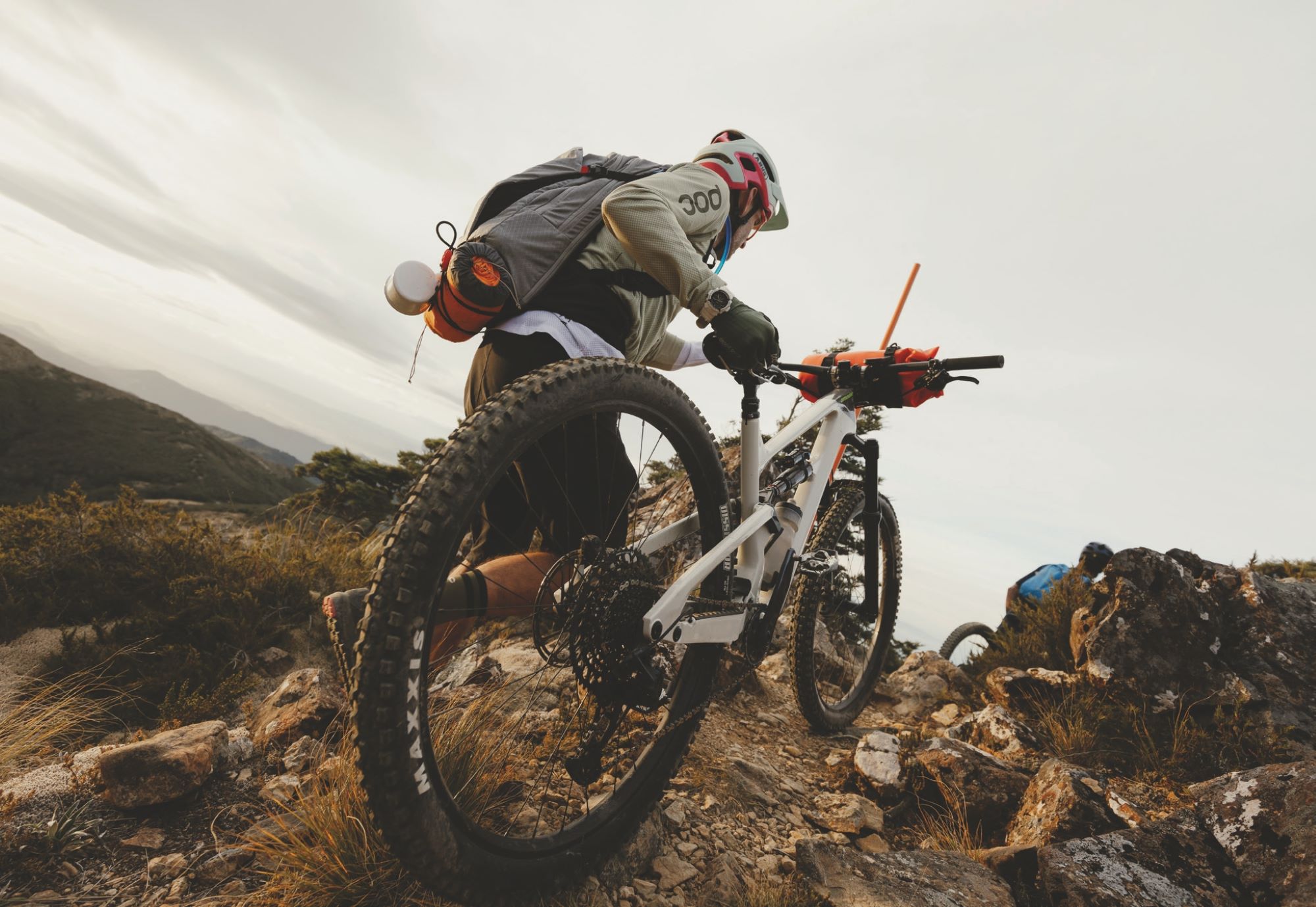
Leaving the prospect of falling in a stream behind us, the gradient of the trail pitched up. Not just a bit but, for a period, a lot. Picture ‘climbing a hundred-metre-long staircase with your bike on your back’ sort of steep. We were into the meat and potatoes of our mission.
One foot in front of the other, we plodded our way up the hill. Our progress was slow – so slow that our Garmins no longer considered us as “moving”. For all intents and purposes, we were stationary. Forward movement was a mix of pushing our bikes, carrying them under an arm, or hoisting them overhead and carrying them on our shoulders. Early in the hike-a-bike, this hoist overhead was quick and easy, a rapid snap of the hips, and almost an Olympic Power Clean to get the loaded rig up to our shoulders, however, two hours into it our bodies were tiring. What was once a fluid, smooth hoist of the bike became a full-body effort, recruiting every muscle and ounce of strength to get it done. It seemed the higher we got in altitude, the heavier our bikes became. Fatigue sapped our dexterity and we were getting ourselves in all kinds of strife while trying to lower our bikes down once our shoulders had done their dash. Handlebars tangled in our packs, I somehow got the nose of my saddle caught under my helmet, and more than once we needed help to untangle ourselves from our bikes. Stopping for a second and surveying the map again, we wondered where Pyramid Rock was. The map showed it should be somewhere to our left, but we couldn’t see it. “Can’t be too exciting I guess…” we decided. Five minutes later, we spotted a break in the bush ahead and were greeted with a full view of the rock. It protruded from the end of the ridge we’d just come up, one side bush, the other an almost sheer rock face. It was a sight to behold and unique amongst the surrounding terrain. Again, we surveyed the map. We figured that in two hours we’d come two kilometres up the hill, and there was about two kilometres to go. Those salt and vinegar chips strapped to my handlebar bag were looking mighty fine at about that point. We cracked another One Square Meal and agreed the chips were our reward once we’d reached the hut.
At some stage, Kieran and I unleashed some brutal honesty. “How much of this are we even going to be able to ride on the way back down?” “This looks pretty gnarly, this better be worth the effort!” Fortunately, each time we looked back down the trail we’d just passed, it looked like – although some of it would be sketchy at best – we’d likely be able to ride a majority of it on our return journey. Sections, however, would remain untouched by our tyres.
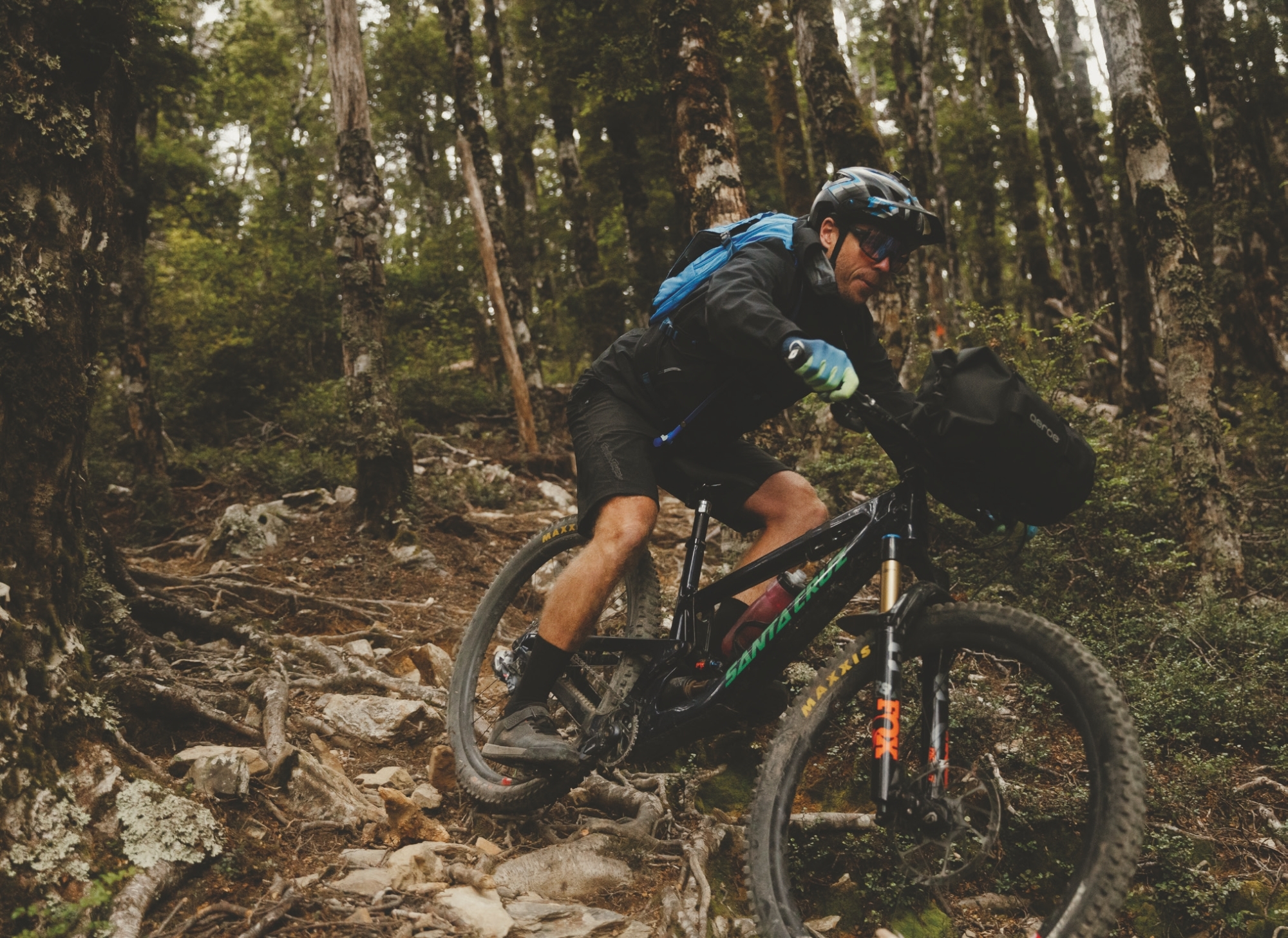
Kieran was up the trail a little from me as we neared the end of a janky-looking rock section when all of a sudden there was a change of tone, electricity in the air, and the exclamation: ‘‘There she is, there’s the hut!’’. Seven-and-a-half hours after we left the airport, we’d reached our destination; near on four hours of that was hike-a-bike.
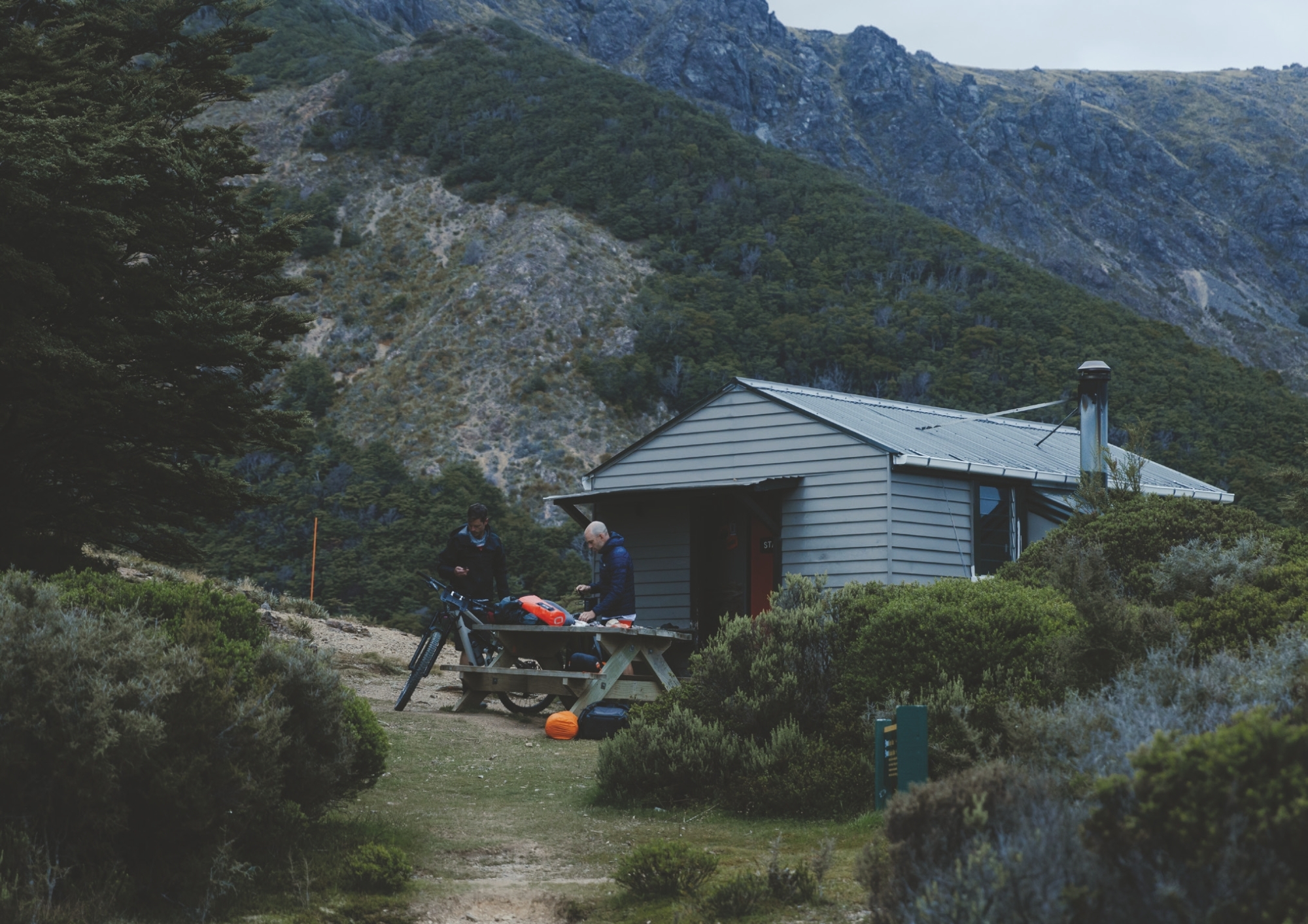
Our rapid chat from earlier in the day had become stunted; small, solitary sentences and single statements rather than conversation. I’ve never been much of a classic hiker or bushwalker, but I sure would’ve loved to be one at that exact moment. Trade my stiff-soled shoes for some hiking boots, and swap the bike for some walking poles. That would’ve been amazing. As we shouldered our bikes to clamber up another steep pitch, we traded complaints about how the balls of our feet and our big toes felt as though they’d be blistered by day’s end.
We were pushing on but could only put so much effort in or we’d risk a complete meltdown. At times, it felt like there was a competition between my glutes, hamstrings, and quads for which one would be the first to snap like an over-stretched rubber band, or burst forth from my skin. I pondered this and draped my arms over my handlebars during a quick breather, hoping to shake the niggle of cramp in my right arm. It was a cramp like I hadn’t felt before; maybe it was a special breed of hike-a-bikers cramp, one that shows up only after hours of carrying one’s bike.
I was slowly cooking. It was hot and muggy and I’d already syphoned through most of the three litres in my CamelBak before we left the river crossings earlier in the day. I was verging on being the sweatiest I’d ever been – at times looking like I’d just stepped out from the shower! Experience told me to never leave a water source without supplies topped off unless I know where the next water source is. Fortunately, I’d refilled from the last of the streams earlier in the day. I was nervous we might arrive at Starveall Hut to find empty water tanks, drained by over-eager Te Araroa Trail walkers, and although I had read that DOC had installed an additional tank recently to help avoid the hut supply running dry, I still wasn’t 100% confident, so was keen to arrive with as much water onboard as possible. As it ended up, I blew through that refilled 3-litre bladder, and another bottle, arriving empty at the hut.
Our stops were becoming more frequent, and our snack supply was getting low. Conscious we had to ride out the following day, I didn’t want to devour all our food. Silently, in my mind, I tried to justify eating just one more mini Snickers and another few lollies; “If I eat them now, I’ll be better recovered for tomorrow and won’t need them then anyway”. Makes sense, right? Shouldering the bike after each break was becoming increasingly difficult but I managed “just one more” and we’d set off again. Kieran was up the trail a little from me as we neared the end of a janky-looking rock section when all of a sudden there was a change of tone, electricity in the air, and the exclamation: “There she is, there’s the hut!”. Seven-and-a-half hours after we left the airport, we’d reached our destination; near on four hours of that was hike-a-bike.
We downed the bag of salt and vinegar chips and nabbed ourselves a bed before the six-bed hut was filled with hikers. After blitzing all my water en route, I headed to the water tank for a refill. “The water here will be sweet straight out of the tank, no need for a filter” I was reliably informed by a hiker who’d arrived hours earlier. Filling my bottle, I thought I’d seen something drop from the tap – on closer inspection there was something. “A fish?” someone shouted, tongue-in-cheek. It did look like a fish, albeit a very small three or four-millimetre-long one. It seems it was some sort of strange bug or large parasite. Tipping my water on the ground I pulled out my trusty water filter and swore to filter everything from then on.
Hoping to score some golden evening hues and ’God Rays’, we headed uphill towards Starveall’s summit. Reaching what was essentially a cliff face, we decided enough was enough and parked our bikes at the foot of it. The views from on top (although not quite the Starveall summit) were amazing. Lush native bush as far as the eye could see, only broken by the highest peaks, scarred by their lack of vegetation. Such was the expanse before us, I struggled to grasp the true scale of the peaks and valleys around me. Our sunset party was almost ruined; the only gold we got was in the gaps between clouds passing overhead. Regardless, it was a magical evening I’ll never forget.
All too quickly, we popped out to Hackett Creek and all its crossings. Knowing wet weather was on the way in only a few hours, we theorised how high the river may get, relieved to still have plenty of stepping stones to cross dry-footed. Had we drawn our morning out while up at the hut, things could have been very different.
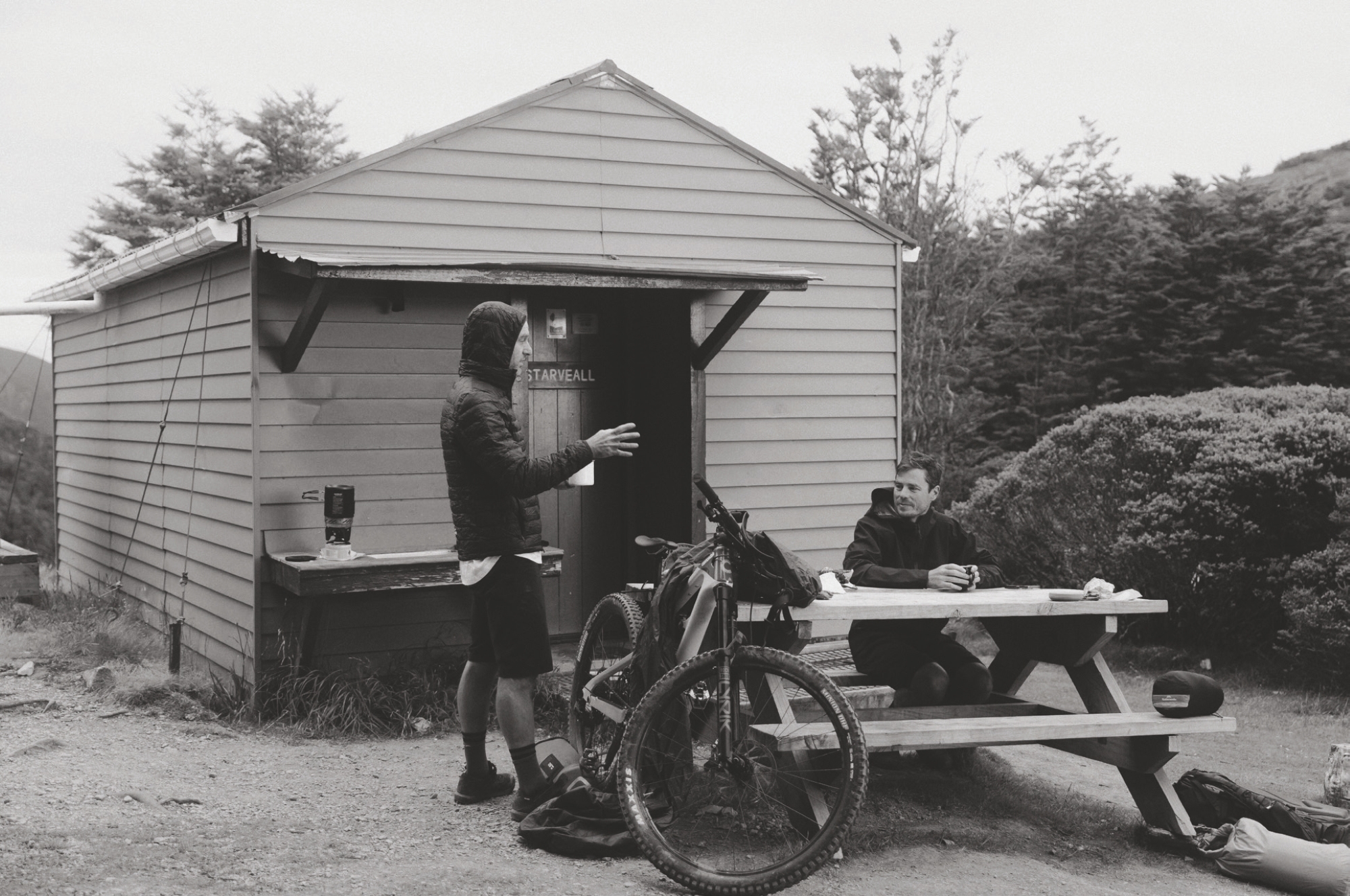
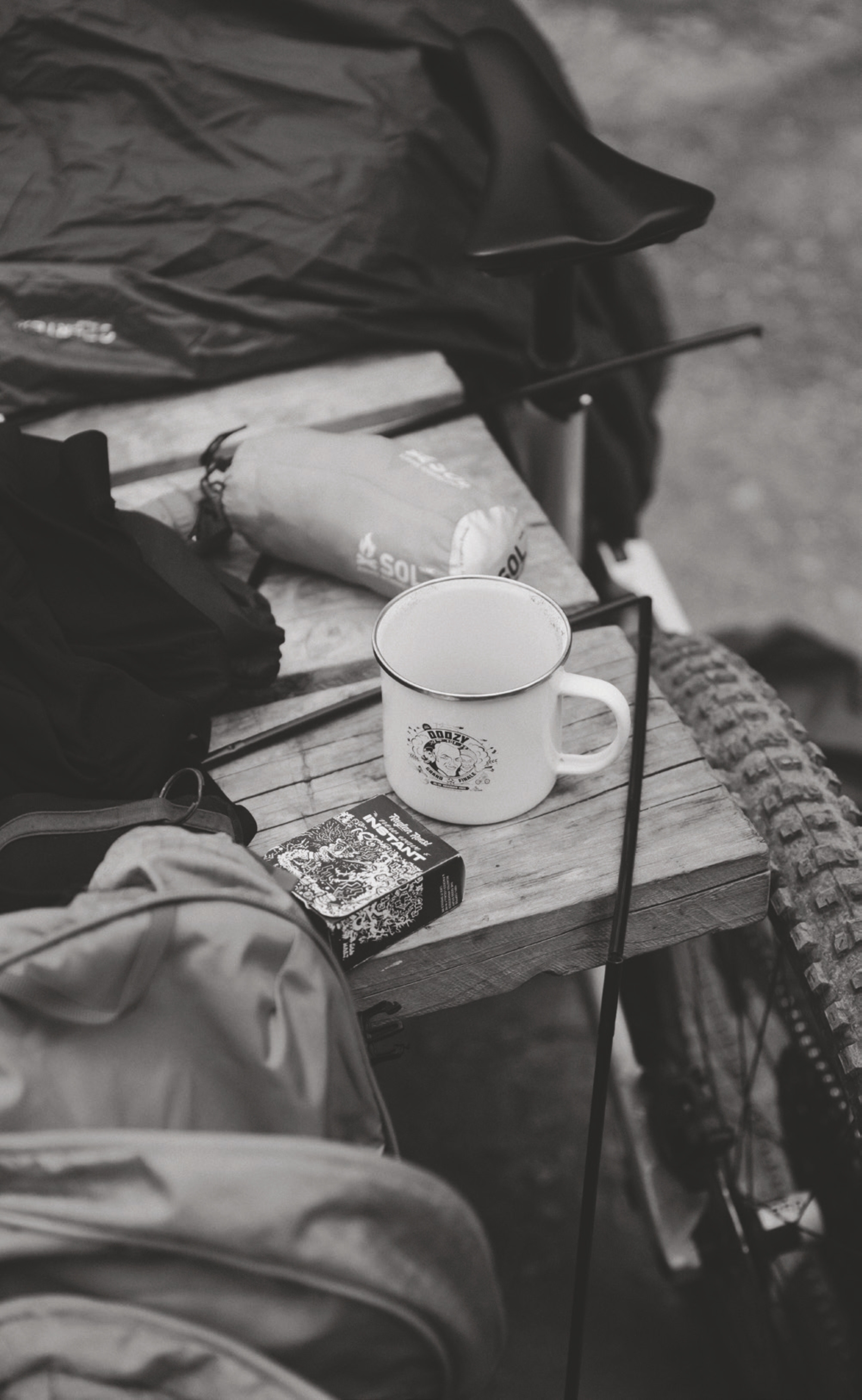
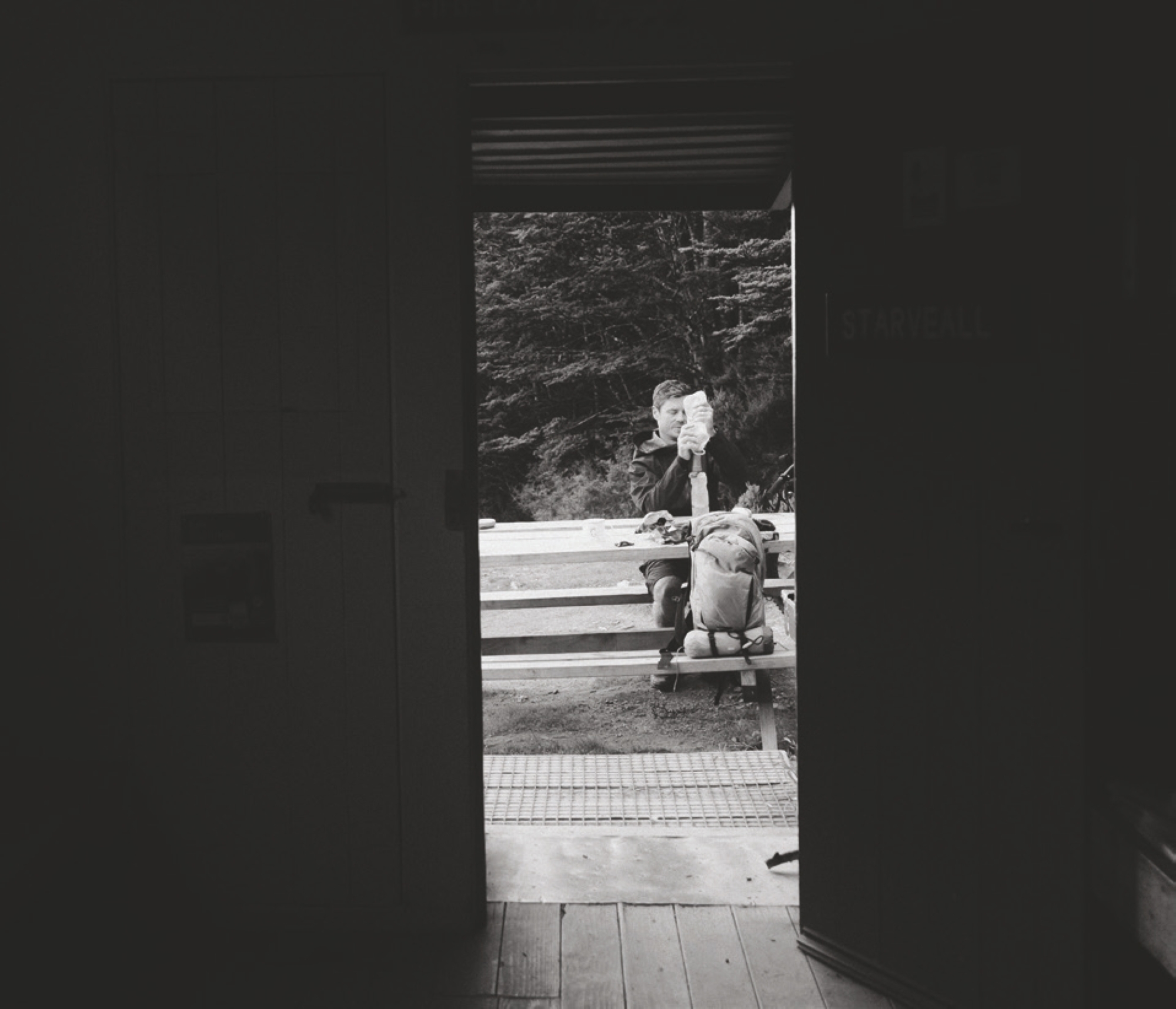
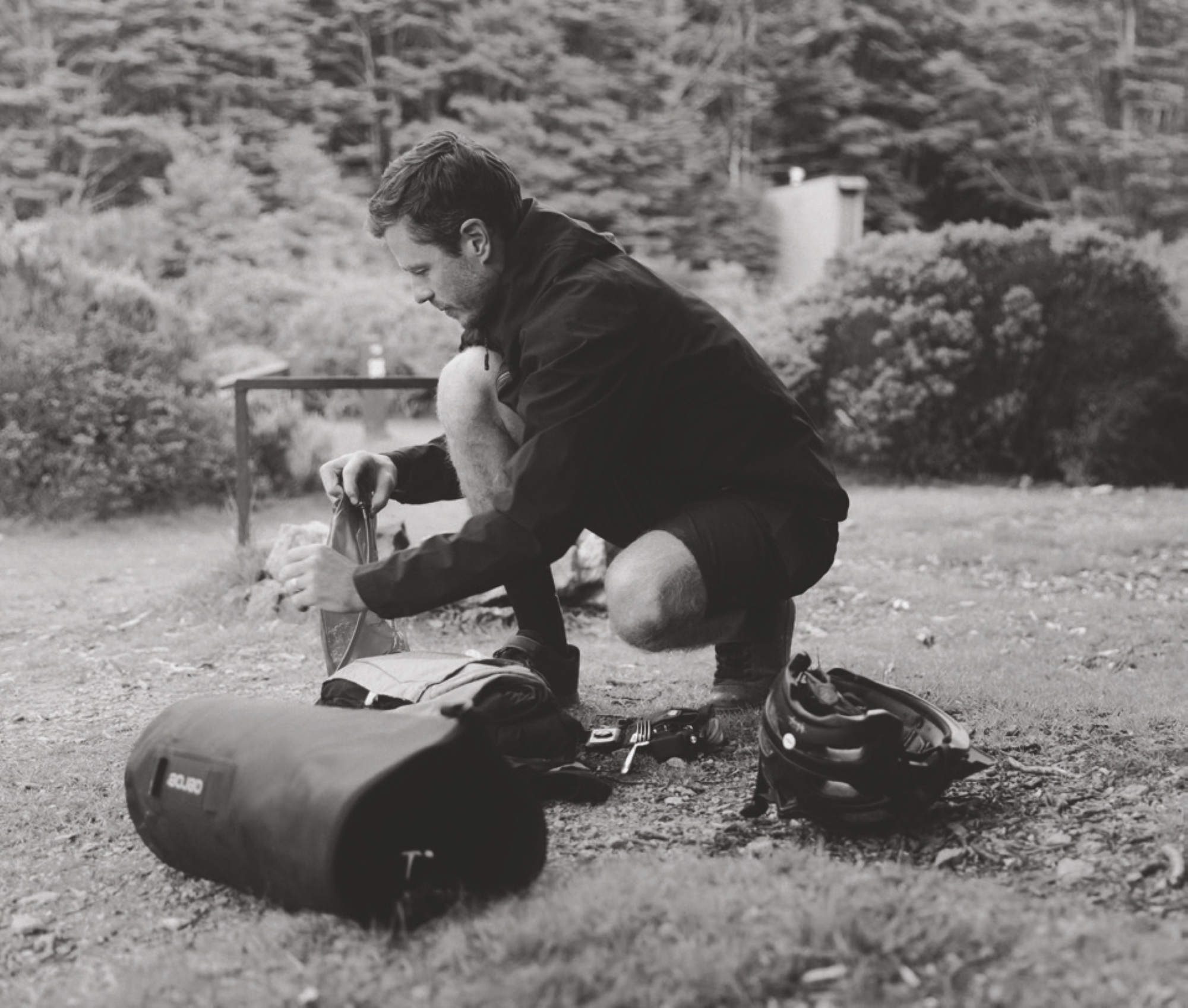
Climbing the ladder to my bunk polished off my remaining energy; figuring out how to flatten my sleeping bag out while turning around under the low ceiling polished off any remaining enthusiasm I had for the day. Sleep was needed. As I drifted off, I could hear a gnawing sound. Thinking there was a rodent in my bag, and fuelled purely by adrenalin, I slipped out of the fart sack, down the ladder and grabbed my bag. No rodent. Remembering I had earplugs, I grabbed those; if I can’t hear a mouse, it doesn’t exist – right? It wasn’t until I was home and sorting through gear from the trip, I discovered a bag of nuts with a hole the size of a mouse’s head chewed right through the side of it!
Woken by a dull ray of light trickling through the louvred window across from me, I tried to move. Creaking and groaning, I managed to get my body off the bed and contort myself down the ladder, heading outside to see if we needed to scramble to shoot the sunrise. We didn’t. I stood in the one square metre where we were able to get phone signal; the latest weather maps told me the wind had increased and the weather previously due to arrive late in the day, looked like it would now hit around lunchtime. Great.
The lads rose from the crypt, drawn from their cocoons by the smell of coffee and porridge wafting their way. We devoured cups of porridge complete with mini Snickers melted into them, and we were set for the day. It was right about then I realised I hadn’t brought a skerrick of toilet paper with me and everyone else was down to the bare minimum. Thankfully the porridge I’d just cooked came in six little paper packets!
We were eager to get off the mountain before the weather hit so crammed our bags with our gear and set off for phase one of our transit back to the airport. From the hut, we rolled straight into the lush beech forest. Within metres, we were dealing with a chute of shifting rock and sketchy roots; a heck of a way to wake the body up. Kieran and I were both surprised by how ridable most of the terrain was. During the hike up, sections looked like we’d be doing as much walking down as we did up, but we were cleaning most of them with relative ease.
Careful to keep our speed in check, we continued down; a hop over roots here, a Scandi’ into a corner there, a foot out to stay upright and a few “oh crap” almost over the bars moments. We were loving it. There were a few sections it would have been plain irresponsible to ride – the risk simply not worth the reward – other sections were comfortably ridable, although strewn with rocks, roots, moss and beech leaves, meaning we had to be vigilant.
As with the climb up, there were some challenging sections on our descent. Picking our way down, the trail would slowly tip steeper to the point it felt near vertical, heading straight into a ravine where a stream lay. Keeping our wits about us, we made sure we didn’t stay on the bike too deep into these sections, ensuring we shut down our speed and came to a comfortable stop before we slid our way off the side of the hill, into a stream. Had we got this all wrong, an extraction would have been tricky or near impossible.
All too quickly, we popped out to Hackett Creek and all its crossings. Knowing wet weather was on the way in only a few hours, we theorised how high the river may get, relieved to still have plenty of stepping stones to cross dry-footed. Had we drawn our morning out while up at the hut, things could have been very different.
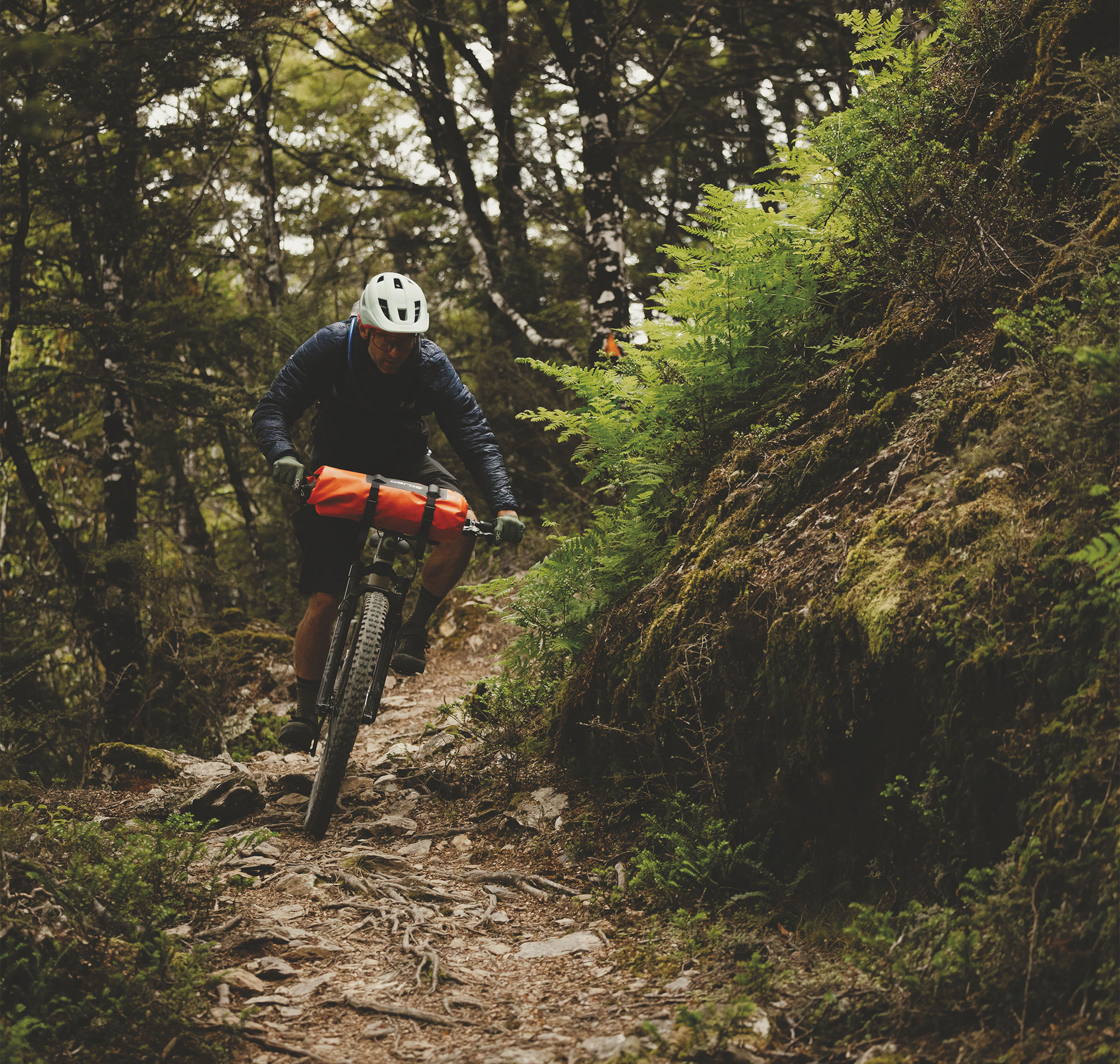
We reached the top of Silvan just as the weather hit. What felt like teaspoon-sized raindrops blew in from the south-west. Of course, I packed my jacket right at the bottom of my pack.
Arriving at the car park to the sound of a saxophone blaring, we spied a local gent taking advantage of the acoustics of the area. We paused and listened for a time; he was no Kenny G, but he was a whole lot better than I was when I was trying to learn at age 12.
Minutes into the grind back over to Silvan, we were starting to see the weather move in. The odd rain spot fell and the wind was getting up, the signs of things to come. Conversation had dried up by this point; we were getting tired and, knowing this was the final ascent of the day, we were focused on the task at hand.
We reached the top of Silvan just as the weather hit. What felt like teaspoon-sized raindrops blew in from the south-west. Of course, I packed my jacket right at the bottom of my pack. I emptied the bag and while trying to stop its contents from blowing away, eventually retrieved the jacket and battled with the wind to get it on.
We started the descent on a sensible trail, People’s Choice. It was a far cry from the tech of hours earlier, but a welcome change given the weather. Barely pedalling, we pumped our way down several of Silvan’s digger-built flow trails. Kieran’s ease of generating speed, fluid style, and effortless cornering reflect his previous years’ racing downhill around the globe, only this time he had a heavily loaded handlebar bag and backpack. Towards the exit, and on familiar trails, Kieran lets the speed run. Regardless of the fully loaded bike, he was gapping doubles, jumping out of wallrides and coming into corners faster than he should have – a casual masterclass in descending and bike control.
Leaving Silvan’s gates, we were stoked – what a time the last couple of days had been. The remaining ride from there was merely a formality, or so we thought. A pizza and a brew at Eddy Line Brewing satisfied our cravings and prepared us for the last few kilometres to the airport. Fed and back on the bikes, the storm was starting to show itself; winds were swirling, branches and leaves were flying, and rain sporadically smashed us from all directions. The wind, oh the wind. It felt like we were riding up a hill as we headed along the pan-flat bike path to our destination. With Kieran half a wheel ahead, the roadie in me had quietly picked the downwind side of him, I managed some shelter from the crosswind, easing the strain a little.
Some 37 hours after I’d left my car, I arrived home, having conquered a mission from Te Awamutu to Auckland, onto Nelson, up Mt Starveall, and back again. Mission complete and many memories banked.
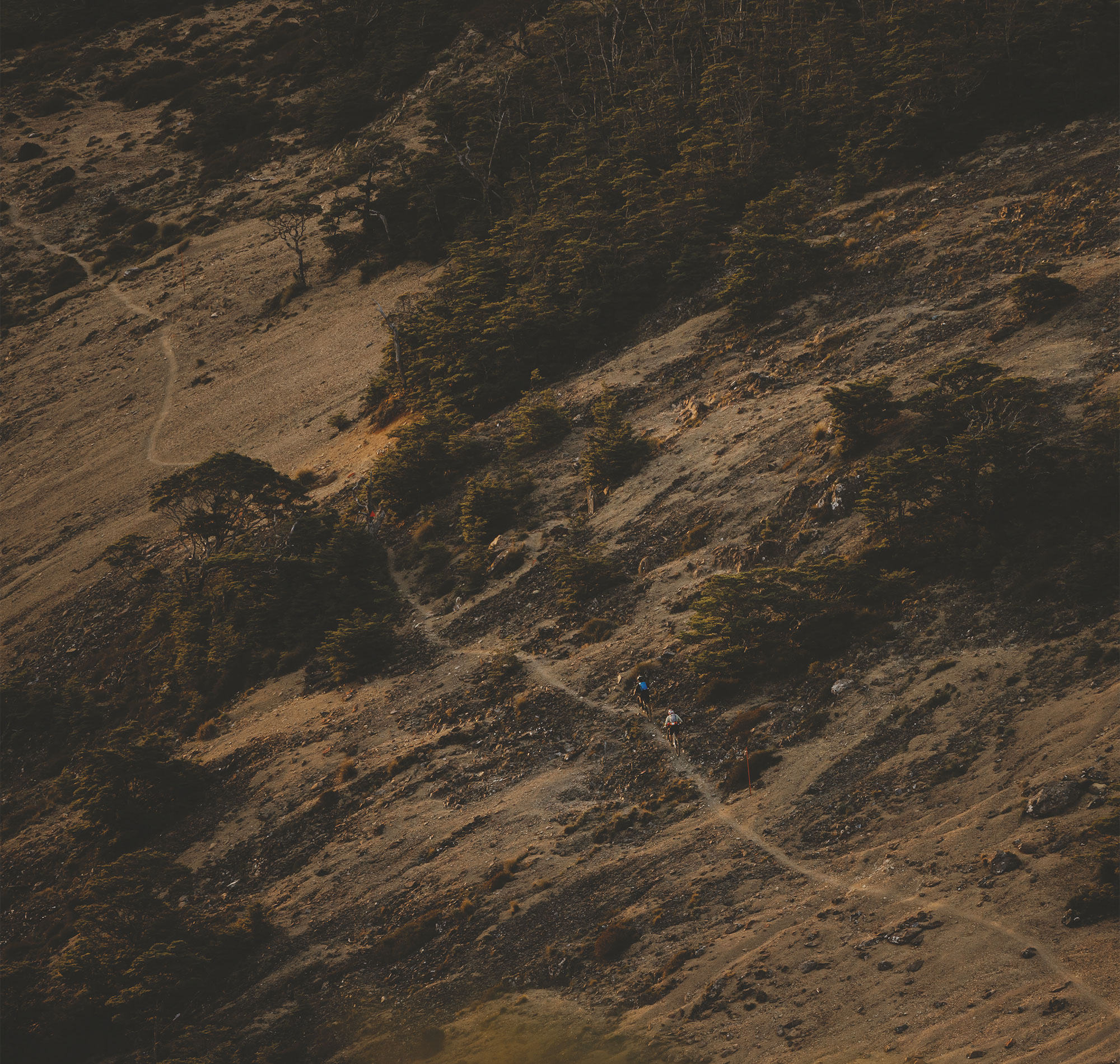
The rain held off just long enough for me to pack my bike in its bag. As I closed the final zip, the heavens opened. A short dash to the terminal doors 50 metres away and I was properly damp. I removed my filthy shoes and socks, stashed them in my backpack and checked in for my flight.
I took a step back from the flight attendant as I paid my excess baggage charges, hoping she couldn’t smell me after two days of sweaty riding. My bike rode the conveyor through the gate and I walked off, only to be chased by the attendant. “What did I leave in my bag?” But she was simply confirming I did have shoes for the flight. I’m surprised she wasn’t checking I was going to shower before boarding; which is exactly what I was headed to do. Thankfully, for my fellow passengers, Nelson Airport has a shower, so I wouldn’t be taking my stench on the plane! Warm water blasted away the sticky dirt of the previous days, but didn’t take care of the biddy bids stuck to my legs, those required some manual labour.
Hosed, but not quite home, I boarded my flight back to Auckland; the memories of the previous two days all blended together, one day now barely distinguishable from the other. My aches and pains seemed to remain on the tarmac as we lifted off, although I knew they’d return when I woke the following morning.
Some 37 hours after I’d left my car, I arrived home, having conquered a mission from Te Awamutu to Auckland, onto Nelson, up Mt Starveall, and back again. Mission complete and many memories banked.

Mammoth Enduro Pre-Race Guide
Words Lester Perry
Images Cameron Mackenzie
Nelson’s Mammoth Enduro is now on the horizon and having visited Nelson in our last issue to check out some of the trails, now we’re diving into some specifics around the event and how you can get the most out of it.
Thanks to intel from the Nelson MTB Club events team, we now know we’ll be presented with a 60km route – 38km of this will be pedalled, the remainder shuttled. Six stages are accessed by roughly 1700m vertical of pedalled climbing combined with two shuttles, giving riders a total descent of over 2500 vertical metres of forearm-destroying race stages. The longest stage comes with a 723m descent over its 3.3km length. This will be gravity enduro at its finest.
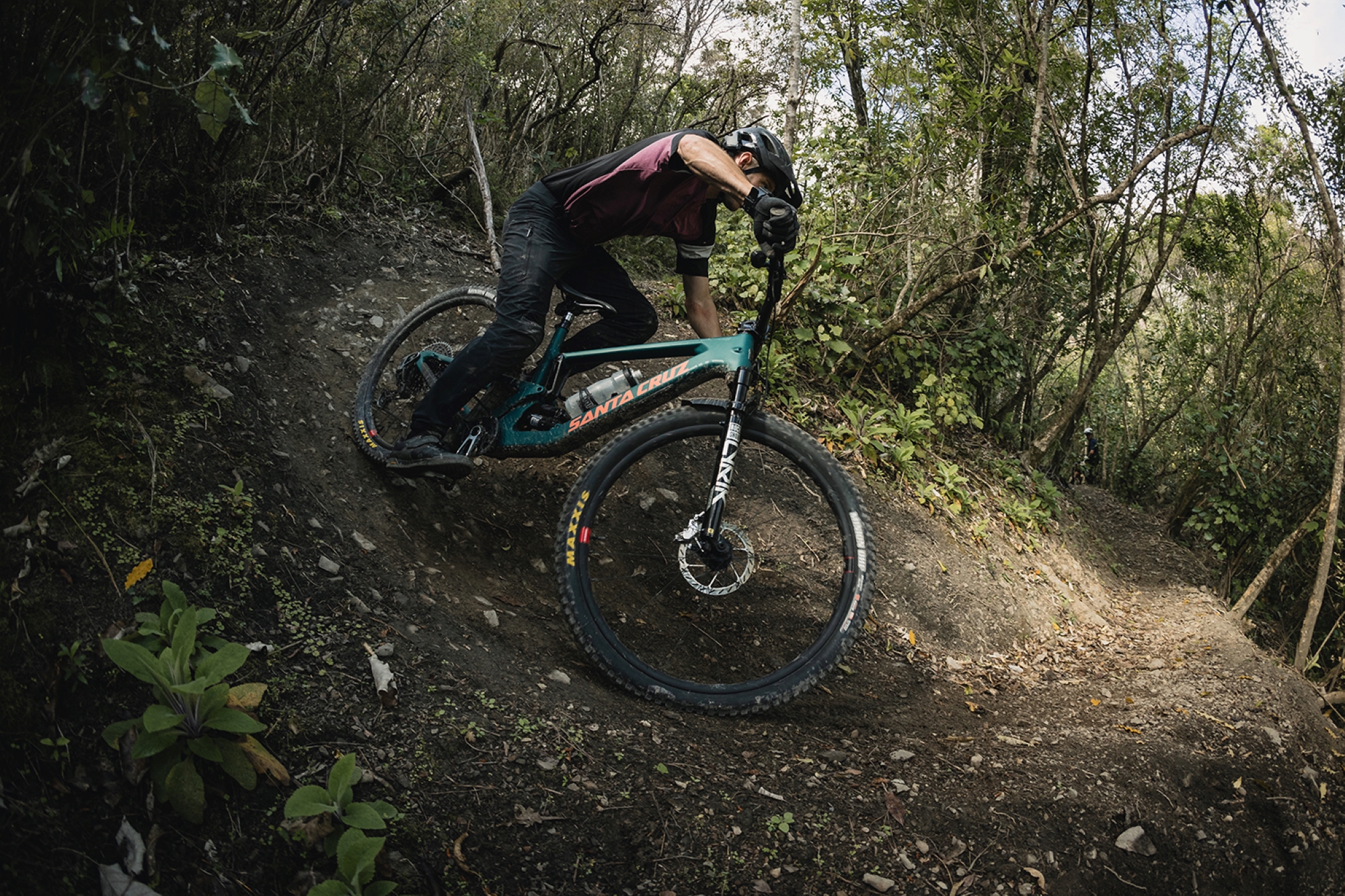
Here’s how the race will shape up:
Monday 18 March 2024
Course released on Monday 18th March and trails open to ride.
Friday 22 March 2024
The course is open to practice. An ‘optional shuttle’ will be available to practice stage 1 only.
Saturday 23 March 2024
Shuttled Practice 8 am – 3 pm (2x shuttles)
Race Stage 1
Sunday 24 March 2024
Race Stages 2-6
2 x feed stations on the course
Two shuttles per rider and pedal between stages
Race Village is situated at the Maitai Hub and Golf Club rooms. Set times for lunch and shuttles. There will not be any time penalties for liaisons.
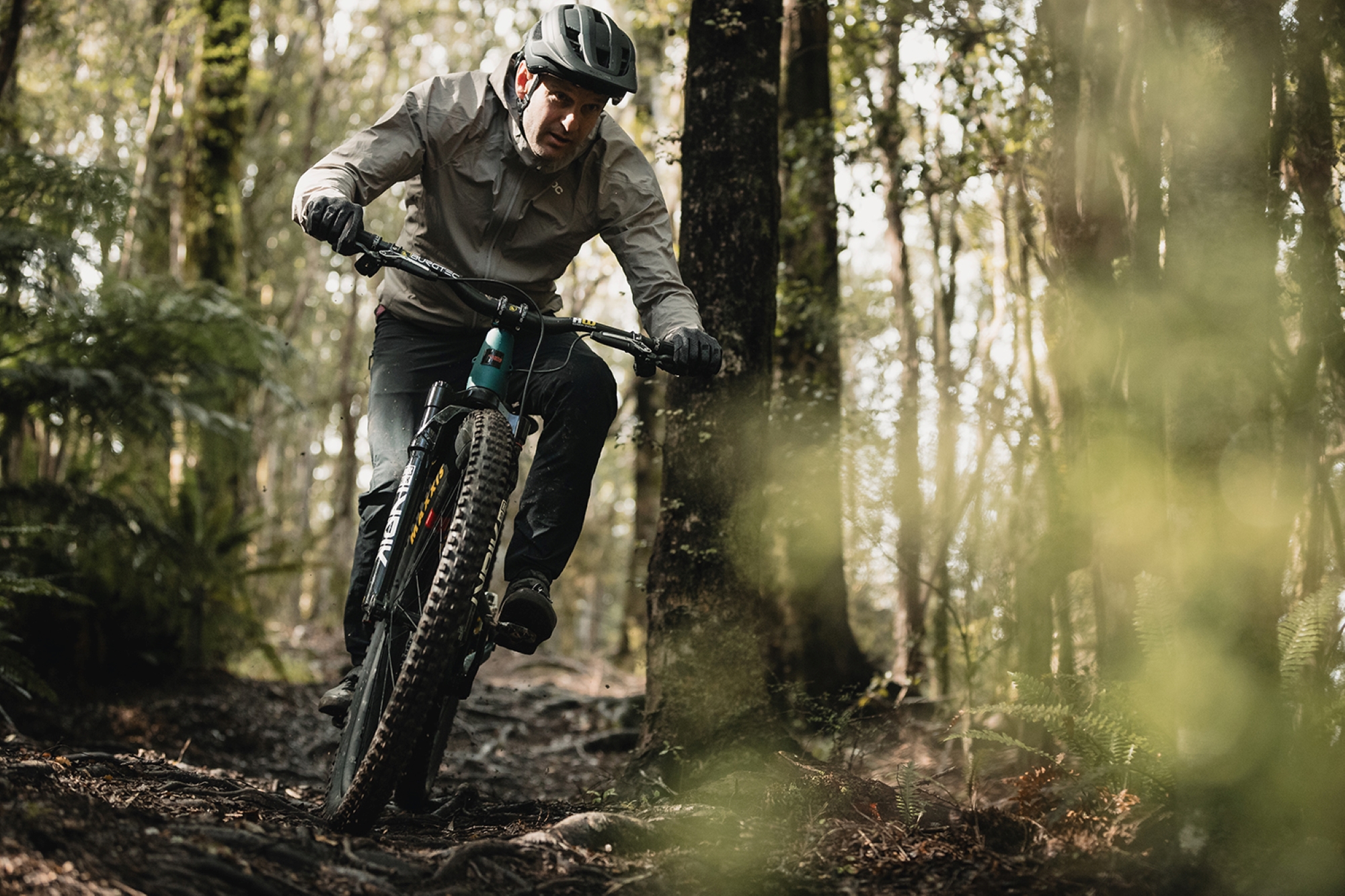
Nelson Trails don’t suffer fools. If your body or bike isn’t up to the task, the Mammoth will chew you up and spit you out onto one of its rock and root-strewn trails. Fortunately, there are a few low-key steps that can be taken to ensure you’re prepared for race day. Although Nelson’s toughest tracks can be tackled on a hardtail if the rider and bike are up to the task, the optimal bike for an event like the Mammoth is one with big travel and big brakes. You’ll likely have to run whatever is currently in the shed, so options may be limited, but given the choice, the ideal bike would have more than 150mm of travel front and rear, and grunty 4-piston brakes with fresh pads and large rotors to match.
Tyre setup is a constant topic of conversation leading into any enduro race. Width, tread pattern, casing thickness and rubber compound; there’s nothing like some good pre-race tyre chat. A big day like the Mammoth isn’t the time to be testing a new setup or rolling the dice by going for lightweight or rolling speed over durability. A common setup that will be up to par on Nelson’s gnarliest is large volume tyres, something around 2.4-2.5 inches with a dual-ply sidewall and, depending on how hard-charging you are, possibly fitted with tyre liners of some sort, either at both ends or just the rear. Punctures still happen, although a heavy-duty setup like this should drastically reduce the possibility of one. Put your mind at ease by getting your tyres sorted early.
Nelson riding is generally about controlling your speed rather than trying to generate it, so decent brakes are a must. Be sure to check your pads still have ample meat in them, and pack a spare set, in case of wet weather or a technical issue. Remember to check brake rotors, ensuring they’re at their ideal thickness to provide optimal stopping power. Regardless of how dialled your bike is, if you aren’t physically prepared, you won’t be able to make the most of your big day out. In the weeks leading into the event, it’s worth putting some focus on ensuring your body is up to the task. There’s a world of information online on how to prepare best, but at an elementary level; ensure you’ve done some long rides with lots of climbing on the bike you’ll race, adding in a couple of strength and core sessions a week will help you out (even bodyweight exercises are better than nothing) and closer to the event, a couple of interval sprint sessions a week should put the cherry on the top of your prep. Remember, doing something is better than doing nothing, and perfection isn’t what you’re chasing: “you can only do what you can do”. Your best bet is to do some research online to help determine what level of volume and specificity will suit you best. Worst case, just throw in some sets of push-ups while you’re out riding.
Fail to prepare, prepare to fail. Your body and bike can be well prepared but if you’re not ready for a mechanical issue, your day could be over as quick as it begins. Make sure you’ve got the essentials to repair your bike and get you home should you need to. At a minimum, we’d recommend carrying some tyre plugs, spare tubes, tyre levers, Allen keys, chain tool and spare chain link. For a more comprehensive kit, we’d add in some zip ties, a tubeless valve, a pair of brake pads, a second tube, a pocket knife with pliers, a $5 note or a piece of thin plastic to use as a tyre boot if you slash a tyre, as well as some gummy bears to bribe your fellow riders for the use of things you don’t have!
With the gradient and trail conditions that Mammoth riders will be tackling, when crashes inevitably happen, you’ll want to be somewhat self-sufficient to patch yourself up, rather than relying on the first aid team to be there when you need them. If you’re carrying a basic first aid kit, a minor flesh wound can be quickly blasted with saline, wrapped with a bandage, and on you go to the next stage.
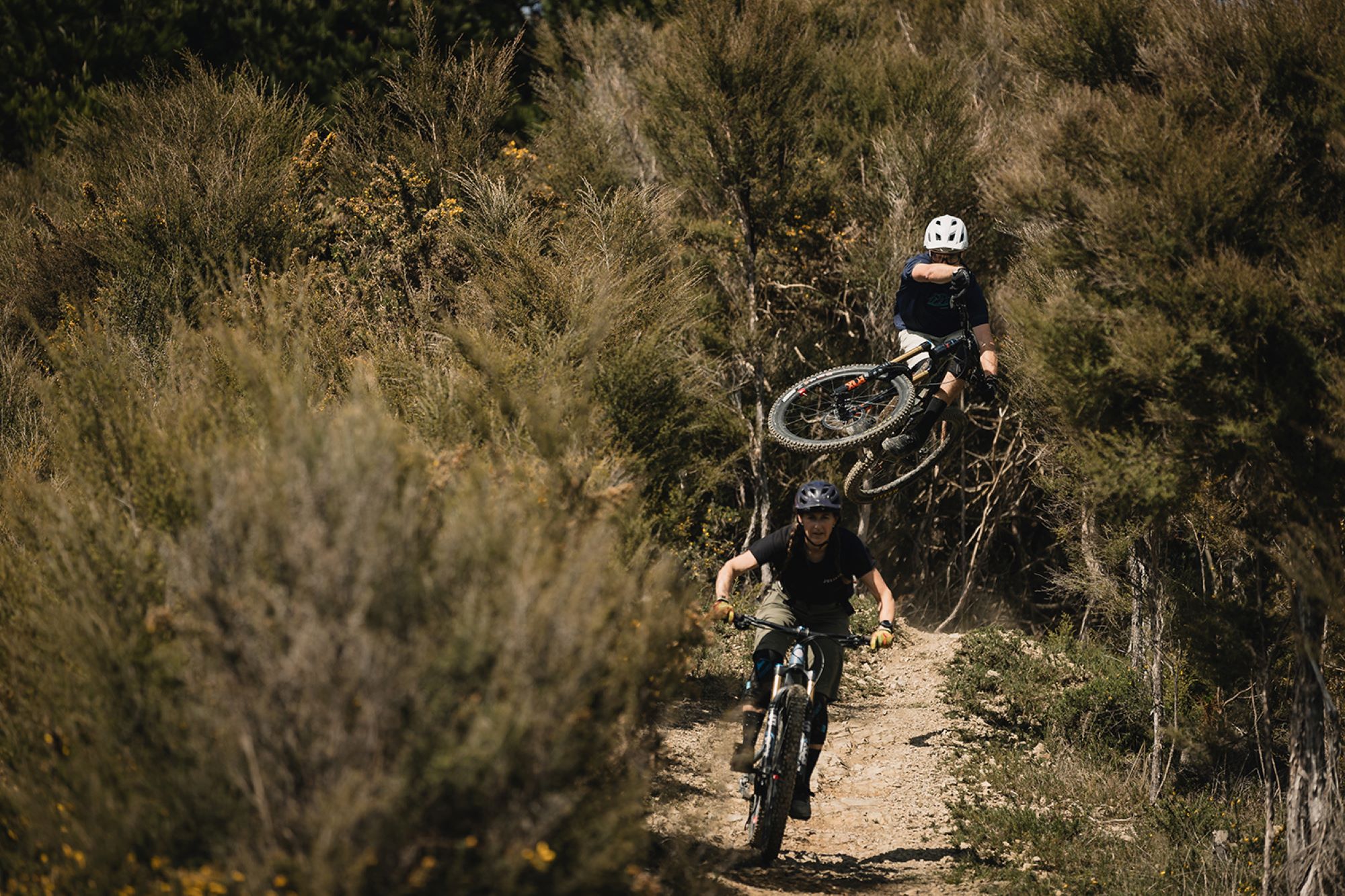
We caught up with some previous winners and riders to see what makes a successful day for them when racing the Mammoth:
Kieran Bennett
The Mammoth has always been a big, tough event so there are a couple of points for me to make it successful.-
Preparation: It seems like a no-brainer but I’m not just talking about training. Researching the course and stages; understanding what your nutrition and hydration needs will be; making sure your equipment is dialled; and having necessary spares with you – along with a whole host of other stuff. Fail to prepare, prepare to fail.
Consistency during the race stages: The Mammoth is almost like a marathon rather than a sprint, trying to find a second or two on a sketchy line isn’t worth it if you’re risking a potential crash that could lose you 10-20 seconds. When you have 30+ minutes of race stages, consistency is king.
Amanda Pearce
For me, the Mammoth Enduro is arriving at the race village early in the morning, with the dew still fresh on the ground, struggling to hold down my breakfast with nerves of excitement and fear of what lies ahead. Things get real once you strap on your race plate and get loaded up for the shuttle to the start of stage 1. After some pre-race chat, it’s time for the first run of the day. Dropping in, it doesn’t take long for the anxiety to dissipate and race mode takes over. The day is finished off with an ice-cold beer and yarns with mates about what was – and the one that got away.
A successful day for me is more about the social side than the race side of things, and if I’ve had a good, fun day out with my friends, the result will be what it is.
Louise Kelly
The Mammoth Enduro is probably my favourite race. I always look forward to it, I don’t know if it’s the aspect of racing at home or knowing that it’s going to be a big day out on some of the best trails in NZ, but it is always a good time.
Mammoth was my first proper race when I started enduro racing in 2018. I had no idea of what I was in for, but it sent me down the full enduro racing path. Having a Mammoth win to my name is a cool achievement for me, every time the race rolls around again, I stop and reflect on where I started and how far I have come.
To be successful at the Mammoth Enduro, both you and your bike need to make it through without any mechanicals or crashes, stay well-fed and hydrated and come prepared for the toughest race day ever!
Kurt Lancaster
The best thing you can probably do to prepare for Mammoth is move to Nelson and practice all the tracks! If you’re coming from the North Island, the biggest thing to work on is probably bike set-up. You want your bike set-up as comfortable as possible because you’ve got these long, rough, rooty, backcountry beech forest descents. They’re not all like that but, generally, there will be two or three long beech forest stages.
Consider slightly less tyre pressure than if you’re used to riding hard-pack stuff. You want as much grip as possible. Cushcore (or similar) is key. I don’t run a cushcore on the front tyre, but one in the rear. I used to run downhill tyres; I run double-down casings now, but nothing less than that. In the dry, it’s pretty grippy but, especially in the wet, you could probably drop a few psi in your tyre pressure and even soften up your suspension more. There aren’t any bike-park-style jumps or anything, so you don’t need a super stiff setup.
With only one day’s practice, there’s no way in hell you’re going to learn all the trails, so I wouldn’t get too hung up on trying to remember every root or corner. You’re probably better off learning to read the terrain and the trail speed; don’t worry about the small details, just ride your bike, there are too many tracks and the hills are too big, the stages are simply too long to learn everything.
Relax, don’t “try” and ride. It’s a big day. Relax and concentrate on riding smart. You don’t want to crash on the first stage and be riding the whole day nursing an injury. Just ease into it.
Figure out what gear you’re going to take on the day before you arrive in Nelson. If you don’t like riding with a CamelBak, what are you going to use to carry hydration or gear? As far as nutrition goes, you’re going to have to carry a bit of food. You want to keep the food intake up so consider how you’ll carry this too.
Arm and hand strength is key, especially if you’re from the North Island – you’ll be in for a shock. The descents are a lot longer down here so figure out a way to train your arms and get used to riding fatigued.
There we have it, some tips and suggestions from those in the know for how to maximise a big day at the Mammoth Enduro – or any big day in the mountains.
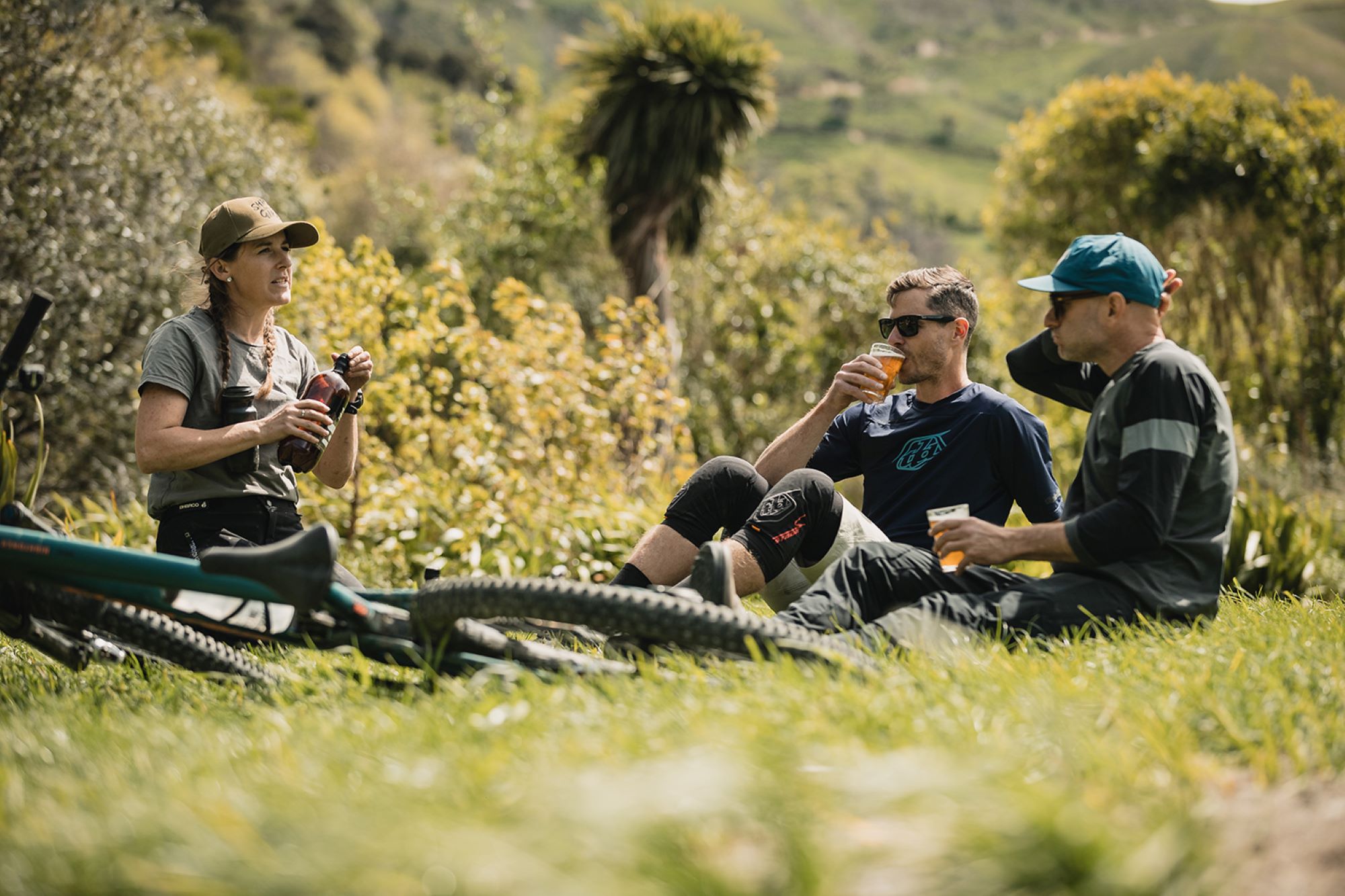
While the Mammoth has a reputation as one of the most demanding enduro races in the nation, with some preparation it’s more than achievable. The controlled environment of a structured race is a great way to test yourself, learn new things and push yourself out of your comfort zone in a relatively safe environment. Haven’t done a big enduro before? Just remember: you’re capable of more than you think. Give it a nudge!
Head to Mammoth Enduro for more info.


